Question 6. The edge of an aluminium cube is 10 cm long. One face of the cube is firmly fixed to a vertical wall. A mass of 100 kg is then attached to the opposite face of the cube. The shear modulus of aluminium is 25 GPa. What is the vertical deflection of this face?
Answer: Here, side of cube, L = 10 cm =10/100= 0.1 m
.•. Area of each face, A = (0.1)2 = 0.01 m2
SCHOOL OF LEARNING COACHING AGARTALA
CRACK NEET JEE TBJEE WBJEE IIT NIT ENTRANCE
WITH SUBJECT EXPERTS & DOCTORATE, GOLD MEDALIST
LOWEST FEE IN INDIA
Question 7. Four identical hollow cylindrical columns of mild steel support a big structure of mass 50,000 kg. The inner and outer radii of each column are 30 cm and 60 cm respectively. Assuming the load distribution to be uniform, calculate the compressional strain of each column. Young’s modulus, Y = 2.0 x 1011 Pa.
Answer:
 SCHOOL OF LEARNING COACHING AGARTALA
CRACK NEET JEE TBJEE WBJEE IIT NIT ENTRANCE
WITH SUBJECT EXPERTS & DOCTORATE, GOLD MEDALIST
LOWEST FEE IN INDIA
SCHOOL OF LEARNING COACHING AGARTALA
CRACK NEET JEE TBJEE WBJEE IIT NIT ENTRANCE
WITH SUBJECT EXPERTS & DOCTORATE, GOLD MEDALIST
LOWEST FEE IN INDIA
Question 8. A piece of copper having a rectangular cross-section of 15.2 mm x 19.1 mm is pulled in tension with 44,500 N force, producing only elastic deformation. Calculate the resulting strain? Shear modulus of elasticity of copper is 42 x 109 N/m2.
Answer:
Question 9. A steel cable with a radius of 1.5 cm supports a chairlift at a ski area. If the maximum stress is not to exceed 108 Nm-2 what is the maximum load the cable can support ?
Answer:SCHOOL OF LEARNING COACHING AGARTALA
CRACK NEET JEE TBJEE WBJEE IIT NIT ENTRANCE
WITH SUBJECT EXPERTS & DOCTORATE, GOLD MEDALIST
LOWEST FEE IN INDIA
Question 10. A rigid bar of mass 15 kg is supported symmetrically by three wires each 2.0 m long. Those at each end are of copper and the middle one is of iron. Determine the ratios of their diameters if each is to have the same tension.
Answer: Since each wire is to have same tension therefore, each wire has same extension. Moreover, each wire has the same initial length.So, strain is same for each wire.
Question 11. A 14.5 kg mass, fastened to the end of a steel wire of unstretched length 1 m, is whirled in a vertical circle with an angular velocity of 2 rero./s at the bottom of the circle. The cross-sectional area of the wire is 0.065 cm2. Calculate the elongation of the zvire when the mass is at the lowest point of its path. Ysteel = 2 x 1011 Nm-2.
Ans.Here, m = 14.5 kg; l = r = 1 m; v = 2 rps; A = 0.065 x 10-4 m2 Total pulling force on mass, when it is at the lowest position of the vertical circle is F = mg + mr w2 = mg + mr 4,π2 v2
12.Compute the bulk modulus of water from the following data: Initial volume = 100.0 litre, Pressure increase = 100.0 atm (1 atm = 1.013 x 105 Pa), Final volume = 100.5 litre. Compare the bulk modulus of water with that of air (at constant temperature). Explain in simple terms why the ratio is so large.
Answer:SCHOOL OF LEARNING COACHING AGARTALA
CRACK NEET JEE TBJEE WBJEE IIT NIT ENTRANCE
WITH SUBJECT EXPERTS & DOCTORATE, GOLD MEDALIST
LOWEST FEE IN INDIA
The ratio is too large. This is due to the fact that the strain for air is much larger than for water at the same temperature. In other words, the intermolecular distances in case of liquids are very small as compared to the corresponding distances in the case of gases. Hence there are larger interatomic forces in liquids than in gases.
Question 13. What is the density of water at a depth where pressure is 80.0 atm, given that its density at the surface is 1.03 x 103 kg m-3?
Answer:
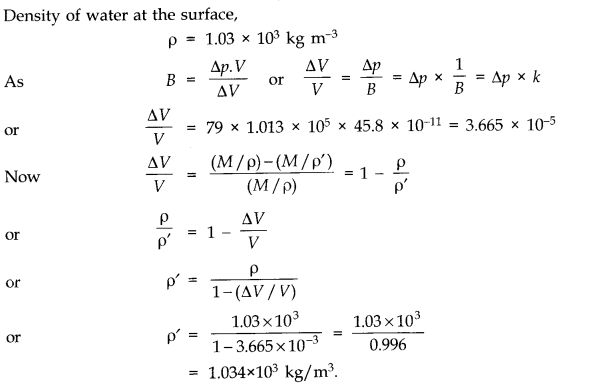 SCHOOL OF LEARNING COACHING AGARTALA
CRACK NEET JEE TBJEE WBJEE IIT NIT ENTRANCE
WITH SUBJECT EXPERTS & DOCTORATE, GOLD MEDALIST
LOWEST FEE IN INDIA
SCHOOL OF LEARNING COACHING AGARTALA
CRACK NEET JEE TBJEE WBJEE IIT NIT ENTRANCE
WITH SUBJECT EXPERTS & DOCTORATE, GOLD MEDALIST
LOWEST FEE IN INDIA
Question 14. Compute the fractional change in volume of a glass slab, when subjected to a hydraulic pressure of 10 atm.
Answer:
Question 15. Determine the volume contraction of a solid copper cube, 10 cm on an edge, when subjected to a hydraulic pressure of 7.0 x 106 Pa.
Answer: Here a side of copper cube a = 10 cm, hence volume V = a3 = 10-3 m3SCHOOL OF LEARNING COACHING AGARTALA
CRACK NEET JEE TBJEE WBJEE IIT NIT ENTRANCE
WITH SUBJECT EXPERTS & DOCTORATE, GOLD MEDALIST
LOWEST FEE IN INDIA
, hydraulic pressure applied p = 7.0 x 106 Pa and from table we find that bulk modulus of copper B = 140 G Pa = 140 x 109 Pa.
Question 16. How much should be pressure the a litre of water be changed to compress it by 0.10 %? Bulk modulus of elasticity of water = 2.2 x 109 Nm-2.
Answer:
Question 17. Anvils made of single crystals of diamond, with the shape as shown in figure are used to investigate behaviour of materials under very high pressures. Flat faces at the narrow end of the anvil have a diameter of 0.50 mm, and the wide ends are subjected to a compressional force of50,000 N. What is the pressure at the tip of the anvil?SCHOOL OF LEARNING COACHING AGARTALA
CRACK NEET JEE TBJEE WBJEE IIT NIT ENTRANCE
WITH SUBJECT EXPERTS & DOCTORATE, GOLD MEDALIST
LOWEST FEE IN INDIA
Answer:SCHOOL OF LEARNING COACHING AGARTALA
CRACK NEET JEE TBJEE WBJEE IIT NIT ENTRANCE
WITH SUBJECT EXPERTS & DOCTORATE, GOLD MEDALIST
LOWEST FEE IN INDIA
Question 18. A rod of length 1.05 m having negligible mass is supported at its ends by two wires of steel (wire A ) and aluminium (wire B) of equal lengths as shown in figure.
The cross-sectional areas of wires A and B are 1.0 mm2 and 2.0 mm2, respectively. At what point along the rod should a mass m be suspended in order to produce (a) equal stresses and (b) equal strains in both steel and aluminium wires.
Answer: For steel wire A, l1=l; Az = 1 mm2; Y1= 2 x 1011 Nm-2
For aluminium wire B, l2 = l; A2 = 2mm2; Y2 = 7 x 1010 Nm-2
(a) Let mass m be suspended from the rod at distance x from the end where wire A is connected. Let F1 and F2 be the tensions in two wires and there is equal stress in two wires, then

SCHOOL OF LEARNING COACHING AGARTALA
CRACK NEET JEE TBJEE WBJEE IIT NIT ENTRANCE
WITH SUBJECT EXPERTS & DOCTORATE, GOLD MEDALIST
LOWEST FEE IN INDIA
(b) Let mass m be suspended from the rod at distance x from the end where wire A is connected. Let F1 and F2 be the tension in the wires and there is equal strain in the two wires i.e.,
Question 19. A mild steel wire of length 1.0 m and cross-sectional area 0.50 x 10-2 cm2 is stretched, well within its elastic limit, horizontally between two pillars. A mass of 100g is suspended from the mid-point of the wire. Calculate the depression at the mid-point.
Answer: SCHOOL OF LEARNING COACHING AGARTALA
CRACK NEET JEE TBJEE WBJEE IIT NIT ENTRANCE
WITH SUBJECT EXPERTS & DOCTORATE, GOLD MEDALIST
LOWEST FEE IN INDIA
Let AB be a mild steel wire of length 2L = lm and its cross-section area A = 0.50 x 10-2 cm2. A mass m = 100 g = 0.1 kg is suspended at mid-point C of wire as shown in figure. Let x be the depression at mid-point i.e., CD = x

Question 20. Two strips of metal are riveted together at their ends by four rivets, each of diameter 6.0 mm. What is the maximum tension that can be exerted by the riveted strip if the shearing stress on the rivet is not to exceed 6.9 x 107 Pa? Assume that each rivet is to carry one-quarter of the load.
Answer: Diameter = 6mm; Radius, r = 3 x 10-3 m;
Maximum stress = 6.9 x 107 Pa
Maximum load on a rivet
= Maximum stress x cross-sectional area
= 6.9 x 107 x 22/7 (3 x 10-3)2 N = 1952 N
Maximum tension = 4 x 1951.7 N = 7.8 x 103 N.
SCHOOL OF LEARNING COACHING AGARTALA
CRACK NEET JEE TBJEE WBJEE IIT NIT ENTRANCE
WITH SUBJECT EXPERTS & DOCTORATE, GOLD MEDALIST
LOWEST FEE IN INDIA
Question 21. The Marina trench is located in the Pacific Ocean, and at one place it is nearly eleven km beneath the surface of water. The water pressure at the bottom of the trench is about 1.1 x 108 Pa. A steel ball of initial volume 0.32 m3 is dropped into the ocean and falls to the bottom of the trench. What is the change in the volume of the ball when it reaches to the bottom?
Answer:
ক্লাস 11 পদার্থবিদ্যা : তরল যান্ত্রিক বৈশিষ্ট্য:
বিষয়ের নাম
তরল যান্ত্রিক বৈশিষ্ট্য
ভূমিকা
চাপ
স্ট্রীমলাইন প্রবাহ
বার্নোলির নীতি
সান্দ্রতা
রেনল্ডস নম্বর
পৃষ্ঠের টান
Question 1. Explain why
(a) The blood pressure in humans is greater at the feet than at the brain.
(b) Atmospheric pressure at a height of about 6 km decreases to nearly half of its value at the sea level, though the height of the atmosphere is more than 100 km.
(c) Hydrostatic pressure is a scalar quantity even though pressure is force divided by area.
Answer: (a) The height of the blood column is more for the feet as compared to that for the brain.
Consequently, the blood pressure in humans is greater at the feet than at the brain.
(b) The variation of air-density with height is not linear. So, pressure also does not reduce linearly with height. The air pressure at a height h is given by P = P0e–αh where P0 represents the pressure of air at sea-level and α is a constant.
(c) Due to applied force on liquid, the pressure is transmitted equally in all directions inside the liquid. That is why there is no fixed direction for the pressure due to liquid. Hence hydrostatic pressure is a scalar quantity.
Question 2. Explain why
(a) The angle of contact of mercury with glass is obtuse, while that of water with glass is acute.
(b) Water on a clean glass surface tends to spread out while mercury on the same surface tends to form drops. (Put differently, water wets glass while mercury does not.)
(c) Surface tension of a liquid is independent of the area of the surface.
(d) Water with detergent dissolved in it should have small angles of contact.
(e) A drop of liquid under no external forces is always spherical in shape.
SCHOOL OF LEARNING COACHING AGARTALA
CRACK NEET JEE TBJEE WBJEE IIT NIT ENTRANCE
WITH SUBJECT EXPERTS & DOCTORATE, GOLD MEDALIST
LOWEST FEE IN INDIA
Answer: (a) Let a drop of a liquid L be poured on a solid surface S placed in air A. If TSL,and TSA be the surface tensions corresponding to solid-liquid layer, liquid-air layer and solid-air layer respectively and θ be the angle of contact between the liquid and solid, then
TLA Cos θ + TSL =TSA
=>Cos θ=TSA-TSL/TLA
For the mercury-glass interface, TSA< TSL. Therefore, cos 0 is negative. Thus θ is an obtuse angle. For the water-glass interface, TSA > TSL. Therefore cos 0 is positive. Thus, θ is an acute angle.
SCHOOL OF LEARNING COACHING AGARTALA
CRACK NEET JEE TBJEE WBJEE IIT NIT ENTRANCE
WITH SUBJECT EXPERTS & DOCTORATE, GOLD MEDALIST
LOWEST FEE IN INDIA
(b) Water on a clean glass surface tends to spread out i.e., water wets glass because force of cohesion of water is much less than the force of adhesion due to glass. In case of mercury force of cohesion due to mercury molecules is quite strong as compared to adhesion force due to glass. Consequently, mercury does not wet glass and tends to form drops.
(c) Surface tension of liquid is the force acting per unit length on a line drawn tangentially to the liquid surface at rest. Since h as force is independent of the area of liquid surface therefore, surface tension is also independent of the area of the liquid surface.
(d) We know that the clothes have narrow pores or spaces which act as capillaries. Also, we know that the rise of liquid in a capillary tube is directly proportional to cosθ (Here θ is the angle of contact). As θ is small for detergent, therefore cos θ will be large. Due to this, the detergent will penetrate more in the narrow pores of the clothes.
(e) We know that any system tends to remain in a state of minimum energy. In the absence of any external force for a given volume of liquid its surface area and consequently. Surface energy is least for a spherical shape. It is due to this reason that a liquid drop, in the absence of an external force is spherical in shape.
SCHOOL OF LEARNING COACHING AGARTALA
CRACK NEET JEE TBJEE WBJEE IIT NIT ENTRANCE
WITH SUBJECT EXPERTS & DOCTORATE, GOLD MEDALIST
LOWEST FEE IN INDIA
Question 3. Fill in the blanks using the words from the list appended with each statement:
(a) Surface tension of liquids generally…………….with temperature. (increases/decreases)
(b) Viscosity of gases………………..with temperature, whereas viscosity of liquids…………..with temperature. (increases/decreases)
(c) For solids with elastic modulus of rigidity, the shearing force is proportional to…………………..while for fluids it is proportional to…………. (shear strain/rate of shear strain)
(d) For a fluid in steady flow, the increases inflow speed at a constriction follows from…………………………. while the decrease of pressure there follows from………………….(conservation of mass/Bernoulli’s principle)
(e) For the model of a plane in a wind tunnel, turbulence occurs at a…………….speed than the critical speed for turbulence for an actual plane. (greater/smaller)
Answer: (a), decreases
(b) increases; decreases
(c) shear strain; rate of shear strain
(d) conservation of mass; Bernoulli’s principle
(e) greater.
Question 4. Explain why
(a) To keep a piece of paper horizontal, you should blow over, not under, it.
(b) When we try to close a water tap with our fingers, fast jets of water gush through the openings between our fingers.
(c) The size of a needle of a syringe controls flow rate better than the thumb pressure exerted by a doctor while administering an injection.
(d) A fluid flowing out of a small hole in a vessel results in a backward thurst on the vessel.
(e) A spinning cricket ball in air does not follow a parabolic trajectory.
Answer: (a) When we blow over the piece of paper, the velocity of air increases. As a result, the pressure on it decreases in accordance with the Bernoulli’s theorem whereas the pressure below remains the same (atmospheric pressure). Thus, the paper remains horizontal.
(b) By doing so the area of outlet of water jet is reduced, so velocity of water increases according to equation of continuity av = constant.
(c) For a constant height, Bernoulli’s theorem is expressed as P +1/2 ρ v2 = Constant
In this equation, the pressure P occurs with a single power whereas the velocity occurs with a square power. Therefore, the velocity has more effect compared to the pressure. It is for this reason that needle of the syringe controls flow rate better than the thumb pressure exerted by the doctor.
(d) This is because of principle of conservation of momentum. While the flowing fluid carries forward momentum, the vessel gets a backward momentum.
(e) A spinning cricket ball would have followed a parabolic trajectory has there been no air. But because of air the Magnus effect takes place. Due to the Magnus effect the spinning cricket ball deviates from its parabolic trajectory.
Question 5. A 50 kg girl wearing high heel shoes balances on a single heel. The heel is circular with a diameter 1.0 cm. What is the pressure exerted by the heel on the horizontal floor?
Answer:
Question 6. Toricelli’s barometer used mercury. Pascal duplicated it using French wine of density 984 kg m-3. Determine the height of the wine column for normal atmospheric pressure.
Answer:SCHOOL OF LEARNING COACHING AGARTALA
CRACK NEET JEE TBJEE WBJEE IIT NIT ENTRANCE
WITH SUBJECT EXPERTS & DOCTORATE, GOLD MEDALIST
LOWEST FEE IN INDIA
Question 7. A vertical off-shore structure is built to withstand a maximum stress of 109 Pa. Is the structure suitable for putting up on top of an oil well in the ocean? Take the depth of the ocean to be roughly 3 km, and ignore ocean currents.
Answer: Here, Maximum stress = 109 Pa, h = 3 km = 3 x 103 m;
p (water) = 103 kg/m3 and g = 9.8 m/s2.
The structure will be suitable for putting upon top of an oil well provided the pressure exerted by sea water is less than the maximum stress it can bear.
SCHOOL OF LEARNING COACHING AGARTALA
CRACK NEET JEE TBJEE WBJEE IIT NIT ENTRANCE
WITH SUBJECT EXPERTS & DOCTORATE, GOLD MEDALIST
LOWEST FEE IN INDIA
Pressure due to sea water, P = hρg = 3 x 103 x 103x 9.8 Pa = 2.94 x 107 Pa
Since the pressure of sea water is less than the maximum
Question 10. 8. A hydraulic automobile lift is designed to lift cars with a maximum mass of 3000 kg. The area of cross-section of the piston carrying the load is 425 cm2. What maximum pressure would the smaller piston have to bear?
Answer:
This is also the maximum pressure that the smaller piston would have to bear.
Question 9. A U tube contains water and methylated spirit separated by mercury. The mercury columns in the two arms are in level with 10.0 cm of water in one arm and 12.5 cm of spirit in the other. What is the relative density of spirit?
Answer: For water column in one arm of U tube, h1 = 10.0 cm; ρ1 (density) = 1 g cm-3
For spirit column in other arm of U tube, h2 = 12.5 cm; ρ2 =?
As the mercury columns in the two arms of U tube are in level, therefore pressure exerted by each is equal.
SCHOOL OF LEARNING COACHING AGARTALA
CRACK NEET JEE TBJEE WBJEE IIT NIT ENTRANCE
WITH SUBJECT EXPERTS & DOCTORATE, GOLD MEDALIST
LOWEST FEE IN INDIA
Hence h1ρ1g = h2ρ2g or ρ2 = h1ρ1/h2 =10 x 1/12.5 = 0.8 g cm-3
Therefore, relative density of spirit = ρ2/ρ1 = 0.8/1 = 0.8
Question 10. In Q.9, if 15.0 cm of water and spirit each are further poured into the respective arms of the tube, what is the difference in the levels of mercury in the two arms? (Relative density of mercury = 13.6)
Answer:
Height of the water column, h1 = 10 + 15 = 25 cm
Height of the spirit column, h2 = 12.5 + 15 = 27.5 cm
Density of water, ρ1 = 1 g cm–3SCHOOL OF LEARNING COACHING AGARTALA
CRACK NEET JEE TBJEE WBJEE IIT NIT ENTRANCE
WITH SUBJECT EXPERTS & DOCTORATE, GOLD MEDALIST
LOWEST FEE IN INDIA
Density of spirit, ρ2 = 0.8 g cm–3
Density of mercury = 13.6 g cm–3
Let h be the difference between the levels of mercury in the two arms.
Pressure exerted by height h, of the mercury column:
= hρg
= h × 13.6g … (i)
Difference between the pressures exerted by water and spirit:
= ρ1h1g – ρ2h2g
= g(25 × 1 – 27.5 × 0.8)
= 3g … (ii)
Equating equations (i) and (ii), we get:
13.6 hg = 3g
h = 0.220588 ≈ 0.221 cm
Hence, the difference between the levels of mercury in the two arms is 0.221 cm.
Question 11. Can Bernoulli’s equation be used to describe the flow of water through a rapid motion in a river? Explain.
Answer: Bernoulli’s theorem is applicable only for there it ideal fluids in streamlined motion. Since the flow of water in a river is rapid, way cannot be treated as streamlined motion, the theorem cannot be used.
Question 12. Does it matter if one uses gauge instead of absolute pressures in applying Bernoulli’s equation? Explain.
Answer: No, it does not matter if one uses gauge instead of absolute pressures in applying Bernoulli’s equation, provided the atmospheric pressure at the two points where Bernoulli’s equation is applied are significantly different.
Question 13. Glycerine flows steadily through a horizontal tube of length 1.5 m and radius 1.0 cm. If the amount of glycerine collected per second at one end is 4.0 x 10-3 kg s-1, what is the pressure difference between the two ends of the tube? (Density of glycerine = 1.3 x 103 kg m-3 and viscosity of glycerine = 0.83 Pa s). [You may also like to check if the assumption of laminar flow in the tube is correct],
Answer:
Question 14.SCHOOL OF LEARNING COACHING AGARTALA
CRACK NEET JEE TBJEE WBJEE IIT NIT ENTRANCE
WITH SUBJECT EXPERTS & DOCTORATE, GOLD MEDALIST
LOWEST FEE IN INDIA
Answer:

Question 10. 15. Figures (a) and (b) refer to the steady flow of a (non-viscous) liquid. Which of the two figures in incorrect? Why?SCHOOL OF LEARNING COACHING AGARTALA
CRACK NEET JEE TBJEE WBJEE IIT NIT ENTRANCE
WITH SUBJECT EXPERTS & DOCTORATE, GOLD MEDALIST
LOWEST FEE IN INDIA
Answer: Figure (a) is incorrect. It is because of the fact that at the kink, the velocity of flow of liquid is large and hence using the Bernoulli’s theorem the pressure is less. As a result, the water should not rise higher in the tube where there is a kink (i.e., where the area of cross-section is small).
Question 16. The cylindrical tube of a spare pump has a cross-section of 8.0 cm2 one end of which has 40 fine holes each of diameter 1.0 mm. If the liquid flow inside the tube is 1.5 m min-1, what is the speed of ejection of the liquid through the holes?
Answer: SCHOOL OF LEARNING COACHING AGARTALA
CRACK NEET JEE TBJEE WBJEE IIT NIT ENTRANCE
WITH SUBJECT EXPERTS & DOCTORATE, GOLD MEDALIST
LOWEST FEE IN INDIA
Question 17. A U-shaped wire is dipped in a soap solution, and removed. A thin soap film formed between the wire and a light slider supports a weight of 1.5 x 10-2 N (which includes the small weight of the slider). The length of the slider is 30 cm. What is the surface tension of the film?
Answer: In present case force of surface tension is balancing the weight of 1.5 x 10-2 N, hence force of surface tension, F = 1.5 x 10-2 N.
Total length of liquid film, l = 2 x 30 cm = 60 cm = 0.6 m because the liquid film has two surfaces.
Surface tension, T = F/l =1.5 x 10-2 N/0.6m =2.5 x 10-2 Nm-1
Question 10. 18. Figure (a) below shows a thin film supporting a small weight = 4.5 x 10-2 N. What is the weight supported by a film of the same liquid at the same temperature in Fig. (b) and (c) Explain your answer physically.SCHOOL OF LEARNING COACHING AGARTALA
CRACK NEET JEE TBJEE WBJEE IIT NIT ENTRANCE
WITH SUBJECT EXPERTS & DOCTORATE, GOLD MEDALIST
LOWEST FEE IN INDIA
SCHOOL OF LEARNING COACHING AGARTALA
CRACK NEET JEE TBJEE WBJEE IIT NIT ENTRANCE
WITH SUBJECT EXPERTS & DOCTORATE, GOLD MEDALIST
LOWEST FEE IN INDIA
Ans. (a) Here, length of the film supporting the weight = 40 cm = 0.4 m. Total weight supported (or force) = 4.5 x 10-2 N.
Film has two free surfaces, Surface tension, S =4.5 x 10-2/2 x 0.4 =5.625 x 10-2 Nm-1
Since the liquid is same for all the cases (a), (b) and (c), and temperature is also same, therefore surface tension for cases (b) and (c) will also be the same = 5.625 x 10-2. In Fig. 7(b), 38(b) and (c), the length of the film supporting the weight is also the saihe as that of (a), hence the total weight supported in each case is 4.5 x 10-2 N.
Question 19. What is the pressure inside a drop of mercury of radius 3.0 mm at room temperature? Surface tension of mercury at that temperature (20°C) is 4.65 x 10-1 Nm-1. The atmospheric pressure is 1.01 x 105 Pa. Also give the excess pressure inside the drop.
Answer:
SCHOOL OF LEARNING COACHING AGARTALA
CRACK NEET JEE TBJEE WBJEE IIT NIT ENTRANCE
WITH SUBJECT EXPERTS & DOCTORATE, GOLD MEDALIST
LOWEST FEE IN INDIA
Since data is correct up to three significant figures, we should write total pressure inside the drop as 1.01 x 105 Pa.
Question 20. What is the excess pressure inside a bubble of soap solution of radius 5.00 mm, given that the surface tension of soap solution at the temperature (20 °C) is 2.50 x 10-2 Nm-1? If an air bubble of the same dimension were formed at depth of 40.0 cm inside a container containing the soap solution (of relative density 1.20), what would be the pressure inside the bubble? (1 atmospheric pressure is 1.01 x 105 Pa).
Answer: Here surface tension of soap solution at room temperature
T = 2.50 x 10-2 Nm-1, radius of soap bubble, r = 5.00 mm = 5.00 x 10-3 m.
Question 21. A tank with a square base of area 1.0 m2 is divided by a vertical partition in the middle. The bottom of the partition has a small-hinged door of area 20 cm2. The tank is filled with water in one compartment, and an acid (of relative density 1.7) in the other, both to a height of 4.0 m. Compute the force necessary to keep the door close.
Answer:SCHOOL OF LEARNING COACHING AGARTALA
CRACK NEET JEE TBJEE WBJEE IIT NIT ENTRANCE
WITH SUBJECT EXPERTS & DOCTORATE, GOLD MEDALIST
LOWEST FEE IN INDIA
Question 22. A manometer reads the pressure of a gas in an enclosure as shown in Fig. (a) When a pump removes some of the gas, the manometer reads as in Fig. (b). The liquid used in the manometers is mercury and the atmospheric pressure is 76 cm of mercury.
(a) Give the absolute and gauge pressure of the gas in the enclosure for cases (a) and (b), in units of cm of mercury.
(b) How would the levels change in case (b) if 13.6 cm of water (immiscible with mercury) is poured into the right limb of 1 the manometer? Ignore the small change in the volume of the gas.
Answer:
Question 23. Two vessels have the same base area but different shapes. The first vessel takes twice the volume of water that the second vessel requires to fill up to a particular common height. Is the force exerted by the water on the base of the vessel the same in the two cases? If so, why do the vessels filled with water to that same height give different readings on a weighing scale?
Answer: Pressure (and therefore force) on the two equal base areas are identical. But force is exerted by water on the sides of the vessels also, which has a non-zero vertical component when sides of the vessel are not perfectly normal to the base. This net vertical component of force by water on the sides of the vessel is greater for the first vessel than the second. Hence, the vessels weigh different even when the force on the base is the same in the two cases.
Question 24. During blood transfusion, the needle is inserted in a vein where the gauge pressure is 2000 Pa. At what height must the blood container be placed so that blood may just enter the vein? Given: density of whole blood = 1.06 x 103 kg m-3.
Answer: h=P/ρg =200/(1.06 x 103 x 9.8) =0.1925 m
The blood may just enter the vein if the height at which the blood container be kept must be slightly greater than 0.1925 m i.e„ 0.2 m.
Question 25. In deriving Bernoulli’s equation, we equated the work done on the fluid in the tube to its change in the potential and kinetic energy, (a) What is the largest average velocity of blood flow in an artery of diameter 2 x 10-3 m if the flow must remain laminar? (b) Do the dissipative forces become more important as the fluid velocity increases? Discuss qualitatively.
Answer: (a) If dissipative forces are present, then some forces in liquid flow due to pressure difference is spent against dissipative forces, due to which the pressure drop becomes large.
(b) The dissipative forces become more important with increasing flow velocity, because of turbulence.
Question 26. (a) What is the largest average velocity of blood flow in an artery of radius 2 x 103 m if the flow must remain laminar?
(b) What is the corresponding flow rate? Take viscosity of blood to be 2.084 x 10-3 Pa-s. Density of blood is 1.06 x 103 kg/m3 .
Answer:
Question 27. A plane is in level flight at constant speed and each of its wings has an area of 25 m2. If the speed of the air is 180 km/h over the lower wing and 234 km/h over the upper wing surface, determine the plane’s mass. (Take air density to be 1 kg/m3), g = 9.8 m/s2.
Answer:
SCHOOL OF LEARNING COACHING AGARTALA
CRACK NEET JEE TBJEE WBJEE IIT NIT ENTRANCE
WITH SUBJECT EXPERTS & DOCTORATE, GOLD MEDALIST
LOWEST FEE IN INDIA
Question 10. 28. In Millikan’s oil drop experiment, what is the terminal speed of an uncharged drop of radius 2.0 x 10-5 m and density 1.2 x 103 kg m-3. Take the viscosity of air at the temperature of the experiment to be 1.8 x 10-5 Pa-s. How much is the viscous force on the drop at that speed? Neglect buoyancy of the drop due to air.
Answer: Here radius of drop, r = 2.0 x 10-5 m, density of drop, p = 1.2 x 103 kg/m3, viscosity of air TI = 1.8 x 10-5 Pa-s.
Neglecting upward thrust due to air, we find that terminal speed is

Question 29. Mercury has an angle of contact equal to 140° with soda-lime glass. A narrow tube of radius 1.0 mm made of this glass is dipped in a trough containing mercury. By what amount does the mercury dip down in the tube relative to the liquid surface outside? Surface tension of mercury at the temperature of the experiment is 0.465 Nm-2. Density of mercury = 13.6 x 10 kg m-3
Answer:
Question 30. Two narrow bores of diameters 3.0 mm and 6.0 mm are joined together to form a U-tube open at both ends. If the U-tube contains water, what is the difference in its levels in the two limbs of the tube? Surface tension of water at the temperature of the experiment is 7.3 x 10-2 Nm-2. Take the angle of contact to be zero and density of water to be 1.0 x 103 kg m-3(g = 9.8 ms-2).
Answer: Let rx be the radius of one bore and r2 be the radius of second bore of the U-tube. The, if h1 and h2 are the heights of water on two sides, then
Question 31. (a) It is known that density p of air decreases with height y as
where ρ0 = 1.25 kg m-3 is the density at sea level, and y0 is a constant. This density variation is called the law of atmospheres. Obtain this law assuming that the temperature of atmosphere remains a constant (isothermal conditions). Also, assume that the value of g remains constant.
(b) A large He balloon of volume 1425 m3 is used to lift a payload of 400 kg. Assume that the balloon maintains a constant radius as it rises. How high does it rise?[Take y0 = 8000 m and ρHe = 0.18 kg m-3].
Answer: (a) We know that rate of decrease of density p of air is directly proportional to the height y. It is given as dρ/dy = – ρ/y0
where y is a constant of proportionality and -ve sign signifies that density is decreasing with increase in height. On integration, we get
পদার্থের তাপীয় বৈশিষ্ট্য:Thermal Properties of matter
SCHOOL OF LEARNING COACHING AGARTALA
CRACK NEET JEE TBJEE WBJEE IIT NIT ENTRANCE
WITH SUBJECT EXPERTS & DOCTORATE, GOLD MEDALIST
LOWEST FEE IN INDIA
Question 11. 1. The triple points of neon and carbon dioxide are 24.57 K and 216.55 K respectively. Express these temperatures on the Celsius and Fahrenheit scales.
Answer: The relation between kelvin scale and Celsius scale is TK – 273.15 =TC => TC=TK– 273.15
Question 11. 2. Two absolute scales A and B have triple points of water defined to be 200 A and 350 B. What is the relation between TA and TB ?
Answer: As we know, triple point of water on absolute scale = 273.16 K, Size of one degree of kelvin scale on absolute scale A
SCHOOL OF LEARNING COACHING AGARTALA
CRACK NEET JEE TBJEE WBJEE IIT NIT ENTRANCE
WITH SUBJECT EXPERTS & DOCTORATE, GOLD MEDALIST
LOWEST FEE IN INDIA
Question 11. 3. The-electrical resistance in ohms of a certain thermometer varies with temperature according to the approximate law: R = R0 [1 + α (T – T0)].
The resistances is 101.6 Ωat the triple-point of water 273.16 K, and 165.5 Ωat the normal melting point of lead (600.5 K). What is the temperature when the resistance is 123.4 Ω ?
Answer: Here, R0 = 101.6 Ω; T0 = 273.16 K Case (i) R1= 165.5 Ω; T1 = 600.5 K, Case (ii) R2 = 123.4 , T2 = ?
Using the relation R = R0[1 + α (T – T0)]
Case (i) 165.5 = 101.6 [1 + α (600.5 – 273.16)]
Question 11. 4. Answer the following:
(a) The triple-point of water is a standard fixed point in modem thermometry. Why ? What is wrong in taking the melting point of ice and the boiling point of water as standard fixed points (as was originally done in the Celsius scale) ?SCHOOL OF LEARNING COACHING AGARTALA
CRACK NEET JEE TBJEE WBJEE IIT NIT ENTRANCE
WITH SUBJECT EXPERTS & DOCTORATE, GOLD MEDALIST
LOWEST FEE IN INDIA
(b) There were two fixed points in the original Celsius scale as mentioned above which were assigned the number 0 °C and 100 °C respectively. On the absolute scale, one of the fixed points is the triple-point of water, which on the Kelvin absolute scale is assigned the number 273.16 K. What is the other fixed point on this (Kelvin) Scale ?
(c) The absolute temperature (Kelvin scale) T is related to the temperature tc on the Celsius scale tc = T – 273.15
Why do we have 273.15 in this relation, and not 273.16 ?
(d) What is the temperature of the triple-point of water on an absolute scale whose unit interval size is equal to that of the Fahrenheit scale ?
Answer: (a) Triple point of water has a unique value i.e., 273.16 K. The melting point and boiling points of ice and water respectively do not have unique values and change with the change in pressure.
(b) On Kelvin’s absolute scale, there is only one fixed point, namely, the triple-point of water and there is no other fixed point.
(c) On Celsius scale 0 °C corresponds to the melting point of ice at normal pressure and the value of absolute temperature is 273.15 K. The temperature 273.16 K corresponds to the triple point of water.
(d)The Fahrenheit scale and Absolute scale are related as

Question 11. 5. Two ideal gas thermometers A and B use oxygen and hydrogen respectively. The following observations are made:
(a) What is the absolute temperature of normal melting point of sulphur as read by thermometers A and B ?
(b) What do you think is the reason behind the slight difference in answers of thermometers A and B ? (The thermometers are not faulty). What further procedure is needed in the experiment to reduce the discrepancy between the two readings ?
Answer:
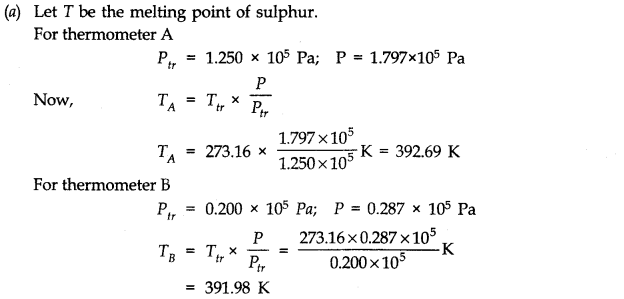
SCHOOL OF LEARNING COACHING AGARTALA
CRACK NEET JEE TBJEE WBJEE IIT NIT ENTRANCE
WITH SUBJECT EXPERTS & DOCTORATE, GOLD MEDALIST
LOWEST FEE IN INDIA
(b) The value of the melting point of sulphur found from the two thermometers differ slightly due to the reason that in practice, the gases do not behave strictly as perfect gases i.e., gases are not perfectly ideal.
To reduce the discrepency, readings should be taken for lower and lower pressures and the plot between temperature measured versus absolute pressure of the gas at triple point should be extrapolated to obtain the temperature in the limit pressure tends to zero (if P —> 0), when the gases approach ideal gas behaviour.
Question 11. 6. A steel tape 1 m long is correctly calibrated for a temperature of 27.0 °C. The length of a steel rod measured by this tape is found to be 63.0 cm on a hot day when the temperature is 45.0 °C. What is the actual length of the steel rod on that day ? What is the length of the same steel rod on a day when the temperature is 27.0 °C ? Coefficient of linear expansion of steel = 1.20 x 10-1K-1.
Answer: On a day when the temperature is 27 °C, the length of 1 cm division on the steel tape is exactly 1 cm, because the tape has been calibrated for 27 °C.When the temperature rises to 45 °C (that is, ΔT = 45 – 27 = 18 °C), the increase in the length of 1 cm division is Δl = αlΔT = (1.2 x 10-5C-1) x 1 cm x 18 °C = 0.000216 cm Therefore, the length of 1 cm division on the tape becomes 1.000216 cm at 45 °C. As the length of the steel rod is read to be 63.0 cm on the steel tape at 45 °C, the actual length of the rod at 45 °C is 63.0 x 1.000216 cm = 63.0136 cm The length of the same rod at 27 °C is 63.0 cm, because 1 cm mark on the steel tape is exactly 1 cm at 27 °C.
SCHOOL OF LEARNING COACHING AGARTALA
CRACK NEET JEE TBJEE WBJEE IIT NIT ENTRANCE
WITH SUBJECT EXPERTS & DOCTORATE, GOLD MEDALIST
LOWEST FEE IN INDIA
Question 11. 7. A large steel wheel is to befitted on to a shaft of the same material. At 27 °C, the outer diameter of the shaft is 8.70 cm and the diameter of the central hole in the wheel is, 8.69 cm. The shaft is cooled using ‘dry ice’. At what temperature of the shaft does the wheel slip on the shaft ? Assume coefficient of linear expansion of the steel to be constant over the required temperature range αsteel= 1-20 x 10-5K-1.
Answer:
SCHOOL OF LEARNING COACHING AGARTALA
CRACK NEET JEE TBJEE WBJEE IIT NIT ENTRANCE
WITH SUBJECT EXPERTS & DOCTORATE, GOLD MEDALIST
LOWEST FEE IN INDIA
Question 11. 8. A hole is drilled in a copper sheet. The diameter of the hole is 4.24 cm at 27.0 °C. What is the change in the diameter of the hole when the sheet is heated to 227 °C ? Coefficient of linear expansion of copper = 1.70 x 10-5K-1.
Answer:
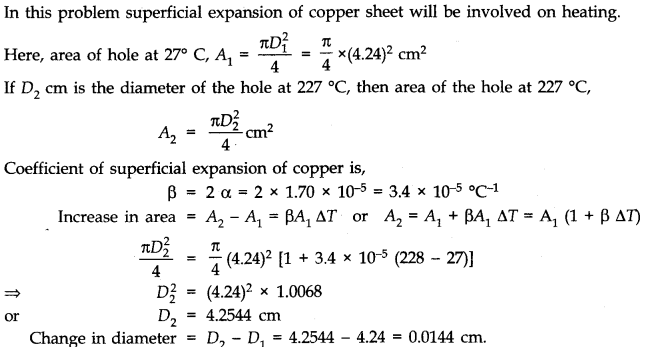
SCHOOL OF LEARNING COACHING AGARTALA
CRACK NEET JEE TBJEE WBJEE IIT NIT ENTRANCE
WITH SUBJECT EXPERTS & DOCTORATE, GOLD MEDALIST
LOWEST FEE IN INDIA
Question 11. 9. A brass wire 1.8 m long at 27 °C is held taut with little tension between two rigid supports. If the wire is cooled to a temperature of – 39 °C, what is the tension developed in the wire, if its diameter is 2.0 mm ? Co-efficient of linear expansion of brass = 2.0 x 10-5K-1; Young’s modulus of brass = 0.91 x 1011 Pa
Ans.
Question 11. 10. A brass rod of length 50 cm and diameter 3.0 mm is joined to a steel rod of the same length and diameter. What is the change in length of the combined rod at 250 °C, if the original lengths are at 40.0 °C ? Is there a ‘thermal stress’ developed at the junction ? The ends of the rod are free to expand (Co-efficient of linear expansion of brass = 2.0 x 10-5 °C-1, steel = 1.2 x 10-5 °C-3.
Ans.
SCHOOL OF LEARNING COACHING AGARTALA
CRACK NEET JEE TBJEE WBJEE IIT NIT ENTRANCE
WITH SUBJECT EXPERTS & DOCTORATE, GOLD MEDALIST
LOWEST FEE IN INDIA
Question 11. 11. The coefficient of volume expansion of glycerine is 49 x 10-5K-1. What is the fractional change in its density for a 30 °C rise in temperature ?
Ans.
Question 11. 12. A 10 kW drilling machine is used to drill a bore in a small aluminium block of mass 8.0 kg. How much is the rise in temperature of the block in 2.5 minutes, assuming 50% of power is used up in heating the machine itself or lost to the surroundings? Specific heat of aluminium = 0.91 J g-1 K-1 .
Answer: Power = 10 kW = 104 W
Mass, m=8.0 kg = 8 x 103 g
Question 11. 13. A copper block of mass 2.5 kg is heated in a furnace to a temperature of 500°C and then placed on a large ice block. What is the maximum amount of ice that can melt? Specific heat of copper is 0.39 Jg-1°C-1. Heat of fusion of water = 335 Jg-1.
Answer:
Question 11. 14. In an experiment on the specific heat of a metal, a 0.20 kg block of the metal at 150°C is dropped in a copper calorimeter (of water equivalent 0.025 kg) containing 150 cm3 of water at 27 °C. The final temperature is 40° C. Compute the specific heat of the metal. If heat losses to the surroundings are not negligible, is your answer greater or smaller than the actual value for specific heat of the metal?
Answer: Mass of metal block, m = 0.20 kg = 200 g
Fall in the temperature of metal block,
ΔT = (150 – 40) °C = 110 °C
If C be the specific heat of metal, then heat lost by the metal block = 200 x C x 110 cal Volume of water = 150 cm3
mass of water = 150 g
Increase in temperature of water = (40 – 27) °C = 13°C
Heat gained by water = 150 x 13 cal Water equivalent of calorimeter, w = 0.025 kg = 25g
Heat gained by calorimeter,
Question 11. 15. Given below are observations on molar specific heats at room temperature of some common gases.
The measured molar specific heats of these gases are markedly different from those for mono atomic gases. Typically, molar specific heat of a mono atomic gas is 2.92 cal/mol K. Explain this difference. What can you infer from the somewhat larger (than the rest) value for chlorine ?
Answer: The gases which are listed in the above table are diatomic gases and not mono atomic gases. For diatomic gases, molar specific heat =5/2 R = 5/2 x 1.98 = 4.95, which agrees fairly well with all observations listed in the table except for chlorine. A mono atomic gas molecule has only the translational motion. A diatomic gas molecule, apart from translational motion, the vibrational as well as rotational motion is also possible. Therefore, to raise the temperature of 1 mole of a diatomic gas through 1°C, heat is to be supplied to increase not only translational energy but also rotational and vibrational energies. Hence, molar specific heat of a diatomic gas is greater than that for mono atomic gas. The higher value of molar specific heat of chlorine as compared to hydrogen, nitrogen, oxygen etc. shows that for chlorine molecule, at room temperature vibrational motion also occurs along with translational and rotational motions, whereas other diatomic molecules at room temperature usually have rotational motion apart from their translational motion. This is the reason that chlorine has somewhat larger value of molar specific heat.
Question 11. 16. (a) At what temperature and pressure can the solid, liquid and vapour phases of CO2 co-exist in equilibrium ?
(b) What is the effect of decrease of pressure on the fusion and boiling point of CO2 ?
(c) What are the critical temperature and pressure for CO2 ? What is their significance 1
(d) Is CO2 solid, liquid or gas at (a) – 70 °C under 1 atm (b) – 60 °C under 10 atm (c) 15°C under 56 atm?
Answer: (a) At the triple point, temperature = – 56.6 °C and pressure = 5.11 atm.
(b) Both the boiling point and freezing point of CO2 decrease if pressure decreases.
(c) The critical temperature and pressure of CO2 are 31.1°C and 73.0 atm respectively. Above this temperature, CO2 will not liquefy/even if compressed to high pressures.
(d) (i) The point (- 70 °C, 1.0 atm) lies in the vapour region. Hence, CO2 is vapour at this point.
(ii) The point (- 60 °C, 10 atm) lies in the solid region. Hence, CO2 is solid at this point.
(iii) The point (15 °C, 56 atm) lies in the liquid region. Hence, CO2 is liquid at this point.
Question 11. 17. Answer the following questions based on the P – T phase diagram of CO2 (Fig. of question 17 given above)
(a) COSCHOOL OF LEARNING COACHING AGARTALA
CRACK NEET JEE TBJEE WBJEE IIT NIT ENTRANCE
WITH SUBJECT EXPERTS & DOCTORATE, GOLD MEDALIST
LOWEST FEE IN INDIA
2 at 1 atm pressure and temperature – 60 °C is compressed isothermally. Does it go through a liquid phase ?
(b) What happens when CO2 at 4 atm pressure is cooled from room temperature at constant pressure ?
(c) Describe qualitatively the changes in a given mass of solid CO2 at 10 atm pressure and temperature – 65 °C as it is heated up at room temperature at constant pressure.
(d) CO2 is heated to a temperature 70 °C and compressed isothermally. What changes in its properties do you expect to observe ?
Answer: (a) No, the CO2 does not go through the liquid phase. The point (1.00 atm, – 60°C) is to the lift of the triple-point O and below the sublimation curve OA. Therefore, when CO2 is compressed at this point at constant temperature, the point moves perpendicular to the temperature-axis and enters the solid phase region. Hence, the CO2 vapour condenses to solid directly without going through the liquid phase.
(b) CO2 at 4.0 atm pressure and room temperature (say, 27 °C) is in vapour phase. This point (4.0 atm, 27°C) lies below the vaporation curve OC and to the right of the triple point O. Therefore, when CO2 is cooled at this point at constant pressure, the point moves perpendicular to the pressure-axis and enters the solid phase region. Hence, the CO2 vapour condenses directly to solid phase without going through the liquid phase.
(c) When the solid CO2 at – 65 °C is heated at 10 atm pressure, it is first converted into liquid. A further increase in its temperature brings it into the vapour phase. If a horizontal line at P = 10 atm is drawn parallel to the T-axis, then the points of intersection of line with the fusion and vaporization curve give the fusion and boiling points at 10 atm.
(d) Above 31.1°C, the gas cannot be liquefied. Therefore, on being compressed isothermally at 70°C, there will be no transition to the liquid region. However, the gas will depart, more and more from its perfect gas behaviour with the increase in pressure.
Question 11. 18. A child running a temperature of 101°F is given an antipyrin (i.e., a medicine that lowers fever) which causes an increase in the rate of evaporation of sweat from his body. If the fever is brought down to 98° F in 20 minutes, what is the average rate of extra evaporation caused by the drug ? Assume the evaporation mechanism to be the only way by which heat is lost. The mass of the child is 30 kg. The specific heat of human body is approximately the same as that of water, and latent heat of evaporation of water at that temperature is about 580 cal g-1.
Answer:SCHOOL OF LEARNING COACHING AGARTALA
CRACK NEET JEE TBJEE WBJEE IIT NIT ENTRANCE
WITH SUBJECT EXPERTS & DOCTORATE, GOLD MEDALIST
LOWEST FEE IN INDIA
Question 11. 19. A ‘thermacole’ icebox is a cheap and efficient method for storing small quantities of cooked food in summer in particular. A cubical icebox of side 30 cm has a thickness of 5.0 cm. If 4.0 kg of ice is put in the box, estimate the amount of ice remaining after 6 h. The outside temperature is 45°C, and coefficient of thermal conductivity of thermacole is 0.01 Js-1 m-1 °C-1 [Heat of fusion of water = 335 x 103 J kg-1 ].
Answer: Each side of the cubical box (having 6 faces) is 30 cm = 0.30 m. Therefore, the total surface area’ of the icebox exposed to outside air is A = 6 x (0.30 m)2 = 0.54 m2. The thickness of the icebox is d = 5.0 cm = 0.05 m, time of exposure t = 6h = 6 x 3600 s and temperature difference T1 – T2 = 45°C – 0°C = 45°C.
.•. Total heat entering the icebox in 6 h is given by

Question 11. 20. A brass boiler has a base area 0.15 m2SCHOOL OF LEARNING COACHING AGARTALA
CRACK NEET JEE TBJEE WBJEE IIT NIT ENTRANCE
WITH SUBJECT EXPERTS & DOCTORATE, GOLD MEDALIST
LOWEST FEE IN INDIA
and thickness 1.0 cm. It boils water at the rate of 6.0 kg/ min when placed on a gas stove. Estimate the temperature of the part of the flame in contact with the boiler. Thermal conductivity of brass = 109 Js-1 m-1 K-1.(Heat of vaporization of water = 2256 x 103 J kg-1 )
Answer:
Question 11. 21. Explain why:
(a) a body with large reflectivity is a poor emitter.
(b) a brass tumbler feels much colder than a wooden tray on a chilly day.
(c) an optical pyrometer (for measuring high temperatures) calibrated for an ideal black body radiation gives too low a value for the temperature of a red hot iron piece in the open, but gives a correct value for the temperature when the same piece is in the furnace.
(d) the earth without its atmosphere would be inhospitably cold.
(e) heat systems based on circulation of steam are more efficient in warming a building than those based on circulation of hot water.
Answer: (a) According to Kirchh off’s law of black body radiations, good emitters are good absorbers and bad emitters are bad absorbers. A body with large reflectivity is a poor absorber of heat and consequently, it is also a poor emitter.
(b) Brass is a good conductor of heat, while wood is a bad conductor. When we touch the brass tumbler on a chilly day, heat starts flowing from our body to the tumbler and we feel it cold. However, when the wooden tray is touched, heat does not flow from our hands to the tray and we do not feel cold.
(c) An optical pyrometer is based on the principle that the brightness of a glowing surface of a body depends upon its temperature. Therefore, if the temperature of the body is less than 600°C, the image formed by the optical pyrometer is not brilliant and we do not get the reliable result. It is for this reason that the pyrometer gives a very low value for the temperature of red hot iron in the open.
(d) The lower layers of earth’s atmosphere reflect infrared radiations from earth back to the surface of earth. Thus the heat radiation received by the earth from the sun during the day are kept trapped by the atmosphere. If atmosphere of earth were not there, its surface would become too cold to live.
(e) Steam at 100°C possesses more heat than the same mass of water at 100°C. One gram of steam at 100°C possesses 540 calories of heat more than that possessed by 1 gm of water at 100°C. That is why heating systems based on circulation of steam are more efficient than those based on circulation of hot water.
Question 11. 22. A body cools from 80 °C to 50°C in 5 minutes. Calculate the time it takes to cool from 60 °C to 30°C. The temperature of the surroundings is 20 °C.
Answer:
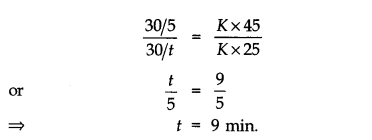
Class 11 Physics Chapter 12 Thermodynamics:
Section Name Topic Name
SCHOOL OF LEARNING COACHING AGARTALA
CRACK NEET JEE TBJEE WBJEE IIT NIT ENTRANCE
WITH SUBJECT EXPERTS & DOCTORATE, GOLD MEDALIST
LOWEST FEE IN INDIA
12 Thermodynamics
12.1 Introduction
12.2 Thermal equilibrium
12.3 Zeroth law of thermodynamics
12.4 Heat, internal energy and work
12.5 First law of thermodynamics
12.6 Specific heat capacity
12.7 Thermodynamic state variables and equation of state
12.8 Thermodynamic processes
12.9 Heat engines
12.10 Refrigerators and heat pumps
12.11 Second law of thermodynamics
12.12 Reversible and irreversible processes
12.13 Carnot engine
ক্লাস 11 পদার্থবিদ্যা অধ্যায় 12 তাপগতিবিদ্যা:
বিভাগের নাম বিষয়ের নাম
12 তাপগতিবিদ্যা
12.1 ভূমিকা
12.2 তাপীয় ভারসাম্য
12.3 তাপগতিবিদ্যার জিরোথ সূত্র
12.4 তাপ, অভ্যন্তরীণ শক্তি এবং কাজ
12.5 তাপগতিবিদ্যার প্রথম সূত্র
12.6 নির্দিষ্ট তাপ ক্ষমতা
12.7 থার্মোডাইনামিক স্টেট ভেরিয়েবল এবং স্টেটের সমীকরণ
12.8 থার্মোডাইনামিক প্রক্রিয়া
12.9 তাপ ইঞ্জিন
12.10 রেফ্রিজারেটর এবং তাপ পাম্প
12.11 তাপগতিবিদ্যার দ্বিতীয় সূত্র
12.12 বিপরীত এবং অপরিবর্তনীয় প্রক্রিয়া
12.13 কার্নট ইঞ্জিন
Question 12. 1 A geyser heats water flowing at the rate of 3.0 litres per minute from 2 7°C to 77°C. If the geyser operates on a gas burner, what is the rate of consumption of the fuel if its heat of combustion is 4.0 x 104 J/g?
Answer: Volume of water heated = 3.0 litre per minute Mass of water heated, m = 3000 g per minute Increase in temperature,
SCHOOL OF LEARNING COACHING AGARTALA
CRACK NEET JEE TBJEE WBJEE IIT NIT ENTRANCE
WITH SUBJECT EXPERTS & DOCTORATE, GOLD MEDALIST
LOWEST FEE IN INDIA
Question 12. 2 What amount of heat must be supplied to 2.0 x 10-2 kg of nitrogen (at room temperature) to raise its temperature by 45 °C at constant pressure? (Molecular mass of N2 = 28; R = 8.3 J mol-1 K-1.)
SCHOOL OF LEARNING COACHING AGARTALA
CRACK NEET JEE TBJEE WBJEE IIT NIT ENTRANCE
WITH SUBJECT EXPERTS & DOCTORATE, GOLD MEDALIST
LOWEST FEE IN INDIA
Answer:
Question 12. 3 Explain why
(a) Two bodies at different temperatures T1 and T2, if brought in thermal contact do not necessarily settle to the mean temperature (T1 + T2)/2 ?
(b) The coolant in a chemical or nuclear plant (i.e., the liquid used to prevent different parts of a plant from getting too hot) should have high specific heat. Comment.
SCHOOL OF LEARNING COACHING AGARTALA
CRACK NEET JEE TBJEE WBJEE IIT NIT ENTRANCE
WITH SUBJECT EXPERTS & DOCTORATE, GOLD MEDALIST
LOWEST FEE IN INDIA
(c) Air pressure in a car tyre increases during driving. Why?
(d) The climate of a harbour town is more temperate (i.e., without extremes of heat and cold) than that of a town in a desert at the same latitude. Why?
Answer: (a) In thermal contact, heat flows from the body at higher temperature to the body at lower temperature till temperatures become equal. The final temperature can be the mean temperature (T1+ T2)/2 only when thermal capacities of the two bodies are equal.
(b) This is because heat absorbed by a substance is directly proportional to the specific heat of the substance.
(c) When car is driven, some work is being done on types in order to overcome dissipative forces of friction and air resistance etc. This work done is transformed into heat, due to which temperature of the car types increases.
(d) The climate of a harbour town is more temperate (neither too hot nor too cool) due to formation of sea breeze at day time and land breeze at night time as already explained in Chapter 11.
Question 12. 4 A cylinder with a movable piston contains 3 moles of hydrogen at standard temperature and pressure. The walls of the cylinder are made of a heat insulator, and the piston is insulated by having a pile of sand on it. By what factor does the pressure of the gas increase if the gas is compressed to half its original volume?
Answer:SCHOOL OF LEARNING COACHING AGARTALA
CRACK NEET JEE TBJEE WBJEE IIT NIT ENTRANCE
WITH SUBJECT EXPERTS & DOCTORATE, GOLD MEDALIST
LOWEST FEE IN INDIA
Question 12. 5 In changing the state of a gas adiabatically from an equilibrium state A to another equilibrium state B, an amount of work equal to 22.3 J is done on the system. If the gas is taken from state A to B via a process in which the net heat absorbed by the system is 9.35 cal, how much is the net work done by the system in the latter case? (Take 1 cal = 4.19 J)
Answer:
Question 12. 6 Two cylinders A and B of equal capacity are connected to each other via a stopcock. A contains a gas at standard temperature and pressure. B is completey evacuated. The entire system is thermally insulated. The stopcock is suddenly opened. Answer the following:
(a) What is the final pressure of the gas in A and B ?SCHOOL OF LEARNING COACHING AGARTALA
CRACK NEET JEE TBJEE WBJEE IIT NIT ENTRANCE
WITH SUBJECT EXPERTS & DOCTORATE, GOLD MEDALIST
LOWEST FEE IN INDIA
(b) What is the change in internal energy of the gas?
(c) What is the change in the temperature of the gas?
(d) Do the intermediate states of the system (before settling to the final equilibrium state) lie of its P-V-T Surface?
Answer: (a) Since the final temperature and initial temperature remain the same,
(b) Since the temperature of the system remains unchanged, change in internal energy is zero.
(c) The system being thermally insulated, there is no change in temperature (because of free expansion)
(d) The expansion is a free expansion. Therefore, the intermediate states are non equilibrium states and the gas equation is not satisfied in these states. As a result, the gas can not return to an equilibrium state which lie on the P-V-T surface.
Question 12. 7 A steam engine delivers 5.4 x 108 J of work per minute and services 3.6 x 109 J of heat per minute from its boiler. What is the efficiency of the engine? How much heat is wasted per minute?
Answer:
Question 12. 8 An electric heater supplies heat to a system at a rate of 100 W. If system performs work at a rate of 75 Joules per second. At what rate is the internal energy increasing?
Answer:
Question 12. 9 A thermodynamic system is taken from an original state to an intermediate state by the linear process shown in Fig.Its volume is then reduced to the original value from E to F by an isobaric process. Calculate the total work done by the gas from D to E to F.
Answer:
Question 12. 10 A refrigerator is to maintain eatables kept inside at 9 °C, if room temperature is 36 °C. Calculate the coefficient of performance.
Answer:
Class 11 Physics Chapter 13 Kinetic Theory:
Section Name Topic Name
13 Kinetic Theory
13.1 Introduction
13.2 Molecular nature of matter
13.3 Behaviour of gases
13.4 Kinetic theory of an ideal gas
13.5 Law of equipartition of energy
13.6 Specific heat capacity
13.7 Mean free path
ক্লাস 11 পদার্থবিদ্যা অধ্যায় 13 গতি তত্ত্ব:
বিভাগের নাম বিষয়ের নাম
13 গতি তত্ত্ব
13.1 ভূমিকা
13.2 পদার্থের আণবিক প্রকৃতি
13.3 গ্যাসের আচরণ
13.4 একটি আদর্শ গ্যাসের গতি তত্ত্ব
13.5 শক্তির সুসংগতি আইন
13.6 নির্দিষ্ট তাপ ক্ষমতা
13.7 মানে মুক্ত পথ
Question 13. 1. Estimate the fraction of molecular volume to the actual volume occupied by oxygen gas at STP.’ Take the diameter of an oxygen molecule to be 3 A.
Answer: Diameter of an oxygen molecule, d = 3 A = 3 x 10-10 m. Consider one mole of oxygen gas at STP, which contain total NA = 6.023 x 1023 molecules.
Question 13. 2. Molar volume is the volume occupied by 1 mol of any (ideal) gas at standard temperature and pressure (STP : 1 atmospheric pressure, 0 °C). Show that it is 22.4 litres.
Answer:
Question 13. 3. Following figure shows plot of PV/T versus P for 1.00 x 10-3 kg of oxygen gas at two different temperatures.
(a) What does the dotted plot signify?
(b) Which is true : T1> T2 or T1< T2?
(c) What is the value of PV/T where the curves meet on the y-axis?
(d) If we obtained similar plots for 1.00 x 10-3 kg of hydrogen, would we get the same value of PV/T at the point where the curves meet on the y-axis? If not, what mass of hydrogen yields the same value of PV/T (for the low-pressure high-temperature region of the plot) ? (Molecular mass of H2 = 2.02 u, of O2 = 32.0 u, R = 8.31 J mol-1 K-1.)
Answer: (a) The dotted plot corresponds to ‘ideal’ gas behaviour as it is parallel to P-axis and it tells that value of PV/T remains same even when P is changed.
(b) The upper position of PV/T shows that its value is lesser for T1 thus T1 > T2. This is because the curve at T1 is more close to dotted plot than the curve at T2 Since the behaviour of a real gas approaches the perfect gas behaviour, as the temperature is increased.
(c) Where the two curves meet, the value of PV/T on y-axis is equal to μR. Since ideal gas equation for μ moles is PV = μRT

Question 13. 4. An oxygen cylinder of volume 30 Hire has an initial gauge pressure of 15 atmosphere and a temperature of 27 °C. After some oxygen is withdrawn from the cylinder, the gauge pressure drops to 11 atmosphere and its temperature drops to 17 °C. Estimate the mass of oxygen taken out of the cylinder. (R = 8.31 J mol-1 K-1, molecular mass of O2 = 32 u.)
Answer:
Question 13. 5. An air bubble of volume 1.0 cm3 rises from the bottom of a lake 40 m deep at a temperature of 12°C. To what volume does it grow when it reaches the surface, which is at a temperature of 35 °C.
Answer:
SCHOOL OF LEARNING COACHING AGARTALA
CRACK NEET JEE TBJEE WBJEE IIT NIT ENTRANCE
WITH SUBJECT EXPERTS & DOCTORATE, GOLD MEDALIST
LOWEST FEE IN INDIA
Question 13. 6. Estimate the total number of air molecules (inclusive of oxygen, nitrogen, water vapour and other constituents) in a room of capacity 25.0 m3 at a temperature of 27 °C and 1 atm pressure.
Answer:
Question 13. 7. Estimate the average thermal energy of a helium atom at (i) room temperature (27 °C), (ii) the temperature on the surface of the Sun (6000 K), (iii) the temperature of 10 million kelvin (the typical core temperature in the case of a star).
Answer:
SCHOOL OF LEARNING COACHING AGARTALA
CRACK NEET JEE TBJEE WBJEE IIT NIT ENTRANCE
WITH SUBJECT EXPERTS & DOCTORATE, GOLD MEDALIST
LOWEST FEE IN INDIA
Question 13. 8. Three vessels of equal capacity have gases at the same temperature and pressure. The first vessel contains neon (monoatomic), the second contains chlorine (diatomic), and the third contains uranium hexafluoride (polyatomic). Do the vessels contain equal number of respective molecules? Is the root mean square speed of molecules the same in the three cases? If not, in which case is vrms the largest?
Answer: Equal volumes of all the gases under similar conditions of pressure and temperature contains equal number of molecules (according to Avogadro’s hypothesis). Therefore, the number of molecules in each case is same.
Question 13. 9. At what temperature is the root mean square speed of an atom in an argon gas cylinder equal to the rms speed of a helium gas atom at -20 °C? (atomic mass of Ar = 39.9 u, of He = 4.0 u).
Answer: Let C and C’ be the rms velocity of argon and a helium gas atoms at temperature T K and T K respectively.
Here, M = 39.9; M’ = 4.0; T =?; T = -20 + 273 = 253 K
SCHOOL OF LEARNING COACHING AGARTALA
CRACK NEET JEE TBJEE WBJEE IIT NIT ENTRANCE
WITH SUBJECT EXPERTS & DOCTORATE, GOLD MEDALIST
LOWEST FEE IN INDIA
Question 13. 10. Estimate the mean free path and collision frequency of a nitrogen molecule in a cylinder containing nitrogen at 2.0 atm and temperature 17 °C. Take the radius of a nitrogen molecule to be roughly 1.0 A. Compare the collision time with the time the molecule moves freely between two successive collisions (Molecular mass of N2 = 28.0 u).
Answer:
Question 13. 11. A meter long narrow bore held horizontally (and closed at one end) contains a 76 cm long mercury thread which traps a 15 cm column of air. What happens if the tube is held vertically with the open end at the bottom?
Answer: When the tube is held horizontally, the mercury thread of length 76 cm traps a length of air = 15 cm. A length of 9 cm of the tube will be left at the open end. The pressure of air enclosed in tube will be atmospheric pressure. Let area of cross-section of the tube be 1 sq. cm.
.’. P1 = 76 cm and V1 = 15 cm3
When the tube is held vertically, 15 cm air gets another 9 cm of air (filled in the right handside in the horizontal position) and let h cm of mercury flows out to balance the atmospheric pressure. Then the heights of air column and mercury column are (24 + h) cm and (76 – h) cm respectively.
SCHOOL OF LEARNING COACHING AGARTALA
CRACK NEET JEE TBJEE WBJEE IIT NIT ENTRANCE
WITH SUBJECT EXPERTS & DOCTORATE, GOLD MEDALIST
LOWEST FEE IN INDIA
Question 13. 12. From a certain apparatus, the diffusion rate of hydrogen has an average value of 28.7 cm3 s-1. The diffusion of another gas under the same conditions is measured to have an average rate of 7.2 cm3 s-1. Identify the gas.
Answer: According to Graham’s law of diffusion of gases, the rate of diffusion of a gas is inversely proportional to the square root of its molecular mass.
If R1 and R2 be the rates of diffusion of two gases having molecular masses M1 and M2 respectively, then
Question 13. 13. A gas in equilibrium has uniform density and pressure throughout its volume. This is strictly true only if there are no external influences. A gas column under gravity, for example, does not have uniform density (and pressure). As you might expect, its density decreases with height. The precise dependence is given by the so-called law of atmospheres n2 = n1 exp [ – mg (h2 – h1)/kBT]
where n2, n1 refer to number density at heights h2 and h1 respectively. Use this relation to derive the equation for sedimentation equilibrium of a suspension in a liquid column :
n2 = n1 exp [ – mg NA(ρ – P) (h2 – h1 )/(ρ RT)] where ρ is the density of the suspended particle, and ρ that of surrounding medium. [NA is Avogadro’s number, and R the universal gas constant.]
[Hint: Use Archimedes principle to find the apparent weight of the suspended particle.]
SCHOOL OF LEARNING COACHING AGARTALA
CRACK NEET JEE TBJEE WBJEE IIT NIT ENTRANCE
WITH SUBJECT EXPERTS & DOCTORATE, GOLD MEDALIST
LOWEST FEE IN INDIA
Answer: Considering the particles and molecules to be spherical, the weight of the particle is
Question 13. 14. Given below are densities of some solids and liquids. Give rough estimates of the size of their atoms
[Hint: Assume the atoms to be ‘tightly packed’ in a solid or liquid phase, and use the known value of Avogadro’s number. You should, however, not take the actual numbers you obtain for various atomic sizes too literally. Because of the crudeness of the tight packing approximation, the results only indicate that atomic sizes are in the range of a few A].
SCHOOL OF LEARNING COACHING AGARTALA
CRACK NEET JEE TBJEE WBJEE IIT NIT ENTRANCE
WITH SUBJECT EXPERTS & DOCTORATE, GOLD MEDALIST
LOWEST FEE IN INDIA
Answer: In one mole of a substance, there are 6.023 x 1023 atoms
Class 11 Physics Chapter 14 Oscillations
Section Name Topic Name
14 Oscillations
14.1 Introduction
14.2 Periodic and oscilatory motions
14.3 Simple harmonic motionSCHOOL OF LEARNING COACHING AGARTALA
CRACK NEET JEE TBJEE WBJEE IIT NIT ENTRANCE
WITH SUBJECT EXPERTS & DOCTORATE, GOLD MEDALIST
LOWEST FEE IN INDIA
14.4 Simple harmonic motion and uniform circular motion
14.5 Velocity and acceleration in simple harmonic motion
14.6 Force law for simple harmonic motion
14.7 Energy in simple harmonic motion
14.8 Some systems executing Simple Harmonic Motion
14.9 Damped simple harmonic motion
14.10 Forced oscillations and resonance
14.1 ভূমিকা
14.2 পর্যায়ক্রমিক এবং দোলনীয় গতি
14.3 সরল সুরেলা গতি
14.4 সরল সুরেলা গতি এবং অভিন্ন বৃত্তাকার গতি
14.5 সরল সুরেলা গতিতে বেগ এবং ত্বরণ
14.6 সরল সুরেলা গতির জন্য বল আইন
14.7 সরল সুরেলা গতিতে শক্তি
14.8 কিছু সিস্টেম সরল হারমোনিক মোশন নির্বাহ করে
14.9 স্যাঁতসেঁতে সরল সুরেলা গতি
14.10 জোরপূর্বক দোলন এবং অনুরণন
Question 14. 1. Which of the following examples represent periodic motion?
(a) A swimmer completing one (return) trip from one bank of a river to the other and back.
(b) A freely suspended bar magnet displaced from its N-S direction and released.
(c) A hydrogen molecule rotating about its centre of mass.
(d) An arrow released from a bow.
Answer: (a) It is not a periodic motion. Though the motion of a swimmer is to and fro but will not have a definite period.
(b) Since a freely suspended magnet if once displaced from N-S direction and released, it oscillates about this position, it is a periodic motion.
(c) The rotating motion of a hydrogen molecule about its centre of mass is periodic.
(d) Motion of an arrow released from a bow is non-periodic.
Question 14. 2. Which of the following examples represent (nearly) simple harmonic motion and which represent
periodic but not simple harmonic motion?
SCHOOL OF LEARNING COACHING AGARTALA
CRACK NEET JEE TBJEE WBJEE IIT NIT ENTRANCE
WITH SUBJECT EXPERTS & DOCTORATE, GOLD MEDALIST
LOWEST FEE IN INDIA
(a) the rotations of earth about its axis.
(b) motion of an oscillating mercury column in a U-tube.
(c) motion of a ball bearing inside a smooth curved bowl, when released from a point slightly above the lowermost point.
(d) general vibrations of a polyatomic molecule about its equilibrium position.
Answer: (a) Since the rotation of earth is not to and fro motion about a fixed point, thus it is periodic but not S.H.M.
(b) It is S.H.M.
(c) It is S.H.M.
(d) General vibrations of a polyatomic molecule about its equilibrium position is periodic but non SHM. In fact, it is a result of superposition of SHMs executed by individual vibrations of atoms of the molecule.
Question 14. 3. Fig. depicts four x-t plots for linear motion of a particle. Which of ike plots represent periodic motion? What is the period of motion (in case of periodic motion)?
Answer: Figure (b) and (d) represent periodic motions and the time period of each of these is 2 seconds, (a) and (c) are non-periodic motions.
Question 14. 4. Which of the following function of time represent (a) simple harmonic, (b) periodic but not simple harmonic, and (c) non-periodic motion? Give period for each case of periodic motion (to is any positive constant).
(a) sin wt – cos wt (b) sin2 wt (c) 3 cos -2 cos (π/4-2 wt) (d) cos wt + cos 3 wt + cos 5 wt
(e) exp (- w2t2) (f) 1 + wt + w2t2.
SCHOOL OF LEARNING COACHING AGARTALA
CRACK NEET JEE TBJEE WBJEE IIT NIT ENTRANCE
WITH SUBJECT EXPERTS & DOCTORATE, GOLD MEDALIST
LOWEST FEE IN INDIA
Answer: The function will represent a periodic motion, if it is identically repeated after a fixed interval of time and will represent S.H.M if it can be written uniquely in the form of a cos
(e) e-w2t2 . It is an exponential function which never repeats itself. Therefore it represents non-periodic motion.
(f) 1 + wt + w2t2 also represents non periodic motion.
Question 14. 5. A particle is in linear simple harmonic motion between two points, A and B, 10 cm apart. Take the direction from A to B as the positive direction and give the signs of velocity, acceleration and force on the particle when it is
(a) at the end A,
(b) at the end B,
(c) at the mid-point of AB going towards A,
SCHOOL OF LEARNING COACHING AGARTALA
CRACK NEET JEE TBJEE WBJEE IIT NIT ENTRANCE
WITH SUBJECT EXPERTS & DOCTORATE, GOLD MEDALIST
LOWEST FEE IN INDIA
(d) at 2 cm away from B going towards A,
(e) at 3 cm away from A going towards B, and (f) at 4 cm away from B going towards A.
Answer: In the fig. (given below), the points A and B, 10 cm apart, are the extreme positions of the particle in SHM, and the point O is the mean position. The direction from A to B is positive, as indicated.
(a) At the end A, i.e., extreme position, velocity is zero, acceleration and force are directed towards O and are positive.
(b) At the end B, i.e., second extreme position, velocity is zero whereas the acceleration and force are directed towards the point O and are negative.
(c) At the mid point O, while going towards A, velocity is negative and maximum. The acceleration and force both are zero.
(d) At 2 cm away from B, that is, at C and going towards A: v is negative; acceleration and F, being directed towards O, are also negative.
(e) At 3 cm away from A, that is, at D and going towards B: v is positive; acceleration and F, being directed towards O, are also positive.
(f) At a distance of 4 cm away from A and going towards A, velocity is directed along BA, therefore, it is positive. Since acceleration and force are directed towards OB, both of them are positive.
Question 14. 6. Which of the following relationships between the acceleration a and the displacement x of a particle involve simple harmonic motion?
(a) a = 0.7x (b) a = – 200 x2
(c) a = – 10x (d) a = 100 x3
Answer: Only (c) i.e., a = – 10x represents SHM. This is because acceleration is proportional and opposite to displacement (x).
Question 14. 7. The motion of a particle executing simple harmonic motion is described by the displacement function. x(t) = A cos (wt +Ф ).If the initial (t = 0) position of the particle is 1 cm and its initial velocity is w cm/s, what are its amplitude and initial phase angle? The angular frequency of the particle is π s-1. If instead of the cosine function, we choose the sine function to describe the SHM: x = B sin (wt + α), what are the amplitude and initial phase of the particle with the above initial conditions?
Answer:
SCHOOL OF LEARNING COACHING AGARTALA
CRACK NEET JEE TBJEE WBJEE IIT NIT ENTRANCE
WITH SUBJECT EXPERTS & DOCTORATE, GOLD MEDALIST
LOWEST FEE IN INDIA
Question 14. 8. A spring balance has a scale that reads from 0 to 50 kg. The length of the scale is 20 cm. A body suspended from this balance, when displaced and released, oscillates with a period of 0.6 s. What is the weight of the body?
Answer:

Question 14. 9. A spring having with a spring constant 1200 Nm-1 is mounted on a horizontal table as shown in Fig. A mass of 3 kg is attached to the free end of the spring. The mass is then pulled sideways to a distance of 2.0 cm and released. Determine (i) the frequency of oscillations, (ii) maximum acceleration of the mass, and (iii) the maximum speed of the mass.
Answer:
Question 14. 10. In Exercise 9, let us take the position of mass when the spring is unstreched as x = 0, and the direction from left to right as the positive direction of x – axis. Give x as a function of time t for the oscillating mass if at the moment we start the stopwatch (t = 0), the mass is (a)at the mean position,(b)at the maximum stretched position, and (c)at the maximum compressed position.In what way do these functions for SHM differ from each other, in frequency, in amplitude or the initial phase?
Answer:
SCHOOL OF LEARNING COACHING AGARTALA
CRACK NEET JEE TBJEE WBJEE IIT NIT ENTRANCE
WITH SUBJECT EXPERTS & DOCTORATE, GOLD MEDALIST
LOWEST FEE IN INDIA
Note: The functions neither differ in amplitude nor in frequency . They differ only in initial phase.
Question 14. 11. The following figures correspond to two circular motions. The radius of the circle, the period of revolution, the initial position, and the sense of revolution (i.e., clockwise or anticlockwise) are indicated on each figure.
Obtain the corresponding simple harmonic motions of the x-projection of the radius vector of the revolving particle P in each case.
Answer:

Question 14. 12. Plot the corresponding reference circle for each of the following simple harmonic motions. Indicate the initial (t = 0) position of the particle, the radius of the circle, and the angular speed of the rotating particle. For simplicity, the sense of rotation may be fixed to be anti-clockwise in every case:
(x is in cm and t is in s)
(a) x = – 2 sin (3t + π /3)
SCHOOL OF LEARNING COACHING AGARTALA
CRACK NEET JEE TBJEE WBJEE IIT NIT ENTRANCE
WITH SUBJECT EXPERTS & DOCTORATE, GOLD MEDALIST
LOWEST FEE IN INDIA
(b) x = cos (π /6 – t)
(c) x = 3 sin (2πt + π /4)
(d) x = 2 cos π t.
Answer:
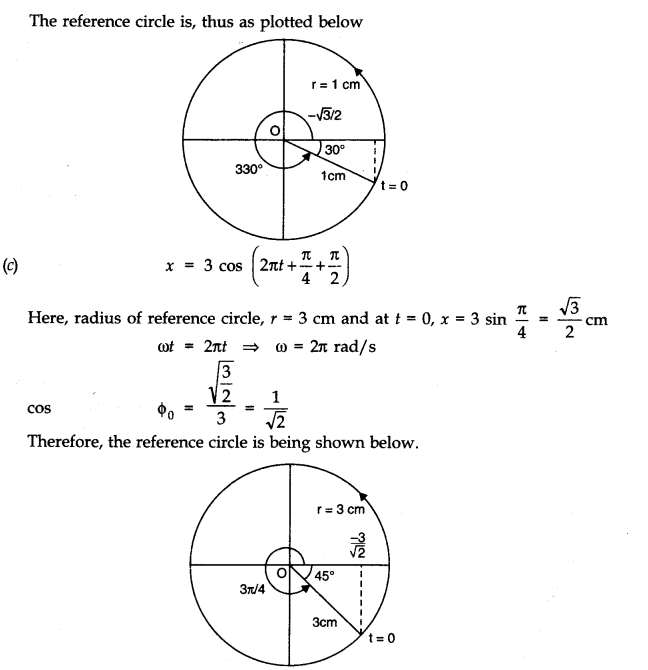
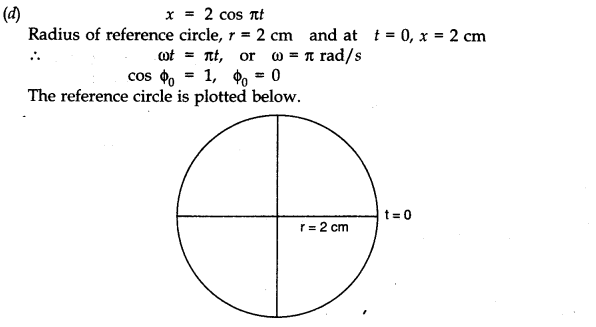
Question 14. 13. Figure (a) shows a spring of force constant k clamped rigidly at one end and a mass m attached to its free end. A force F applied at the free end stretches the spring. Figure (b) shows the same spring with both ends free and attached to a mass m at either end. Each end of the spring in Figure – (b) is stretched by the same force F.
(a) What is the maximum extension of the spring in the two cases?
(b) If the mass in Fig. (a) and the two masses in Fig. (b) are released free, what is the period of oscillation in each case?
Answer:
Question 14. 14. The piston in the cylinder head of a locomotive has a stroke (twice the amplitude) of 1.0 m. If the piston moves with simple harmonic motion with an angular frequency of 200 rev/min, what its maximum speed?
Answer:

SCHOOL OF LEARNING COACHING AGARTALA
CRACK NEET JEE TBJEE WBJEE IIT NIT ENTRANCE
WITH SUBJECT EXPERTS & DOCTORATE, GOLD MEDALIST
LOWEST FEE IN INDIA

Question 14. 15. The acceleration due to gravity on the surface of moon is 1.7 ms-2. What is the time period of a simple pendulum on the surface of moon if its time-period on the surface of Earth is 3.5 s? (g on the surface of Earth is 9.8 ms-2 .)
Answer:
Question 14. 16.
Answer:
(c) The wristwatch uses an electronic system or spring system to give the time, which does not change with acceleration due to gravity. Therefore, watch gives the correct time.
(d) During free fall of the cabin, the acceleration due to gravity is zero. Therefore, the frequency of oscillations is also zero i.e., the pendulum will not vibrate at all.
SCHOOL OF LEARNING COACHING AGARTALA
CRACK NEET JEE TBJEE WBJEE IIT NIT ENTRANCE
WITH SUBJECT EXPERTS & DOCTORATE, GOLD MEDALIST
LOWEST FEE IN INDIA
Question 14. 17. A simple pendulum of length l and having a bob of mass M is suspended in a car. The car is moving on a circular track of radius R with a uniform speed v. If the pendulum makes small oscillations in a radial direction about its equilibrium position, what will be its time period?
Answer: In this case, the bob of the pendulum is under the action of two accelerations.
Question 14. 18. A cylindrical piece of cork of density of base area A and height h floats in a liquid of density ρ1 . The cork is depressed slightly and then released. Show that the cork oscillates up and down simple harmonically with a period
where ρ is the density of cork. (Ignore damping due to viscosity of the liquid).
Answer:
Question 14. 19. One end of a U-tube containing mercury is connected to a suction pump and the other end to the atmosphere.
A small pressure difference is maintained between the two columns. Show that, when the suction pump is removed, the column of mercury in the U-tube executes simple harmonic motion.
Answer: The suction pump creates the pressure difference, thus mercury rises in one limb of the U-tube. When it is removed, a net force acts on the liquid column due to the difference in levels of mercury in the two limbs and hence the liquid column executes S.H.M. which can be expressed as:
Consider the mercury contained in a vertical U-tube upto the level P and Q in its two limbs.
Let P = density of the mercury.
L = Total length of the mercury column in both the limbs.
A = internal cross-sectional area of U-tube. m = mass of mercury in U-tube = LAP.
Assume, the mercury be depressed in left limb to F by a small distance y, then it rises by the same amount in the right limb to position Q’.
.’. Difference in levels in the two limbs = P’ Q’ = 2y.
:. Volume of mercury contained in the column of length 2y = A X 2y
.•. m – A x 2y x ρ.
If W = weight of liquid contained in the column of length 2y.
Then W = mg = A x 2y x ρ x g
This weight produces the restoring force (F) which tends to bring back the mercury to its equilibrium position.
SCHOOL OF LEARNING COACHING AGARTALA
CRACK NEET JEE TBJEE WBJEE IIT NIT ENTRANCE
WITH SUBJECT EXPERTS & DOCTORATE, GOLD MEDALIST
LOWEST FEE IN INDIA
Question 14. 20. An air chamber of volume V has a neck area of cross-section into which a ball of mass m just fits and can move up and down without any friction (Fig.). Shaw that when the ball is pressed down a little and released, it executes SHM. Obtain an expression for the time period of oscillations assuming pressure-volume variations of air to be isothermal.
Answer: Consider an air chamber of volume V with a long neck of uniform area of cross-section A, and a frictionless ball of mass m fitted smoothly in the neck at position C, Fig. The pressure of air below the ball inside the chamber is equal to the atmospheric pressure.
Increase the pressure on the ball by a little amount p, so that the ball is depressed to position D, where CD = y.
There will be decrease in volume and hence increase in pressure of air inside the chamber. The decrease in volume of the air inside the chamber, ΔV = Ay
Note. If the ball oscillates in the neck of chamber under isothermal conditions, thru E = P = picture of air inside the chamber, when ball is at equilibrium position. If the ball oscillate in the neck of chamber under adiabatic conditions, then E = gP. where g = Cp/Cv.
Question 14. 21. You are riding an automobile of mass 3000 kg. Assuming that you are examining the oscillation characteristics of its suspension system. The suspension sags 15 cm when the entire automobile is placed on it. Also, the amplitude of oscillation decreases by 50% during one complete oscillation. Estimate the values of (a) the spring constant k and (b) the damping constant b for the spring and shock absorber system of one wheel, assuming that each wheel supports 750 kg. g = 10 m/s2.
Answer:
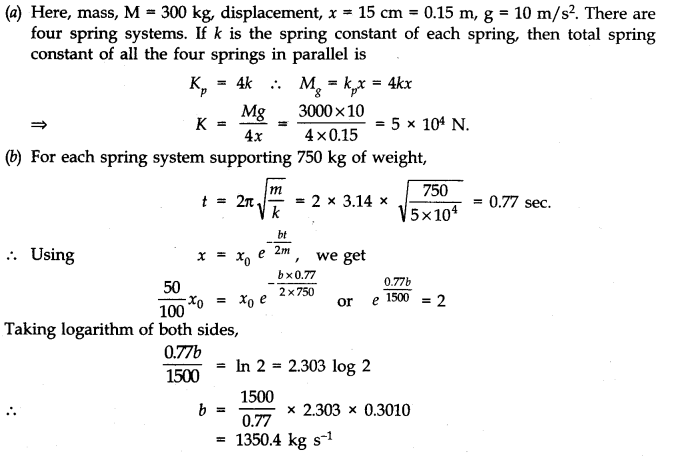
SCHOOL OF LEARNING COACHING AGARTALA
CRACK NEET JEE TBJEE WBJEE IIT NIT ENTRANCE
WITH SUBJECT EXPERTS & DOCTORATE, GOLD MEDALIST
LOWEST FEE IN INDIA
Question 14. 22. Show that for a particle in linear SHM the average kinetic energy over a period of oscillation equals the average potential energy over the same period.
Answer: Let the particle executing SHM starts oscillating from its mean position. Then displacement equation is
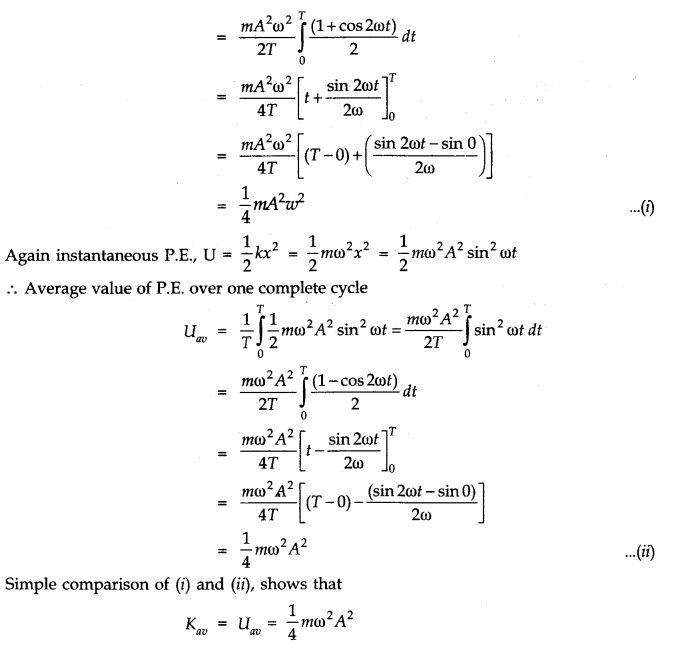
Question 14. 23. A circular disc, of mass 10 kg, is suspended by a wire attached to its centre. The wire is twisted by rotating the disc and released. The period of torsional oscillations of found to be 1.5 s. The radius of the disc is 15 cm. Determine the torsional spring constant of the wire. (Torsional spring constant) a is defined by the relation J = – αθ, where J is the restoring couple and θ the angle of twist).
Answer:
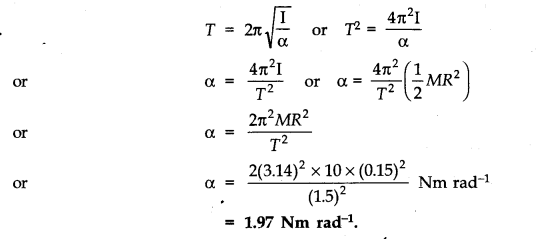
SCHOOL OF LEARNING COACHING AGARTALA
CRACK NEET JEE TBJEE WBJEE IIT NIT ENTRANCE
WITH SUBJECT EXPERTS & DOCTORATE, GOLD MEDALIST
LOWEST FEE IN INDIA
Question 14. 24. A body describes simple harmonic motion with an amplitude of 5 cm and a period of 0.2 s. Find the acceleration and velocity of the body when the displacement is (a) 5 cm (b) 3 cm (c) 0 cm
Answer:
Question 14. 25. A mass attached to a spring is free to oscillate, with angular velocity w, in a horizontal plane without friction or damping. It is pulled to a distance x0 and pushed towards the centre with a velocity v0 at time t = 0. Determine the amplitude of the resulting oscillations in terms of the parameters w, x0 and v0.
Answer:
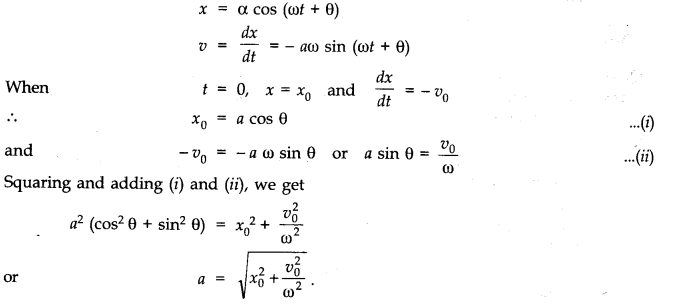
SCHOOL OF LEARNING COACHING AGARTALA
CRACK NEET JEE TBJEE WBJEE IIT NIT ENTRANCE
WITH SUBJECT EXPERTS & DOCTORATE, GOLD MEDALIST
LOWEST FEE IN INDIA
Class 11 Physics Chapter 15 Waves:
Section Name Topic Name
15 Waves
15.1 Introduction
15.2 Transverse and longitudinal waves
15.3 Displacement relation in a progressive wave
15.4 The speed of a travelling wave
15.5 The principle of superposition of waves
15.6 Reflection of waves
15.7 Beats
15.8 Doppler effect
ক্লাস 11 পদার্থবিদ্যা অধ্যায় 15 তরঙ্গ:
SCHOOL OF LEARNING COACHING AGARTALA
CRACK NEET JEE TBJEE WBJEE IIT NIT ENTRANCE
WITH SUBJECT EXPERTS & DOCTORATE, GOLD MEDALIST
LOWEST FEE IN INDIA
বিভাগের নাম বিষয়ের নাম
15 তরঙ্গ
15.1 ভূমিকা
15.2 অনুপ্রস্থ এবং অনুদৈর্ঘ্য তরঙ্গ
15.3 একটি প্রগতিশীল তরঙ্গে স্থানচ্যুতি সম্পর্ক
15.4 একটি ভ্রমণ তরঙ্গের গতি
15.5 তরঙ্গের সুপারপজিশনের নীতি
15.6 তরঙ্গের প্রতিফলন
15.7 বিট
15.8 ডপলার প্রভাব
Question 15. 1. A string of mass 2.50 kg is under a tension of 200 N. The length of the stretched string is 20.0 m. If the transverse jerk is struck at one end of the string, how long does the disturbance take to reach the other end?
Answer:
Question 15. 2. A stone dropped from the top of a tower of height 300 m high splashes into the water of a pond near the base of the tower. When is the splash heard at the top given that the speed of sound in air is 340 ms-1 ? (g = 9.8 ms-2 )
Answer: Here, h = 300 m, g = 9.8 ms-2 and velocity of sound, v = 340 ms-1 Let t1 be the time taken by the stone to reach at the surface of pond.
Question 15. 3. A steel wire has a length of 12.0 m and a mass of 2.10 kg. What should be the tension in the wire so that speed of a transverse wave on the wire equals the speed of sound in dry air at 2 0°C = 340 ms-1.
Answer:
Question 15. 4.
Answer:
SCHOOL OF LEARNING COACHING AGARTALA
CRACK NEET JEE TBJEE WBJEE IIT NIT ENTRANCE
WITH SUBJECT EXPERTS & DOCTORATE, GOLD MEDALIST
LOWEST FEE IN INDIA
Question 15. 5. You have learnt, that a travelling wave in one dimension is represented by a function y = f(x, t), where x and t must appear in the combination x-vtorx + vt i.e., y =f (x ± vt). Is the converse true? That is, does every function of (x – vt) or (x + vt) represent a travelling wave? Examine, if the following functions for y can possibly represent a travelling wave?
Answer: No, the converse is not true. The basic requirement for a wave function to represent a travelling wave is that for all values of x and t, wave function must have a finite value. Out of the given functions for y none satisfies this condition. Therefore, none can represent a travelling wave.
Question 15. 6. A bat emits ultrasonic sound of frequency 1000 kHz in air. If this sound meets a water surface, what is the wavelength of (a) the reflected sound, (b) the transmitted sound? Speed of sound in air = 340 ms-1 and in water = 1486 ms-1.
Answer:
Question 15. 7. A hospital uses an ultrasonic scanner to locate tumours in a tissue. What is the wavelength of sound in a tissue in which the speed of sound is 1.7 km s-1? The operating frequency of the scanner is 4.2 MHz.
Answer: Here speed of sound => υ = 1.7 km s-1 = 1700 ms-1 and
frequency υ= 4.2 MHz = 4.2 x 106 Hz
.’. Wavelength, A = υ/V = 1700/(4.2 x 106) =4.1 x 10-4 m.
Question 15. 8. A transverse harmonic wave on a string is described by
y(x, t) = 3.0 sin (36 t + 0.018 x + π/4)
where x and y are in cm and t in s. The positive direction of x is from left to right.
(a) Is this a travelling wave or a stationary wave? If it is travelling, what are the speed and direction of its propagation ?
(b) What are its amplitude and frequency?
(c) What is the initial phase at the origin?
(d) What is the least distance between two successive crests in the wave?
Answer:

Question 15. 9. For the wave described in Exercise 8, plot the displacement (y) versus (t) graphs for x = 0, 2 and 4 cm. What are the shape of these graphs? In which aspects does the oscillatory motion in travelling wave differ from one point to another : amplitude, frequency or phase?SCHOOL OF LEARNING COACHING AGARTALA
CRACK NEET JEE TBJEE WBJEE IIT NIT ENTRANCE
WITH SUBJECT EXPERTS & DOCTORATE, GOLD MEDALIST
LOWEST FEE IN INDIA
Answer: The transverse harmonic wave is
Using the values of t and y (as in the table), a graph is plotted as under The graph obtained is sinusoidal.
Similar graphs are obtained for y x = 2 cm and x = 4 cm. The (incm) oscillatory motion in the travelling wave only differs in respect of phase. Amplitude and frequency of oscillatory motion remains the same in all the cases.
Question 15. 10. For the travelling harmonic wave
y(x, t) = 2.0 cos 2π (10t – 0.0080x + 0.35)
where x and y are in cm and t in s. Calculate the phase difference between oscillatory motion of two points separated by a distance of
(a) 4 m (b) 0.5 m
(c) λ/2 (d) 3λ/4.
Answer:
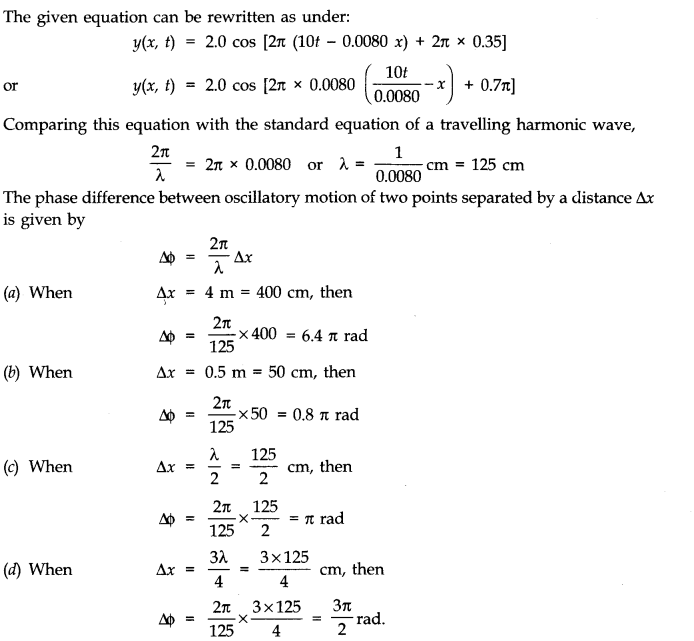
SCHOOL OF LEARNING COACHING AGARTALA
CRACK NEET JEE TBJEE WBJEE IIT NIT ENTRANCE
WITH SUBJECT EXPERTS & DOCTORATE, GOLD MEDALIST
LOWEST FEE IN INDIA
Question 15. 11. The transverse displacement of a string (clamped at its two ends) is given by y(x, t) = 0.06 sin 2π /3 x cos (120π t)
where x, y are in m and t in s. The length of the string is 1.5 m and its mass is 3 x 10-2 kg. Answer the following:
(i) Does the function represent a travelling or a stationary wave?
(ii) Interpret the wave as a superimposition of two waves travelling in opposite directions. What are the wavelength, frequency and speed of propagation of each wave?
(iii) Determine the tension in the string.
Answer: The given equation is
y(x, t) = 0.06 sin 2π/3 x cos 120 πt …(1)
(i)As the equation involves harmonic functions of x and t separately, it represents a stationary wave.
Question 15. 12. (i) For the wave on a string described in Question 11, do all the points on the string oscillate with the same (a) frequency, (b) phase, (c) amplitude? Explain your answers, (ii) What is the amplitude of a point 0.375 m away from one end?
Answer: (i) For the wave on the string described in questions we have seen that l = 1.5 m and λ = 3 m. So, it is clear that λ = λ /2 and for a string clamped at both ends, it is possible only when both ends behave as nodes and there is only one antinode in between i.e., whole string is vibrating in one segment only.
(a) Yes, all the sring particles, except nodes, vibrate with the same frequency v = 60 Hz.
(b) As all string particles lie in one segment, all of them are in same phase.
(c) Amplitude varies from particle to particle. At antinode, amplitude = 2A = 0.06 m. It gradually falls on going towards nodes and at nodes, and at nodes, it is zero.
(ii) Amplitude at a point x = 0.375 m will be obtained by putting cos (120 πt) as + 1 in the wave equation.
Question 15. 13. Given below are some functions of x and t to represent the displacement (transverse or longitudinal) of an elastic wave. State which of these represent (i) a travelling wave, (ii) a stationary wave or (iii) none at all
Answer: (a) It represents a stationary wave.
(b) It does not represent either a travelling wave or a stationary wave.
(c) It is a representation for the travelling wave.
(d) It is a superposition of two stationary wave.
Question 15. 14. A wire stretched between two rigid supports vibrates in its fundamental mode with a frequency of 45 Hz. The mass of the wire is 3.5 x 10-2 kg and its linear mass density is 4.0 x 10-2 kg m-3SCHOOL OF LEARNING COACHING AGARTALA
CRACK NEET JEE TBJEE WBJEE IIT NIT ENTRANCE
WITH SUBJECT EXPERTS & DOCTORATE, GOLD MEDALIST
LOWEST FEE IN INDIA
. What is (a) the speed of a transverse wave on the string, and (b) the tension in the string?
Answer:
Question 15. 15. A metre-long tube open at one end, with a movable piston at the other end, shows resonance with a fixed frequency source (a turning fork of frequency 340 Hz) when the tube length is 25.5 cm or 79.3 cm. Estimate the speed of sound in air at the temperature of the experiment. The edge effect may be neglected.
Answer:
[Approximation has been used because edge effect is being ignored. Moreover, we know that in the case of a closed organ pipe, the second resonance length is three times the first resonance length.]
On simplification, n = 1
Now, (2n-1)υ/4l1 = 340. Substituting values
(2 x 1 -1) υ x 100/4 x 25.5 = 340 or υ =346.8 ms-1
Question 15. 16. A steel rod 100 cm long is clamped at its middle. The fundamental frequency of longitudinal vibrations of the rod is given to be 2.53 k Hz. What is the speed of sound in steel?
Answer: Here, L = 100 cm = 1m, v = 2.53 k Hz = 2.53 x 103 Hz
When the rod is clamped at the middle, then in the fundamental mode of vibration of the rod, a node is formed at the middle and ant mode is formed at each end.
Question 15. 17. A pipe 20 cm long is closed at one end. Which harmonic mode of the pipe is resonantly excited by a 430 Hz source? Will the same source be in resonance with the pipe if both ends are open? (speed of sound in air is 340 ms-1).
Answer: Here length of pipe, 1 = 20 cm = 0.20 m, frequency v = 430 Hz and speed of sound in air υ = 340 ms-1
Question 15. 18. Two sitar strings A and B playing the note ‘Ga’ are slightly out of tune and produce beats of frequency 6Hz. The tension in the string A is slightly reduced and the beat frequency is found to reduce to 3Hz. If the original frequency of A is 324 Hz, what is the frequency of B?
Answer: Let υ1 and υ2 be the frequencies of strings A and B respectively.
Then, υ1 = 324 Hz, υ2 = ?
Number of beats, b = 6
υ2 = υ1 ± b = 324 ± 6 !.e., υ2 = 330 Hz or 318 Hz
Since the frequency is directly proportional to square root of tension, on decreasing the tension in the string A, its frequency υ1 will be reduced i.e., number of beats will increase if υ2 = 330 Hz. This is not so because number of beats become 3.
Therefore, it is concluded that the frequency υ2 = 318 Hz. because on reducing the tension in the string A, its frequency may be reduced to 321 Hz, thereby giving 3 beats with υ2 = 318 Hz.
Question 15. 19. Explain why (or how):
(a) in a sound wave, a displacement node is a pressure antinode and vice versa.
(b) bats can ascertain distances, directions, nature and sizes of the obstacles without any “eyes”.
(c) a violin note and sitar note may have the same frequency, yet we can distinguish between the two notes.
(d) solids can support both longitudinal and transverse waves, but only longitudinal waves can propagate in gases, and
(e) the shape of a pulse gets distorted during propagation in a dispersive medium.
Answer: (a) In a sound wave, a decrease in displacement i.e., displacement node causes an increase in the pressure there i.e., a pressure antinode is formed. Also, an increase in displacement is due to the decrease in pressure.
(b) Bats emit ultrasonic waves of high frequency from their mouths. These waves after being reflected back from the obstacles on their path are observed by the bats. These waves give them an idea of distance, direction, nature and size of the obstacles.
(c) The quality of a violin note is different from the quality of sitar. Therefore, they emit different harmonics which can be observed by human ear and used to differentiate between the two notes.
(d) This is due to the fact that gases have only the bulk modulus of elasticity whereas solids have both, the shear modulus as well as the bulk modulus of elasticity.
(e) A pulse of sound consists of a combination of waves of different wavelength. In a dispersive medium, these waves travel with different velocities giving rise to the distortion in the wave.
Question 15. 20. A train, standing at the outer signal of a railway station blows a whistle of frequency 400 Hz in still air. (i) What is the frequency of the whistle for a platform observer when the train (a) approaches the platform with a speed of 10 ms~1. (b) recedes from the platform with a speed of 10 ms-1(ii) What is the speed of sound in each case? The speed of sound in still air can be taken as 340 ms-1 .
Answer: Frequency of whistle, v = 400 Hz; speed of sound, υ= 340 ms-1 speed of train, υs= 10 ms1
(i) (a) When the train approaches the platform (i.e., the observer at rest),
(ii) The speed of sound in each case does not change.It is 340 ms-1 in each case.
Question 15. 21. A train, standing in a station-yard, blows a whistle of frequency 400 Hz in still air. The wind starts blowing in the direction from the yard to the station with a speed of 10 ms-1. What are the frequency, wavelength, and speed of sound for an observer standing on the station’s platform? Is the situation exactly identical to the case when the air is still and the observer runs towards the yard at a speed of 10 ms-1? The speed of sound in still air can be taken as 340 ms-1?
Answer:
Question 15. 22. A travelling harmonic wave on a string is described by y (x, t) = 7.5 sin (0.0050x + 12t + π /4)
(a) what are the displacement and velocity of oscillation of a point at x = 1 cm, and t = 1s? Is this velocity equal to the velocity of wave propagation?
(b) Locate the points of the string which have the same transverse displacement and velocity as the x = 1 cm point at t = 2s, 5s and 11s.
Answer:
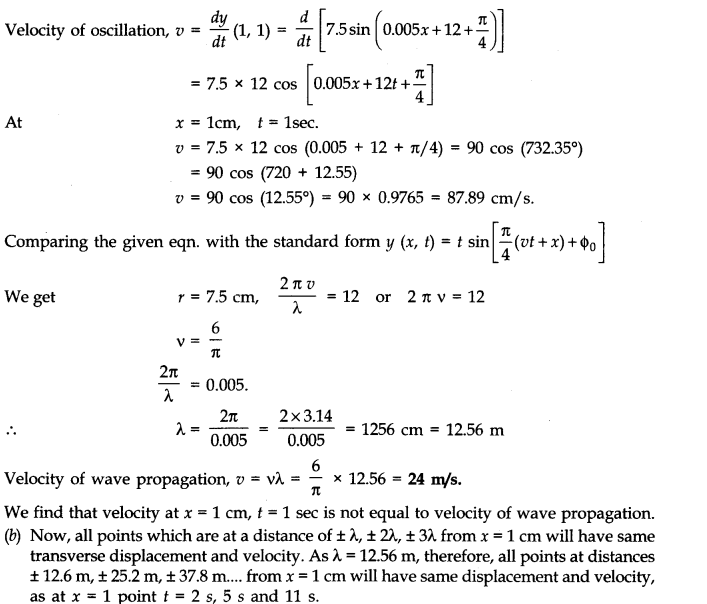
Question 15. 23. A narrow sound pulse (for example, a short pip by a whistle) is sent across a medium, (a) Does the pulse have a definite (i) frequency, (ii) wavelength, (iii) speed of propagation? (b) If the pulse rate is 1 after every 20 s, (that is the whistle is blown for a split of second after every 20 s), is the frequency of the note produced by the whistle equal to 1/20 or 0.05 Hz?
Answer: (a) In a non dispersive medium, the wave propagates with definite speed but its wavelength of frequency is not definite.
(b) No, the frequency of the note is not 1/20 or 0.50 Hz. 0.005 Hz is only the frequency ‘ of repetition of the pip of the whistle.
Question 15. 24. One end of a long string of linear mass density 8.0 x 10-3 kg m-1 is connected to an electrically driven tuning fork of frequency 256 Hz. The other end passes over a pulley and is tied to a pan containing a mass of 90 kg. The pulley end absorbs all the incoming energy so that reflected waves at this end have negligible amplitude. At t = 0, the left end (fork end) of the string x = 0 has zero transverse displacement (y = 0) and is moving along positive y-direction. The amplitude of the wave is 5.0 cm. Write down the transverse displacement y as function of x and t that describes the wave on the string.
Answer: Here, mass per unit length, g = linear mass density = 8 x 10-3 kg m-1;
Tension in the string, T = 90 kg = 90 x 9.8 N= 882 N;
Question 15. 25. A SONAR system fixed in a submarine operates at a frequency 40.0 kHz. An enemy submarine moves towards the SONAR with a speed of 360 km h-1. What is the frequency of sound reflected by the submarine? Take the speed of sound in water to be 1450 ms-1.
Answer:
Question 15. 26. Earthquakes generate sound waves inside the earth. Unlike a gas, the earth can experience both transverse (S) and longitudinal (P) sound waves. Typically the speed of S wave is about 4.0 km s-1 . A seismograph records P and S waves from an earthquake. The first P wave arrives 4 min before the first S wave. Assuming the waves travel in straight line, at what distance does the earthquake occur?
Answer: Here speed of S wave, υs = 4.0 km s-1 and speed of P wave, υp = 8.0 km s-1. Time gap between P and S waves reaching the resimograph, t = 40 min = 240 s.
Let distance of earthquake centre = sKm
Question 15. 27. A bat is flitting about in a cave, navigating via ultrasonic beeps. Assume that the sound emission frequency of the bat is 40 kHz. During one fast swoop directly toward a flat wall surface, the bat is moving at 0.03 times the speed of sound in air. What frequency does the bat hear reflected off the wall ?
Answer: Here, the frequency of sound emitted by the bat, υ = 40 kHz. Velocity of bat, υs = 0.03 υ, where υ is velocity of sound. Apparent frequency of sound striking the wall
SCHOOL OF LEARNING COACHING AGARTALA
CRACK NEET JEE TBJEE WBJEE IIT NIT ENTRANCE
WITH SUBJECT EXPERTS & DOCTORATE, GOLD MEDALIST
LOWEST FEE IN INDIA
CLASS 12 TBSE CBSE NEET JEE ADMISSION 2024
LLB BBA CUET TPSC COACHING
ALL SUBJECTS IN ONE CLASSROOM
CLASS STARTS 1st April 2023
Learn with Gold Medalist, Doctorate, NITian, Asst Professor, AIR-1, Toppers Exp. Guide
What We Guide: School Of Learning Coaching
TBSE CBSE ICSE Board from Class VI-XII, College, University Students (Arts, Science and Commerce), Drawing, Music also available here.
SCHOOL OF LEARNING COACHING AGARTALA
CRACK NEET JEE TBJEE WBJEE IIT NIT ENTRANCE
WITH SUBJECT EXPERTS & DOCTORATE, GOLD MEDALIST
LOWEST FEE IN INDIA
We also guide Common University Entrance Test (CUET)- All India Level Entrance for the admission in Colleges and Universities.
*BA BSC LLB BBA BA-BEd BSC-BEd, IMD
Medical (NEET) and Engineering(JEE) Entrance,TPSC-Civil Services, Competitive Exams guidance also done by the experts.
Guidance for Teaching Job: Tripura TET & CTET, UGC NET/SLET
Competitive Govt Job Coaching
Vocational Training Course
- Medical & Engineering Entrance
Board + NEET + TBJEE
JEE (Main & Advanced)
- CUET (Common University Entrance Test)
Degree College Entrance
Eligibility: Class 12 Final Students
Master Degree Entrance
Eligibility: Degree 5-6th Semester Final Students
B.A B.Sc B.Com (Pass & Honours) all subjects
M.A. M.SC, M.COM
- TPSC-COMPETITIVE EXAMS
- COMPETITIVE EXAMS
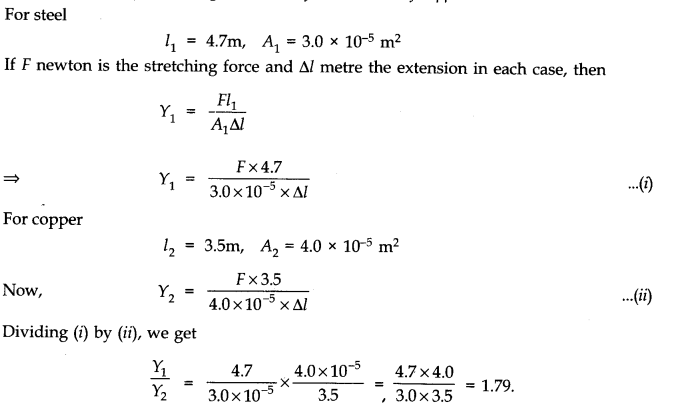
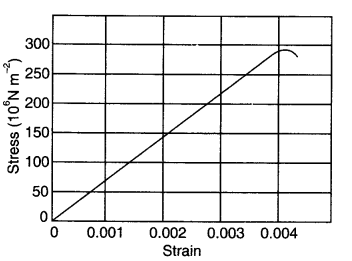
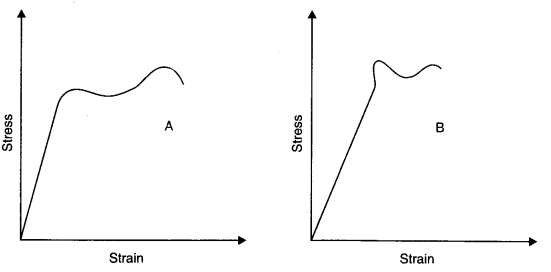
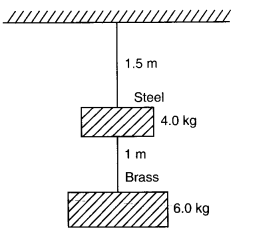
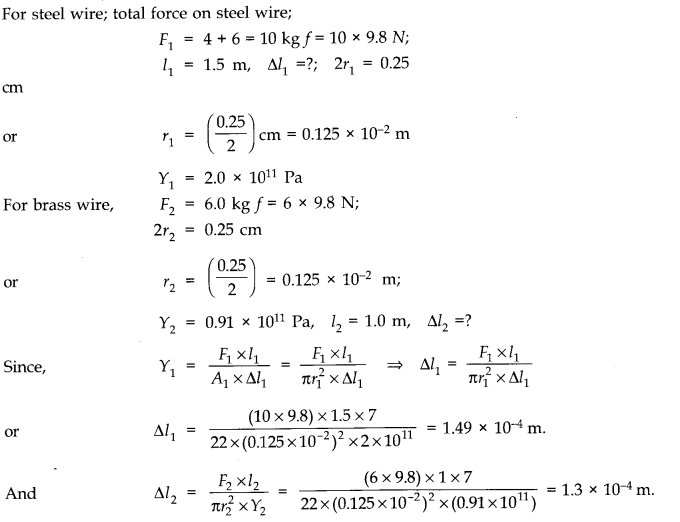
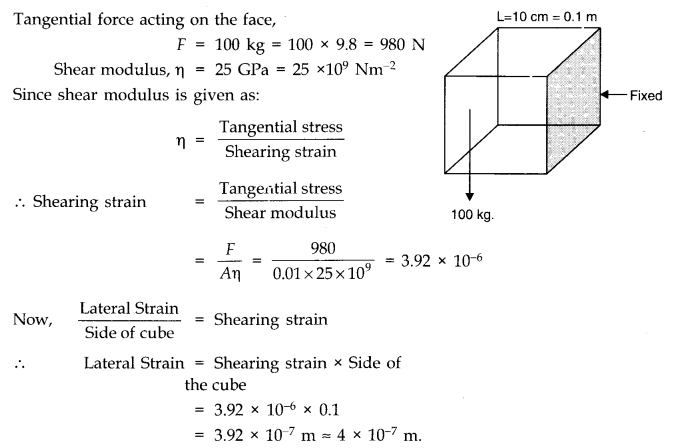
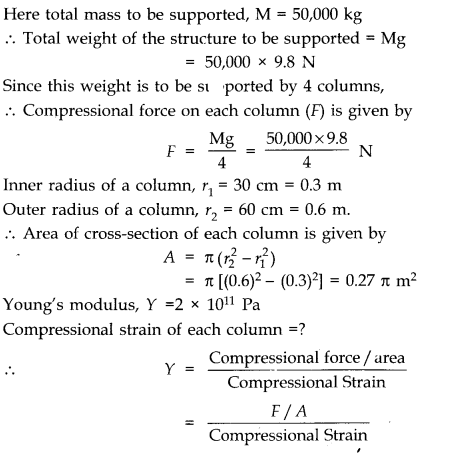
 SCHOOL OF LEARNING COACHING AGARTALA
CRACK NEET JEE TBJEE WBJEE IIT NIT ENTRANCE
WITH SUBJECT EXPERTS & DOCTORATE, GOLD MEDALIST
LOWEST FEE IN INDIA
SCHOOL OF LEARNING COACHING AGARTALA
CRACK NEET JEE TBJEE WBJEE IIT NIT ENTRANCE
WITH SUBJECT EXPERTS & DOCTORATE, GOLD MEDALIST
LOWEST FEE IN INDIA




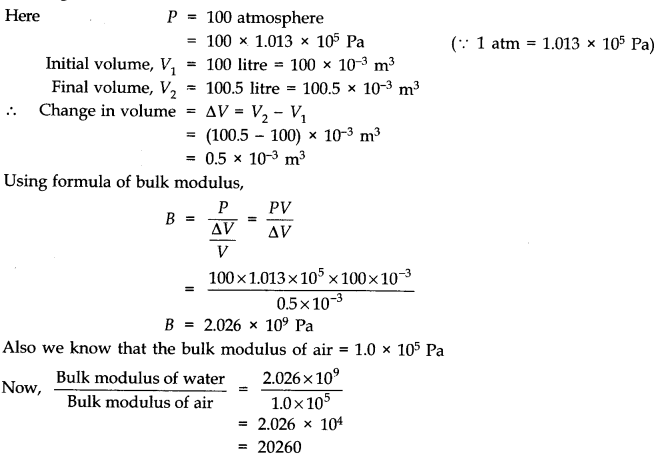
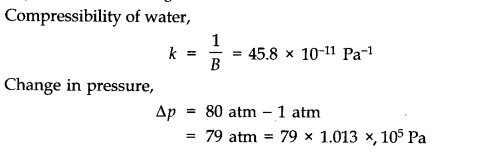
 SCHOOL OF LEARNING COACHING AGARTALA
CRACK NEET JEE TBJEE WBJEE IIT NIT ENTRANCE
WITH SUBJECT EXPERTS & DOCTORATE, GOLD MEDALIST
LOWEST FEE IN INDIA
SCHOOL OF LEARNING COACHING AGARTALA
CRACK NEET JEE TBJEE WBJEE IIT NIT ENTRANCE
WITH SUBJECT EXPERTS & DOCTORATE, GOLD MEDALIST
LOWEST FEE IN INDIA



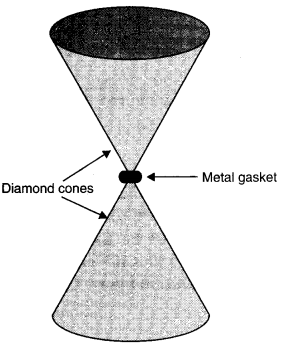
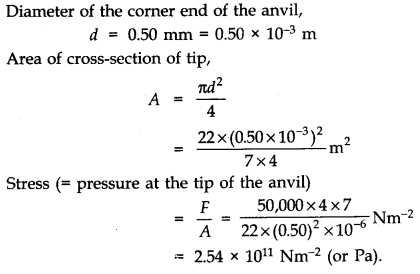
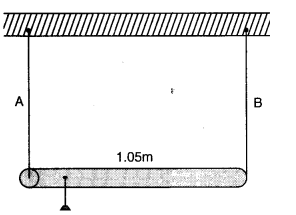
 SCHOOL OF LEARNING COACHING AGARTALA
CRACK NEET JEE TBJEE WBJEE IIT NIT ENTRANCE
WITH SUBJECT EXPERTS & DOCTORATE, GOLD MEDALIST
LOWEST FEE IN INDIA
SCHOOL OF LEARNING COACHING AGARTALA
CRACK NEET JEE TBJEE WBJEE IIT NIT ENTRANCE
WITH SUBJECT EXPERTS & DOCTORATE, GOLD MEDALIST
LOWEST FEE IN INDIA

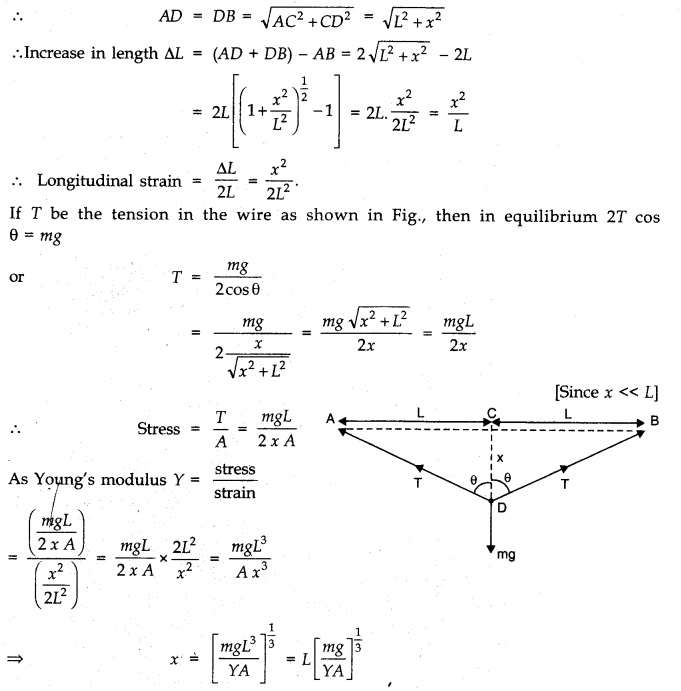

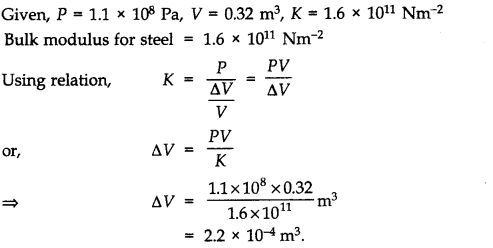
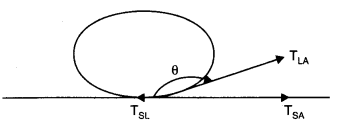
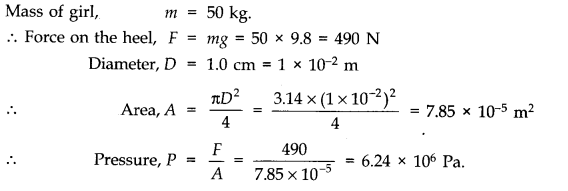


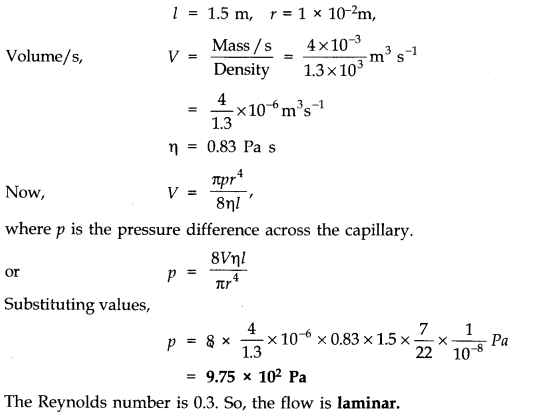




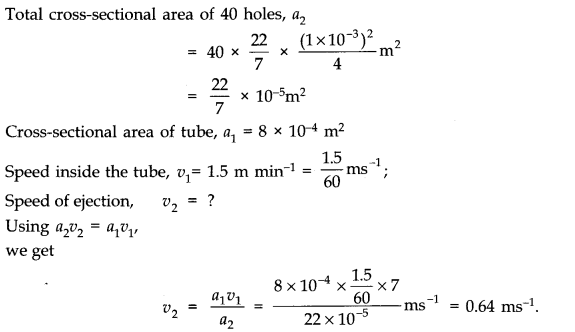
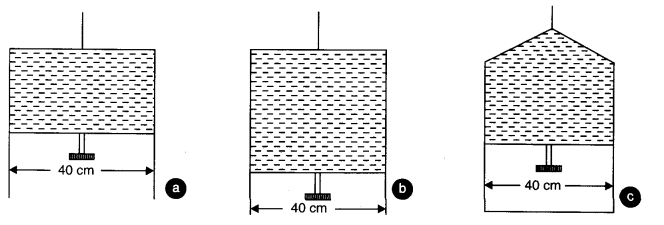

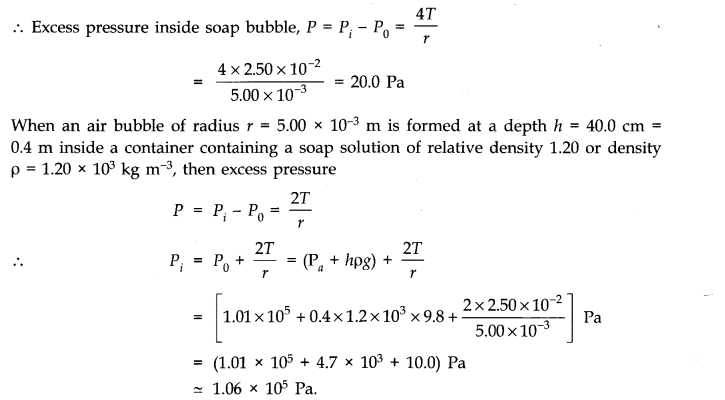

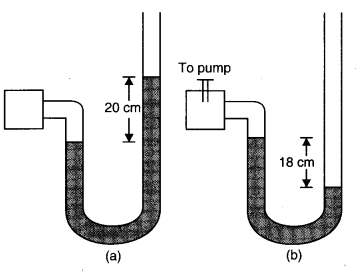
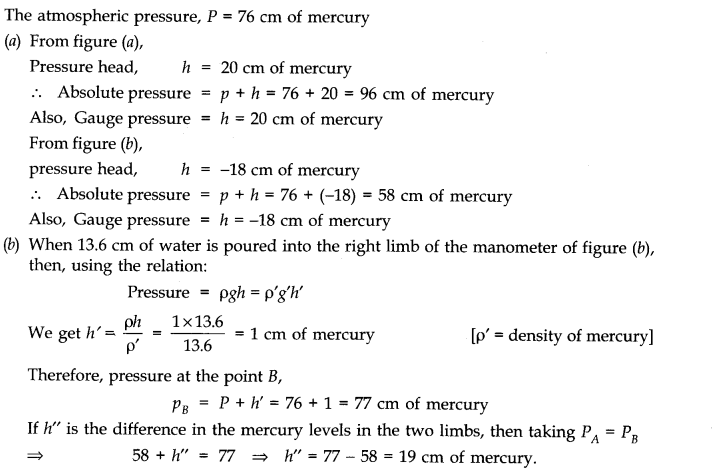

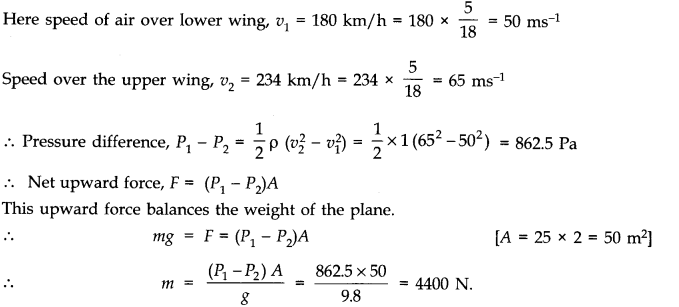


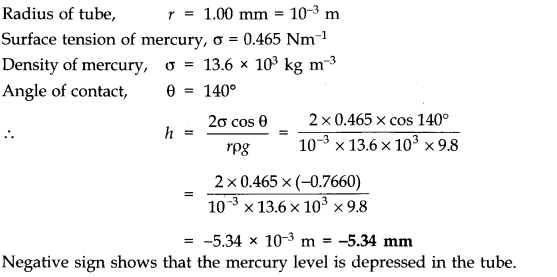
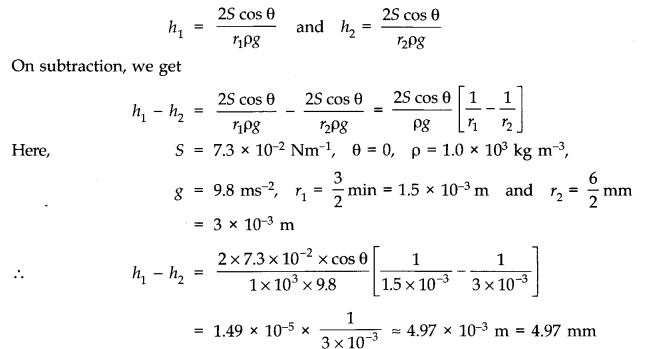
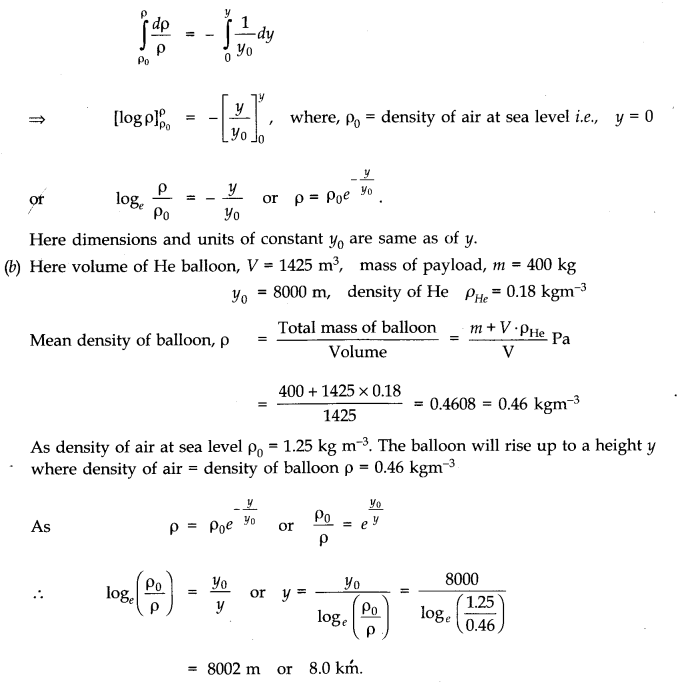
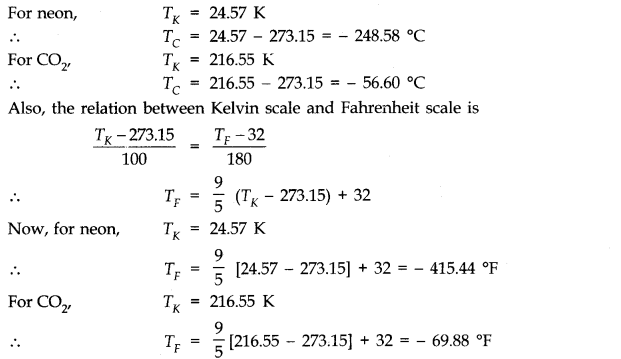
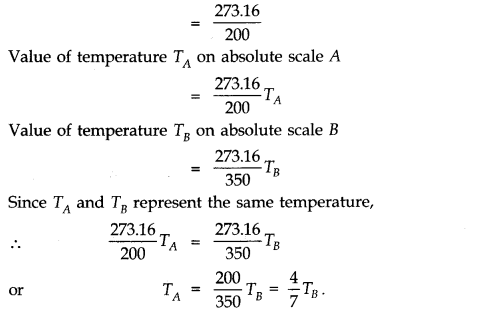
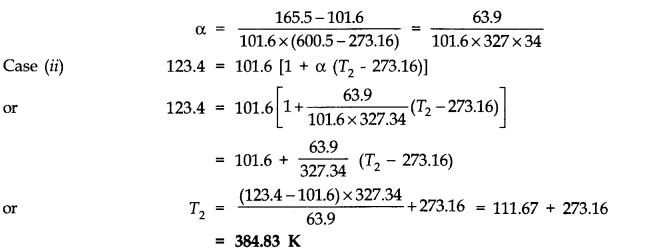



 SCHOOL OF LEARNING COACHING AGARTALA
CRACK NEET JEE TBJEE WBJEE IIT NIT ENTRANCE
WITH SUBJECT EXPERTS & DOCTORATE, GOLD MEDALIST
LOWEST FEE IN INDIA
SCHOOL OF LEARNING COACHING AGARTALA
CRACK NEET JEE TBJEE WBJEE IIT NIT ENTRANCE
WITH SUBJECT EXPERTS & DOCTORATE, GOLD MEDALIST
LOWEST FEE IN INDIA

 SCHOOL OF LEARNING COACHING AGARTALA
CRACK NEET JEE TBJEE WBJEE IIT NIT ENTRANCE
WITH SUBJECT EXPERTS & DOCTORATE, GOLD MEDALIST
LOWEST FEE IN INDIA
SCHOOL OF LEARNING COACHING AGARTALA
CRACK NEET JEE TBJEE WBJEE IIT NIT ENTRANCE
WITH SUBJECT EXPERTS & DOCTORATE, GOLD MEDALIST
LOWEST FEE IN INDIA
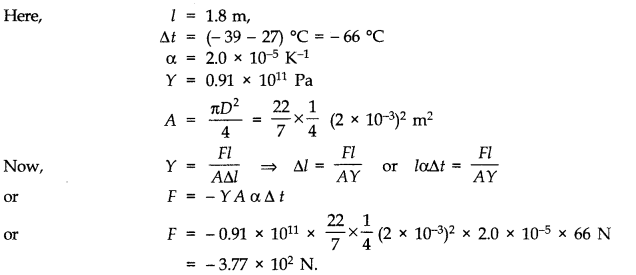
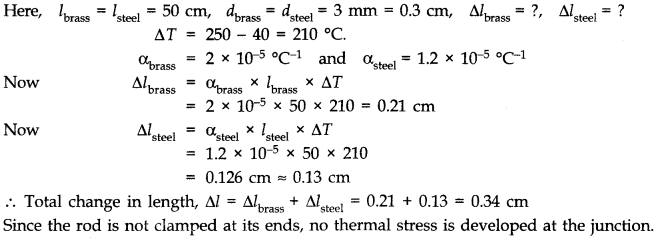
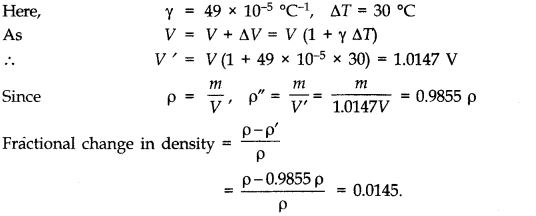
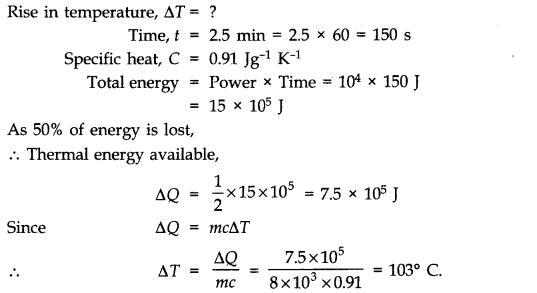
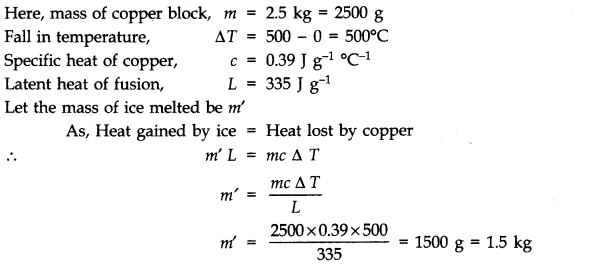

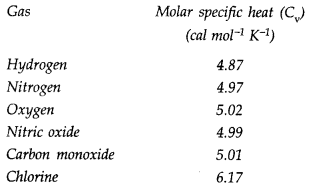
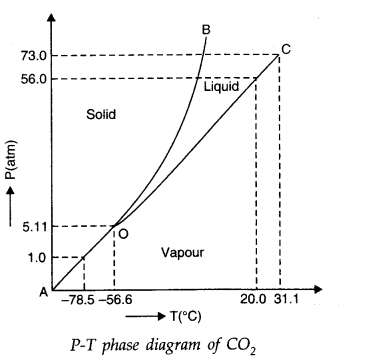
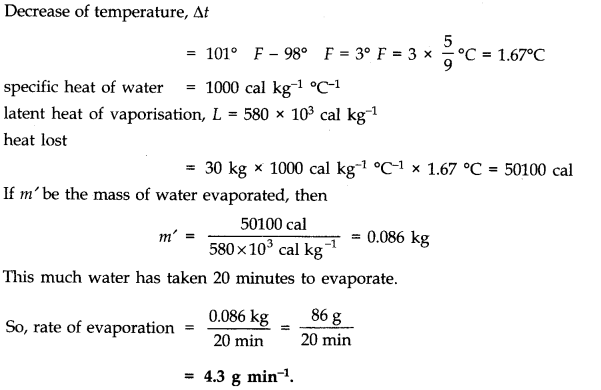


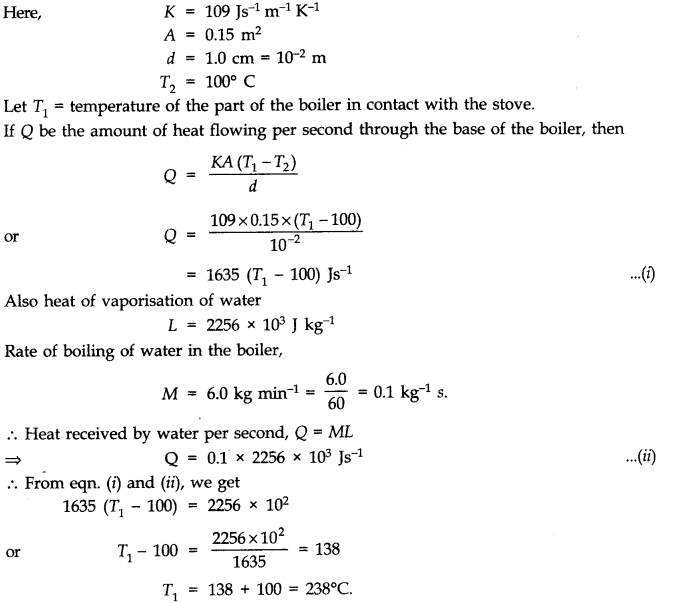
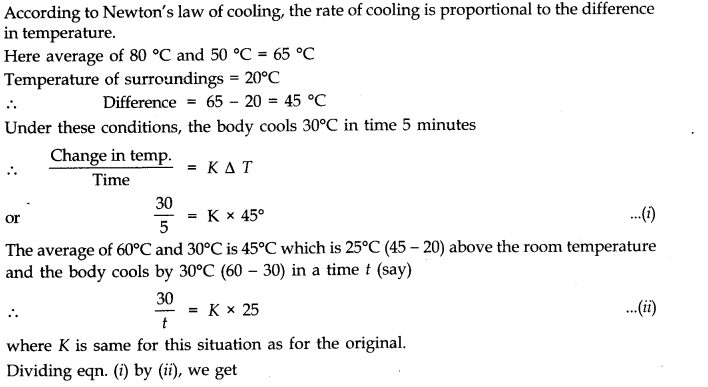


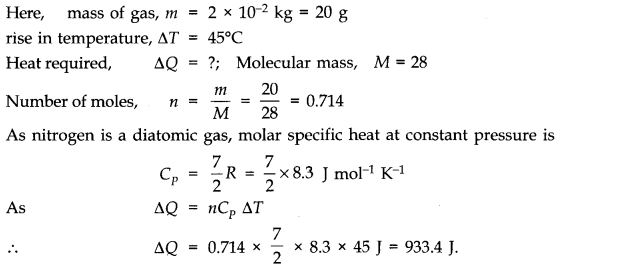

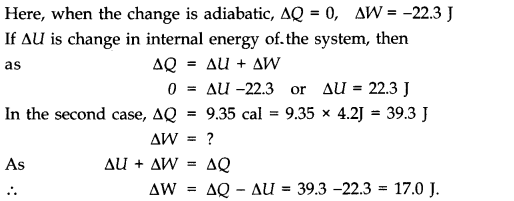



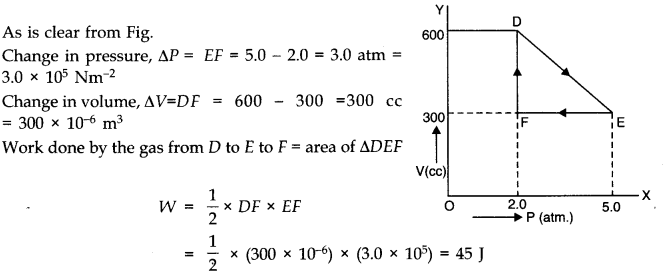

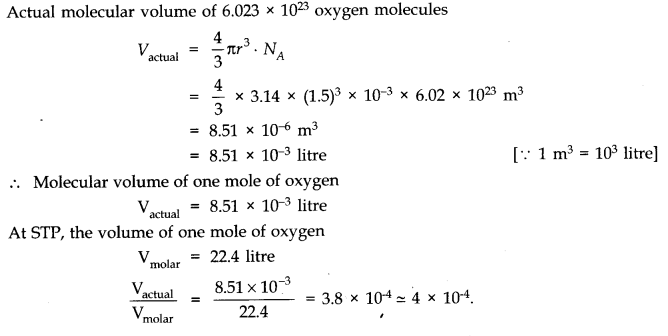

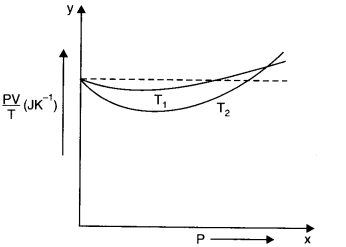
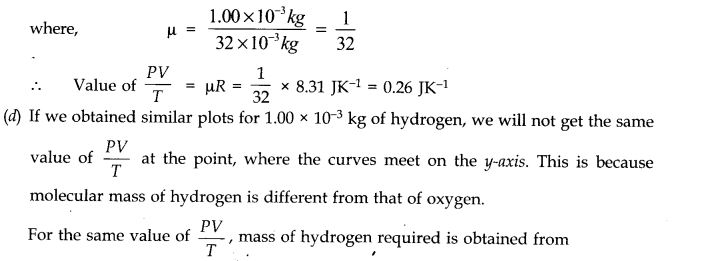

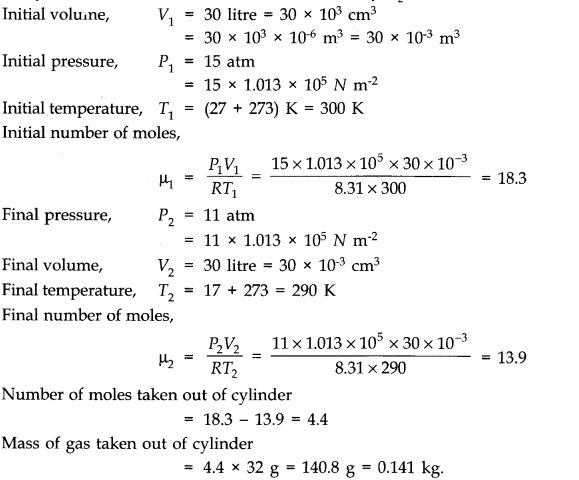
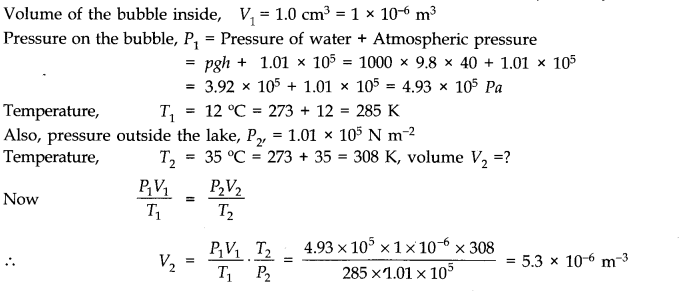
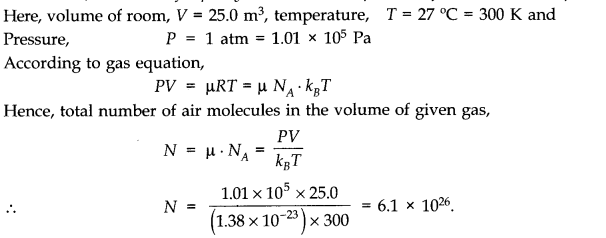
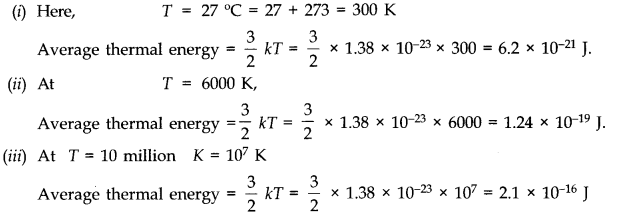


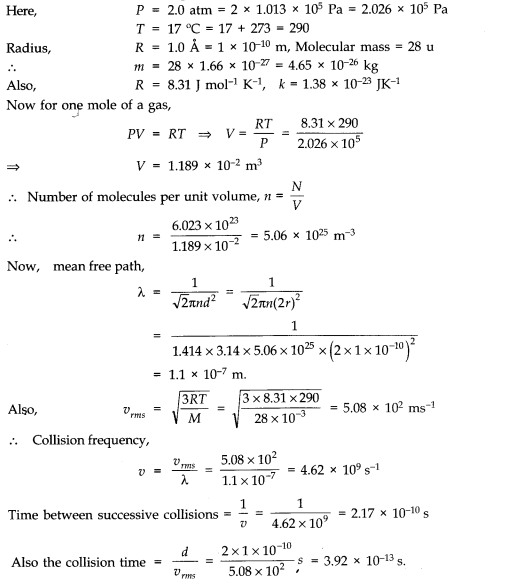
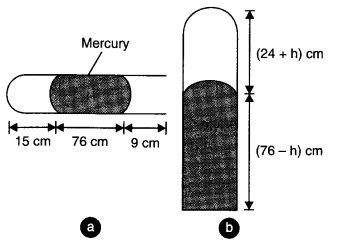

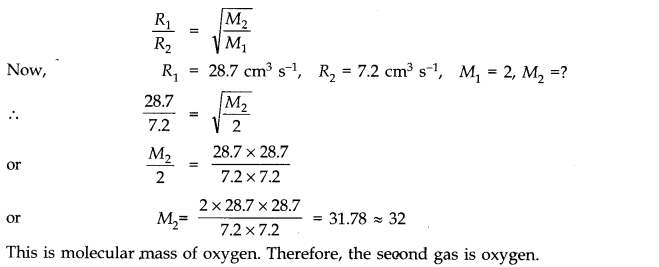
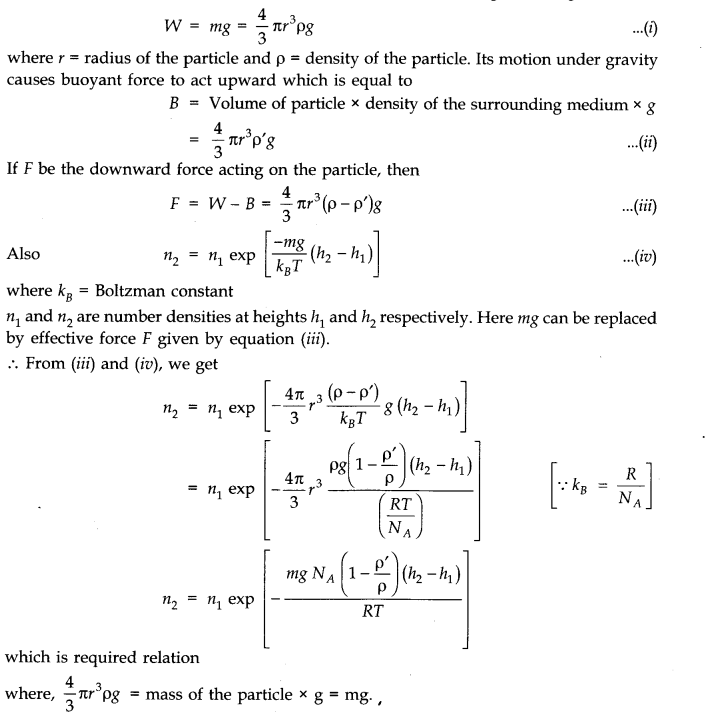

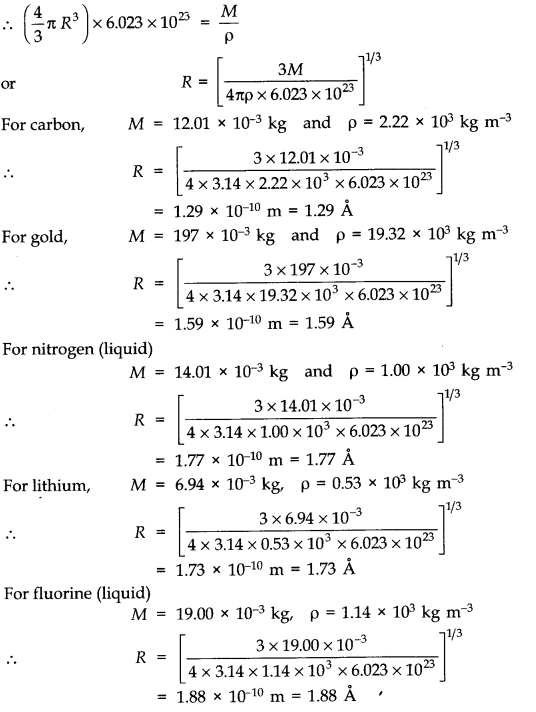
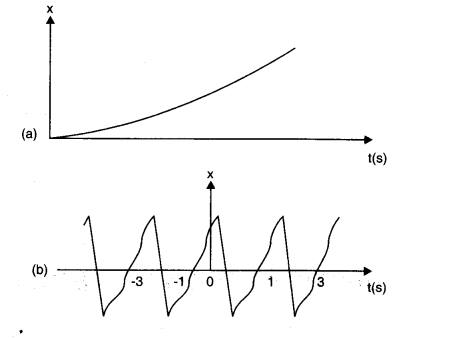
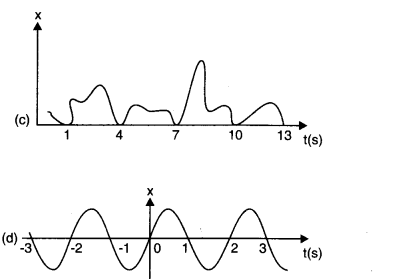
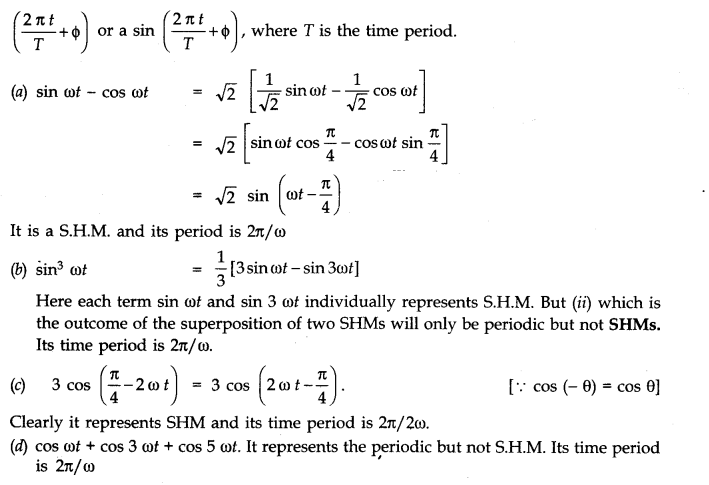

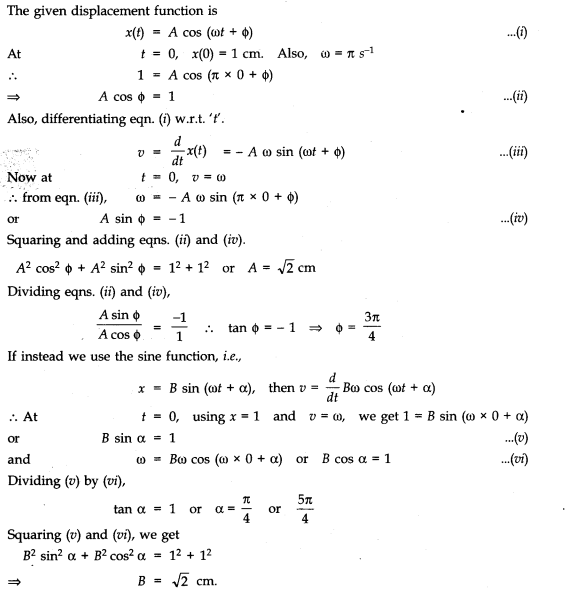


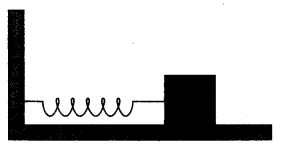
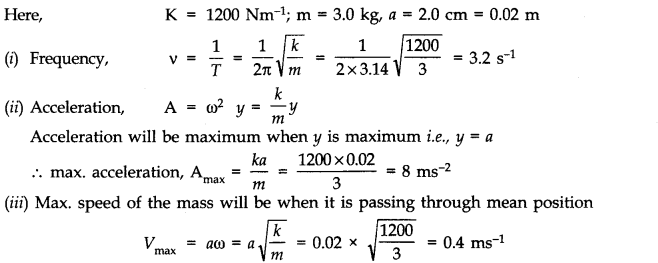


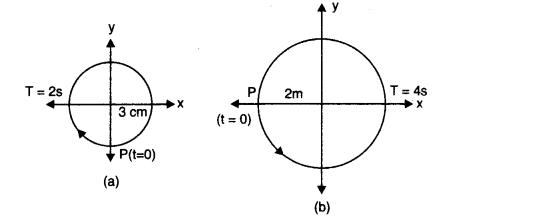
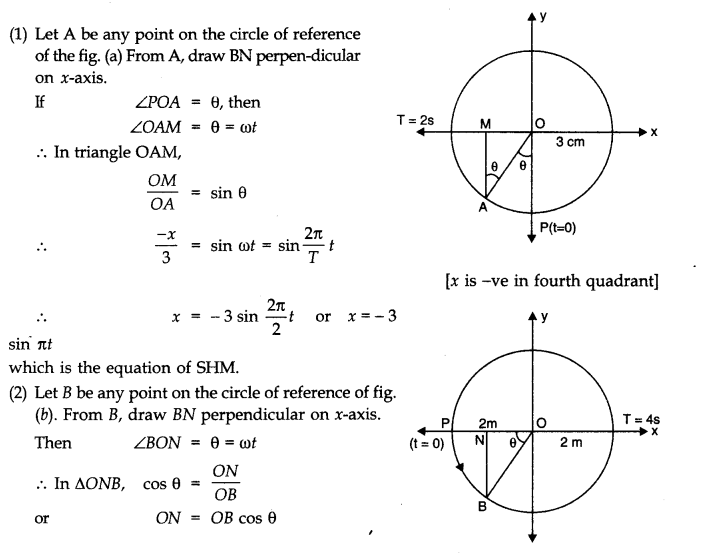

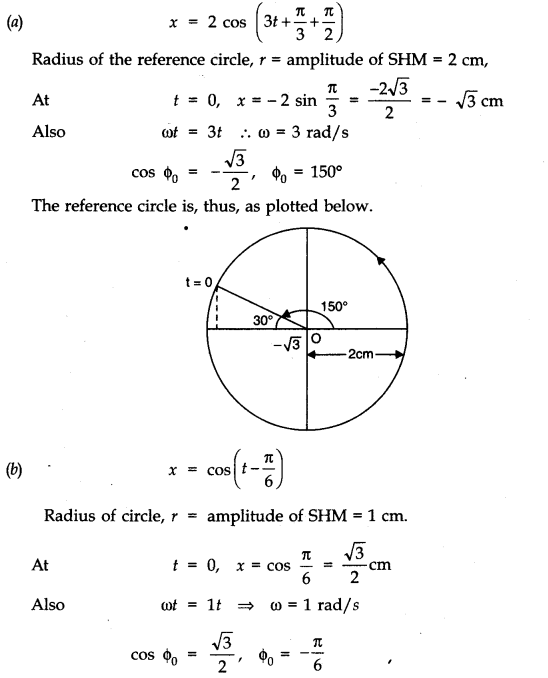



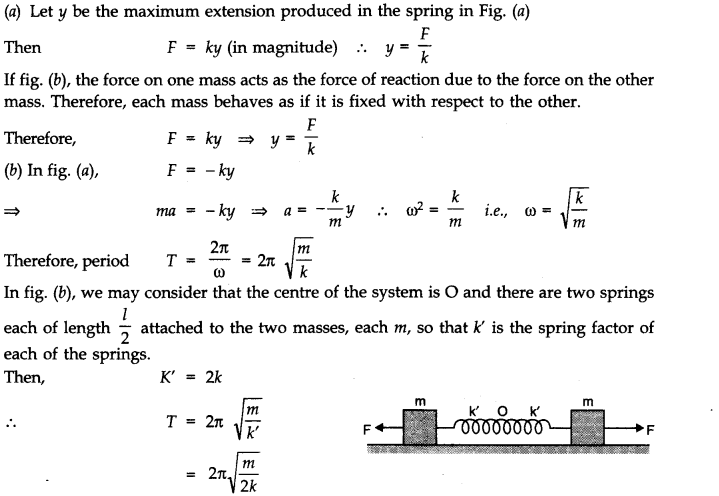
 SCHOOL OF LEARNING COACHING AGARTALA
CRACK NEET JEE TBJEE WBJEE IIT NIT ENTRANCE
WITH SUBJECT EXPERTS & DOCTORATE, GOLD MEDALIST
LOWEST FEE IN INDIA
SCHOOL OF LEARNING COACHING AGARTALA
CRACK NEET JEE TBJEE WBJEE IIT NIT ENTRANCE
WITH SUBJECT EXPERTS & DOCTORATE, GOLD MEDALIST
LOWEST FEE IN INDIA

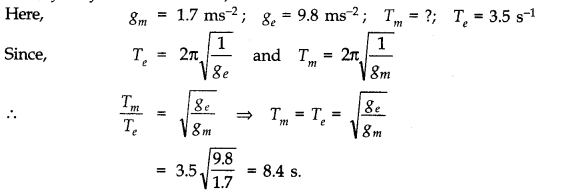
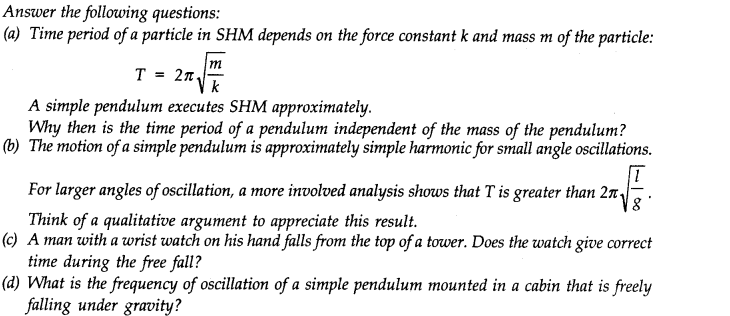
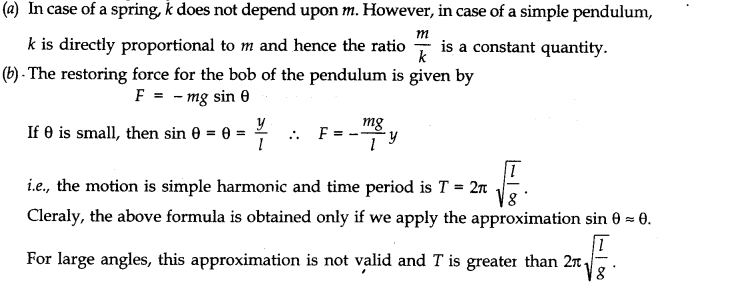
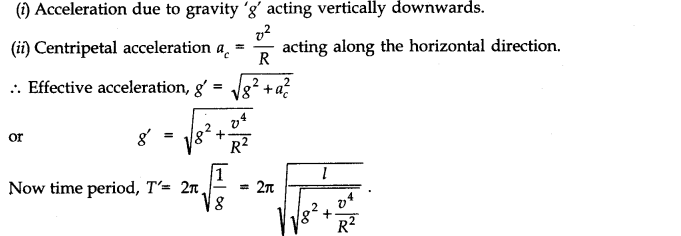

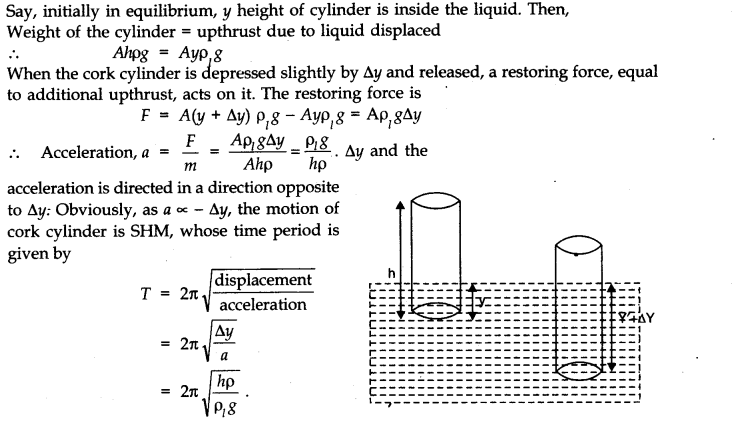
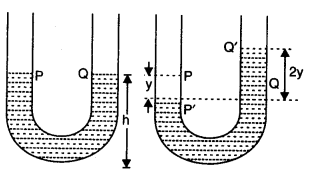
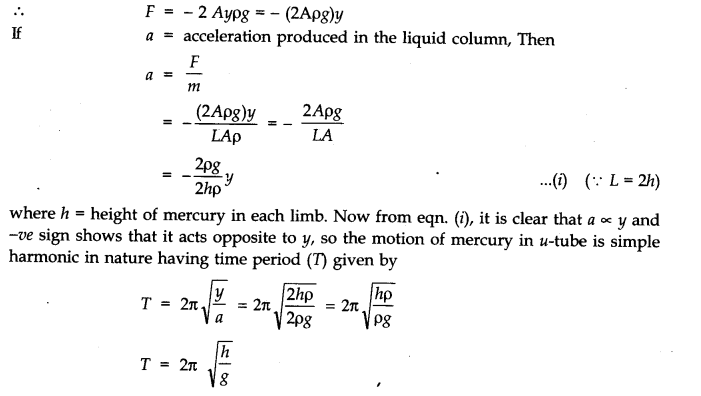
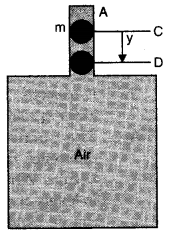
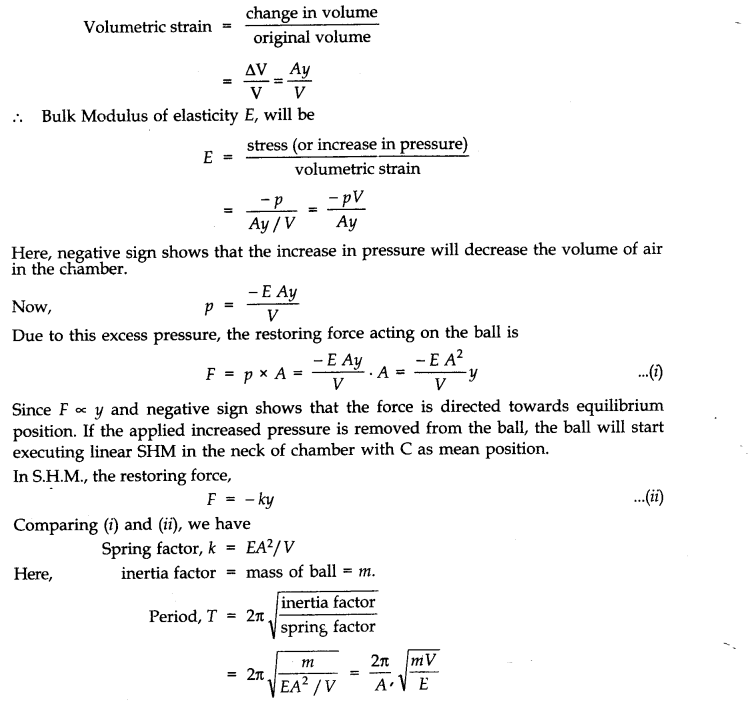

 SCHOOL OF LEARNING COACHING AGARTALA
CRACK NEET JEE TBJEE WBJEE IIT NIT ENTRANCE
WITH SUBJECT EXPERTS & DOCTORATE, GOLD MEDALIST
LOWEST FEE IN INDIA
SCHOOL OF LEARNING COACHING AGARTALA
CRACK NEET JEE TBJEE WBJEE IIT NIT ENTRANCE
WITH SUBJECT EXPERTS & DOCTORATE, GOLD MEDALIST
LOWEST FEE IN INDIA


 SCHOOL OF LEARNING COACHING AGARTALA
CRACK NEET JEE TBJEE WBJEE IIT NIT ENTRANCE
WITH SUBJECT EXPERTS & DOCTORATE, GOLD MEDALIST
LOWEST FEE IN INDIA
SCHOOL OF LEARNING COACHING AGARTALA
CRACK NEET JEE TBJEE WBJEE IIT NIT ENTRANCE
WITH SUBJECT EXPERTS & DOCTORATE, GOLD MEDALIST
LOWEST FEE IN INDIA
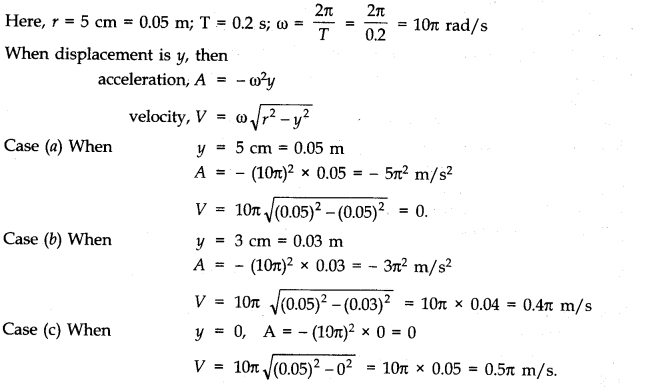
 SCHOOL OF LEARNING COACHING AGARTALA
CRACK NEET JEE TBJEE WBJEE IIT NIT ENTRANCE
WITH SUBJECT EXPERTS & DOCTORATE, GOLD MEDALIST
LOWEST FEE IN INDIA
SCHOOL OF LEARNING COACHING AGARTALA
CRACK NEET JEE TBJEE WBJEE IIT NIT ENTRANCE
WITH SUBJECT EXPERTS & DOCTORATE, GOLD MEDALIST
LOWEST FEE IN INDIA
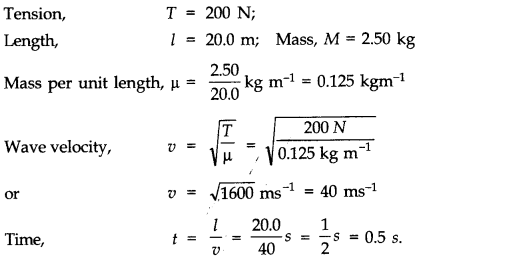
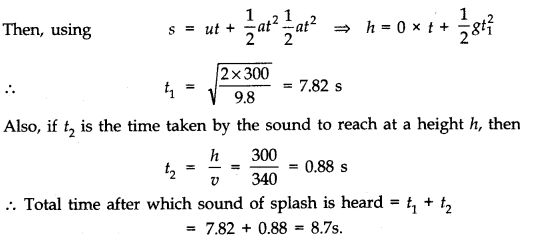
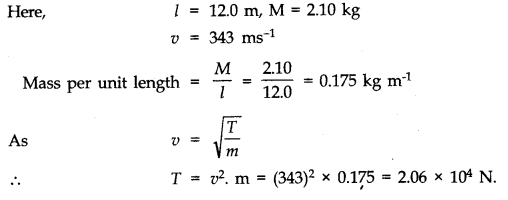

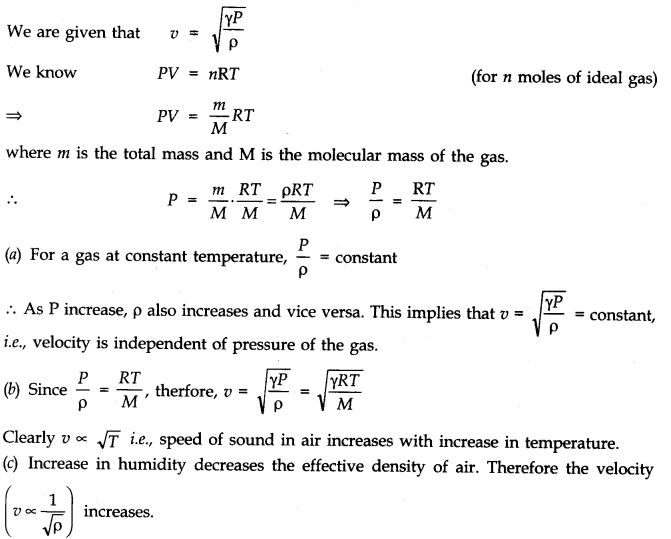

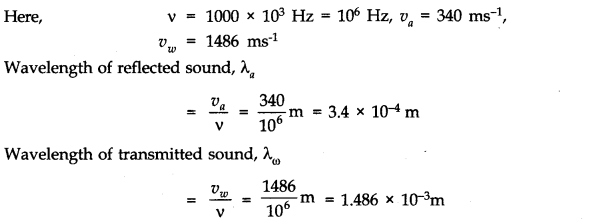
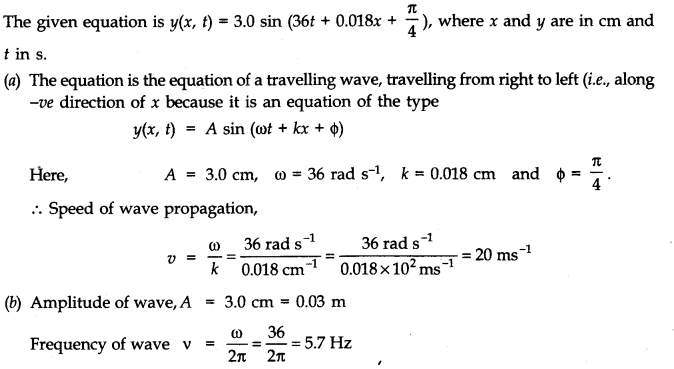

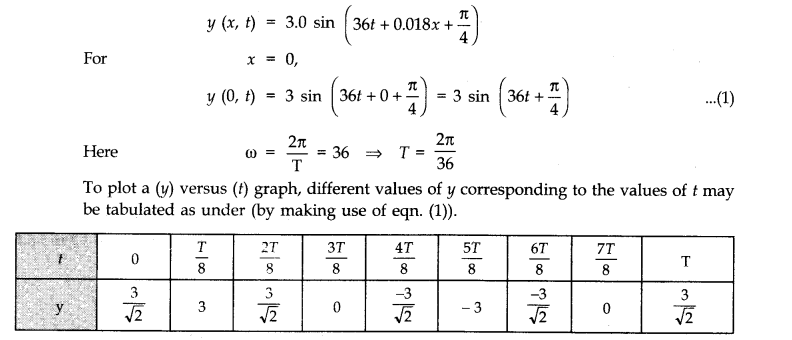
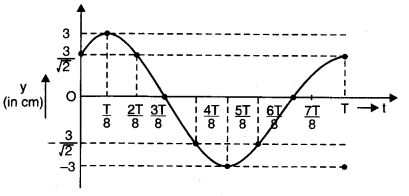
 SCHOOL OF LEARNING COACHING AGARTALA
CRACK NEET JEE TBJEE WBJEE IIT NIT ENTRANCE
WITH SUBJECT EXPERTS & DOCTORATE, GOLD MEDALIST
LOWEST FEE IN INDIA
SCHOOL OF LEARNING COACHING AGARTALA
CRACK NEET JEE TBJEE WBJEE IIT NIT ENTRANCE
WITH SUBJECT EXPERTS & DOCTORATE, GOLD MEDALIST
LOWEST FEE IN INDIA
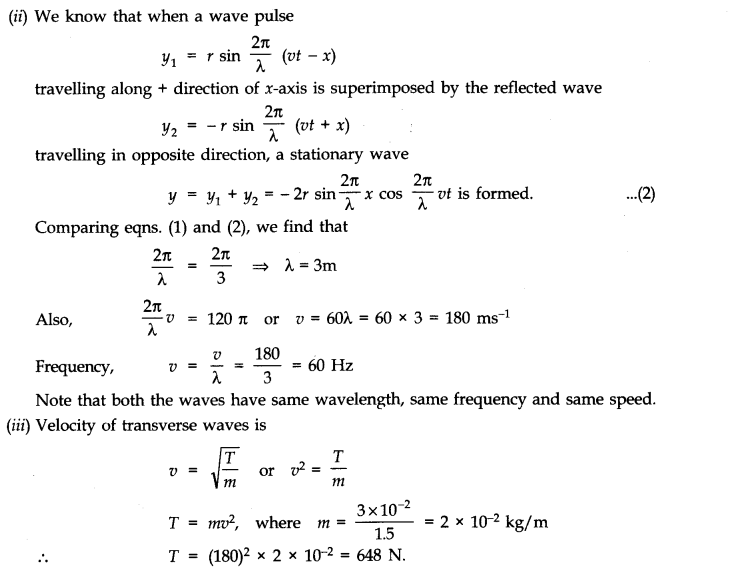


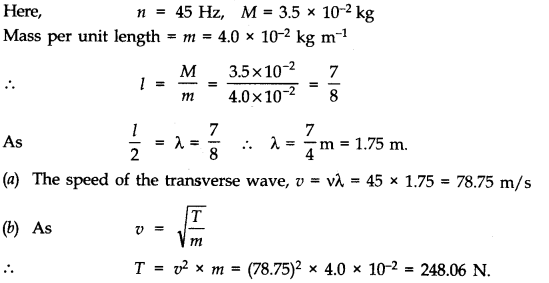
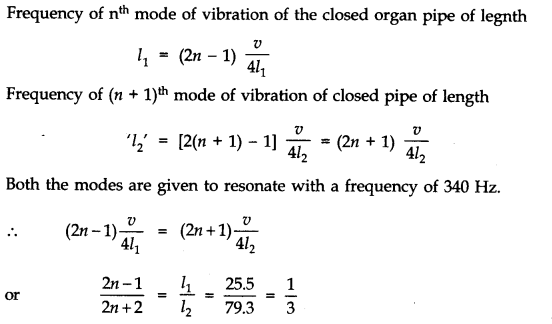

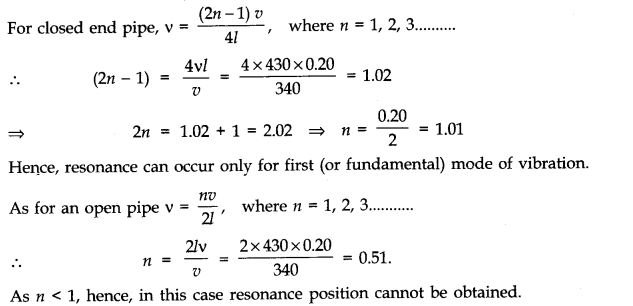


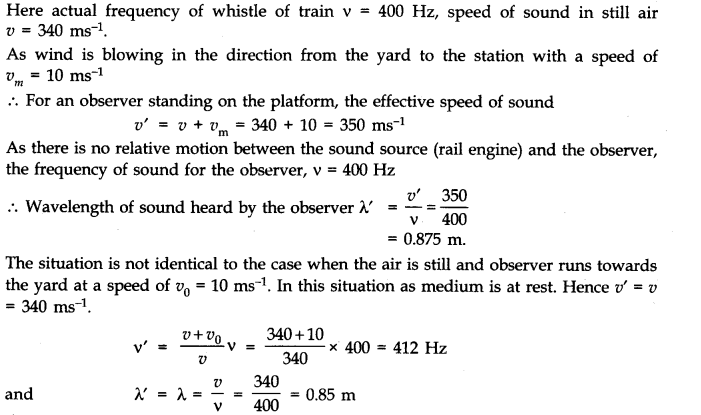


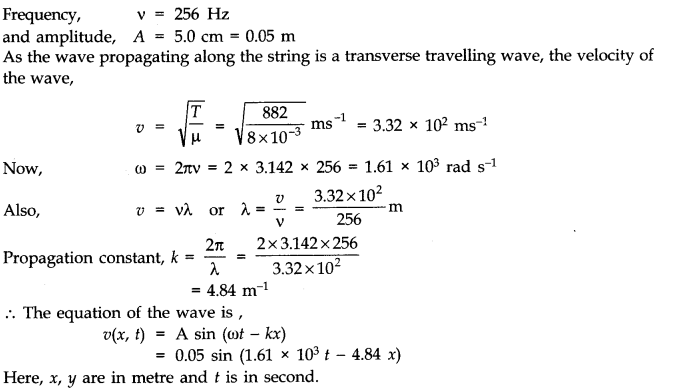
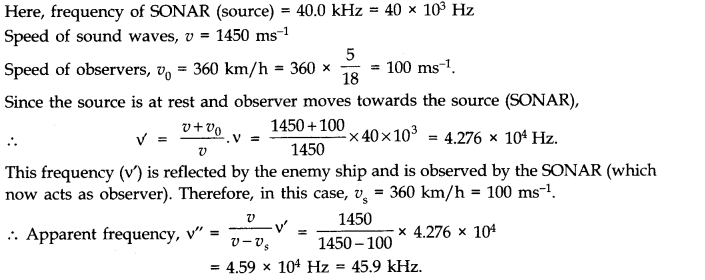

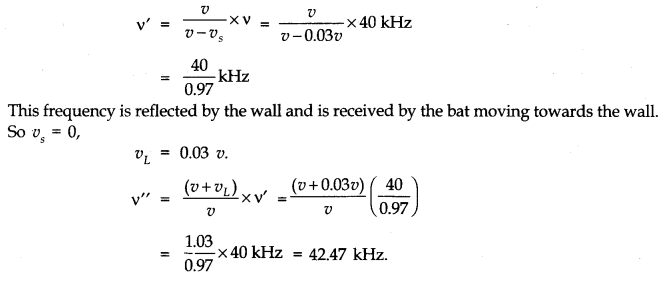


![Class 11 PHYSICS Suggestion 2023: Tripura TBSE Class 11 Physics Suggestion 2023 School Of Learning Coaching Agartala কঠিন পদার্থের যান্ত্রিক বৈশিষ্ট্য-Mechanical Properties Of Solids তরল পদার্থের যান্ত্রিক বৈশিষ্ট্য :Mechanical Properties Of Fluids পদার্থের তাপীয় বৈশিষ্ট্য:Thermal Properties of matter তাপগতিবিদ্যা: Thermodynamics কাইনেটিক থিওরি: Kinetic Theory দোলনা: Oscillations তরঙ্গ : Waves Class 11 PHYSICS Suggestion 2023: Tripura TBSE Question 1. A steel wire of length 4.7 m and cross-sectional area 3.0 x 10-5 m2 stretches by the same amount as a copper wire of length 3.5 m and cross-sectional area of 4.0 x 10-5 m2 under a given load. What is the ratio of the Young’s modulus of steel to that of copper? প্রশ্ন 1. 4.7 মিটার দৈর্ঘ্যের একটি স্টিলের তার এবং প্রদত্ত লোডের অধীনে 3.0 x 10-5 m2 দৈর্ঘ্যের একটি তামার তারের এবং 4.0 x 10-5 m2 এর ক্রস-বিভাগীয় এলাকা 3.0 x 10-5 m2 সমান পরিমাণে প্রসারিত হয় . ইস্পাত এর ইয়ং মডুলাস এবং তামার অনুপাত কত? Answer: NCERT Solutions for Class 11 Physics Chapter 9 Mechanical Properties of Solids Q1 Question 2. Figure shows the strain-stress curve for a given material. What are (a) Young’s modulus and (b) approximate yield strength for this material? প্রশ্ন 2. চিত্র একটি প্রদত্ত উপাদানের জন্য স্ট্রেন-স্ট্রেস বক্ররেখা দেখায়। (ক) তরুণের মডুলাস এবং (খ) এই উপাদানটির জন্য আনুমানিক ফলন শক্তি কী? Answer:] মেডিকেল (NEET) ইঞ্জিনিয়ারিংয়ে (JEE) এন্ট্রান্স ভর্তি চলছে : এক ক্লাসরুমে সব সাবজেক্ট ডক্টরেট উপাধিপ্রাপ্ত, গোল্ড মেডেলিস্ট, সাবজেক্ট এক্সপার্ট থেকে শিখতে হলে এখুনি ভর্তি হন। ত্রিপুরাতে সব থেকে কম ফী ! সময় এবং টাকা দুটোই বাঁচবে ৯৮ চ্যাপ্টার টেস্ট সিরিজ , সপ্তাহে ৬ দিন ক্লাস NCERT Solutions for Class 11 Physics Chapter 9 Mechanical Properties of Solids Q2 (a) Young’s modulus of the material (Y) is given by Y =Stress/Strain =150 x 106/0.002 150 x 106/2 x 10-3 =75 x 109 Nm-2 =75 x 1010 Nm-2 (a)Yield strength of a material is defined as the maximum stress it can sustain. From graph, the approximate yield strength of the given material = 300 x 106 Nm-2 = 3 x 108 Nm-2 Bengali Version (a) Young's modulus of the material (Y) দ্বারা দেওয়া হয় Y = স্ট্রেস/স্ট্রেন =150 x 106/0.002 150 x 106/2 x 10-3 =75 x 109 Nm-2 =75 x 1010 Nm-2 (a) একটি উপাদানের ফলন শক্তিকে সংজ্ঞায়িত করা হয় এটি যে সর্বোচ্চ চাপ বজায় রাখতে পারে। গ্রাফ থেকে, প্রদত্ত উপাদানের আনুমানিক ফলন শক্তি = 300 x 106 Nm-2 = 3 x 108 Nm-2। Question 3. The stress-strain graphs for materials A and B are shown in figure. NCERT Solutions for Class 11 Physics Chapter 9 Mechanical Properties of Solids Q3 The graphs are drawn to the same scale. (a) Which of the materials has the greater Young’s modulus? (b) Which of the two is the stronger material? Answer: (a) From the two graphs we note that for a given strain, stress for A is more than that of B. Hence Young’s modulus =(Stress /Strain) is greater for A than that of B. (b) Strength of a material is determined by the amount of stress required to cause fracture. This stress corresponds to the point of fracture. The stress corresponding to the point of fracture in A is more than for B. So, material A is stronger than material B. Question 4. Read the ‘allowing two statements below carefully and state, with reasons, if it is true or false. (a) The Young’s modulus of rubber is greater than that of steel; (b) The stretching of a coil is determined by its shear modulus. Answer: (a) False. The-Young’s modulus is defined as the ratio of stress to the strain within elastic limit. For a given stretching force elongation is more in rubber and quite less in steel. Hence, rubber is less elastic than steel. (b) True. Stretching of a coil is determined by its shear modulus. When equal and opposite forces are applied at opposite ends of a coil, the distance, as well as shape of helicals of the coil change and it, involves shear modulus. Question 5. Two wires of diameter 0.25 cm, one made of steel and other made of brass are loaded as shown in figure. The unloaded length of steel wire is 1.5 m and that of brass wire is 1.0 m.Young’s modulus of steel is 2.0 x 1011 Pa. Compute the elongations of steel and brass wires. (1 Pa = 1 N m2). NCERT Solutions for Class 11 Physics Chapter 9 Mechanical Properties of Solids Q5 Answer: NCERT Solutions for Class 11 Physics Chapter 9 Mechanical Properties of Solids Q5.1 Question 6. The edge of an aluminium cube is 10 cm long. One face of the cube is firmly fixed to a vertical wall. A mass of 100 kg is then attached to the opposite face of the cube. The shear modulus of aluminium is 25 GPa. What is the vertical deflection of this face? Answer: Here, side of cube, L = 10 cm =10/100= 0.1 m .•. Area of each face, A = (0.1)2 = 0.01 m2 NCERT Solutions for Class 11 Physics Chapter 9 Mechanical Properties of Solids Q6 Question 7. Four identical hollow cylindrical columns of mild steel support a big structure of mass 50,000 kg. The inner and outer radii of each column are 30 cm and 60 cm respectively. Assuming the load distribution to be uniform, calculate the compressional strain of each column. Young’s modulus, Y = 2.0 x 1011 Pa. Answer: NCERT Solutions for Class 11 Physics Chapter 9 Mechanical Properties of Solids Q7 NCERT Solutions for Class 11 Physics Chapter 9 Mechanical Properties of Solids Q7.1 Question 8. A piece of copper having a rectangular cross-section of 15.2 mm x 19.1 mm is pulled in tension with 44,500 N force, producing only elastic deformation. Calculate the resulting strain? Shear modulus of elasticity of copper is 42 x 109 N/m2. Answer: NCERT Solutions for Class 11 Physics Chapter 9 Mechanical Properties of Solids Q8 Question 9. A steel cable with a radius of 1.5 cm supports a chairlift at a ski area. If the maximum stress is not to exceed 108 Nm-2 what is the maximum load the cable can support ? Answer: NCERT Solutions for Class 11 Physics Chapter 9 Mechanical Properties of Solids Q9 Question 10. A rigid bar of mass 15 kg is supported symmetrically by three wires each 2.0 m long. Those at each end are of copper and the middle one is of iron. Determine the ratios of their diameters if each is to have the same tension. মেডিকেল (NEET) ইঞ্জিনিয়ারিংয়ে (JEE) এন্ট্রান্স ভর্তি চলছে : এক ক্লাসরুমে সব সাবজেক্ট ডক্টরেট উপাধিপ্রাপ্ত, গোল্ড মেডেলিস্ট, সাবজেক্ট এক্সপার্ট থেকে শিখতে হলে এখুনি ভর্তি হন। ত্রিপুরাতে সব থেকে কম ফী ! সময় এবং টাকা দুটোই বাঁচবে ৯৮ চ্যাপ্টার টেস্ট সিরিজ , সপ্তাহে ৬ দিন ক্লাস Answer: Since each wire is to have same tension therefore, each wire has same extension. Moreover, each wire has the same initial length.So, strain is same for each wire. NCERT Solutions for Class 11 Physics Chapter 9 Mechanical Properties of Solids Q10 Question 11. A 14.5 kg mass, fastened to the end of a steel wire of unstretched length 1 m, is whirled in a vertical circle with an angular velocity of 2 rero./s at the bottom of the circle. The cross-sectional area of the wire is 0.065 cm2. Calculate the elongation of the zvire when the mass is at the lowest point of its path. Ysteel = 2 x 1011 Nm-2. Ans.Here, m = 14.5 kg; l = r = 1 m; v = 2 rps; A = 0.065 x 10-4 m2 Total pulling force on mass, when it is at the lowest position of the vertical circle is F = mg + mr w2 = mg + mr 4,π2 v2 NCERT Solutions for Class 11 Physics Chapter 9 Mechanical Properties of Solids Q11 12.Compute the bulk modulus of water from the following data: Initial volume = 100.0 litre, Pressure increase = 100.0 atm (1 atm = 1.013 x 105 Pa), Final volume = 100.5 litre. Compare the bulk modulus of water with that of air (at constant temperature). Explain in simple terms why the ratio is so large. Answer: NCERT Solutions for Class 11 Physics Chapter 9 Mechanical Properties of Solids Q12 The ratio is too large. This is due to the fact that the strain for air is much larger than for water at the same temperature. In other words, the intermolecular distances in case of liquids are very small as compared to the corresponding distances in the case of gases. Hence there are larger interatomic forces in liquids than in gases. Question 13. What is the density of water at a depth where pressure is 80.0 atm, given that its density at the surface is 1.03 x 103 kg m-3? Answer: NCERT Solutions for Class 11 Physics Chapter 9 Mechanical Properties of Solids Q13 NCERT Solutions for Class 11 Physics Chapter 9 Mechanical Properties of Solids Q13.1 Question 14. Compute the fractional change in volume of a glass slab, when subjected to a hydraulic pressure of 10 atm. Answer: NCERT Solutions for Class 11 Physics Chapter 9 Mechanical Properties of Solids Q14 Question 15. Determine the volume contraction of a solid copper cube, 10 cm on an edge, when subjected to a hydraulic pressure of 7.0 x 106 Pa. মেডিকেল (NEET) ইঞ্জিনিয়ারিংয়ে (JEE) এন্ট্রান্স ভর্তি চলছে : এক ক্লাসরুমে সব সাবজেক্ট ডক্টরেট উপাধিপ্রাপ্ত, গোল্ড মেডেলিস্ট, সাবজেক্ট এক্সপার্ট থেকে শিখতে হলে এখুনি ভর্তি হন। ত্রিপুরাতে সব থেকে কম ফী ! সময় এবং টাকা দুটোই বাঁচবে ৯৮ চ্যাপ্টার টেস্ট সিরিজ , সপ্তাহে ৬ দিন ক্লাস Answer: Here a side of copper cube a = 10 cm, hence volume V = a3 = 10-3 m3 , hydraulic pressure applied p = 7.0 x 106 Pa and from table we find that bulk modulus of copper B = 140 G Pa = 140 x 109 Pa. NCERT Solutions for Class 11 Physics Chapter 9 Mechanical Properties of Solids Q15 Question 16. How much should be pressure the a litre of water be changed to compress it by 0.10 %? Bulk modulus of elasticity of water = 2.2 x 109 Nm-2. Answer: NCERT Solutions for Class 11 Physics Chapter 9 Mechanical Properties of Solids Q16 Question 17. Anvils made of single crystals of diamond, with the shape as shown in figure are used to investigate behaviour of materials under very high pressures. Flat faces at the narrow end of the anvil have a diameter of 0.50 mm, and the wide ends are subjected to a compressional force of50,000 N. What is the pressure at the tip of the anvil? NCERT Solutions for Class 11 Physics Chapter 9 Mechanical Properties of Solids Q17 Answer: NCERT Solutions for Class 11 Physics Chapter 9 Mechanical Properties of Solids Q17.1 Question 18. A rod of length 1.05 m having negligible mass is supported at its ends by two wires of steel (wire A ) and aluminium (wire B) of equal lengths as shown in figure. NCERT Solutions for Class 11 Physics Chapter 9 Mechanical Properties of Solids Q18 The cross-sectional areas of wires A and B are 1.0 mm2 and 2.0 mm2, respectively. At what point along the rod should a mass m be suspended in order to produce (a) equal stresses and (b) equal strains in both steel and aluminium wires. Answer: For steel wire A, l1=l; Az = 1 mm2; Y1= 2 x 1011 Nm-2 For aluminium wire B, l2 = l; A2 = 2mm2; Y2 = 7 x 1010 Nm-2 (a) Let mass m be suspended from the rod at distance x from the end where wire A is connected. Let F1 and F2 be the tensions in two wires and there is equal stress in two wires, then NCERT Solutions for Class 11 Physics Chapter 9 Mechanical Properties of Solids Q18.1 (b) Let mass m be suspended from the rod at distance x from the end where wire A is connected. Let F1 and F2 be the tension in the wires and there is equal strain in the two wires i.e., NCERT Solutions for Class 11 Physics Chapter 9 Mechanical Properties of Solids Q18.2 Question 19. A mild steel wire of length 1.0 m and cross-sectional area 0.50 x 10-2 cm2 is stretched, well within its elastic limit, horizontally between two pillars. A mass of 100g is suspended from the mid-point of the wire. Calculate the depression at the mid-point. Answer: Let AB be a mild steel wire of length 2L = lm and its cross-section area A = 0.50 x 10-2 cm2. A mass m = 100 g = 0.1 kg is suspended at mid-point C of wire as shown in figure. Let x be the depression at mid-point i.e., CD = x NCERT Solutions for Class 11 Physics Chapter 9 Mechanical Properties of Solids Q19 NCERT Solutions for Class 11 Physics Chapter 9 Mechanical Properties of Solids Q19.1 Question 20. Two strips of metal are riveted together at their ends by four rivets, each of diameter 6.0 mm. What is the maximum tension that can be exerted by the riveted strip if the shearing stress on the rivet is not to exceed 6.9 x 107 Pa? Assume that each rivet is to carry one-quarter of the load. মেডিকেল (NEET) ইঞ্জিনিয়ারিংয়ে (JEE) এন্ট্রান্স ভর্তি চলছে : এক ক্লাসরুমে সব সাবজেক্ট ডক্টরেট উপাধিপ্রাপ্ত, গোল্ড মেডেলিস্ট, সাবজেক্ট এক্সপার্ট থেকে শিখতে হলে এখুনি ভর্তি হন। ত্রিপুরাতে সব থেকে কম ফী ! সময় এবং টাকা দুটোই বাঁচবে ৯৮ চ্যাপ্টার টেস্ট সিরিজ , সপ্তাহে ৬ দিন ক্লাস Answer: Diameter = 6mm; Radius, r = 3 x 10-3 m; Maximum stress = 6.9 x 107 Pa Maximum load on a rivet = Maximum stress x cross-sectional area = 6.9 x 107 x 22/7 (3 x 10-3)2 N = 1952 N Maximum tension = 4 x 1951.7 N = 7.8 x 103 N. Question 21. The Marina trench is located in the Pacific Ocean, and at one place it is nearly eleven km beneath the surface of water. The water pressure at the bottom of the trench is about 1.1 x 108 Pa. A steel ball of initial volume 0.32 m3 is dropped into the ocean and falls to the bottom of the trench. What is the change in the volume of the ball when it reaches to the bottom? Answer: NCERT Solutions for Class 11 Physics Chapter 9 Mechanical Properties of Solids Q21 ক্লাস 11 পদার্থবিদ্যা : তরল যান্ত্রিক বৈশিষ্ট্য: বিষয়ের নাম তরল যান্ত্রিক বৈশিষ্ট্য ভূমিকা চাপ স্ট্রীমলাইন প্রবাহ বার্নোলির নীতি সান্দ্রতা রেনল্ডস নম্বর পৃষ্ঠের টান Question 1. Explain why (a) The blood pressure in humans is greater at the feet than at the brain. (b) Atmospheric pressure at a height of about 6 km decreases to nearly half of its value at the sea level, though the height of the atmosphere is more than 100 km. (c) Hydrostatic pressure is a scalar quantity even though pressure is force divided by area. Answer: (a) The height of the blood column is more for the feet as compared to that for the brain. Consequently, the blood pressure in humans is greater at the feet than at the brain. (b) The variation of air-density with height is not linear. So, pressure also does not reduce linearly with height. The air pressure at a height h is given by P = P0e–αh where P0 represents the pressure of air at sea-level and α is a constant. (c) Due to applied force on liquid, the pressure is transmitted equally in all directions inside the liquid. That is why there is no fixed direction for the pressure due to liquid. Hence hydrostatic pressure is a scalar quantity. Question 2. Explain why (a) The angle of contact of mercury with glass is obtuse, while that of water with glass is acute. (b) Water on a clean glass surface tends to spread out while mercury on the same surface tends to form drops. (Put differently, water wets glass while mercury does not.) (c) Surface tension of a liquid is independent of the area of the surface. (d) Water with detergent dissolved in it should have small angles of contact. (e) A drop of liquid under no external forces is always spherical in shape. Answer: (a) Let a drop of a liquid L be poured on a solid surface S placed in air A. If TSL,and TSA be the surface tensions corresponding to solid-liquid layer, liquid-air layer and solid-air layer respectively and θ be the angle of contact between the liquid and solid, then NCERT Solutions for Class 11 Physics Chapter 10 Mechanical Properties of Fluids Q2 TLA Cos θ + TSL =TSA =>Cos θ=TSA-TSL/TLA For the mercury-glass interface, TSA< TSL. Therefore, cos 0 is negative. Thus θ is an obtuse angle. For the water-glass interface, TSA > TSL. Therefore cos 0 is positive. Thus, θ is an acute angle. (b) Water on a clean glass surface tends to spread out i.e., water wets glass because force of cohesion of water is much less than the force of adhesion due to glass. In case of mercury force of cohesion due to mercury molecules is quite strong as compared to adhesion force due to glass. Consequently, mercury does not wet glass and tends to form drops. (c) Surface tension of liquid is the force acting per unit length on a line drawn tangentially to the liquid surface at rest. Since h as force is independent of the area of liquid surface therefore, surface tension is also independent of the area of the liquid surface. (d) We know that the clothes have narrow pores or spaces which act as capillaries. Also, we know that the rise of liquid in a capillary tube is directly proportional to cosθ (Here θ is the angle of contact). As θ is small for detergent, therefore cos θ will be large. Due to this, the detergent will penetrate more in the narrow pores of the clothes. (e) We know that any system tends to remain in a state of minimum energy. In the absence of any external force for a given volume of liquid its surface area and consequently. Surface energy is least for a spherical shape. It is due to this reason that a liquid drop, in the absence of an external force is spherical in shape. Question 3. Fill in the blanks using the words from the list appended with each statement: (a) Surface tension of liquids generally…………….with temperature. (increases/decreases) (b) Viscosity of gases………………..with temperature, whereas viscosity of liquids…………..with temperature. (increases/decreases) (c) For solids with elastic modulus of rigidity, the shearing force is proportional to…………………..while for fluids it is proportional to…………. (shear strain/rate of shear strain) (d) For a fluid in steady flow, the increases inflow speed at a constriction follows from…………………………. while the decrease of pressure there follows from………………….(conservation of mass/Bernoulli’s principle) (e) For the model of a plane in a wind tunnel, turbulence occurs at a…………….speed than the critical speed for turbulence for an actual plane. (greater/smaller) Answer: (a), decreases (b) increases; decreases (c) shear strain; rate of shear strain (d) conservation of mass; Bernoulli’s principle (e) greater. Question 4. Explain why (a) To keep a piece of paper horizontal, you should blow over, not under, it. (b) When we try to close a water tap with our fingers, fast jets of water gush through the openings between our fingers. (c) The size of a needle of a syringe controls flow rate better than the thumb pressure exerted by a doctor while administering an injection. (d) A fluid flowing out of a small hole in a vessel results in a backward thurst on the vessel. (e) A spinning cricket ball in air does not follow a parabolic trajectory. Answer: (a) When we blow over the piece of paper, the velocity of air increases. As a result, the pressure on it decreases in accordance with the Bernoulli’s theorem whereas the pressure below remains the same (atmospheric pressure). Thus, the paper remains horizontal. (b) By doing so the area of outlet of water jet is reduced, so velocity of water increases according to equation of continuity av = constant. (c) For a constant height, Bernoulli’s theorem is expressed as P +1/2 ρ v2 = Constant In this equation, the pressure P occurs with a single power whereas the velocity occurs with a square power. Therefore, the velocity has more effect compared to the pressure. It is for this reason that needle of the syringe controls flow rate better than the thumb pressure exerted by the doctor. (d) This is because of principle of conservation of momentum. While the flowing fluid carries forward momentum, the vessel gets a backward momentum. (e) A spinning cricket ball would have followed a parabolic trajectory has there been no air. But because of air the Magnus effect takes place. Due to the Magnus effect the spinning cricket ball deviates from its parabolic trajectory. মেডিকেল (NEET) ইঞ্জিনিয়ারিংয়ে (JEE) এন্ট্রান্স ভর্তি চলছে : এক ক্লাসরুমে সব সাবজেক্ট ডক্টরেট উপাধিপ্রাপ্ত, গোল্ড মেডেলিস্ট, সাবজেক্ট এক্সপার্ট থেকে শিখতে হলে এখুনি ভর্তি হন। ত্রিপুরাতে সব থেকে কম ফী ! সময় এবং টাকা দুটোই বাঁচবে ৯৮ চ্যাপ্টার টেস্ট সিরিজ , সপ্তাহে ৬ দিন ক্লাস Question 5. A 50 kg girl wearing high heel shoes balances on a single heel. The heel is circular with a diameter 1.0 cm. What is the pressure exerted by the heel on the horizontal floor? Answer: NCERT Solutions for Class 11 Physics Chapter 10 Mechanical Properties of Fluids Q5 Question 6. Toricelli’s barometer used mercury. Pascal duplicated it using French wine of density 984 kg m-3. Determine the height of the wine column for normal atmospheric pressure. Answer: NCERT Solutions for Class 11 Physics Chapter 10 Mechanical Properties of Fluids Q6 Question 7. A vertical off-shore structure is built to withstand a maximum stress of 109 Pa. Is the structure suitable for putting up on top of an oil well in the ocean? Take the depth of the ocean to be roughly 3 km, and ignore ocean currents. Answer: Here, Maximum stress = 109 Pa, h = 3 km = 3 x 103 m; p (water) = 103 kg/m3 and g = 9.8 m/s2. The structure will be suitable for putting upon top of an oil well provided the pressure exerted by sea water is less than the maximum stress it can bear. Pressure due to sea water, P = hρg = 3 x 103 x 103x 9.8 Pa = 2.94 x 107 Pa Since the pressure of sea water is less than the maximum Question 10. 8. A hydraulic automobile lift is designed to lift cars with a maximum mass of 3000 kg. The area of cross-section of the piston carrying the load is 425 cm2. What maximum pressure would the smaller piston have to bear? Answer: NCERT Solutions for Class 11 Physics Chapter 10 Mechanical Properties of Fluids Q8 This is also the maximum pressure that the smaller piston would have to bear. Question 9. A U tube contains water and methylated spirit separated by mercury. The mercury columns in the two arms are in level with 10.0 cm of water in one arm and 12.5 cm of spirit in the other. What is the relative density of spirit? Answer: For water column in one arm of U tube, h1 = 10.0 cm; ρ1 (density) = 1 g cm-3 For spirit column in other arm of U tube, h2 = 12.5 cm; ρ2 =? As the mercury columns in the two arms of U tube are in level, therefore pressure exerted by each is equal. Hence h1ρ1g = h2ρ2g or ρ2 = h1ρ1/h2 =10 x 1/12.5 = 0.8 g cm-3 Therefore, relative density of spirit = ρ2/ρ1 = 0.8/1 = 0.8 Question 10. In Q.9, if 15.0 cm of water and spirit each are further poured into the respective arms of the tube, what is the difference in the levels of mercury in the two arms? (Relative density of mercury = 13.6) Answer: Height of the water column, h1 = 10 + 15 = 25 cm Height of the spirit column, h2 = 12.5 + 15 = 27.5 cm Density of water, ρ1 = 1 g cm–3 Density of spirit, ρ2 = 0.8 g cm–3 Density of mercury = 13.6 g cm–3 Let h be the difference between the levels of mercury in the two arms. Pressure exerted by height h, of the mercury column: = hρg = h × 13.6g … (i) Difference between the pressures exerted by water and spirit: = ρ1h1g – ρ2h2g = g(25 × 1 – 27.5 × 0.8) = 3g … (ii) Equating equations (i) and (ii), we get: 13.6 hg = 3g h = 0.220588 ≈ 0.221 cm Hence, the difference between the levels of mercury in the two arms is 0.221 cm. মেডিকেল (NEET) ইঞ্জিনিয়ারিংয়ে (JEE) এন্ট্রান্স ভর্তি চলছে : এক ক্লাসরুমে সব সাবজেক্ট ডক্টরেট উপাধিপ্রাপ্ত, গোল্ড মেডেলিস্ট, সাবজেক্ট এক্সপার্ট থেকে শিখতে হলে এখুনি ভর্তি হন। ত্রিপুরাতে সব থেকে কম ফী ! সময় এবং টাকা দুটোই বাঁচবে ৯৮ চ্যাপ্টার টেস্ট সিরিজ , সপ্তাহে ৬ দিন ক্লাস Question 11. Can Bernoulli’s equation be used to describe the flow of water through a rapid motion in a river? Explain. Answer: Bernoulli’s theorem is applicable only for there it ideal fluids in streamlined motion. Since the flow of water in a river is rapid, way cannot be treated as streamlined motion, the theorem cannot be used. Question 12. Does it matter if one uses gauge instead of absolute pressures in applying Bernoulli’s equation? Explain. Answer: No, it does not matter if one uses gauge instead of absolute pressures in applying Bernoulli’s equation, provided the atmospheric pressure at the two points where Bernoulli’s equation is applied are significantly different. Question 13. Glycerine flows steadily through a horizontal tube of length 1.5 m and radius 1.0 cm. If the amount of glycerine collected per second at one end is 4.0 x 10-3 kg s-1, what is the pressure difference between the two ends of the tube? (Density of glycerine = 1.3 x 103 kg m-3 and viscosity of glycerine = 0.83 Pa s). [You may also like to check if the assumption of laminar flow in the tube is correct], Answer: NCERT Solutions for Class 11 Physics Chapter 10 Mechanical Properties of Fluids Q13 Question 14. NCERT Solutions for Class 11 Physics Chapter 10 Mechanical Properties of Fluids Q14 Answer: NCERT Solutions for Class 11 Physics Chapter 10 Mechanical Properties of Fluids Q14.1 NCERT Solutions for Class 11 Physics Chapter 10 Mechanical Properties of Fluids Q14.2 Question 10. 15. Figures (a) and (b) refer to the steady flow of a (non-viscous) liquid. Which of the two figures in incorrect? Why? NCERT Solutions for Class 11 Physics Chapter 10 Mechanical Properties of Fluids Q15 মেডিকেল (NEET) ইঞ্জিনিয়ারিংয়ে (JEE) এন্ট্রান্স ভর্তি চলছে : এক ক্লাসরুমে সব সাবজেক্ট ডক্টরেট উপাধিপ্রাপ্ত, গোল্ড মেডেলিস্ট, সাবজেক্ট এক্সপার্ট থেকে শিখতে হলে এখুনি ভর্তি হন। ত্রিপুরাতে সব থেকে কম ফী ! সময় এবং টাকা দুটোই বাঁচবে ৯৮ চ্যাপ্টার টেস্ট সিরিজ , সপ্তাহে ৬ দিন ক্লাস Answer: Figure (a) is incorrect. It is because of the fact that at the kink, the velocity of flow of liquid is large and hence using the Bernoulli’s theorem the pressure is less. As a result, the water should not rise higher in the tube where there is a kink (i.e., where the area of cross-section is small). Question 16. The cylindrical tube of a spare pump has a cross-section of 8.0 cm2 one end of which has 40 fine holes each of diameter 1.0 mm. If the liquid flow inside the tube is 1.5 m min-1, what is the speed of ejection of the liquid through the holes? Answer: NCERT Solutions for Class 11 Physics Chapter 10 Mechanical Properties of Fluids Q16 Question 17. A U-shaped wire is dipped in a soap solution, and removed. A thin soap film formed between the wire and a light slider supports a weight of 1.5 x 10-2 N (which includes the small weight of the slider). The length of the slider is 30 cm. What is the surface tension of the film? Answer: In present case force of surface tension is balancing the weight of 1.5 x 10-2 N, hence force of surface tension, F = 1.5 x 10-2 N. Total length of liquid film, l = 2 x 30 cm = 60 cm = 0.6 m because the liquid film has two surfaces. Surface tension, T = F/l =1.5 x 10-2 N/0.6m =2.5 x 10-2 Nm-1 Question 10. 18. Figure (a) below shows a thin film supporting a small weight = 4.5 x 10-2 N. What is the weight supported by a film of the same liquid at the same temperature in Fig. (b) and (c) Explain your answer physically. NCERT Solutions for Class 11 Physics Chapter 10 Mechanical Properties of Fluids Q18 Ans. (a) Here, length of the film supporting the weight = 40 cm = 0.4 m. Total weight supported (or force) = 4.5 x 10-2 N. Film has two free surfaces, Surface tension, S =4.5 x 10-2/2 x 0.4 =5.625 x 10-2 Nm-1 Since the liquid is same for all the cases (a), (b) and (c), and temperature is also same, therefore surface tension for cases (b) and (c) will also be the same = 5.625 x 10-2. In Fig. 7(b), 38(b) and (c), the length of the film supporting the weight is also the saihe as that of (a), hence the total weight supported in each case is 4.5 x 10-2 N. Question 19. What is the pressure inside a drop of mercury of radius 3.0 mm at room temperature? Surface tension of mercury at that temperature (20°C) is 4.65 x 10-1 Nm-1. The atmospheric pressure is 1.01 x 105 Pa. Also give the excess pressure inside the drop. Answer: NCERT Solutions for Class 11 Physics Chapter 10 Mechanical Properties of Fluids Q19 Since data is correct up to three significant figures, we should write total pressure inside the drop as 1.01 x 105 Pa. Question 20. What is the excess pressure inside a bubble of soap solution of radius 5.00 mm, given that the surface tension of soap solution at the temperature (20 °C) is 2.50 x 10-2 Nm-1? If an air bubble of the same dimension were formed at depth of 40.0 cm inside a container containing the soap solution (of relative density 1.20), what would be the pressure inside the bubble? (1 atmospheric pressure is 1.01 x 105 Pa). মেডিকেল (NEET) ইঞ্জিনিয়ারিংয়ে (JEE) এন্ট্রান্স ভর্তি চলছে : এক ক্লাসরুমে সব সাবজেক্ট ডক্টরেট উপাধিপ্রাপ্ত, গোল্ড মেডেলিস্ট, সাবজেক্ট এক্সপার্ট থেকে শিখতে হলে এখুনি ভর্তি হন। ত্রিপুরাতে সব থেকে কম ফী ! সময় এবং টাকা দুটোই বাঁচবে ৯৮ চ্যাপ্টার টেস্ট সিরিজ , সপ্তাহে ৬ দিন ক্লাস Answer: Here surface tension of soap solution at room temperature T = 2.50 x 10-2 Nm-1, radius of soap bubble, r = 5.00 mm = 5.00 x 10-3 m. NCERT Solutions for Class 11 Physics Chapter 10 Mechanical Properties of Fluids Q20 Question 21. A tank with a square base of area 1.0 m2 is divided by a vertical partition in the middle. The bottom of the partition has a small-hinged door of area 20 cm2. The tank is filled with water in one compartment, and an acid (of relative density 1.7) in the other, both to a height of 4.0 m. Compute the force necessary to keep the door close. Answer: NCERT Solutions for Class 11 Physics Chapter 10 Mechanical Properties of Fluids Q21 Question 22. A manometer reads the pressure of a gas in an enclosure as shown in Fig. (a) When a pump removes some of the gas, the manometer reads as in Fig. (b). The liquid used in the manometers is mercury and the atmospheric pressure is 76 cm of mercury. (a) Give the absolute and gauge pressure of the gas in the enclosure for cases (a) and (b), in units of cm of mercury. (b) How would the levels change in case (b) if 13.6 cm of water (immiscible with mercury) is poured into the right limb of 1 the manometer? Ignore the small change in the volume of the gas. NCERT Solutions for Class 11 Physics Chapter 10 Mechanical Properties of Fluids Q22 Answer: NCERT Solutions for Class 11 Physics Chapter 10 Mechanical Properties of Fluids Q22.1 Question 23. Two vessels have the same base area but different shapes. The first vessel takes twice the volume of water that the second vessel requires to fill up to a particular common height. Is the force exerted by the water on the base of the vessel the same in the two cases? If so, why do the vessels filled with water to that same height give different readings on a weighing scale? Answer: Pressure (and therefore force) on the two equal base areas are identical. But force is exerted by water on the sides of the vessels also, which has a non-zero vertical component when sides of the vessel are not perfectly normal to the base. This net vertical component of force by water on the sides of the vessel is greater for the first vessel than the second. Hence, the vessels weigh different even when the force on the base is the same in the two cases. Question 24. During blood transfusion, the needle is inserted in a vein where the gauge pressure is 2000 Pa. At what height must the blood container be placed so that blood may just enter the vein? Given: density of whole blood = 1.06 x 103 kg m-3. Answer: h=P/ρg =200/(1.06 x 103 x 9.8) =0.1925 m The blood may just enter the vein if the height at which the blood container be kept must be slightly greater than 0.1925 m i.e„ 0.2 m. Question 25. In deriving Bernoulli’s equation, we equated the work done on the fluid in the tube to its change in the potential and kinetic energy, (a) What is the largest average velocity of blood flow in an artery of diameter 2 x 10-3 m if the flow must remain laminar? (b) Do the dissipative forces become more important as the fluid velocity increases? Discuss qualitatively. Answer: (a) If dissipative forces are present, then some forces in liquid flow due to pressure difference is spent against dissipative forces, due to which the pressure drop becomes large. (b) The dissipative forces become more important with increasing flow velocity, because of turbulence. মেডিকেল (NEET) ইঞ্জিনিয়ারিংয়ে (JEE) এন্ট্রান্স ভর্তি চলছে : এক ক্লাসরুমে সব সাবজেক্ট ডক্টরেট উপাধিপ্রাপ্ত, গোল্ড মেডেলিস্ট, সাবজেক্ট এক্সপার্ট থেকে শিখতে হলে এখুনি ভর্তি হন। ত্রিপুরাতে সব থেকে কম ফী ! সময় এবং টাকা দুটোই বাঁচবে ৯৮ চ্যাপ্টার টেস্ট সিরিজ , সপ্তাহে ৬ দিন ক্লাস Question 26. (a) What is the largest average velocity of blood flow in an artery of radius 2 x 103 m if the flow must remain laminar? (b) What is the corresponding flow rate? Take viscosity of blood to be 2.084 x 10-3 Pa-s. Density of blood is 1.06 x 103 kg/m3 . Answer: NCERT Solutions for Class 11 Physics Chapter 10 Mechanical Properties of Fluids Q26 Question 27. A plane is in level flight at constant speed and each of its wings has an area of 25 m2. If the speed of the air is 180 km/h over the lower wing and 234 km/h over the upper wing surface, determine the plane’s mass. (Take air density to be 1 kg/m3), g = 9.8 m/s2. Answer: NCERT Solutions for Class 11 Physics Chapter 10 Mechanical Properties of Fluids Q27 Question 10. 28. In Millikan’s oil drop experiment, what is the terminal speed of an uncharged drop of radius 2.0 x 10-5 m and density 1.2 x 103 kg m-3. Take the viscosity of air at the temperature of the experiment to be 1.8 x 10-5 Pa-s. How much is the viscous force on the drop at that speed? Neglect buoyancy of the drop due to air. Answer: Here radius of drop, r = 2.0 x 10-5 m, density of drop, p = 1.2 x 103 kg/m3, viscosity of air TI = 1.8 x 10-5 Pa-s. Neglecting upward thrust due to air, we find that terminal speed is NCERT Solutions for Class 11 Physics Chapter 10 Mechanical Properties of Fluids Q28 NCERT Solutions for Class 11 Physics Chapter 10 Mechanical Properties of Fluids Q28.1 Question 29. Mercury has an angle of contact equal to 140° with soda-lime glass. A narrow tube of radius 1.0 mm made of this glass is dipped in a trough containing mercury. By what amount does the mercury dip down in the tube relative to the liquid surface outside? Surface tension of mercury at the temperature of the experiment is 0.465 Nm-2. Density of mercury = 13.6 x 10 kg m-3 Answer: NCERT Solutions for Class 11 Physics Chapter 10 Mechanical Properties of Fluids Q29 মেডিকেল (NEET) ইঞ্জিনিয়ারিংয়ে (JEE) এন্ট্রান্স ভর্তি চলছে : এক ক্লাসরুমে সব সাবজেক্ট ডক্টরেট উপাধিপ্রাপ্ত, গোল্ড মেডেলিস্ট, সাবজেক্ট এক্সপার্ট থেকে শিখতে হলে এখুনি ভর্তি হন। ত্রিপুরাতে সব থেকে কম ফী ! সময় এবং টাকা দুটোই বাঁচবে ৯৮ চ্যাপ্টার টেস্ট সিরিজ , সপ্তাহে ৬ দিন ক্লাস Question 30. Two narrow bores of diameters 3.0 mm and 6.0 mm are joined together to form a U-tube open at both ends. If the U-tube contains water, what is the difference in its levels in the two limbs of the tube? Surface tension of water at the temperature of the experiment is 7.3 x 10-2 Nm-2. Take the angle of contact to be zero and density of water to be 1.0 x 103 kg m-3(g = 9.8 ms-2). Answer: Let rx be the radius of one bore and r2 be the radius of second bore of the U-tube. The, if h1 and h2 are the heights of water on two sides, then NCERT Solutions for Class 11 Physics Chapter 10 Mechanical Properties of Fluids Q30 Question 31. (a) It is known that density p of air decreases with height y as NCERT Solutions for Class 11 Physics Chapter 10 Mechanical Properties of Fluids Q31 where ρ0 = 1.25 kg m-3 is the density at sea level, and y0 is a constant. This density variation is called the law of atmospheres. Obtain this law assuming that the temperature of atmosphere remains a constant (isothermal conditions). Also, assume that the value of g remains constant. (b) A large He balloon of volume 1425 m3 is used to lift a payload of 400 kg. Assume that the balloon maintains a constant radius as it rises. How high does it rise?[Take y0 = 8000 m and ρHe = 0.18 kg m-3]. Answer: (a) We know that rate of decrease of density p of air is directly proportional to the height y. It is given as dρ/dy = – ρ/y0 where y is a constant of proportionality and -ve sign signifies that density is decreasing with increase in height. On integration, we get NCERT Solutions for Class 11 Physics Chapter 10 Mechanical Properties of Fluids Q31.1 পদার্থের তাপীয় বৈশিষ্ট্য:Thermal Properties of matter Question 11. 1. The triple points of neon and carbon dioxide are 24.57 K and 216.55 K respectively. Express these temperatures on the Celsius and Fahrenheit scales. Answer: The relation between kelvin scale and Celsius scale is TK – 273.15 =TC => TC=TK– 273.15 NCERT Solutions for Class 11 Physics Chapter 11 Thermal Properties of matter Q1 Question 11. 2. Two absolute scales A and B have triple points of water defined to be 200 A and 350 B. What is the relation between TA and TB ? Answer: As we know, triple point of water on absolute scale = 273.16 K, Size of one degree of kelvin scale on absolute scale A NCERT Solutions for Class 11 Physics Chapter 11 Thermal Properties of matter Q2 Question 11. 3. The-electrical resistance in ohms of a certain thermometer varies with temperature according to the approximate law: R = R0 [1 + α (T – T0)]. The resistances is 101.6 Ωat the triple-point of water 273.16 K, and 165.5 Ωat the normal melting point of lead (600.5 K). What is the temperature when the resistance is 123.4 Ω ? Answer: Here, R0 = 101.6 Ω; T0 = 273.16 K Case (i) R1= 165.5 Ω; T1 = 600.5 K, Case (ii) R2 = 123.4 , T2 = ? Using the relation R = R0[1 + α (T – T0)] Case (i) 165.5 = 101.6 [1 + α (600.5 – 273.16)] NCERT Solutions for Class 11 Physics Chapter 11 Thermal Properties of matter Q3 Question 11. 4. Answer the following: (a) The triple-point of water is a standard fixed point in modem thermometry. Why ? What is wrong in taking the melting point of ice and the boiling point of water as standard fixed points (as was originally done in the Celsius scale) ? (b) There were two fixed points in the original Celsius scale as mentioned above which were assigned the number 0 °C and 100 °C respectively. On the absolute scale, one of the fixed points is the triple-point of water, which on the Kelvin absolute scale is assigned the number 273.16 K. What is the other fixed point on this (Kelvin) Scale ? (c) The absolute temperature (Kelvin scale) T is related to the temperature tc on the Celsius scale tc = T – 273.15 Why do we have 273.15 in this relation, and not 273.16 ? (d) What is the temperature of the triple-point of water on an absolute scale whose unit interval size is equal to that of the Fahrenheit scale ? Answer: (a) Triple point of water has a unique value i.e., 273.16 K. The melting point and boiling points of ice and water respectively do not have unique values and change with the change in pressure. (b) On Kelvin’s absolute scale, there is only one fixed point, namely, the triple-point of water and there is no other fixed point. (c) On Celsius scale 0 °C corresponds to the melting point of ice at normal pressure and the value of absolute temperature is 273.15 K. The temperature 273.16 K corresponds to the triple point of water. (d)The Fahrenheit scale and Absolute scale are related as NCERT Solutions for Class 11 Physics Chapter 11 Thermal Properties of matter Q4 NCERT Solutions for Class 11 Physics Chapter 11 Thermal Properties of matter Q4.1 মেডিকেল (NEET) ইঞ্জিনিয়ারিংয়ে (JEE) এন্ট্রান্স ভর্তি চলছে : এক ক্লাসরুমে সব সাবজেক্ট ডক্টরেট উপাধিপ্রাপ্ত, গোল্ড মেডেলিস্ট, সাবজেক্ট এক্সপার্ট থেকে শিখতে হলে এখুনি ভর্তি হন। ত্রিপুরাতে সব থেকে কম ফী ! সময় এবং টাকা দুটোই বাঁচবে ৯৮ চ্যাপ্টার টেস্ট সিরিজ , সপ্তাহে ৬ দিন ক্লাস Question 11. 5. Two ideal gas thermometers A and B use oxygen and hydrogen respectively. The following observations are made: NCERT Solutions for Class 11 Physics Chapter 11 Thermal Properties of matter Q5 (a) What is the absolute temperature of normal melting point of sulphur as read by thermometers A and B ? (b) What do you think is the reason behind the slight difference in answers of thermometers A and B ? (The thermometers are not faulty). What further procedure is needed in the experiment to reduce the discrepancy between the two readings ? Answer: NCERT Solutions for Class 11 Physics Chapter 11 Thermal Properties of matter Q5.1 (b) The value of the melting point of sulphur found from the two thermometers differ slightly due to the reason that in practice, the gases do not behave strictly as perfect gases i.e., gases are not perfectly ideal. To reduce the discrepency, readings should be taken for lower and lower pressures and the plot between temperature measured versus absolute pressure of the gas at triple point should be extrapolated to obtain the temperature in the limit pressure tends to zero (if P —> 0), when the gases approach ideal gas behaviour. Question 11. 6. A steel tape 1 m long is correctly calibrated for a temperature of 27.0 °C. The length of a steel rod measured by this tape is found to be 63.0 cm on a hot day when the temperature is 45.0 °C. What is the actual length of the steel rod on that day ? What is the length of the same steel rod on a day when the temperature is 27.0 °C ? Coefficient of linear expansion of steel = 1.20 x 10-1K-1. Answer: On a day when the temperature is 27 °C, the length of 1 cm division on the steel tape is exactly 1 cm, because the tape has been calibrated for 27 °C.When the temperature rises to 45 °C (that is, ΔT = 45 – 27 = 18 °C), the increase in the length of 1 cm division is Δl = αlΔT = (1.2 x 10-5C-1) x 1 cm x 18 °C = 0.000216 cm Therefore, the length of 1 cm division on the tape becomes 1.000216 cm at 45 °C. As the length of the steel rod is read to be 63.0 cm on the steel tape at 45 °C, the actual length of the rod at 45 °C is 63.0 x 1.000216 cm = 63.0136 cm The length of the same rod at 27 °C is 63.0 cm, because 1 cm mark on the steel tape is exactly 1 cm at 27 °C. Question 11. 7. A large steel wheel is to befitted on to a shaft of the same material. At 27 °C, the outer diameter of the shaft is 8.70 cm and the diameter of the central hole in the wheel is, 8.69 cm. The shaft is cooled using ‘dry ice’. At what temperature of the shaft does the wheel slip on the shaft ? Assume coefficient of linear expansion of the steel to be constant over the required temperature range αsteel= 1-20 x 10-5K-1. Answer: NCERT Solutions for Class 11 Physics Chapter 11 Thermal Properties of matter Q7 Question 11. 8. A hole is drilled in a copper sheet. The diameter of the hole is 4.24 cm at 27.0 °C. What is the change in the diameter of the hole when the sheet is heated to 227 °C ? Coefficient of linear expansion of copper = 1.70 x 10-5K-1. Answer: NCERT Solutions for Class 11 Physics Chapter 11 Thermal Properties of matter Q8 Question 11. 9. A brass wire 1.8 m long at 27 °C is held taut with little tension between two rigid supports. If the wire is cooled to a temperature of – 39 °C, what is the tension developed in the wire, if its diameter is 2.0 mm ? Co-efficient of linear expansion of brass = 2.0 x 10-5K-1; Young’s modulus of brass = 0.91 x 1011 Pa Ans. NCERT Solutions for Class 11 Physics Chapter 11 Thermal Properties of matter Q9 মেডিকেল (NEET) ইঞ্জিনিয়ারিংয়ে (JEE) এন্ট্রান্স ভর্তি চলছে : এক ক্লাসরুমে সব সাবজেক্ট ডক্টরেট উপাধিপ্রাপ্ত, গোল্ড মেডেলিস্ট, সাবজেক্ট এক্সপার্ট থেকে শিখতে হলে এখুনি ভর্তি হন। ত্রিপুরাতে সব থেকে কম ফী ! সময় এবং টাকা দুটোই বাঁচবে ৯৮ চ্যাপ্টার টেস্ট সিরিজ , সপ্তাহে ৬ দিন ক্লাস Question 11. 10. A brass rod of length 50 cm and diameter 3.0 mm is joined to a steel rod of the same length and diameter. What is the change in length of the combined rod at 250 °C, if the original lengths are at 40.0 °C ? Is there a ‘thermal stress’ developed at the junction ? The ends of the rod are free to expand (Co-efficient of linear expansion of brass = 2.0 x 10-5 °C-1, steel = 1.2 x 10-5 °C-3. Ans. NCERT Solutions for Class 11 Physics Chapter 11 Thermal Properties of matter Q10 Question 11. 11. The coefficient of volume expansion of glycerine is 49 x 10-5K-1. What is the fractional change in its density for a 30 °C rise in temperature ? Ans. NCERT Solutions for Class 11 Physics Chapter 11 Thermal Properties of matter Q11 Question 11. 12. A 10 kW drilling machine is used to drill a bore in a small aluminium block of mass 8.0 kg. How much is the rise in temperature of the block in 2.5 minutes, assuming 50% of power is used up in heating the machine itself or lost to the surroundings? Specific heat of aluminium = 0.91 J g-1 K-1 . Answer: Power = 10 kW = 104 W Mass, m=8.0 kg = 8 x 103 g NCERT Solutions for Class 11 Physics Chapter 11 Thermal Properties of matter Q12 Question 11. 13. A copper block of mass 2.5 kg is heated in a furnace to a temperature of 500°C and then placed on a large ice block. What is the maximum amount of ice that can melt? Specific heat of copper is 0.39 Jg-1°C-1. Heat of fusion of water = 335 Jg-1. Answer: NCERT Solutions for Class 11 Physics Chapter 11 Thermal Properties of matter Q13 মেডিকেল (NEET) ইঞ্জিনিয়ারিংয়ে (JEE) এন্ট্রান্স ভর্তি চলছে : এক ক্লাসরুমে সব সাবজেক্ট ডক্টরেট উপাধিপ্রাপ্ত, গোল্ড মেডেলিস্ট, সাবজেক্ট এক্সপার্ট থেকে শিখতে হলে এখুনি ভর্তি হন। ত্রিপুরাতে সব থেকে কম ফী ! সময় এবং টাকা দুটোই বাঁচবে ৯৮ চ্যাপ্টার টেস্ট সিরিজ , সপ্তাহে ৬ দিন ক্লাস Question 11. 14. In an experiment on the specific heat of a metal, a 0.20 kg block of the metal at 150°C is dropped in a copper calorimeter (of water equivalent 0.025 kg) containing 150 cm3 of water at 27 °C. The final temperature is 40° C. Compute the specific heat of the metal. If heat losses to the surroundings are not negligible, is your answer greater or smaller than the actual value for specific heat of the metal? Answer: Mass of metal block, m = 0.20 kg = 200 g Fall in the temperature of metal block, ΔT = (150 – 40) °C = 110 °C If C be the specific heat of metal, then heat lost by the metal block = 200 x C x 110 cal Volume of water = 150 cm3 mass of water = 150 g Increase in temperature of water = (40 – 27) °C = 13°C Heat gained by water = 150 x 13 cal Water equivalent of calorimeter, w = 0.025 kg = 25g Heat gained by calorimeter, NCERT Solutions for Class 11 Physics Chapter 11 Thermal Properties of matter Q14 Question 11. 15. Given below are observations on molar specific heats at room temperature of some common gases. NCERT Solutions for Class 11 Physics Chapter 11 Thermal Properties of matter Q15 The measured molar specific heats of these gases are markedly different from those for mono atomic gases. Typically, molar specific heat of a mono atomic gas is 2.92 cal/mol K. Explain this difference. What can you infer from the somewhat larger (than the rest) value for chlorine ? Answer: The gases which are listed in the above table are diatomic gases and not mono atomic gases. For diatomic gases, molar specific heat =5/2 R = 5/2 x 1.98 = 4.95, which agrees fairly well with all observations listed in the table except for chlorine. A mono atomic gas molecule has only the translational motion. A diatomic gas molecule, apart from translational motion, the vibrational as well as rotational motion is also possible. Therefore, to raise the temperature of 1 mole of a diatomic gas through 1°C, heat is to be supplied to increase not only translational energy but also rotational and vibrational energies. Hence, molar specific heat of a diatomic gas is greater than that for mono atomic gas. The higher value of molar specific heat of chlorine as compared to hydrogen, nitrogen, oxygen etc. shows that for chlorine molecule, at room temperature vibrational motion also occurs along with translational and rotational motions, whereas other diatomic molecules at room temperature usually have rotational motion apart from their translational motion. This is the reason that chlorine has somewhat larger value of molar specific heat. Question 11. 16. (a) At what temperature and pressure can the solid, liquid and vapour phases of CO2 co-exist in equilibrium ? (b) What is the effect of decrease of pressure on the fusion and boiling point of CO2 ? (c) What are the critical temperature and pressure for CO2 ? What is their significance 1 (d) Is CO2 solid, liquid or gas at (a) – 70 °C under 1 atm (b) – 60 °C under 10 atm (c) 15°C under 56 atm? Answer: (a) At the triple point, temperature = – 56.6 °C and pressure = 5.11 atm. (b) Both the boiling point and freezing point of CO2 decrease if pressure decreases. (c) The critical temperature and pressure of CO2 are 31.1°C and 73.0 atm respectively. Above this temperature, CO2 will not liquefy/even if compressed to high pressures. (d) (i) The point (- 70 °C, 1.0 atm) lies in the vapour region. Hence, CO2 is vapour at this point. (ii) The point (- 60 °C, 10 atm) lies in the solid region. Hence, CO2 is solid at this point. (iii) The point (15 °C, 56 atm) lies in the liquid region. Hence, CO2 is liquid at this point. NCERT Solutions for Class 11 Physics Chapter 11 Thermal Properties of matter Q16 Question 11. 17. Answer the following questions based on the P – T phase diagram of CO2 (Fig. of question 17 given above) (a) CO2 at 1 atm pressure and temperature – 60 °C is compressed isothermally. Does it go through a liquid phase ? (b) What happens when CO2 at 4 atm pressure is cooled from room temperature at constant pressure ? (c) Describe qualitatively the changes in a given mass of solid CO2 at 10 atm pressure and temperature – 65 °C as it is heated up at room temperature at constant pressure. (d) CO2 is heated to a temperature 70 °C and compressed isothermally. What changes in its properties do you expect to observe ? Answer: (a) No, the CO2 does not go through the liquid phase. The point (1.00 atm, – 60°C) is to the lift of the triple-point O and below the sublimation curve OA. Therefore, when CO2 is compressed at this point at constant temperature, the point moves perpendicular to the temperature-axis and enters the solid phase region. Hence, the CO2 vapour condenses to solid directly without going through the liquid phase. (b) CO2 at 4.0 atm pressure and room temperature (say, 27 °C) is in vapour phase. This point (4.0 atm, 27°C) lies below the vaporation curve OC and to the right of the triple point O. Therefore, when CO2 is cooled at this point at constant pressure, the point moves perpendicular to the pressure-axis and enters the solid phase region. Hence, the CO2 vapour condenses directly to solid phase without going through the liquid phase. (c) When the solid CO2 at – 65 °C is heated at 10 atm pressure, it is first converted into liquid. A further increase in its temperature brings it into the vapour phase. If a horizontal line at P = 10 atm is drawn parallel to the T-axis, then the points of intersection of line with the fusion and vaporization curve give the fusion and boiling points at 10 atm. (d) Above 31.1°C, the gas cannot be liquefied. Therefore, on being compressed isothermally at 70°C, there will be no transition to the liquid region. However, the gas will depart, more and more from its perfect gas behaviour with the increase in pressure. Question 11. 18. A child running a temperature of 101°F is given an antipyrin (i.e., a medicine that lowers fever) which causes an increase in the rate of evaporation of sweat from his body. If the fever is brought down to 98° F in 20 minutes, what is the average rate of extra evaporation caused by the drug ? Assume the evaporation mechanism to be the only way by which heat is lost. The mass of the child is 30 kg. The specific heat of human body is approximately the same as that of water, and latent heat of evaporation of water at that temperature is about 580 cal g-1. Answer: NCERT Solutions for Class 11 Physics Chapter 11 Thermal Properties of matter Q18 Question 11. 19. A ‘thermacole’ icebox is a cheap and efficient method for storing small quantities of cooked food in summer in particular. A cubical icebox of side 30 cm has a thickness of 5.0 cm. If 4.0 kg of ice is put in the box, estimate the amount of ice remaining after 6 h. The outside temperature is 45°C, and coefficient of thermal conductivity of thermacole is 0.01 Js-1 m-1 °C-1 [Heat of fusion of water = 335 x 103 J kg-1 ]. Answer: Each side of the cubical box (having 6 faces) is 30 cm = 0.30 m. Therefore, the total surface area’ of the icebox exposed to outside air is A = 6 x (0.30 m)2 = 0.54 m2. The thickness of the icebox is d = 5.0 cm = 0.05 m, time of exposure t = 6h = 6 x 3600 s and temperature difference T1 – T2 = 45°C – 0°C = 45°C. .•. Total heat entering the icebox in 6 h is given by NCERT Solutions for Class 11 Physics Chapter 11 Thermal Properties of matter Q19 NCERT Solutions for Class 11 Physics Chapter 11 Thermal Properties of matter Q19.1 Question 11. 20. A brass boiler has a base area 0.15 m2 and thickness 1.0 cm. It boils water at the rate of 6.0 kg/ min when placed on a gas stove. Estimate the temperature of the part of the flame in contact with the boiler. Thermal conductivity of brass = 109 Js-1 m-1 K-1.(Heat of vaporization of water = 2256 x 103 J kg-1 ) Answer: NCERT Solutions for Class 11 Physics Chapter 11 Thermal Properties of matter Q20 Question 11. 21. Explain why: (a) a body with large reflectivity is a poor emitter. (b) a brass tumbler feels much colder than a wooden tray on a chilly day. (c) an optical pyrometer (for measuring high temperatures) calibrated for an ideal black body radiation gives too low a value for the temperature of a red hot iron piece in the open, but gives a correct value for the temperature when the same piece is in the furnace. (d) the earth without its atmosphere would be inhospitably cold. (e) heat systems based on circulation of steam are more efficient in warming a building than those based on circulation of hot water. Answer: (a) According to Kirchh off’s law of black body radiations, good emitters are good absorbers and bad emitters are bad absorbers. A body with large reflectivity is a poor absorber of heat and consequently, it is also a poor emitter. (b) Brass is a good conductor of heat, while wood is a bad conductor. When we touch the brass tumbler on a chilly day, heat starts flowing from our body to the tumbler and we feel it cold. However, when the wooden tray is touched, heat does not flow from our hands to the tray and we do not feel cold. (c) An optical pyrometer is based on the principle that the brightness of a glowing surface of a body depends upon its temperature. Therefore, if the temperature of the body is less than 600°C, the image formed by the optical pyrometer is not brilliant and we do not get the reliable result. It is for this reason that the pyrometer gives a very low value for the temperature of red hot iron in the open. (d) The lower layers of earth’s atmosphere reflect infrared radiations from earth back to the surface of earth. Thus the heat radiation received by the earth from the sun during the day are kept trapped by the atmosphere. If atmosphere of earth were not there, its surface would become too cold to live. (e) Steam at 100°C possesses more heat than the same mass of water at 100°C. One gram of steam at 100°C possesses 540 calories of heat more than that possessed by 1 gm of water at 100°C. That is why heating systems based on circulation of steam are more efficient than those based on circulation of hot water. Question 11. 22. A body cools from 80 °C to 50°C in 5 minutes. Calculate the time it takes to cool from 60 °C to 30°C. The temperature of the surroundings is 20 °C. Answer: NCERT Solutions for Class 11 Physics Chapter 11 Thermal Properties of matter Q22 NCERT Solutions for Class 11 Physics Chapter 11 Thermal Properties of matter Q22.1 Class 11 Physics Chapter 12 Thermodynamics: Section Name Topic Name 12 Thermodynamics 12.1 Introduction 12.2 Thermal equilibrium 12.3 Zeroth law of thermodynamics 12.4 Heat, internal energy and work 12.5 First law of thermodynamics 12.6 Specific heat capacity 12.7 Thermodynamic state variables and equation of state 12.8 Thermodynamic processes 12.9 Heat engines 12.10 Refrigerators and heat pumps 12.11 Second law of thermodynamics 12.12 Reversible and irreversible processes 12.13 Carnot engine ক্লাস 11 পদার্থবিদ্যা অধ্যায় 12 তাপগতিবিদ্যা: বিভাগের নাম বিষয়ের নাম 12 তাপগতিবিদ্যা 12.1 ভূমিকা 12.2 তাপীয় ভারসাম্য 12.3 তাপগতিবিদ্যার জিরোথ সূত্র 12.4 তাপ, অভ্যন্তরীণ শক্তি এবং কাজ 12.5 তাপগতিবিদ্যার প্রথম সূত্র 12.6 নির্দিষ্ট তাপ ক্ষমতা 12.7 থার্মোডাইনামিক স্টেট ভেরিয়েবল এবং স্টেটের সমীকরণ 12.8 থার্মোডাইনামিক প্রক্রিয়া 12.9 তাপ ইঞ্জিন 12.10 রেফ্রিজারেটর এবং তাপ পাম্প 12.11 তাপগতিবিদ্যার দ্বিতীয় সূত্র 12.12 বিপরীত এবং অপরিবর্তনীয় প্রক্রিয়া 12.13 কার্নট ইঞ্জিন Question 12. 1 A geyser heats water flowing at the rate of 3.0 litres per minute from 2 7°C to 77°C. If the geyser operates on a gas burner, what is the rate of consumption of the fuel if its heat of combustion is 4.0 x 104 J/g? Answer: Volume of water heated = 3.0 litre per minute Mass of water heated, m = 3000 g per minute Increase in temperature, NCERT Solutions for Class 11 Physics Chapter 12 Thermodynamics Q1 Question 12. 2 What amount of heat must be supplied to 2.0 x 10-2 kg of nitrogen (at room temperature) to raise its temperature by 45 °C at constant pressure? (Molecular mass of N2 = 28; R = 8.3 J mol-1 K-1.) Answer: NCERT Solutions for Class 11 Physics Chapter 12 Thermodynamics Q2 Question 12. 3 Explain why (a) Two bodies at different temperatures T1 and T2, if brought in thermal contact do not necessarily settle to the mean temperature (T1 + T2)/2 ? (b) The coolant in a chemical or nuclear plant (i.e., the liquid used to prevent different parts of a plant from getting too hot) should have high specific heat. Comment. (c) Air pressure in a car tyre increases during driving. Why? (d) The climate of a harbour town is more temperate (i.e., without extremes of heat and cold) than that of a town in a desert at the same latitude. Why? Answer: (a) In thermal contact, heat flows from the body at higher temperature to the body at lower temperature till temperatures become equal. The final temperature can be the mean temperature (T1+ T2)/2 only when thermal capacities of the two bodies are equal. (b) This is because heat absorbed by a substance is directly proportional to the specific heat of the substance. (c) When car is driven, some work is being done on types in order to overcome dissipative forces of friction and air resistance etc. This work done is transformed into heat, due to which temperature of the car types increases. (d) The climate of a harbour town is more temperate (neither too hot nor too cool) due to formation of sea breeze at day time and land breeze at night time as already explained in Chapter 11. Question 12. 4 A cylinder with a movable piston contains 3 moles of hydrogen at standard temperature and pressure. The walls of the cylinder are made of a heat insulator, and the piston is insulated by having a pile of sand on it. By what factor does the pressure of the gas increase if the gas is compressed to half its original volume? Answer: NCERT Solutions for Class 11 Physics Chapter 12 Thermodynamics Q4 Question 12. 5 In changing the state of a gas adiabatically from an equilibrium state A to another equilibrium state B, an amount of work equal to 22.3 J is done on the system. If the gas is taken from state A to B via a process in which the net heat absorbed by the system is 9.35 cal, how much is the net work done by the system in the latter case? (Take 1 cal = 4.19 J) Answer: NCERT Solutions for Class 11 Physics Chapter 12 Thermodynamics Q5 Question 12. 6 Two cylinders A and B of equal capacity are connected to each other via a stopcock. A contains a gas at standard temperature and pressure. B is completey evacuated. The entire system is thermally insulated. The stopcock is suddenly opened. Answer the following: (a) What is the final pressure of the gas in A and B ? (b) What is the change in internal energy of the gas? (c) What is the change in the temperature of the gas? (d) Do the intermediate states of the system (before settling to the final equilibrium state) lie of its P-V-T Surface? Answer: (a) Since the final temperature and initial temperature remain the same, NCERT Solutions for Class 11 Physics Chapter 12 Thermodynamics Q6 (b) Since the temperature of the system remains unchanged, change in internal energy is zero. (c) The system being thermally insulated, there is no change in temperature (because of free expansion) (d) The expansion is a free expansion. Therefore, the intermediate states are non equilibrium states and the gas equation is not satisfied in these states. As a result, the gas can not return to an equilibrium state which lie on the P-V-T surface. Question 12. 7 A steam engine delivers 5.4 x 108 J of work per minute and services 3.6 x 109 J of heat per minute from its boiler. What is the efficiency of the engine? How much heat is wasted per minute? Answer: NCERT Solutions for Class 11 Physics Chapter 12 Thermodynamics Q7 Question 12. 8 An electric heater supplies heat to a system at a rate of 100 W. If system performs work at a rate of 75 Joules per second. At what rate is the internal energy increasing? Answer: NCERT Solutions for Class 11 Physics Chapter 12 Thermodynamics Q8 Question 12. 9 A thermodynamic system is taken from an original state to an intermediate state by the linear process shown in Fig.Its volume is then reduced to the original value from E to F by an isobaric process. Calculate the total work done by the gas from D to E to F. Answer: NCERT Solutions for Class 11 Physics Chapter 12 Thermodynamics Q9 Question 12. 10 A refrigerator is to maintain eatables kept inside at 9 °C, if room temperature is 36 °C. Calculate the coefficient of performance. Answer: NCERT Solutions for Class 11 Physics Chapter 12 Thermodynamics Q10 Class 11 Physics Chapter 13 Kinetic Theory: Section Name Topic Name 13 Kinetic Theory 13.1 Introduction 13.2 Molecular nature of matter 13.3 Behaviour of gases 13.4 Kinetic theory of an ideal gas 13.5 Law of equipartition of energy 13.6 Specific heat capacity 13.7 Mean free path ক্লাস 11 পদার্থবিদ্যা অধ্যায় 13 গতি তত্ত্ব: বিভাগের নাম বিষয়ের নাম 13 গতি তত্ত্ব 13.1 ভূমিকা 13.2 পদার্থের আণবিক প্রকৃতি 13.3 গ্যাসের আচরণ 13.4 একটি আদর্শ গ্যাসের গতি তত্ত্ব 13.5 শক্তির সুসংগতি আইন 13.6 নির্দিষ্ট তাপ ক্ষমতা 13.7 মানে মুক্ত পথ Question 13. 1. Estimate the fraction of molecular volume to the actual volume occupied by oxygen gas at STP.’ Take the diameter of an oxygen molecule to be 3 A. Answer: Diameter of an oxygen molecule, d = 3 A = 3 x 10-10 m. Consider one mole of oxygen gas at STP, which contain total NA = 6.023 x 1023 molecules. NCERT Solutions for Class 11 Physics Chapter 13 Kinetic Theory Q1 Question 13. 2. Molar volume is the volume occupied by 1 mol of any (ideal) gas at standard temperature and pressure (STP : 1 atmospheric pressure, 0 °C). Show that it is 22.4 litres. Answer: NCERT Solutions for Class 11 Physics Chapter 13 Kinetic Theory Q2 Question 13. 3. Following figure shows plot of PV/T versus P for 1.00 x 10-3 kg of oxygen gas at two different temperatures. (a) What does the dotted plot signify? (b) Which is true : T1> T2 or T1< T2? (c) What is the value of PV/T where the curves meet on the y-axis? (d) If we obtained similar plots for 1.00 x 10-3 kg of hydrogen, would we get the same value of PV/T at the point where the curves meet on the y-axis? If not, what mass of hydrogen yields the same value of PV/T (for the low-pressure high-temperature region of the plot) ? (Molecular mass of H2 = 2.02 u, of O2 = 32.0 u, R = 8.31 J mol-1 K-1.) NCERT Solutions for Class 11 Physics Chapter 13 Kinetic Theory Q3 Answer: (a) The dotted plot corresponds to ‘ideal’ gas behaviour as it is parallel to P-axis and it tells that value of PV/T remains same even when P is changed. (b) The upper position of PV/T shows that its value is lesser for T1 thus T1 > T2. This is because the curve at T1 is more close to dotted plot than the curve at T2 Since the behaviour of a real gas approaches the perfect gas behaviour, as the temperature is increased. (c) Where the two curves meet, the value of PV/T on y-axis is equal to μR. Since ideal gas equation for μ moles is PV = μRT NCERT Solutions for Class 11 Physics Chapter 13 Kinetic Theory Q3.1 NCERT Solutions for Class 11 Physics Chapter 13 Kinetic Theory Q3.2 Question 13. 4. An oxygen cylinder of volume 30 Hire has an initial gauge pressure of 15 atmosphere and a temperature of 27 °C. After some oxygen is withdrawn from the cylinder, the gauge pressure drops to 11 atmosphere and its temperature drops to 17 °C. Estimate the mass of oxygen taken out of the cylinder. (R = 8.31 J mol-1 K-1, molecular mass of O2 = 32 u.) Answer: NCERT Solutions for Class 11 Physics Chapter 13 Kinetic Theory Q4 Question 13. 5. An air bubble of volume 1.0 cm3 rises from the bottom of a lake 40 m deep at a temperature of 12°C. To what volume does it grow when it reaches the surface, which is at a temperature of 35 °C. Answer: NCERT Solutions for Class 11 Physics Chapter 13 Kinetic Theory Q5 Question 13. 6. Estimate the total number of air molecules (inclusive of oxygen, nitrogen, water vapour and other constituents) in a room of capacity 25.0 m3 at a temperature of 27 °C and 1 atm pressure. Answer: NCERT Solutions for Class 11 Physics Chapter 13 Kinetic Theory Q6 Question 13. 7. Estimate the average thermal energy of a helium atom at (i) room temperature (27 °C), (ii) the temperature on the surface of the Sun (6000 K), (iii) the temperature of 10 million kelvin (the typical core temperature in the case of a star). Answer: NCERT Solutions for Class 11 Physics Chapter 13 Kinetic Theory Q7 Question 13. 8. Three vessels of equal capacity have gases at the same temperature and pressure. The first vessel contains neon (monoatomic), the second contains chlorine (diatomic), and the third contains uranium hexafluoride (polyatomic). Do the vessels contain equal number of respective molecules? Is the root mean square speed of molecules the same in the three cases? If not, in which case is vrms the largest? Answer: Equal volumes of all the gases under similar conditions of pressure and temperature contains equal number of molecules (according to Avogadro’s hypothesis). Therefore, the number of molecules in each case is same. NCERT Solutions for Class 11 Physics Chapter 13 Kinetic Theory Q8 Question 13. 9. At what temperature is the root mean square speed of an atom in an argon gas cylinder equal to the rms speed of a helium gas atom at -20 °C? (atomic mass of Ar = 39.9 u, of He = 4.0 u). Answer: Let C and C’ be the rms velocity of argon and a helium gas atoms at temperature T K and T K respectively. Here, M = 39.9; M’ = 4.0; T =?; T = -20 + 273 = 253 K NCERT Solutions for Class 11 Physics Chapter 13 Kinetic Theory Q9 Question 13. 10. Estimate the mean free path and collision frequency of a nitrogen molecule in a cylinder containing nitrogen at 2.0 atm and temperature 17 °C. Take the radius of a nitrogen molecule to be roughly 1.0 A. Compare the collision time with the time the molecule moves freely between two successive collisions (Molecular mass of N2 = 28.0 u). Answer: NCERT Solutions for Class 11 Physics Chapter 13 Kinetic Theory Q10 Question 13. 11. A meter long narrow bore held horizontally (and closed at one end) contains a 76 cm long mercury thread which traps a 15 cm column of air. What happens if the tube is held vertically with the open end at the bottom? Answer: When the tube is held horizontally, the mercury thread of length 76 cm traps a length of air = 15 cm. A length of 9 cm of the tube will be left at the open end. The pressure of air enclosed in tube will be atmospheric pressure. Let area of cross-section of the tube be 1 sq. cm. .’. P1 = 76 cm and V1 = 15 cm3 NCERT Solutions for Class 11 Physics Chapter 13 Kinetic Theory Q11 When the tube is held vertically, 15 cm air gets another 9 cm of air (filled in the right handside in the horizontal position) and let h cm of mercury flows out to balance the atmospheric pressure. Then the heights of air column and mercury column are (24 + h) cm and (76 – h) cm respectively. NCERT Solutions for Class 11 Physics Chapter 13 Kinetic Theory Q11.1 Question 13. 12. From a certain apparatus, the diffusion rate of hydrogen has an average value of 28.7 cm3 s-1. The diffusion of another gas under the same conditions is measured to have an average rate of 7.2 cm3 s-1. Identify the gas. Answer: According to Graham’s law of diffusion of gases, the rate of diffusion of a gas is inversely proportional to the square root of its molecular mass. If R1 and R2 be the rates of diffusion of two gases having molecular masses M1 and M2 respectively, then NCERT Solutions for Class 11 Physics Chapter 13 Kinetic Theory Q12 Question 13. 13. A gas in equilibrium has uniform density and pressure throughout its volume. This is strictly true only if there are no external influences. A gas column under gravity, for example, does not have uniform density (and pressure). As you might expect, its density decreases with height. The precise dependence is given by the so-called law of atmospheres n2 = n1 exp [ – mg (h2 – h1)/kBT] where n2, n1 refer to number density at heights h2 and h1 respectively. Use this relation to derive the equation for sedimentation equilibrium of a suspension in a liquid column : n2 = n1 exp [ – mg NA(ρ – P) (h2 – h1 )/(ρ RT)] where ρ is the density of the suspended particle, and ρ that of surrounding medium. [NA is Avogadro’s number, and R the universal gas constant.] [Hint: Use Archimedes principle to find the apparent weight of the suspended particle.] Answer: Considering the particles and molecules to be spherical, the weight of the particle is NCERT Solutions for Class 11 Physics Chapter 13 Kinetic Theory Q13 Question 13. 14. Given below are densities of some solids and liquids. Give rough estimates of the size of their atoms NCERT Solutions for Class 11 Physics Chapter 13 Kinetic Theory Q14 [Hint: Assume the atoms to be ‘tightly packed’ in a solid or liquid phase, and use the known value of Avogadro’s number. You should, however, not take the actual numbers you obtain for various atomic sizes too literally. Because of the crudeness of the tight packing approximation, the results only indicate that atomic sizes are in the range of a few A]. Answer: In one mole of a substance, there are 6.023 x 1023 atoms NCERT Solutions for Class 11 Physics Chapter 13 Kinetic Theory Q14.1 Class 11 Physics Chapter 14 Oscillations Section Name Topic Name 14 Oscillations 14.1 Introduction 14.2 Periodic and oscilatory motions 14.3 Simple harmonic motion 14.4 Simple harmonic motion and uniform circular motion 14.5 Velocity and acceleration in simple harmonic motion 14.6 Force law for simple harmonic motion 14.7 Energy in simple harmonic motion 14.8 Some systems executing Simple Harmonic Motion 14.9 Damped simple harmonic motion 14.10 Forced oscillations and resonance 14.1 ভূমিকা 14.2 পর্যায়ক্রমিক এবং দোলনীয় গতি 14.3 সরল সুরেলা গতি 14.4 সরল সুরেলা গতি এবং অভিন্ন বৃত্তাকার গতি 14.5 সরল সুরেলা গতিতে বেগ এবং ত্বরণ 14.6 সরল সুরেলা গতির জন্য বল আইন 14.7 সরল সুরেলা গতিতে শক্তি 14.8 কিছু সিস্টেম সরল হারমোনিক মোশন নির্বাহ করে 14.9 স্যাঁতসেঁতে সরল সুরেলা গতি 14.10 জোরপূর্বক দোলন এবং অনুরণন Question 14. 1. Which of the following examples represent periodic motion? (a) A swimmer completing one (return) trip from one bank of a river to the other and back. (b) A freely suspended bar magnet displaced from its N-S direction and released. (c) A hydrogen molecule rotating about its centre of mass. (d) An arrow released from a bow. Answer: (a) It is not a periodic motion. Though the motion of a swimmer is to and fro but will not have a definite period. (b) Since a freely suspended magnet if once displaced from N-S direction and released, it oscillates about this position, it is a periodic motion. (c) The rotating motion of a hydrogen molecule about its centre of mass is periodic. (d) Motion of an arrow released from a bow is non-periodic. Question 14. 2. Which of the following examples represent (nearly) simple harmonic motion and which represent periodic but not simple harmonic motion? (a) the rotations of earth about its axis. (b) motion of an oscillating mercury column in a U-tube. (c) motion of a ball bearing inside a smooth curved bowl, when released from a point slightly above the lowermost point. (d) general vibrations of a polyatomic molecule about its equilibrium position. Answer: (a) Since the rotation of earth is not to and fro motion about a fixed point, thus it is periodic but not S.H.M. (b) It is S.H.M. (c) It is S.H.M. (d) General vibrations of a polyatomic molecule about its equilibrium position is periodic but non SHM. In fact, it is a result of superposition of SHMs executed by individual vibrations of atoms of the molecule. Question 14. 3. Fig. depicts four x-t plots for linear motion of a particle. Which of ike plots represent periodic motion? What is the period of motion (in case of periodic motion)? NCERT Solutions for Class 11 Physics Chapter 14 Oscillations Q3 NCERT Solutions for Class 11 Physics Chapter 14 Oscillations Q3.1 Answer: Figure (b) and (d) represent periodic motions and the time period of each of these is 2 seconds, (a) and (c) are non-periodic motions. Question 14. 4. Which of the following function of time represent (a) simple harmonic, (b) periodic but not simple harmonic, and (c) non-periodic motion? Give period for each case of periodic motion (to is any positive constant). (a) sin wt – cos wt (b) sin2 wt (c) 3 cos -2 cos (π/4-2 wt) (d) cos wt + cos 3 wt + cos 5 wt (e) exp (- w2t2) (f) 1 + wt + w2t2. Answer: The function will represent a periodic motion, if it is identically repeated after a fixed interval of time and will represent S.H.M if it can be written uniquely in the form of a cos NCERT Solutions for Class 11 Physics Chapter 14 Oscillations Q4 (e) e-w2t2 . It is an exponential function which never repeats itself. Therefore it represents non-periodic motion. (f) 1 + wt + w2t2 also represents non periodic motion. Question 14. 5. A particle is in linear simple harmonic motion between two points, A and B, 10 cm apart. Take the direction from A to B as the positive direction and give the signs of velocity, acceleration and force on the particle when it is (a) at the end A, (b) at the end B, (c) at the mid-point of AB going towards A, (d) at 2 cm away from B going towards A, (e) at 3 cm away from A going towards B, and (f) at 4 cm away from B going towards A. Answer: In the fig. (given below), the points A and B, 10 cm apart, are the extreme positions of the particle in SHM, and the point O is the mean position. The direction from A to B is positive, as indicated. NCERT Solutions for Class 11 Physics Chapter 14 Oscillations Q5 (a) At the end A, i.e., extreme position, velocity is zero, acceleration and force are directed towards O and are positive. (b) At the end B, i.e., second extreme position, velocity is zero whereas the acceleration and force are directed towards the point O and are negative. (c) At the mid point O, while going towards A, velocity is negative and maximum. The acceleration and force both are zero. (d) At 2 cm away from B, that is, at C and going towards A: v is negative; acceleration and F, being directed towards O, are also negative. (e) At 3 cm away from A, that is, at D and going towards B: v is positive; acceleration and F, being directed towards O, are also positive. (f) At a distance of 4 cm away from A and going towards A, velocity is directed along BA, therefore, it is positive. Since acceleration and force are directed towards OB, both of them are positive. Question 14. 6. Which of the following relationships between the acceleration a and the displacement x of a particle involve simple harmonic motion? (a) a = 0.7x (b) a = – 200 x2 (c) a = – 10x (d) a = 100 x3 Answer: Only (c) i.e., a = – 10x represents SHM. This is because acceleration is proportional and opposite to displacement (x). Question 14. 7. The motion of a particle executing simple harmonic motion is described by the displacement function. x(t) = A cos (wt +Ф ).If the initial (t = 0) position of the particle is 1 cm and its initial velocity is w cm/s, what are its amplitude and initial phase angle? The angular frequency of the particle is π s-1. If instead of the cosine function, we choose the sine function to describe the SHM: x = B sin (wt + α), what are the amplitude and initial phase of the particle with the above initial conditions? Answer: NCERT Solutions for Class 11 Physics Chapter 14 Oscillations Q7 Question 14. 8. A spring balance has a scale that reads from 0 to 50 kg. The length of the scale is 20 cm. A body suspended from this balance, when displaced and released, oscillates with a period of 0.6 s. What is the weight of the body? Answer: NCERT Solutions for Class 11 Physics Chapter 14 Oscillations Q8 NCERT Solutions for Class 11 Physics Chapter 14 Oscillations Q8.1 Question 14. 9. A spring having with a spring constant 1200 Nm-1 is mounted on a horizontal table as shown in Fig. A mass of 3 kg is attached to the free end of the spring. The mass is then pulled sideways to a distance of 2.0 cm and released. Determine (i) the frequency of oscillations, (ii) maximum acceleration of the mass, and (iii) the maximum speed of the mass. NCERT Solutions for Class 11 Physics Chapter 14 Oscillations Q9 Answer: NCERT Solutions for Class 11 Physics Chapter 14 Oscillations Q9.1 Question 14. 10. In Exercise 9, let us take the position of mass when the spring is unstreched as x = 0, and the direction from left to right as the positive direction of x – axis. Give x as a function of time t for the oscillating mass if at the moment we start the stopwatch (t = 0), the mass is (a)at the mean position,(b)at the maximum stretched position, and (c)at the maximum compressed position.In what way do these functions for SHM differ from each other, in frequency, in amplitude or the initial phase? Answer: NCERT Solutions for Class 11 Physics Chapter 14 Oscillations Q10 NCERT Solutions for Class 11 Physics Chapter 14 Oscillations Q10.1 Note: The functions neither differ in amplitude nor in frequency . They differ only in initial phase. Question 14. 11. The following figures correspond to two circular motions. The radius of the circle, the period of revolution, the initial position, and the sense of revolution (i.e., clockwise or anticlockwise) are indicated on each figure. NCERT Solutions for Class 11 Physics Chapter 14 Oscillations Q11 Obtain the corresponding simple harmonic motions of the x-projection of the radius vector of the revolving particle P in each case. Answer: NCERT Solutions for Class 11 Physics Chapter 14 Oscillations Q11.1 NCERT Solutions for Class 11 Physics Chapter 14 Oscillations Q11.2 Question 14. 12. Plot the corresponding reference circle for each of the following simple harmonic motions. Indicate the initial (t = 0) position of the particle, the radius of the circle, and the angular speed of the rotating particle. For simplicity, the sense of rotation may be fixed to be anti-clockwise in every case: (x is in cm and t is in s) (a) x = – 2 sin (3t + π /3) (b) x = cos (π /6 – t) (c) x = 3 sin (2πt + π /4) (d) x = 2 cos π t. Answer: NCERT Solutions for Class 11 Physics Chapter 14 Oscillations Q12 NCERT Solutions for Class 11 Physics Chapter 14 Oscillations Q12.1 NCERT Solutions for Class 11 Physics Chapter 14 Oscillations Q12.2 Question 14. 13. Figure (a) shows a spring of force constant k clamped rigidly at one end and a mass m attached to its free end. A force F applied at the free end stretches the spring. Figure (b) shows the same spring with both ends free and attached to a mass m at either end. Each end of the spring in Figure – (b) is stretched by the same force F. NCERT Solutions for Class 11 Physics Chapter 14 Oscillations Q13 (a) What is the maximum extension of the spring in the two cases? (b) If the mass in Fig. (a) and the two masses in Fig. (b) are released free, what is the period of oscillation in each case? Answer: NCERT Solutions for Class 11 Physics Chapter 14 Oscillations Q13.1 Question 14. 14. The piston in the cylinder head of a locomotive has a stroke (twice the amplitude) of 1.0 m. If the piston moves with simple harmonic motion with an angular frequency of 200 rev/min, what its maximum speed? Answer: NCERT Solutions for Class 11 Physics Chapter 14 Oscillations Q14 NCERT Solutions for Class 11 Physics Chapter 14 Oscillations Q14.1 Question 14. 15. The acceleration due to gravity on the surface of moon is 1.7 ms-2. What is the time period of a simple pendulum on the surface of moon if its time-period on the surface of Earth is 3.5 s? (g on the surface of Earth is 9.8 ms-2 .) Answer: NCERT Solutions for Class 11 Physics Chapter 14 Oscillations Q15 Question 14. 16. NCERT Solutions for Class 11 Physics Chapter 14 Oscillations Q16 Answer: NCERT Solutions for Class 11 Physics Chapter 14 Oscillations Q16.1 (c) The wristwatch uses an electronic system or spring system to give the time, which does not change with acceleration due to gravity. Therefore, watch gives the correct time. (d) During free fall of the cabin, the acceleration due to gravity is zero. Therefore, the frequency of oscillations is also zero i.e., the pendulum will not vibrate at all. Question 14. 17. A simple pendulum of length l and having a bob of mass M is suspended in a car. The car is moving on a circular track of radius R with a uniform speed v. If the pendulum makes small oscillations in a radial direction about its equilibrium position, what will be its time period? Answer: In this case, the bob of the pendulum is under the action of two accelerations. NCERT Solutions for Class 11 Physics Chapter 14 Oscillations Q17 Question 14. 18. A cylindrical piece of cork of density of base area A and height h floats in a liquid of density ρ1 . The cork is depressed slightly and then released. Show that the cork oscillates up and down simple harmonically with a period NCERT Solutions for Class 11 Physics Chapter 14 Oscillations Q18 where ρ is the density of cork. (Ignore damping due to viscosity of the liquid). Answer: NCERT Solutions for Class 11 Physics Chapter 14 Oscillations Q18.1 Question 14. 19. One end of a U-tube containing mercury is connected to a suction pump and the other end to the atmosphere. NCERT Solutions for Class 11 Physics Chapter 14 Oscillations Q19 A small pressure difference is maintained between the two columns. Show that, when the suction pump is removed, the column of mercury in the U-tube executes simple harmonic motion. Answer: The suction pump creates the pressure difference, thus mercury rises in one limb of the U-tube. When it is removed, a net force acts on the liquid column due to the difference in levels of mercury in the two limbs and hence the liquid column executes S.H.M. which can be expressed as: Consider the mercury contained in a vertical U-tube upto the level P and Q in its two limbs. Let P = density of the mercury. L = Total length of the mercury column in both the limbs. A = internal cross-sectional area of U-tube. m = mass of mercury in U-tube = LAP. Assume, the mercury be depressed in left limb to F by a small distance y, then it rises by the same amount in the right limb to position Q’. .’. Difference in levels in the two limbs = P’ Q’ = 2y. :. Volume of mercury contained in the column of length 2y = A X 2y .•. m – A x 2y x ρ. If W = weight of liquid contained in the column of length 2y. Then W = mg = A x 2y x ρ x g This weight produces the restoring force (F) which tends to bring back the mercury to its equilibrium position. NCERT Solutions for Class 11 Physics Chapter 14 Oscillations Q19.1 Question 14. 20. An air chamber of volume V has a neck area of cross-section into which a ball of mass m just fits and can move up and down without any friction (Fig.). Shaw that when the ball is pressed down a little and released, it executes SHM. Obtain an expression for the time period of oscillations assuming pressure-volume variations of air to be isothermal. NCERT Solutions for Class 11 Physics Chapter 14 Oscillations Q20 Answer: Consider an air chamber of volume V with a long neck of uniform area of cross-section A, and a frictionless ball of mass m fitted smoothly in the neck at position C, Fig. The pressure of air below the ball inside the chamber is equal to the atmospheric pressure. Increase the pressure on the ball by a little amount p, so that the ball is depressed to position D, where CD = y. There will be decrease in volume and hence increase in pressure of air inside the chamber. The decrease in volume of the air inside the chamber, ΔV = Ay NCERT Solutions for Class 11 Physics Chapter 14 Oscillations Q20.1 NCERT Solutions for Class 11 Physics Chapter 14 Oscillations Q20.2 Note. If the ball oscillates in the neck of chamber under isothermal conditions, thru E = P = picture of air inside the chamber, when ball is at equilibrium position. If the ball oscillate in the neck of chamber under adiabatic conditions, then E = gP. where g = Cp/Cv. Question 14. 21. You are riding an automobile of mass 3000 kg. Assuming that you are examining the oscillation characteristics of its suspension system. The suspension sags 15 cm when the entire automobile is placed on it. Also, the amplitude of oscillation decreases by 50% during one complete oscillation. Estimate the values of (a) the spring constant k and (b) the damping constant b for the spring and shock absorber system of one wheel, assuming that each wheel supports 750 kg. g = 10 m/s2. Answer: NCERT Solutions for Class 11 Physics Chapter 14 Oscillations Q21 Question 14. 22. Show that for a particle in linear SHM the average kinetic energy over a period of oscillation equals the average potential energy over the same period. Answer: Let the particle executing SHM starts oscillating from its mean position. Then displacement equation is NCERT Solutions for Class 11 Physics Chapter 14 Oscillations Q22 NCERT Solutions for Class 11 Physics Chapter 14 Oscillations Q22.1 Question 14. 23. A circular disc, of mass 10 kg, is suspended by a wire attached to its centre. The wire is twisted by rotating the disc and released. The period of torsional oscillations of found to be 1.5 s. The radius of the disc is 15 cm. Determine the torsional spring constant of the wire. (Torsional spring constant) a is defined by the relation J = – αθ, where J is the restoring couple and θ the angle of twist). Answer: NCERT Solutions for Class 11 Physics Chapter 14 Oscillations Q23 Question 14. 24. A body describes simple harmonic motion with an amplitude of 5 cm and a period of 0.2 s. Find the acceleration and velocity of the body when the displacement is (a) 5 cm (b) 3 cm (c) 0 cm Answer: NCERT Solutions for Class 11 Physics Chapter 14 Oscillations Q24 Question 14. 25. A mass attached to a spring is free to oscillate, with angular velocity w, in a horizontal plane without friction or damping. It is pulled to a distance x0 and pushed towards the centre with a velocity v0 at time t = 0. Determine the amplitude of the resulting oscillations in terms of the parameters w, x0 and v0. Answer: NCERT Solutions for Class 11 Physics Chapter 14 Oscillations Q25 Class 11 Physics Chapter 15 Waves: Section Name Topic Name 15 Waves 15.1 Introduction 15.2 Transverse and longitudinal waves 15.3 Displacement relation in a progressive wave 15.4 The speed of a travelling wave 15.5 The principle of superposition of waves 15.6 Reflection of waves 15.7 Beats 15.8 Doppler effect ক্লাস 11 পদার্থবিদ্যা অধ্যায় 15 তরঙ্গ: বিভাগের নাম বিষয়ের নাম 15 তরঙ্গ 15.1 ভূমিকা 15.2 অনুপ্রস্থ এবং অনুদৈর্ঘ্য তরঙ্গ 15.3 একটি প্রগতিশীল তরঙ্গে স্থানচ্যুতি সম্পর্ক 15.4 একটি ভ্রমণ তরঙ্গের গতি 15.5 তরঙ্গের সুপারপজিশনের নীতি 15.6 তরঙ্গের প্রতিফলন 15.7 বিট 15.8 ডপলার প্রভাব Question 15. 1. A string of mass 2.50 kg is under a tension of 200 N. The length of the stretched string is 20.0 m. If the transverse jerk is struck at one end of the string, how long does the disturbance take to reach the other end? Answer: NCERT Solutions for Class 11 Physics Chapter 15 Waves Q1 Question 15. 2. A stone dropped from the top of a tower of height 300 m high splashes into the water of a pond near the base of the tower. When is the splash heard at the top given that the speed of sound in air is 340 ms-1 ? (g = 9.8 ms-2 ) Answer: Here, h = 300 m, g = 9.8 ms-2 and velocity of sound, v = 340 ms-1 Let t1 be the time taken by the stone to reach at the surface of pond. NCERT Solutions for Class 11 Physics Chapter 15 Waves Q2 Question 15. 3. A steel wire has a length of 12.0 m and a mass of 2.10 kg. What should be the tension in the wire so that speed of a transverse wave on the wire equals the speed of sound in dry air at 2 0°C = 340 ms-1. Answer: NCERT Solutions for Class 11 Physics Chapter 15 Waves Q3 Question 15. 4. NCERT Solutions for Class 11 Physics Chapter 15 Waves Q4 Answer: NCERT Solutions for Class 11 Physics Chapter 15 Waves Q4.1 Question 15. 5. You have learnt, that a travelling wave in one dimension is represented by a function y = f(x, t), where x and t must appear in the combination x-vtorx + vt i.e., y =f (x ± vt). Is the converse true? That is, does every function of (x – vt) or (x + vt) represent a travelling wave? Examine, if the following functions for y can possibly represent a travelling wave? NCERT Solutions for Class 11 Physics Chapter 15 Waves Q5 Answer: No, the converse is not true. The basic requirement for a wave function to represent a travelling wave is that for all values of x and t, wave function must have a finite value. Out of the given functions for y none satisfies this condition. Therefore, none can represent a travelling wave. Question 15. 6. A bat emits ultrasonic sound of frequency 1000 kHz in air. If this sound meets a water surface, what is the wavelength of (a) the reflected sound, (b) the transmitted sound? Speed of sound in air = 340 ms-1 and in water = 1486 ms-1. Answer: NCERT Solutions for Class 11 Physics Chapter 15 Waves Q6 Question 15. 7. A hospital uses an ultrasonic scanner to locate tumours in a tissue. What is the wavelength of sound in a tissue in which the speed of sound is 1.7 km s-1? The operating frequency of the scanner is 4.2 MHz. Answer: Here speed of sound => υ = 1.7 km s-1 = 1700 ms-1 and frequency υ= 4.2 MHz = 4.2 x 106 Hz .’. Wavelength, A = υ/V = 1700/(4.2 x 106) =4.1 x 10-4 m. Question 15. 8. A transverse harmonic wave on a string is described by y(x, t) = 3.0 sin (36 t + 0.018 x + π/4) where x and y are in cm and t in s. The positive direction of x is from left to right. (a) Is this a travelling wave or a stationary wave? If it is travelling, what are the speed and direction of its propagation ? (b) What are its amplitude and frequency? (c) What is the initial phase at the origin? (d) What is the least distance between two successive crests in the wave? Answer: NCERT Solutions for Class 11 Physics Chapter 15 Waves Q8 NCERT Solutions for Class 11 Physics Chapter 15 Waves Q8.1 Question 15. 9. For the wave described in Exercise 8, plot the displacement (y) versus (t) graphs for x = 0, 2 and 4 cm. What are the shape of these graphs? In which aspects does the oscillatory motion in travelling wave differ from one point to another : amplitude, frequency or phase? Answer: The transverse harmonic wave is NCERT Solutions for Class 11 Physics Chapter 15 Waves Q9 Using the values of t and y (as in the table), a graph is plotted as under The graph obtained is sinusoidal. Similar graphs are obtained for y x = 2 cm and x = 4 cm. The (incm) oscillatory motion in the travelling wave only differs in respect of phase. Amplitude and frequency of oscillatory motion remains the same in all the cases. NCERT Solutions for Class 11 Physics Chapter 15 Waves Q9.1 Question 15. 10. For the travelling harmonic wave y(x, t) = 2.0 cos 2π (10t – 0.0080x + 0.35) where x and y are in cm and t in s. Calculate the phase difference between oscillatory motion of two points separated by a distance of (a) 4 m (b) 0.5 m (c) λ/2 (d) 3λ/4. Answer: NCERT Solutions for Class 11 Physics Chapter 15 Waves Q10 Question 15. 11. The transverse displacement of a string (clamped at its two ends) is given by y(x, t) = 0.06 sin 2π /3 x cos (120π t) where x, y are in m and t in s. The length of the string is 1.5 m and its mass is 3 x 10-2 kg. Answer the following: (i) Does the function represent a travelling or a stationary wave? (ii) Interpret the wave as a superimposition of two waves travelling in opposite directions. What are the wavelength, frequency and speed of propagation of each wave? (iii) Determine the tension in the string. Answer: The given equation is y(x, t) = 0.06 sin 2π/3 x cos 120 πt …(1) (i)As the equation involves harmonic functions of x and t separately, it represents a stationary wave. NCERT Solutions for Class 11 Physics Chapter 15 Waves Q11 Question 15. 12. (i) For the wave on a string described in Question 11, do all the points on the string oscillate with the same (a) frequency, (b) phase, (c) amplitude? Explain your answers, (ii) What is the amplitude of a point 0.375 m away from one end? Answer: (i) For the wave on the string described in questions we have seen that l = 1.5 m and λ = 3 m. So, it is clear that λ = λ /2 and for a string clamped at both ends, it is possible only when both ends behave as nodes and there is only one antinode in between i.e., whole string is vibrating in one segment only. (a) Yes, all the sring particles, except nodes, vibrate with the same frequency v = 60 Hz. (b) As all string particles lie in one segment, all of them are in same phase. (c) Amplitude varies from particle to particle. At antinode, amplitude = 2A = 0.06 m. It gradually falls on going towards nodes and at nodes, and at nodes, it is zero. (ii) Amplitude at a point x = 0.375 m will be obtained by putting cos (120 πt) as + 1 in the wave equation. NCERT Solutions for Class 11 Physics Chapter 15 Waves Q12 Question 15. 13. Given below are some functions of x and t to represent the displacement (transverse or longitudinal) of an elastic wave. State which of these represent (i) a travelling wave, (ii) a stationary wave or (iii) none at all NCERT Solutions for Class 11 Physics Chapter 15 Waves Q13 Answer: (a) It represents a stationary wave. (b) It does not represent either a travelling wave or a stationary wave. (c) It is a representation for the travelling wave. (d) It is a superposition of two stationary wave. Question 15. 14. A wire stretched between two rigid supports vibrates in its fundamental mode with a frequency of 45 Hz. The mass of the wire is 3.5 x 10-2 kg and its linear mass density is 4.0 x 10-2 kg m-3. What is (a) the speed of a transverse wave on the string, and (b) the tension in the string? Answer: NCERT Solutions for Class 11 Physics Chapter 15 Waves Q14 Question 15. 15. A metre-long tube open at one end, with a movable piston at the other end, shows resonance with a fixed frequency source (a turning fork of frequency 340 Hz) when the tube length is 25.5 cm or 79.3 cm. Estimate the speed of sound in air at the temperature of the experiment. The edge effect may be neglected. Answer: NCERT Solutions for Class 11 Physics Chapter 15 Waves Q15 [Approximation has been used because edge effect is being ignored. Moreover, we know that in the case of a closed organ pipe, the second resonance length is three times the first resonance length.] On simplification, n = 1 Now, (2n-1)υ/4l1 = 340. Substituting values (2 x 1 -1) υ x 100/4 x 25.5 = 340 or υ =346.8 ms-1 Question 15. 16. A steel rod 100 cm long is clamped at its middle. The fundamental frequency of longitudinal vibrations of the rod is given to be 2.53 k Hz. What is the speed of sound in steel? Answer: Here, L = 100 cm = 1m, v = 2.53 k Hz = 2.53 x 103 Hz When the rod is clamped at the middle, then in the fundamental mode of vibration of the rod, a node is formed at the middle and ant mode is formed at each end. NCERT Solutions for Class 11 Physics Chapter 15 Waves Q16 Question 15. 17. A pipe 20 cm long is closed at one end. Which harmonic mode of the pipe is resonantly excited by a 430 Hz source? Will the same source be in resonance with the pipe if both ends are open? (speed of sound in air is 340 ms-1). Answer: Here length of pipe, 1 = 20 cm = 0.20 m, frequency v = 430 Hz and speed of sound in air υ = 340 ms-1 NCERT Solutions for Class 11 Physics Chapter 15 Waves Q17 Question 15. 18. Two sitar strings A and B playing the note ‘Ga’ are slightly out of tune and produce beats of frequency 6Hz. The tension in the string A is slightly reduced and the beat frequency is found to reduce to 3Hz. If the original frequency of A is 324 Hz, what is the frequency of B? Answer: Let υ1 and υ2 be the frequencies of strings A and B respectively. Then, υ1 = 324 Hz, υ2 = ? Number of beats, b = 6 υ2 = υ1 ± b = 324 ± 6 !.e., υ2 = 330 Hz or 318 Hz Since the frequency is directly proportional to square root of tension, on decreasing the tension in the string A, its frequency υ1 will be reduced i.e., number of beats will increase if υ2 = 330 Hz. This is not so because number of beats become 3. Therefore, it is concluded that the frequency υ2 = 318 Hz. because on reducing the tension in the string A, its frequency may be reduced to 321 Hz, thereby giving 3 beats with υ2 = 318 Hz. Question 15. 19. Explain why (or how): (a) in a sound wave, a displacement node is a pressure antinode and vice versa. (b) bats can ascertain distances, directions, nature and sizes of the obstacles without any “eyes”. (c) a violin note and sitar note may have the same frequency, yet we can distinguish between the two notes. (d) solids can support both longitudinal and transverse waves, but only longitudinal waves can propagate in gases, and (e) the shape of a pulse gets distorted during propagation in a dispersive medium. Answer: (a) In a sound wave, a decrease in displacement i.e., displacement node causes an increase in the pressure there i.e., a pressure antinode is formed. Also, an increase in displacement is due to the decrease in pressure. (b) Bats emit ultrasonic waves of high frequency from their mouths. These waves after being reflected back from the obstacles on their path are observed by the bats. These waves give them an idea of distance, direction, nature and size of the obstacles. (c) The quality of a violin note is different from the quality of sitar. Therefore, they emit different harmonics which can be observed by human ear and used to differentiate between the two notes. (d) This is due to the fact that gases have only the bulk modulus of elasticity whereas solids have both, the shear modulus as well as the bulk modulus of elasticity. (e) A pulse of sound consists of a combination of waves of different wavelength. In a dispersive medium, these waves travel with different velocities giving rise to the distortion in the wave. Question 15. 20. A train, standing at the outer signal of a railway station blows a whistle of frequency 400 Hz in still air. (i) What is the frequency of the whistle for a platform observer when the train (a) approaches the platform with a speed of 10 ms~1. (b) recedes from the platform with a speed of 10 ms-1(ii) What is the speed of sound in each case? The speed of sound in still air can be taken as 340 ms-1 . Answer: Frequency of whistle, v = 400 Hz; speed of sound, υ= 340 ms-1 speed of train, υs= 10 ms1 (i) (a) When the train approaches the platform (i.e., the observer at rest), NCERT Solutions for Class 11 Physics Chapter 15 Waves Q20 NCERT Solutions for Class 11 Physics Chapter 15 Waves Q20.1 (ii) The speed of sound in each case does not change.It is 340 ms-1 in each case. Question 15. 21. A train, standing in a station-yard, blows a whistle of frequency 400 Hz in still air. The wind starts blowing in the direction from the yard to the station with a speed of 10 ms-1. What are the frequency, wavelength, and speed of sound for an observer standing on the station’s platform? Is the situation exactly identical to the case when the air is still and the observer runs towards the yard at a speed of 10 ms-1? The speed of sound in still air can be taken as 340 ms-1? Answer: NCERT Solutions for Class 11 Physics Chapter 15 Waves Q21 Question 15. 22. A travelling harmonic wave on a string is described by y (x, t) = 7.5 sin (0.0050x + 12t + π /4) (a) what are the displacement and velocity of oscillation of a point at x = 1 cm, and t = 1s? Is this velocity equal to the velocity of wave propagation? (b) Locate the points of the string which have the same transverse displacement and velocity as the x = 1 cm point at t = 2s, 5s and 11s. Answer: NCERT Solutions for Class 11 Physics Chapter 15 Waves Q22 NCERT Solutions for Class 11 Physics Chapter 15 Waves Q22.1 Question 15. 23. A narrow sound pulse (for example, a short pip by a whistle) is sent across a medium, (a) Does the pulse have a definite (i) frequency, (ii) wavelength, (iii) speed of propagation? (b) If the pulse rate is 1 after every 20 s, (that is the whistle is blown for a split of second after every 20 s), is the frequency of the note produced by the whistle equal to 1/20 or 0.05 Hz? Answer: (a) In a non dispersive medium, the wave propagates with definite speed but its wavelength of frequency is not definite. (b) No, the frequency of the note is not 1/20 or 0.50 Hz. 0.005 Hz is only the frequency ‘ of repetition of the pip of the whistle. Question 15. 24. One end of a long string of linear mass density 8.0 x 10-3 kg m-1 is connected to an electrically driven tuning fork of frequency 256 Hz. The other end passes over a pulley and is tied to a pan containing a mass of 90 kg. The pulley end absorbs all the incoming energy so that reflected waves at this end have negligible amplitude. At t = 0, the left end (fork end) of the string x = 0 has zero transverse displacement (y = 0) and is moving along positive y-direction. The amplitude of the wave is 5.0 cm. Write down the transverse displacement y as function of x and t that describes the wave on the string. Answer: Here, mass per unit length, g = linear mass density = 8 x 10-3 kg m-1; Tension in the string, T = 90 kg = 90 x 9.8 N= 882 N; NCERT Solutions for Class 11 Physics Chapter 15 Waves Q24 Question 15. 25. A SONAR system fixed in a submarine operates at a frequency 40.0 kHz. An enemy submarine moves towards the SONAR with a speed of 360 km h-1. What is the frequency of sound reflected by the submarine? Take the speed of sound in water to be 1450 ms-1. Answer: NCERT Solutions for Class 11 Physics Chapter 15 Waves Q25 Question 15. 26. Earthquakes generate sound waves inside the earth. Unlike a gas, the earth can experience both transverse (S) and longitudinal (P) sound waves. Typically the speed of S wave is about 4.0 km s-1 . A seismograph records P and S waves from an earthquake. The first P wave arrives 4 min before the first S wave. Assuming the waves travel in straight line, at what distance does the earthquake occur? Answer: Here speed of S wave, υs = 4.0 km s-1 and speed of P wave, υp = 8.0 km s-1. Time gap between P and S waves reaching the resimograph, t = 40 min = 240 s. Let distance of earthquake centre = sKm NCERT Solutions for Class 11 Physics Chapter 15 Waves Q26 Question 15. 27. A bat is flitting about in a cave, navigating via ultrasonic beeps. Assume that the sound emission frequency of the bat is 40 kHz. During one fast swoop directly toward a flat wall surface, the bat is moving at 0.03 times the speed of sound in air. What frequency does the bat hear reflected off the wall ? Answer: Here, the frequency of sound emitted by the bat, υ = 40 kHz. Velocity of bat, υs = 0.03 υ, where υ is velocity of sound. Apparent frequency of sound striking the wall NCERT Solutions for Class 11 Physics Chapter 15 Waves Q27 মেডিকেল (NEET) ইঞ্জিনিয়ারিংয়ে (JEE) এন্ট্রান্স ভর্তি চলছে : এক ক্লাসরুমে সব সাবজেক্ট ডক্টরেট উপাধিপ্রাপ্ত, গোল্ড মেডেলিস্ট, সাবজেক্ট এক্সপার্ট থেকে শিখতে হলে এখুনি ভর্তি হন। ত্রিপুরাতে সব থেকে কম ফী ! সময় এবং টাকা দুটোই বাঁচবে ৯৮ চ্যাপ্টার টেস্ট সিরিজ , সপ্তাহে ৬ দিন ক্লাস Class 11 Physics Suggestion 2023 School Of Learning Coaching Agartala কঠিন পদার্থের যান্ত্রিক বৈশিষ্ট্য-Mechanical Properties Of Solids তরল পদার্থের যান্ত্রিক বৈশিষ্ট্য :Mechanical Properties Of Fluids পদার্থের তাপীয় বৈশিষ্ট্য:Thermal Properties of matter তাপগতিবিদ্যা: Thermodynamics কাইনেটিক থিওরি: Kinetic Theory দোলনা: Oscillations তরঙ্গ : Waves Question 1. A steel wire of length 4.7 m and cross-sectional area 3.0 x 10-5 m2 stretches by the same amount as a copper wire of length 3.5 m and cross-sectional area of 4.0 x 10-5 m2 under a given load. What is the ratio of the Young’s modulus of steel to that of copper? প্রশ্ন 1. 4.7 মিটার দৈর্ঘ্যের একটি স্টিলের তার এবং প্রদত্ত লোডের অধীনে 3.0 x 10-5 m2 দৈর্ঘ্যের একটি তামার তারের এবং 4.0 x 10-5 m2 এর ক্রস-বিভাগীয় এলাকা 3.0 x 10-5 m2 সমান পরিমাণে প্রসারিত হয় . ইস্পাত এর ইয়ং মডুলাস এবং তামার অনুপাত কত? Answer: NCERT Solutions for Class 11 Physics Chapter 9 Mechanical Properties of Solids Q1 Question 2. Figure shows the strain-stress curve for a given material. What are (a) Young’s modulus and (b) approximate yield strength for this material? প্রশ্ন 2. চিত্র একটি প্রদত্ত উপাদানের জন্য স্ট্রেন-স্ট্রেস বক্ররেখা দেখায়। (ক) তরুণের মডুলাস এবং (খ) এই উপাদানটির জন্য আনুমানিক ফলন শক্তি কী? Answer:] মেডিকেল (NEET) ইঞ্জিনিয়ারিংয়ে (JEE) এন্ট্রান্স ভর্তি চলছে : এক ক্লাসরুমে সব সাবজেক্ট ডক্টরেট উপাধিপ্রাপ্ত, গোল্ড মেডেলিস্ট, সাবজেক্ট এক্সপার্ট থেকে শিখতে হলে এখুনি ভর্তি হন। ত্রিপুরাতে সব থেকে কম ফী ! সময় এবং টাকা দুটোই বাঁচবে ৯৮ চ্যাপ্টার টেস্ট সিরিজ , সপ্তাহে ৬ দিন ক্লাস NCERT Solutions for Class 11 Physics Chapter 9 Mechanical Properties of Solids Q2 (a) Young’s modulus of the material (Y) is given by Y =Stress/Strain =150 x 106/0.002 150 x 106/2 x 10-3 =75 x 109 Nm-2 =75 x 1010 Nm-2 (a)Yield strength of a material is defined as the maximum stress it can sustain. From graph, the approximate yield strength of the given material = 300 x 106 Nm-2 = 3 x 108 Nm-2 Bengali Version (a) Young's modulus of the material (Y) দ্বারা দেওয়া হয় Y = স্ট্রেস/স্ট্রেন =150 x 106/0.002 150 x 106/2 x 10-3 =75 x 109 Nm-2 =75 x 1010 Nm-2 (a) একটি উপাদানের ফলন শক্তিকে সংজ্ঞায়িত করা হয় এটি যে সর্বোচ্চ চাপ বজায় রাখতে পারে। গ্রাফ থেকে, প্রদত্ত উপাদানের আনুমানিক ফলন শক্তি = 300 x 106 Nm-2 = 3 x 108 Nm-2। Question 3. The stress-strain graphs for materials A and B are shown in figure. NCERT Solutions for Class 11 Physics Chapter 9 Mechanical Properties of Solids Q3 The graphs are drawn to the same scale. (a) Which of the materials has the greater Young’s modulus? (b) Which of the two is the stronger material? Answer: (a) From the two graphs we note that for a given strain, stress for A is more than that of B. Hence Young’s modulus =(Stress /Strain) is greater for A than that of B. (b) Strength of a material is determined by the amount of stress required to cause fracture. This stress corresponds to the point of fracture. The stress corresponding to the point of fracture in A is more than for B. So, material A is stronger than material B. Question 4. Read the ‘allowing two statements below carefully and state, with reasons, if it is true or false. (a) The Young’s modulus of rubber is greater than that of steel; (b) The stretching of a coil is determined by its shear modulus. Answer: (a) False. The-Young’s modulus is defined as the ratio of stress to the strain within elastic limit. For a given stretching force elongation is more in rubber and quite less in steel. Hence, rubber is less elastic than steel. (b) True. Stretching of a coil is determined by its shear modulus. When equal and opposite forces are applied at opposite ends of a coil, the distance, as well as shape of helicals of the coil change and it, involves shear modulus. Question 5. Two wires of diameter 0.25 cm, one made of steel and other made of brass are loaded as shown in figure. The unloaded length of steel wire is 1.5 m and that of brass wire is 1.0 m.Young’s modulus of steel is 2.0 x 1011 Pa. Compute the elongations of steel and brass wires. (1 Pa = 1 N m2). NCERT Solutions for Class 11 Physics Chapter 9 Mechanical Properties of Solids Q5 Answer: NCERT Solutions for Class 11 Physics Chapter 9 Mechanical Properties of Solids Q5.1 Question 6. The edge of an aluminium cube is 10 cm long. One face of the cube is firmly fixed to a vertical wall. A mass of 100 kg is then attached to the opposite face of the cube. The shear modulus of aluminium is 25 GPa. What is the vertical deflection of this face? Answer: Here, side of cube, L = 10 cm =10/100= 0.1 m .•. Area of each face, A = (0.1)2 = 0.01 m2 NCERT Solutions for Class 11 Physics Chapter 9 Mechanical Properties of Solids Q6 Question 7. Four identical hollow cylindrical columns of mild steel support a big structure of mass 50,000 kg. The inner and outer radii of each column are 30 cm and 60 cm respectively. Assuming the load distribution to be uniform, calculate the compressional strain of each column. Young’s modulus, Y = 2.0 x 1011 Pa. Answer: NCERT Solutions for Class 11 Physics Chapter 9 Mechanical Properties of Solids Q7 NCERT Solutions for Class 11 Physics Chapter 9 Mechanical Properties of Solids Q7.1 Question 8. A piece of copper having a rectangular cross-section of 15.2 mm x 19.1 mm is pulled in tension with 44,500 N force, producing only elastic deformation. Calculate the resulting strain? Shear modulus of elasticity of copper is 42 x 109 N/m2. Answer: NCERT Solutions for Class 11 Physics Chapter 9 Mechanical Properties of Solids Q8 Question 9. A steel cable with a radius of 1.5 cm supports a chairlift at a ski area. If the maximum stress is not to exceed 108 Nm-2 what is the maximum load the cable can support ? Answer: NCERT Solutions for Class 11 Physics Chapter 9 Mechanical Properties of Solids Q9 Question 10. A rigid bar of mass 15 kg is supported symmetrically by three wires each 2.0 m long. Those at each end are of copper and the middle one is of iron. Determine the ratios of their diameters if each is to have the same tension. মেডিকেল (NEET) ইঞ্জিনিয়ারিংয়ে (JEE) এন্ট্রান্স ভর্তি চলছে : এক ক্লাসরুমে সব সাবজেক্ট ডক্টরেট উপাধিপ্রাপ্ত, গোল্ড মেডেলিস্ট, সাবজেক্ট এক্সপার্ট থেকে শিখতে হলে এখুনি ভর্তি হন। ত্রিপুরাতে সব থেকে কম ফী ! সময় এবং টাকা দুটোই বাঁচবে ৯৮ চ্যাপ্টার টেস্ট সিরিজ , সপ্তাহে ৬ দিন ক্লাস Answer: Since each wire is to have same tension therefore, each wire has same extension. Moreover, each wire has the same initial length.So, strain is same for each wire. NCERT Solutions for Class 11 Physics Chapter 9 Mechanical Properties of Solids Q10 Question 11. A 14.5 kg mass, fastened to the end of a steel wire of unstretched length 1 m, is whirled in a vertical circle with an angular velocity of 2 rero./s at the bottom of the circle. The cross-sectional area of the wire is 0.065 cm2. Calculate the elongation of the zvire when the mass is at the lowest point of its path. Ysteel = 2 x 1011 Nm-2. Ans.Here, m = 14.5 kg; l = r = 1 m; v = 2 rps; A = 0.065 x 10-4 m2 Total pulling force on mass, when it is at the lowest position of the vertical circle is F = mg + mr w2 = mg + mr 4,π2 v2 NCERT Solutions for Class 11 Physics Chapter 9 Mechanical Properties of Solids Q11 12.Compute the bulk modulus of water from the following data: Initial volume = 100.0 litre, Pressure increase = 100.0 atm (1 atm = 1.013 x 105 Pa), Final volume = 100.5 litre. Compare the bulk modulus of water with that of air (at constant temperature). Explain in simple terms why the ratio is so large. Answer: NCERT Solutions for Class 11 Physics Chapter 9 Mechanical Properties of Solids Q12 The ratio is too large. This is due to the fact that the strain for air is much larger than for water at the same temperature. In other words, the intermolecular distances in case of liquids are very small as compared to the corresponding distances in the case of gases. Hence there are larger interatomic forces in liquids than in gases. Question 13. What is the density of water at a depth where pressure is 80.0 atm, given that its density at the surface is 1.03 x 103 kg m-3? Answer: NCERT Solutions for Class 11 Physics Chapter 9 Mechanical Properties of Solids Q13 NCERT Solutions for Class 11 Physics Chapter 9 Mechanical Properties of Solids Q13.1 Question 14. Compute the fractional change in volume of a glass slab, when subjected to a hydraulic pressure of 10 atm. Answer: NCERT Solutions for Class 11 Physics Chapter 9 Mechanical Properties of Solids Q14 Question 15. Determine the volume contraction of a solid copper cube, 10 cm on an edge, when subjected to a hydraulic pressure of 7.0 x 106 Pa. মেডিকেল (NEET) ইঞ্জিনিয়ারিংয়ে (JEE) এন্ট্রান্স ভর্তি চলছে : এক ক্লাসরুমে সব সাবজেক্ট ডক্টরেট উপাধিপ্রাপ্ত, গোল্ড মেডেলিস্ট, সাবজেক্ট এক্সপার্ট থেকে শিখতে হলে এখুনি ভর্তি হন। ত্রিপুরাতে সব থেকে কম ফী ! সময় এবং টাকা দুটোই বাঁচবে ৯৮ চ্যাপ্টার টেস্ট সিরিজ , সপ্তাহে ৬ দিন ক্লাস Answer: Here a side of copper cube a = 10 cm, hence volume V = a3 = 10-3 m3 , hydraulic pressure applied p = 7.0 x 106 Pa and from table we find that bulk modulus of copper B = 140 G Pa = 140 x 109 Pa. NCERT Solutions for Class 11 Physics Chapter 9 Mechanical Properties of Solids Q15 Question 16. How much should be pressure the a litre of water be changed to compress it by 0.10 %? Bulk modulus of elasticity of water = 2.2 x 109 Nm-2. Answer: NCERT Solutions for Class 11 Physics Chapter 9 Mechanical Properties of Solids Q16 Question 17. Anvils made of single crystals of diamond, with the shape as shown in figure are used to investigate behaviour of materials under very high pressures. Flat faces at the narrow end of the anvil have a diameter of 0.50 mm, and the wide ends are subjected to a compressional force of50,000 N. What is the pressure at the tip of the anvil? NCERT Solutions for Class 11 Physics Chapter 9 Mechanical Properties of Solids Q17 Answer: NCERT Solutions for Class 11 Physics Chapter 9 Mechanical Properties of Solids Q17.1 Question 18. A rod of length 1.05 m having negligible mass is supported at its ends by two wires of steel (wire A ) and aluminium (wire B) of equal lengths as shown in figure. NCERT Solutions for Class 11 Physics Chapter 9 Mechanical Properties of Solids Q18 The cross-sectional areas of wires A and B are 1.0 mm2 and 2.0 mm2, respectively. At what point along the rod should a mass m be suspended in order to produce (a) equal stresses and (b) equal strains in both steel and aluminium wires. Answer: For steel wire A, l1=l; Az = 1 mm2; Y1= 2 x 1011 Nm-2 For aluminium wire B, l2 = l; A2 = 2mm2; Y2 = 7 x 1010 Nm-2 (a) Let mass m be suspended from the rod at distance x from the end where wire A is connected. Let F1 and F2 be the tensions in two wires and there is equal stress in two wires, then NCERT Solutions for Class 11 Physics Chapter 9 Mechanical Properties of Solids Q18.1 (b) Let mass m be suspended from the rod at distance x from the end where wire A is connected. Let F1 and F2 be the tension in the wires and there is equal strain in the two wires i.e., NCERT Solutions for Class 11 Physics Chapter 9 Mechanical Properties of Solids Q18.2 Question 19. A mild steel wire of length 1.0 m and cross-sectional area 0.50 x 10-2 cm2 is stretched, well within its elastic limit, horizontally between two pillars. A mass of 100g is suspended from the mid-point of the wire. Calculate the depression at the mid-point. Answer: Let AB be a mild steel wire of length 2L = lm and its cross-section area A = 0.50 x 10-2 cm2. A mass m = 100 g = 0.1 kg is suspended at mid-point C of wire as shown in figure. Let x be the depression at mid-point i.e., CD = x NCERT Solutions for Class 11 Physics Chapter 9 Mechanical Properties of Solids Q19 NCERT Solutions for Class 11 Physics Chapter 9 Mechanical Properties of Solids Q19.1 Question 20. Two strips of metal are riveted together at their ends by four rivets, each of diameter 6.0 mm. What is the maximum tension that can be exerted by the riveted strip if the shearing stress on the rivet is not to exceed 6.9 x 107 Pa? Assume that each rivet is to carry one-quarter of the load. মেডিকেল (NEET) ইঞ্জিনিয়ারিংয়ে (JEE) এন্ট্রান্স ভর্তি চলছে : এক ক্লাসরুমে সব সাবজেক্ট ডক্টরেট উপাধিপ্রাপ্ত, গোল্ড মেডেলিস্ট, সাবজেক্ট এক্সপার্ট থেকে শিখতে হলে এখুনি ভর্তি হন। ত্রিপুরাতে সব থেকে কম ফী ! সময় এবং টাকা দুটোই বাঁচবে ৯৮ চ্যাপ্টার টেস্ট সিরিজ , সপ্তাহে ৬ দিন ক্লাস Answer: Diameter = 6mm; Radius, r = 3 x 10-3 m; Maximum stress = 6.9 x 107 Pa Maximum load on a rivet = Maximum stress x cross-sectional area = 6.9 x 107 x 22/7 (3 x 10-3)2 N = 1952 N Maximum tension = 4 x 1951.7 N = 7.8 x 103 N. Question 21. The Marina trench is located in the Pacific Ocean, and at one place it is nearly eleven km beneath the surface of water. The water pressure at the bottom of the trench is about 1.1 x 108 Pa. A steel ball of initial volume 0.32 m3 is dropped into the ocean and falls to the bottom of the trench. What is the change in the volume of the ball when it reaches to the bottom? Answer: NCERT Solutions for Class 11 Physics Chapter 9 Mechanical Properties of Solids Q21 ক্লাস 11 পদার্থবিদ্যা : তরল যান্ত্রিক বৈশিষ্ট্য: বিষয়ের নাম তরল যান্ত্রিক বৈশিষ্ট্য ভূমিকা চাপ স্ট্রীমলাইন প্রবাহ বার্নোলির নীতি সান্দ্রতা রেনল্ডস নম্বর পৃষ্ঠের টান Question 1. Explain why (a) The blood pressure in humans is greater at the feet than at the brain. (b) Atmospheric pressure at a height of about 6 km decreases to nearly half of its value at the sea level, though the height of the atmosphere is more than 100 km. (c) Hydrostatic pressure is a scalar quantity even though pressure is force divided by area. Answer: (a) The height of the blood column is more for the feet as compared to that for the brain. Consequently, the blood pressure in humans is greater at the feet than at the brain. (b) The variation of air-density with height is not linear. So, pressure also does not reduce linearly with height. The air pressure at a height h is given by P = P0e–αh where P0 represents the pressure of air at sea-level and α is a constant. (c) Due to applied force on liquid, the pressure is transmitted equally in all directions inside the liquid. That is why there is no fixed direction for the pressure due to liquid. Hence hydrostatic pressure is a scalar quantity. Question 2. Explain why (a) The angle of contact of mercury with glass is obtuse, while that of water with glass is acute. (b) Water on a clean glass surface tends to spread out while mercury on the same surface tends to form drops. (Put differently, water wets glass while mercury does not.) (c) Surface tension of a liquid is independent of the area of the surface. (d) Water with detergent dissolved in it should have small angles of contact. (e) A drop of liquid under no external forces is always spherical in shape. Answer: (a) Let a drop of a liquid L be poured on a solid surface S placed in air A. If TSL,and TSA be the surface tensions corresponding to solid-liquid layer, liquid-air layer and solid-air layer respectively and θ be the angle of contact between the liquid and solid, then NCERT Solutions for Class 11 Physics Chapter 10 Mechanical Properties of Fluids Q2 TLA Cos θ + TSL =TSA =>Cos θ=TSA-TSL/TLA For the mercury-glass interface, TSA< TSL. Therefore, cos 0 is negative. Thus θ is an obtuse angle. For the water-glass interface, TSA > TSL. Therefore cos 0 is positive. Thus, θ is an acute angle. (b) Water on a clean glass surface tends to spread out i.e., water wets glass because force of cohesion of water is much less than the force of adhesion due to glass. In case of mercury force of cohesion due to mercury molecules is quite strong as compared to adhesion force due to glass. Consequently, mercury does not wet glass and tends to form drops. (c) Surface tension of liquid is the force acting per unit length on a line drawn tangentially to the liquid surface at rest. Since h as force is independent of the area of liquid surface therefore, surface tension is also independent of the area of the liquid surface. (d) We know that the clothes have narrow pores or spaces which act as capillaries. Also, we know that the rise of liquid in a capillary tube is directly proportional to cosθ (Here θ is the angle of contact). As θ is small for detergent, therefore cos θ will be large. Due to this, the detergent will penetrate more in the narrow pores of the clothes. (e) We know that any system tends to remain in a state of minimum energy. In the absence of any external force for a given volume of liquid its surface area and consequently. Surface energy is least for a spherical shape. It is due to this reason that a liquid drop, in the absence of an external force is spherical in shape. Question 3. Fill in the blanks using the words from the list appended with each statement: (a) Surface tension of liquids generally…………….with temperature. (increases/decreases) (b) Viscosity of gases………………..with temperature, whereas viscosity of liquids…………..with temperature. (increases/decreases) (c) For solids with elastic modulus of rigidity, the shearing force is proportional to…………………..while for fluids it is proportional to…………. (shear strain/rate of shear strain) (d) For a fluid in steady flow, the increases inflow speed at a constriction follows from…………………………. while the decrease of pressure there follows from………………….(conservation of mass/Bernoulli’s principle) (e) For the model of a plane in a wind tunnel, turbulence occurs at a…………….speed than the critical speed for turbulence for an actual plane. (greater/smaller) Answer: (a), decreases (b) increases; decreases (c) shear strain; rate of shear strain (d) conservation of mass; Bernoulli’s principle (e) greater. Question 4. Explain why (a) To keep a piece of paper horizontal, you should blow over, not under, it. (b) When we try to close a water tap with our fingers, fast jets of water gush through the openings between our fingers. (c) The size of a needle of a syringe controls flow rate better than the thumb pressure exerted by a doctor while administering an injection. (d) A fluid flowing out of a small hole in a vessel results in a backward thurst on the vessel. (e) A spinning cricket ball in air does not follow a parabolic trajectory. Answer: (a) When we blow over the piece of paper, the velocity of air increases. As a result, the pressure on it decreases in accordance with the Bernoulli’s theorem whereas the pressure below remains the same (atmospheric pressure). Thus, the paper remains horizontal. (b) By doing so the area of outlet of water jet is reduced, so velocity of water increases according to equation of continuity av = constant. (c) For a constant height, Bernoulli’s theorem is expressed as P +1/2 ρ v2 = Constant In this equation, the pressure P occurs with a single power whereas the velocity occurs with a square power. Therefore, the velocity has more effect compared to the pressure. It is for this reason that needle of the syringe controls flow rate better than the thumb pressure exerted by the doctor. (d) This is because of principle of conservation of momentum. While the flowing fluid carries forward momentum, the vessel gets a backward momentum. (e) A spinning cricket ball would have followed a parabolic trajectory has there been no air. But because of air the Magnus effect takes place. Due to the Magnus effect the spinning cricket ball deviates from its parabolic trajectory. মেডিকেল (NEET) ইঞ্জিনিয়ারিংয়ে (JEE) এন্ট্রান্স ভর্তি চলছে : এক ক্লাসরুমে সব সাবজেক্ট ডক্টরেট উপাধিপ্রাপ্ত, গোল্ড মেডেলিস্ট, সাবজেক্ট এক্সপার্ট থেকে শিখতে হলে এখুনি ভর্তি হন। ত্রিপুরাতে সব থেকে কম ফী ! সময় এবং টাকা দুটোই বাঁচবে ৯৮ চ্যাপ্টার টেস্ট সিরিজ , সপ্তাহে ৬ দিন ক্লাস Question 5. A 50 kg girl wearing high heel shoes balances on a single heel. The heel is circular with a diameter 1.0 cm. What is the pressure exerted by the heel on the horizontal floor? Answer: NCERT Solutions for Class 11 Physics Chapter 10 Mechanical Properties of Fluids Q5 Question 6. Toricelli’s barometer used mercury. Pascal duplicated it using French wine of density 984 kg m-3. Determine the height of the wine column for normal atmospheric pressure. Answer: NCERT Solutions for Class 11 Physics Chapter 10 Mechanical Properties of Fluids Q6 Question 7. A vertical off-shore structure is built to withstand a maximum stress of 109 Pa. Is the structure suitable for putting up on top of an oil well in the ocean? Take the depth of the ocean to be roughly 3 km, and ignore ocean currents. Answer: Here, Maximum stress = 109 Pa, h = 3 km = 3 x 103 m; p (water) = 103 kg/m3 and g = 9.8 m/s2. The structure will be suitable for putting upon top of an oil well provided the pressure exerted by sea water is less than the maximum stress it can bear. Pressure due to sea water, P = hρg = 3 x 103 x 103x 9.8 Pa = 2.94 x 107 Pa Since the pressure of sea water is less than the maximum Question 10. 8. A hydraulic automobile lift is designed to lift cars with a maximum mass of 3000 kg. The area of cross-section of the piston carrying the load is 425 cm2. What maximum pressure would the smaller piston have to bear? Answer: NCERT Solutions for Class 11 Physics Chapter 10 Mechanical Properties of Fluids Q8 This is also the maximum pressure that the smaller piston would have to bear. Question 9. A U tube contains water and methylated spirit separated by mercury. The mercury columns in the two arms are in level with 10.0 cm of water in one arm and 12.5 cm of spirit in the other. What is the relative density of spirit? Answer: For water column in one arm of U tube, h1 = 10.0 cm; ρ1 (density) = 1 g cm-3 For spirit column in other arm of U tube, h2 = 12.5 cm; ρ2 =? As the mercury columns in the two arms of U tube are in level, therefore pressure exerted by each is equal. Hence h1ρ1g = h2ρ2g or ρ2 = h1ρ1/h2 =10 x 1/12.5 = 0.8 g cm-3 Therefore, relative density of spirit = ρ2/ρ1 = 0.8/1 = 0.8 Question 10. In Q.9, if 15.0 cm of water and spirit each are further poured into the respective arms of the tube, what is the difference in the levels of mercury in the two arms? (Relative density of mercury = 13.6) Answer: Height of the water column, h1 = 10 + 15 = 25 cm Height of the spirit column, h2 = 12.5 + 15 = 27.5 cm Density of water, ρ1 = 1 g cm–3 Density of spirit, ρ2 = 0.8 g cm–3 Density of mercury = 13.6 g cm–3 Let h be the difference between the levels of mercury in the two arms. Pressure exerted by height h, of the mercury column: = hρg = h × 13.6g … (i) Difference between the pressures exerted by water and spirit: = ρ1h1g – ρ2h2g = g(25 × 1 – 27.5 × 0.8) = 3g … (ii) Equating equations (i) and (ii), we get: 13.6 hg = 3g h = 0.220588 ≈ 0.221 cm Hence, the difference between the levels of mercury in the two arms is 0.221 cm. মেডিকেল (NEET) ইঞ্জিনিয়ারিংয়ে (JEE) এন্ট্রান্স ভর্তি চলছে : এক ক্লাসরুমে সব সাবজেক্ট ডক্টরেট উপাধিপ্রাপ্ত, গোল্ড মেডেলিস্ট, সাবজেক্ট এক্সপার্ট থেকে শিখতে হলে এখুনি ভর্তি হন। ত্রিপুরাতে সব থেকে কম ফী ! সময় এবং টাকা দুটোই বাঁচবে ৯৮ চ্যাপ্টার টেস্ট সিরিজ , সপ্তাহে ৬ দিন ক্লাস Question 11. Can Bernoulli’s equation be used to describe the flow of water through a rapid motion in a river? Explain. Answer: Bernoulli’s theorem is applicable only for there it ideal fluids in streamlined motion. Since the flow of water in a river is rapid, way cannot be treated as streamlined motion, the theorem cannot be used. Question 12. Does it matter if one uses gauge instead of absolute pressures in applying Bernoulli’s equation? Explain. Answer: No, it does not matter if one uses gauge instead of absolute pressures in applying Bernoulli’s equation, provided the atmospheric pressure at the two points where Bernoulli’s equation is applied are significantly different. Question 13. Glycerine flows steadily through a horizontal tube of length 1.5 m and radius 1.0 cm. If the amount of glycerine collected per second at one end is 4.0 x 10-3 kg s-1, what is the pressure difference between the two ends of the tube? (Density of glycerine = 1.3 x 103 kg m-3 and viscosity of glycerine = 0.83 Pa s). [You may also like to check if the assumption of laminar flow in the tube is correct], Answer: NCERT Solutions for Class 11 Physics Chapter 10 Mechanical Properties of Fluids Q13 Question 14. NCERT Solutions for Class 11 Physics Chapter 10 Mechanical Properties of Fluids Q14 Answer: NCERT Solutions for Class 11 Physics Chapter 10 Mechanical Properties of Fluids Q14.1 NCERT Solutions for Class 11 Physics Chapter 10 Mechanical Properties of Fluids Q14.2 Question 10. 15. Figures (a) and (b) refer to the steady flow of a (non-viscous) liquid. Which of the two figures in incorrect? Why? NCERT Solutions for Class 11 Physics Chapter 10 Mechanical Properties of Fluids Q15 মেডিকেল (NEET) ইঞ্জিনিয়ারিংয়ে (JEE) এন্ট্রান্স ভর্তি চলছে : এক ক্লাসরুমে সব সাবজেক্ট ডক্টরেট উপাধিপ্রাপ্ত, গোল্ড মেডেলিস্ট, সাবজেক্ট এক্সপার্ট থেকে শিখতে হলে এখুনি ভর্তি হন। ত্রিপুরাতে সব থেকে কম ফী ! সময় এবং টাকা দুটোই বাঁচবে ৯৮ চ্যাপ্টার টেস্ট সিরিজ , সপ্তাহে ৬ দিন ক্লাস Answer: Figure (a) is incorrect. It is because of the fact that at the kink, the velocity of flow of liquid is large and hence using the Bernoulli’s theorem the pressure is less. As a result, the water should not rise higher in the tube where there is a kink (i.e., where the area of cross-section is small). Question 16. The cylindrical tube of a spare pump has a cross-section of 8.0 cm2 one end of which has 40 fine holes each of diameter 1.0 mm. If the liquid flow inside the tube is 1.5 m min-1, what is the speed of ejection of the liquid through the holes? Answer: NCERT Solutions for Class 11 Physics Chapter 10 Mechanical Properties of Fluids Q16 Question 17. A U-shaped wire is dipped in a soap solution, and removed. A thin soap film formed between the wire and a light slider supports a weight of 1.5 x 10-2 N (which includes the small weight of the slider). The length of the slider is 30 cm. What is the surface tension of the film? Answer: In present case force of surface tension is balancing the weight of 1.5 x 10-2 N, hence force of surface tension, F = 1.5 x 10-2 N. Total length of liquid film, l = 2 x 30 cm = 60 cm = 0.6 m because the liquid film has two surfaces. Surface tension, T = F/l =1.5 x 10-2 N/0.6m =2.5 x 10-2 Nm-1 Question 10. 18. Figure (a) below shows a thin film supporting a small weight = 4.5 x 10-2 N. What is the weight supported by a film of the same liquid at the same temperature in Fig. (b) and (c) Explain your answer physically. NCERT Solutions for Class 11 Physics Chapter 10 Mechanical Properties of Fluids Q18 Ans. (a) Here, length of the film supporting the weight = 40 cm = 0.4 m. Total weight supported (or force) = 4.5 x 10-2 N. Film has two free surfaces, Surface tension, S =4.5 x 10-2/2 x 0.4 =5.625 x 10-2 Nm-1 Since the liquid is same for all the cases (a), (b) and (c), and temperature is also same, therefore surface tension for cases (b) and (c) will also be the same = 5.625 x 10-2. In Fig. 7(b), 38(b) and (c), the length of the film supporting the weight is also the saihe as that of (a), hence the total weight supported in each case is 4.5 x 10-2 N. Question 19. What is the pressure inside a drop of mercury of radius 3.0 mm at room temperature? Surface tension of mercury at that temperature (20°C) is 4.65 x 10-1 Nm-1. The atmospheric pressure is 1.01 x 105 Pa. Also give the excess pressure inside the drop. Answer: NCERT Solutions for Class 11 Physics Chapter 10 Mechanical Properties of Fluids Q19 Since data is correct up to three significant figures, we should write total pressure inside the drop as 1.01 x 105 Pa. Question 20. What is the excess pressure inside a bubble of soap solution of radius 5.00 mm, given that the surface tension of soap solution at the temperature (20 °C) is 2.50 x 10-2 Nm-1? If an air bubble of the same dimension were formed at depth of 40.0 cm inside a container containing the soap solution (of relative density 1.20), what would be the pressure inside the bubble? (1 atmospheric pressure is 1.01 x 105 Pa). মেডিকেল (NEET) ইঞ্জিনিয়ারিংয়ে (JEE) এন্ট্রান্স ভর্তি চলছে : এক ক্লাসরুমে সব সাবজেক্ট ডক্টরেট উপাধিপ্রাপ্ত, গোল্ড মেডেলিস্ট, সাবজেক্ট এক্সপার্ট থেকে শিখতে হলে এখুনি ভর্তি হন। ত্রিপুরাতে সব থেকে কম ফী ! সময় এবং টাকা দুটোই বাঁচবে ৯৮ চ্যাপ্টার টেস্ট সিরিজ , সপ্তাহে ৬ দিন ক্লাস Answer: Here surface tension of soap solution at room temperature T = 2.50 x 10-2 Nm-1, radius of soap bubble, r = 5.00 mm = 5.00 x 10-3 m. NCERT Solutions for Class 11 Physics Chapter 10 Mechanical Properties of Fluids Q20 Question 21. A tank with a square base of area 1.0 m2 is divided by a vertical partition in the middle. The bottom of the partition has a small-hinged door of area 20 cm2. The tank is filled with water in one compartment, and an acid (of relative density 1.7) in the other, both to a height of 4.0 m. Compute the force necessary to keep the door close. Answer: NCERT Solutions for Class 11 Physics Chapter 10 Mechanical Properties of Fluids Q21 Question 22. A manometer reads the pressure of a gas in an enclosure as shown in Fig. (a) When a pump removes some of the gas, the manometer reads as in Fig. (b). The liquid used in the manometers is mercury and the atmospheric pressure is 76 cm of mercury. (a) Give the absolute and gauge pressure of the gas in the enclosure for cases (a) and (b), in units of cm of mercury. (b) How would the levels change in case (b) if 13.6 cm of water (immiscible with mercury) is poured into the right limb of 1 the manometer? Ignore the small change in the volume of the gas. NCERT Solutions for Class 11 Physics Chapter 10 Mechanical Properties of Fluids Q22 Answer: NCERT Solutions for Class 11 Physics Chapter 10 Mechanical Properties of Fluids Q22.1 Question 23. Two vessels have the same base area but different shapes. The first vessel takes twice the volume of water that the second vessel requires to fill up to a particular common height. Is the force exerted by the water on the base of the vessel the same in the two cases? If so, why do the vessels filled with water to that same height give different readings on a weighing scale? Answer: Pressure (and therefore force) on the two equal base areas are identical. But force is exerted by water on the sides of the vessels also, which has a non-zero vertical component when sides of the vessel are not perfectly normal to the base. This net vertical component of force by water on the sides of the vessel is greater for the first vessel than the second. Hence, the vessels weigh different even when the force on the base is the same in the two cases. Question 24. During blood transfusion, the needle is inserted in a vein where the gauge pressure is 2000 Pa. At what height must the blood container be placed so that blood may just enter the vein? Given: density of whole blood = 1.06 x 103 kg m-3. Answer: h=P/ρg =200/(1.06 x 103 x 9.8) =0.1925 m The blood may just enter the vein if the height at which the blood container be kept must be slightly greater than 0.1925 m i.e„ 0.2 m. Question 25. In deriving Bernoulli’s equation, we equated the work done on the fluid in the tube to its change in the potential and kinetic energy, (a) What is the largest average velocity of blood flow in an artery of diameter 2 x 10-3 m if the flow must remain laminar? (b) Do the dissipative forces become more important as the fluid velocity increases? Discuss qualitatively. Answer: (a) If dissipative forces are present, then some forces in liquid flow due to pressure difference is spent against dissipative forces, due to which the pressure drop becomes large. (b) The dissipative forces become more important with increasing flow velocity, because of turbulence. মেডিকেল (NEET) ইঞ্জিনিয়ারিংয়ে (JEE) এন্ট্রান্স ভর্তি চলছে : এক ক্লাসরুমে সব সাবজেক্ট ডক্টরেট উপাধিপ্রাপ্ত, গোল্ড মেডেলিস্ট, সাবজেক্ট এক্সপার্ট থেকে শিখতে হলে এখুনি ভর্তি হন। ত্রিপুরাতে সব থেকে কম ফী ! সময় এবং টাকা দুটোই বাঁচবে ৯৮ চ্যাপ্টার টেস্ট সিরিজ , সপ্তাহে ৬ দিন ক্লাস Question 26. (a) What is the largest average velocity of blood flow in an artery of radius 2 x 103 m if the flow must remain laminar? (b) What is the corresponding flow rate? Take viscosity of blood to be 2.084 x 10-3 Pa-s. Density of blood is 1.06 x 103 kg/m3 . Answer: NCERT Solutions for Class 11 Physics Chapter 10 Mechanical Properties of Fluids Q26 Question 27. A plane is in level flight at constant speed and each of its wings has an area of 25 m2. If the speed of the air is 180 km/h over the lower wing and 234 km/h over the upper wing surface, determine the plane’s mass. (Take air density to be 1 kg/m3), g = 9.8 m/s2. Answer: NCERT Solutions for Class 11 Physics Chapter 10 Mechanical Properties of Fluids Q27 Question 10. 28. In Millikan’s oil drop experiment, what is the terminal speed of an uncharged drop of radius 2.0 x 10-5 m and density 1.2 x 103 kg m-3. Take the viscosity of air at the temperature of the experiment to be 1.8 x 10-5 Pa-s. How much is the viscous force on the drop at that speed? Neglect buoyancy of the drop due to air. Answer: Here radius of drop, r = 2.0 x 10-5 m, density of drop, p = 1.2 x 103 kg/m3, viscosity of air TI = 1.8 x 10-5 Pa-s. Neglecting upward thrust due to air, we find that terminal speed is NCERT Solutions for Class 11 Physics Chapter 10 Mechanical Properties of Fluids Q28 NCERT Solutions for Class 11 Physics Chapter 10 Mechanical Properties of Fluids Q28.1 Question 29. Mercury has an angle of contact equal to 140° with soda-lime glass. A narrow tube of radius 1.0 mm made of this glass is dipped in a trough containing mercury. By what amount does the mercury dip down in the tube relative to the liquid surface outside? Surface tension of mercury at the temperature of the experiment is 0.465 Nm-2. Density of mercury = 13.6 x 10 kg m-3 Answer: NCERT Solutions for Class 11 Physics Chapter 10 Mechanical Properties of Fluids Q29 মেডিকেল (NEET) ইঞ্জিনিয়ারিংয়ে (JEE) এন্ট্রান্স ভর্তি চলছে : এক ক্লাসরুমে সব সাবজেক্ট ডক্টরেট উপাধিপ্রাপ্ত, গোল্ড মেডেলিস্ট, সাবজেক্ট এক্সপার্ট থেকে শিখতে হলে এখুনি ভর্তি হন। ত্রিপুরাতে সব থেকে কম ফী ! সময় এবং টাকা দুটোই বাঁচবে ৯৮ চ্যাপ্টার টেস্ট সিরিজ , সপ্তাহে ৬ দিন ক্লাস Question 30. Two narrow bores of diameters 3.0 mm and 6.0 mm are joined together to form a U-tube open at both ends. If the U-tube contains water, what is the difference in its levels in the two limbs of the tube? Surface tension of water at the temperature of the experiment is 7.3 x 10-2 Nm-2. Take the angle of contact to be zero and density of water to be 1.0 x 103 kg m-3(g = 9.8 ms-2). Answer: Let rx be the radius of one bore and r2 be the radius of second bore of the U-tube. The, if h1 and h2 are the heights of water on two sides, then NCERT Solutions for Class 11 Physics Chapter 10 Mechanical Properties of Fluids Q30 Question 31. (a) It is known that density p of air decreases with height y as NCERT Solutions for Class 11 Physics Chapter 10 Mechanical Properties of Fluids Q31 where ρ0 = 1.25 kg m-3 is the density at sea level, and y0 is a constant. This density variation is called the law of atmospheres. Obtain this law assuming that the temperature of atmosphere remains a constant (isothermal conditions). Also, assume that the value of g remains constant. (b) A large He balloon of volume 1425 m3 is used to lift a payload of 400 kg. Assume that the balloon maintains a constant radius as it rises. How high does it rise?[Take y0 = 8000 m and ρHe = 0.18 kg m-3]. Answer: (a) We know that rate of decrease of density p of air is directly proportional to the height y. It is given as dρ/dy = – ρ/y0 where y is a constant of proportionality and -ve sign signifies that density is decreasing with increase in height. On integration, we get NCERT Solutions for Class 11 Physics Chapter 10 Mechanical Properties of Fluids Q31.1 পদার্থের তাপীয় বৈশিষ্ট্য:Thermal Properties of matter Question 11. 1. The triple points of neon and carbon dioxide are 24.57 K and 216.55 K respectively. Express these temperatures on the Celsius and Fahrenheit scales. Answer: The relation between kelvin scale and Celsius scale is TK – 273.15 =TC => TC=TK– 273.15 NCERT Solutions for Class 11 Physics Chapter 11 Thermal Properties of matter Q1 Question 11. 2. Two absolute scales A and B have triple points of water defined to be 200 A and 350 B. What is the relation between TA and TB ? Answer: As we know, triple point of water on absolute scale = 273.16 K, Size of one degree of kelvin scale on absolute scale A NCERT Solutions for Class 11 Physics Chapter 11 Thermal Properties of matter Q2 Question 11. 3. The-electrical resistance in ohms of a certain thermometer varies with temperature according to the approximate law: R = R0 [1 + α (T – T0)]. The resistances is 101.6 Ωat the triple-point of water 273.16 K, and 165.5 Ωat the normal melting point of lead (600.5 K). What is the temperature when the resistance is 123.4 Ω ? Answer: Here, R0 = 101.6 Ω; T0 = 273.16 K Case (i) R1= 165.5 Ω; T1 = 600.5 K, Case (ii) R2 = 123.4 , T2 = ? Using the relation R = R0[1 + α (T – T0)] Case (i) 165.5 = 101.6 [1 + α (600.5 – 273.16)] NCERT Solutions for Class 11 Physics Chapter 11 Thermal Properties of matter Q3 Question 11. 4. Answer the following: (a) The triple-point of water is a standard fixed point in modem thermometry. Why ? What is wrong in taking the melting point of ice and the boiling point of water as standard fixed points (as was originally done in the Celsius scale) ? (b) There were two fixed points in the original Celsius scale as mentioned above which were assigned the number 0 °C and 100 °C respectively. On the absolute scale, one of the fixed points is the triple-point of water, which on the Kelvin absolute scale is assigned the number 273.16 K. What is the other fixed point on this (Kelvin) Scale ? (c) The absolute temperature (Kelvin scale) T is related to the temperature tc on the Celsius scale tc = T – 273.15 Why do we have 273.15 in this relation, and not 273.16 ? (d) What is the temperature of the triple-point of water on an absolute scale whose unit interval size is equal to that of the Fahrenheit scale ? Answer: (a) Triple point of water has a unique value i.e., 273.16 K. The melting point and boiling points of ice and water respectively do not have unique values and change with the change in pressure. (b) On Kelvin’s absolute scale, there is only one fixed point, namely, the triple-point of water and there is no other fixed point. (c) On Celsius scale 0 °C corresponds to the melting point of ice at normal pressure and the value of absolute temperature is 273.15 K. The temperature 273.16 K corresponds to the triple point of water. (d)The Fahrenheit scale and Absolute scale are related as NCERT Solutions for Class 11 Physics Chapter 11 Thermal Properties of matter Q4 NCERT Solutions for Class 11 Physics Chapter 11 Thermal Properties of matter Q4.1 মেডিকেল (NEET) ইঞ্জিনিয়ারিংয়ে (JEE) এন্ট্রান্স ভর্তি চলছে : এক ক্লাসরুমে সব সাবজেক্ট ডক্টরেট উপাধিপ্রাপ্ত, গোল্ড মেডেলিস্ট, সাবজেক্ট এক্সপার্ট থেকে শিখতে হলে এখুনি ভর্তি হন। ত্রিপুরাতে সব থেকে কম ফী ! সময় এবং টাকা দুটোই বাঁচবে ৯৮ চ্যাপ্টার টেস্ট সিরিজ , সপ্তাহে ৬ দিন ক্লাস Question 11. 5. Two ideal gas thermometers A and B use oxygen and hydrogen respectively. The following observations are made: NCERT Solutions for Class 11 Physics Chapter 11 Thermal Properties of matter Q5 (a) What is the absolute temperature of normal melting point of sulphur as read by thermometers A and B ? (b) What do you think is the reason behind the slight difference in answers of thermometers A and B ? (The thermometers are not faulty). What further procedure is needed in the experiment to reduce the discrepancy between the two readings ? Answer: NCERT Solutions for Class 11 Physics Chapter 11 Thermal Properties of matter Q5.1 (b) The value of the melting point of sulphur found from the two thermometers differ slightly due to the reason that in practice, the gases do not behave strictly as perfect gases i.e., gases are not perfectly ideal. To reduce the discrepency, readings should be taken for lower and lower pressures and the plot between temperature measured versus absolute pressure of the gas at triple point should be extrapolated to obtain the temperature in the limit pressure tends to zero (if P —> 0), when the gases approach ideal gas behaviour. Question 11. 6. A steel tape 1 m long is correctly calibrated for a temperature of 27.0 °C. The length of a steel rod measured by this tape is found to be 63.0 cm on a hot day when the temperature is 45.0 °C. What is the actual length of the steel rod on that day ? What is the length of the same steel rod on a day when the temperature is 27.0 °C ? Coefficient of linear expansion of steel = 1.20 x 10-1K-1. Answer: On a day when the temperature is 27 °C, the length of 1 cm division on the steel tape is exactly 1 cm, because the tape has been calibrated for 27 °C.When the temperature rises to 45 °C (that is, ΔT = 45 – 27 = 18 °C), the increase in the length of 1 cm division is Δl = αlΔT = (1.2 x 10-5C-1) x 1 cm x 18 °C = 0.000216 cm Therefore, the length of 1 cm division on the tape becomes 1.000216 cm at 45 °C. As the length of the steel rod is read to be 63.0 cm on the steel tape at 45 °C, the actual length of the rod at 45 °C is 63.0 x 1.000216 cm = 63.0136 cm The length of the same rod at 27 °C is 63.0 cm, because 1 cm mark on the steel tape is exactly 1 cm at 27 °C. Question 11. 7. A large steel wheel is to befitted on to a shaft of the same material. At 27 °C, the outer diameter of the shaft is 8.70 cm and the diameter of the central hole in the wheel is, 8.69 cm. The shaft is cooled using ‘dry ice’. At what temperature of the shaft does the wheel slip on the shaft ? Assume coefficient of linear expansion of the steel to be constant over the required temperature range αsteel= 1-20 x 10-5K-1. Answer: NCERT Solutions for Class 11 Physics Chapter 11 Thermal Properties of matter Q7 Question 11. 8. A hole is drilled in a copper sheet. The diameter of the hole is 4.24 cm at 27.0 °C. What is the change in the diameter of the hole when the sheet is heated to 227 °C ? Coefficient of linear expansion of copper = 1.70 x 10-5K-1. Answer: NCERT Solutions for Class 11 Physics Chapter 11 Thermal Properties of matter Q8 Question 11. 9. A brass wire 1.8 m long at 27 °C is held taut with little tension between two rigid supports. If the wire is cooled to a temperature of – 39 °C, what is the tension developed in the wire, if its diameter is 2.0 mm ? Co-efficient of linear expansion of brass = 2.0 x 10-5K-1; Young’s modulus of brass = 0.91 x 1011 Pa Ans. NCERT Solutions for Class 11 Physics Chapter 11 Thermal Properties of matter Q9 মেডিকেল (NEET) ইঞ্জিনিয়ারিংয়ে (JEE) এন্ট্রান্স ভর্তি চলছে : এক ক্লাসরুমে সব সাবজেক্ট ডক্টরেট উপাধিপ্রাপ্ত, গোল্ড মেডেলিস্ট, সাবজেক্ট এক্সপার্ট থেকে শিখতে হলে এখুনি ভর্তি হন। ত্রিপুরাতে সব থেকে কম ফী ! সময় এবং টাকা দুটোই বাঁচবে ৯৮ চ্যাপ্টার টেস্ট সিরিজ , সপ্তাহে ৬ দিন ক্লাস Question 11. 10. A brass rod of length 50 cm and diameter 3.0 mm is joined to a steel rod of the same length and diameter. What is the change in length of the combined rod at 250 °C, if the original lengths are at 40.0 °C ? Is there a ‘thermal stress’ developed at the junction ? The ends of the rod are free to expand (Co-efficient of linear expansion of brass = 2.0 x 10-5 °C-1, steel = 1.2 x 10-5 °C-3. Ans. NCERT Solutions for Class 11 Physics Chapter 11 Thermal Properties of matter Q10 Question 11. 11. The coefficient of volume expansion of glycerine is 49 x 10-5K-1. What is the fractional change in its density for a 30 °C rise in temperature ? Ans. NCERT Solutions for Class 11 Physics Chapter 11 Thermal Properties of matter Q11 Question 11. 12. A 10 kW drilling machine is used to drill a bore in a small aluminium block of mass 8.0 kg. How much is the rise in temperature of the block in 2.5 minutes, assuming 50% of power is used up in heating the machine itself or lost to the surroundings? Specific heat of aluminium = 0.91 J g-1 K-1 . Answer: Power = 10 kW = 104 W Mass, m=8.0 kg = 8 x 103 g NCERT Solutions for Class 11 Physics Chapter 11 Thermal Properties of matter Q12 Question 11. 13. A copper block of mass 2.5 kg is heated in a furnace to a temperature of 500°C and then placed on a large ice block. What is the maximum amount of ice that can melt? Specific heat of copper is 0.39 Jg-1°C-1. Heat of fusion of water = 335 Jg-1. Answer: NCERT Solutions for Class 11 Physics Chapter 11 Thermal Properties of matter Q13 মেডিকেল (NEET) ইঞ্জিনিয়ারিংয়ে (JEE) এন্ট্রান্স ভর্তি চলছে : এক ক্লাসরুমে সব সাবজেক্ট ডক্টরেট উপাধিপ্রাপ্ত, গোল্ড মেডেলিস্ট, সাবজেক্ট এক্সপার্ট থেকে শিখতে হলে এখুনি ভর্তি হন। ত্রিপুরাতে সব থেকে কম ফী ! সময় এবং টাকা দুটোই বাঁচবে ৯৮ চ্যাপ্টার টেস্ট সিরিজ , সপ্তাহে ৬ দিন ক্লাস Question 11. 14. In an experiment on the specific heat of a metal, a 0.20 kg block of the metal at 150°C is dropped in a copper calorimeter (of water equivalent 0.025 kg) containing 150 cm3 of water at 27 °C. The final temperature is 40° C. Compute the specific heat of the metal. If heat losses to the surroundings are not negligible, is your answer greater or smaller than the actual value for specific heat of the metal? Answer: Mass of metal block, m = 0.20 kg = 200 g Fall in the temperature of metal block, ΔT = (150 – 40) °C = 110 °C If C be the specific heat of metal, then heat lost by the metal block = 200 x C x 110 cal Volume of water = 150 cm3 mass of water = 150 g Increase in temperature of water = (40 – 27) °C = 13°C Heat gained by water = 150 x 13 cal Water equivalent of calorimeter, w = 0.025 kg = 25g Heat gained by calorimeter, NCERT Solutions for Class 11 Physics Chapter 11 Thermal Properties of matter Q14 Question 11. 15. Given below are observations on molar specific heats at room temperature of some common gases. NCERT Solutions for Class 11 Physics Chapter 11 Thermal Properties of matter Q15 The measured molar specific heats of these gases are markedly different from those for mono atomic gases. Typically, molar specific heat of a mono atomic gas is 2.92 cal/mol K. Explain this difference. What can you infer from the somewhat larger (than the rest) value for chlorine ? Answer: The gases which are listed in the above table are diatomic gases and not mono atomic gases. For diatomic gases, molar specific heat =5/2 R = 5/2 x 1.98 = 4.95, which agrees fairly well with all observations listed in the table except for chlorine. A mono atomic gas molecule has only the translational motion. A diatomic gas molecule, apart from translational motion, the vibrational as well as rotational motion is also possible. Therefore, to raise the temperature of 1 mole of a diatomic gas through 1°C, heat is to be supplied to increase not only translational energy but also rotational and vibrational energies. Hence, molar specific heat of a diatomic gas is greater than that for mono atomic gas. The higher value of molar specific heat of chlorine as compared to hydrogen, nitrogen, oxygen etc. shows that for chlorine molecule, at room temperature vibrational motion also occurs along with translational and rotational motions, whereas other diatomic molecules at room temperature usually have rotational motion apart from their translational motion. This is the reason that chlorine has somewhat larger value of molar specific heat. Question 11. 16. (a) At what temperature and pressure can the solid, liquid and vapour phases of CO2 co-exist in equilibrium ? (b) What is the effect of decrease of pressure on the fusion and boiling point of CO2 ? (c) What are the critical temperature and pressure for CO2 ? What is their significance 1 (d) Is CO2 solid, liquid or gas at (a) – 70 °C under 1 atm (b) – 60 °C under 10 atm (c) 15°C under 56 atm? Answer: (a) At the triple point, temperature = – 56.6 °C and pressure = 5.11 atm. (b) Both the boiling point and freezing point of CO2 decrease if pressure decreases. (c) The critical temperature and pressure of CO2 are 31.1°C and 73.0 atm respectively. Above this temperature, CO2 will not liquefy/even if compressed to high pressures. (d) (i) The point (- 70 °C, 1.0 atm) lies in the vapour region. Hence, CO2 is vapour at this point. (ii) The point (- 60 °C, 10 atm) lies in the solid region. Hence, CO2 is solid at this point. (iii) The point (15 °C, 56 atm) lies in the liquid region. Hence, CO2 is liquid at this point. NCERT Solutions for Class 11 Physics Chapter 11 Thermal Properties of matter Q16 Question 11. 17. Answer the following questions based on the P – T phase diagram of CO2 (Fig. of question 17 given above) (a) CO2 at 1 atm pressure and temperature – 60 °C is compressed isothermally. Does it go through a liquid phase ? (b) What happens when CO2 at 4 atm pressure is cooled from room temperature at constant pressure ? (c) Describe qualitatively the changes in a given mass of solid CO2 at 10 atm pressure and temperature – 65 °C as it is heated up at room temperature at constant pressure. (d) CO2 is heated to a temperature 70 °C and compressed isothermally. What changes in its properties do you expect to observe ? Answer: (a) No, the CO2 does not go through the liquid phase. The point (1.00 atm, – 60°C) is to the lift of the triple-point O and below the sublimation curve OA. Therefore, when CO2 is compressed at this point at constant temperature, the point moves perpendicular to the temperature-axis and enters the solid phase region. Hence, the CO2 vapour condenses to solid directly without going through the liquid phase. (b) CO2 at 4.0 atm pressure and room temperature (say, 27 °C) is in vapour phase. This point (4.0 atm, 27°C) lies below the vaporation curve OC and to the right of the triple point O. Therefore, when CO2 is cooled at this point at constant pressure, the point moves perpendicular to the pressure-axis and enters the solid phase region. Hence, the CO2 vapour condenses directly to solid phase without going through the liquid phase. (c) When the solid CO2 at – 65 °C is heated at 10 atm pressure, it is first converted into liquid. A further increase in its temperature brings it into the vapour phase. If a horizontal line at P = 10 atm is drawn parallel to the T-axis, then the points of intersection of line with the fusion and vaporization curve give the fusion and boiling points at 10 atm. (d) Above 31.1°C, the gas cannot be liquefied. Therefore, on being compressed isothermally at 70°C, there will be no transition to the liquid region. However, the gas will depart, more and more from its perfect gas behaviour with the increase in pressure. Question 11. 18. A child running a temperature of 101°F is given an antipyrin (i.e., a medicine that lowers fever) which causes an increase in the rate of evaporation of sweat from his body. If the fever is brought down to 98° F in 20 minutes, what is the average rate of extra evaporation caused by the drug ? Assume the evaporation mechanism to be the only way by which heat is lost. The mass of the child is 30 kg. The specific heat of human body is approximately the same as that of water, and latent heat of evaporation of water at that temperature is about 580 cal g-1. Answer: NCERT Solutions for Class 11 Physics Chapter 11 Thermal Properties of matter Q18 Question 11. 19. A ‘thermacole’ icebox is a cheap and efficient method for storing small quantities of cooked food in summer in particular. A cubical icebox of side 30 cm has a thickness of 5.0 cm. If 4.0 kg of ice is put in the box, estimate the amount of ice remaining after 6 h. The outside temperature is 45°C, and coefficient of thermal conductivity of thermacole is 0.01 Js-1 m-1 °C-1 [Heat of fusion of water = 335 x 103 J kg-1 ]. Answer: Each side of the cubical box (having 6 faces) is 30 cm = 0.30 m. Therefore, the total surface area’ of the icebox exposed to outside air is A = 6 x (0.30 m)2 = 0.54 m2. The thickness of the icebox is d = 5.0 cm = 0.05 m, time of exposure t = 6h = 6 x 3600 s and temperature difference T1 – T2 = 45°C – 0°C = 45°C. .•. Total heat entering the icebox in 6 h is given by NCERT Solutions for Class 11 Physics Chapter 11 Thermal Properties of matter Q19 NCERT Solutions for Class 11 Physics Chapter 11 Thermal Properties of matter Q19.1 Question 11. 20. A brass boiler has a base area 0.15 m2 and thickness 1.0 cm. It boils water at the rate of 6.0 kg/ min when placed on a gas stove. Estimate the temperature of the part of the flame in contact with the boiler. Thermal conductivity of brass = 109 Js-1 m-1 K-1.(Heat of vaporization of water = 2256 x 103 J kg-1 ) Answer: NCERT Solutions for Class 11 Physics Chapter 11 Thermal Properties of matter Q20 Question 11. 21. Explain why: (a) a body with large reflectivity is a poor emitter. (b) a brass tumbler feels much colder than a wooden tray on a chilly day. (c) an optical pyrometer (for measuring high temperatures) calibrated for an ideal black body radiation gives too low a value for the temperature of a red hot iron piece in the open, but gives a correct value for the temperature when the same piece is in the furnace. (d) the earth without its atmosphere would be inhospitably cold. (e) heat systems based on circulation of steam are more efficient in warming a building than those based on circulation of hot water. Answer: (a) According to Kirchh off’s law of black body radiations, good emitters are good absorbers and bad emitters are bad absorbers. A body with large reflectivity is a poor absorber of heat and consequently, it is also a poor emitter. (b) Brass is a good conductor of heat, while wood is a bad conductor. When we touch the brass tumbler on a chilly day, heat starts flowing from our body to the tumbler and we feel it cold. However, when the wooden tray is touched, heat does not flow from our hands to the tray and we do not feel cold. (c) An optical pyrometer is based on the principle that the brightness of a glowing surface of a body depends upon its temperature. Therefore, if the temperature of the body is less than 600°C, the image formed by the optical pyrometer is not brilliant and we do not get the reliable result. It is for this reason that the pyrometer gives a very low value for the temperature of red hot iron in the open. (d) The lower layers of earth’s atmosphere reflect infrared radiations from earth back to the surface of earth. Thus the heat radiation received by the earth from the sun during the day are kept trapped by the atmosphere. If atmosphere of earth were not there, its surface would become too cold to live. (e) Steam at 100°C possesses more heat than the same mass of water at 100°C. One gram of steam at 100°C possesses 540 calories of heat more than that possessed by 1 gm of water at 100°C. That is why heating systems based on circulation of steam are more efficient than those based on circulation of hot water. Question 11. 22. A body cools from 80 °C to 50°C in 5 minutes. Calculate the time it takes to cool from 60 °C to 30°C. The temperature of the surroundings is 20 °C. Answer: NCERT Solutions for Class 11 Physics Chapter 11 Thermal Properties of matter Q22 NCERT Solutions for Class 11 Physics Chapter 11 Thermal Properties of matter Q22.1 Class 11 Physics Chapter 12 Thermodynamics: Section Name Topic Name 12 Thermodynamics 12.1 Introduction 12.2 Thermal equilibrium 12.3 Zeroth law of thermodynamics 12.4 Heat, internal energy and work 12.5 First law of thermodynamics 12.6 Specific heat capacity 12.7 Thermodynamic state variables and equation of state 12.8 Thermodynamic processes 12.9 Heat engines 12.10 Refrigerators and heat pumps 12.11 Second law of thermodynamics 12.12 Reversible and irreversible processes 12.13 Carnot engine ক্লাস 11 পদার্থবিদ্যা অধ্যায় 12 তাপগতিবিদ্যা: বিভাগের নাম বিষয়ের নাম 12 তাপগতিবিদ্যা 12.1 ভূমিকা 12.2 তাপীয় ভারসাম্য 12.3 তাপগতিবিদ্যার জিরোথ সূত্র 12.4 তাপ, অভ্যন্তরীণ শক্তি এবং কাজ 12.5 তাপগতিবিদ্যার প্রথম সূত্র 12.6 নির্দিষ্ট তাপ ক্ষমতা 12.7 থার্মোডাইনামিক স্টেট ভেরিয়েবল এবং স্টেটের সমীকরণ 12.8 থার্মোডাইনামিক প্রক্রিয়া 12.9 তাপ ইঞ্জিন 12.10 রেফ্রিজারেটর এবং তাপ পাম্প 12.11 তাপগতিবিদ্যার দ্বিতীয় সূত্র 12.12 বিপরীত এবং অপরিবর্তনীয় প্রক্রিয়া 12.13 কার্নট ইঞ্জিন Question 12. 1 A geyser heats water flowing at the rate of 3.0 litres per minute from 2 7°C to 77°C. If the geyser operates on a gas burner, what is the rate of consumption of the fuel if its heat of combustion is 4.0 x 104 J/g? Answer: Volume of water heated = 3.0 litre per minute Mass of water heated, m = 3000 g per minute Increase in temperature, NCERT Solutions for Class 11 Physics Chapter 12 Thermodynamics Q1 Question 12. 2 What amount of heat must be supplied to 2.0 x 10-2 kg of nitrogen (at room temperature) to raise its temperature by 45 °C at constant pressure? (Molecular mass of N2 = 28; R = 8.3 J mol-1 K-1.) Answer: NCERT Solutions for Class 11 Physics Chapter 12 Thermodynamics Q2 Question 12. 3 Explain why (a) Two bodies at different temperatures T1 and T2, if brought in thermal contact do not necessarily settle to the mean temperature (T1 + T2)/2 ? (b) The coolant in a chemical or nuclear plant (i.e., the liquid used to prevent different parts of a plant from getting too hot) should have high specific heat. Comment. (c) Air pressure in a car tyre increases during driving. Why? (d) The climate of a harbour town is more temperate (i.e., without extremes of heat and cold) than that of a town in a desert at the same latitude. Why? Answer: (a) In thermal contact, heat flows from the body at higher temperature to the body at lower temperature till temperatures become equal. The final temperature can be the mean temperature (T1+ T2)/2 only when thermal capacities of the two bodies are equal. (b) This is because heat absorbed by a substance is directly proportional to the specific heat of the substance. (c) When car is driven, some work is being done on types in order to overcome dissipative forces of friction and air resistance etc. This work done is transformed into heat, due to which temperature of the car types increases. (d) The climate of a harbour town is more temperate (neither too hot nor too cool) due to formation of sea breeze at day time and land breeze at night time as already explained in Chapter 11. Question 12. 4 A cylinder with a movable piston contains 3 moles of hydrogen at standard temperature and pressure. The walls of the cylinder are made of a heat insulator, and the piston is insulated by having a pile of sand on it. By what factor does the pressure of the gas increase if the gas is compressed to half its original volume? Answer: NCERT Solutions for Class 11 Physics Chapter 12 Thermodynamics Q4 Question 12. 5 In changing the state of a gas adiabatically from an equilibrium state A to another equilibrium state B, an amount of work equal to 22.3 J is done on the system. If the gas is taken from state A to B via a process in which the net heat absorbed by the system is 9.35 cal, how much is the net work done by the system in the latter case? (Take 1 cal = 4.19 J) Answer: NCERT Solutions for Class 11 Physics Chapter 12 Thermodynamics Q5 Question 12. 6 Two cylinders A and B of equal capacity are connected to each other via a stopcock. A contains a gas at standard temperature and pressure. B is completey evacuated. The entire system is thermally insulated. The stopcock is suddenly opened. Answer the following: (a) What is the final pressure of the gas in A and B ? (b) What is the change in internal energy of the gas? (c) What is the change in the temperature of the gas? (d) Do the intermediate states of the system (before settling to the final equilibrium state) lie of its P-V-T Surface? Answer: (a) Since the final temperature and initial temperature remain the same, NCERT Solutions for Class 11 Physics Chapter 12 Thermodynamics Q6 (b) Since the temperature of the system remains unchanged, change in internal energy is zero. (c) The system being thermally insulated, there is no change in temperature (because of free expansion) (d) The expansion is a free expansion. Therefore, the intermediate states are non equilibrium states and the gas equation is not satisfied in these states. As a result, the gas can not return to an equilibrium state which lie on the P-V-T surface. Question 12. 7 A steam engine delivers 5.4 x 108 J of work per minute and services 3.6 x 109 J of heat per minute from its boiler. What is the efficiency of the engine? How much heat is wasted per minute? Answer: NCERT Solutions for Class 11 Physics Chapter 12 Thermodynamics Q7 Question 12. 8 An electric heater supplies heat to a system at a rate of 100 W. If system performs work at a rate of 75 Joules per second. At what rate is the internal energy increasing? Answer: NCERT Solutions for Class 11 Physics Chapter 12 Thermodynamics Q8 Question 12. 9 A thermodynamic system is taken from an original state to an intermediate state by the linear process shown in Fig.Its volume is then reduced to the original value from E to F by an isobaric process. Calculate the total work done by the gas from D to E to F. Answer: NCERT Solutions for Class 11 Physics Chapter 12 Thermodynamics Q9 Question 12. 10 A refrigerator is to maintain eatables kept inside at 9 °C, if room temperature is 36 °C. Calculate the coefficient of performance. Answer: NCERT Solutions for Class 11 Physics Chapter 12 Thermodynamics Q10 Class 11 Physics Chapter 13 Kinetic Theory: Section Name Topic Name 13 Kinetic Theory 13.1 Introduction 13.2 Molecular nature of matter 13.3 Behaviour of gases 13.4 Kinetic theory of an ideal gas 13.5 Law of equipartition of energy 13.6 Specific heat capacity 13.7 Mean free path ক্লাস 11 পদার্থবিদ্যা অধ্যায় 13 গতি তত্ত্ব: বিভাগের নাম বিষয়ের নাম 13 গতি তত্ত্ব 13.1 ভূমিকা 13.2 পদার্থের আণবিক প্রকৃতি 13.3 গ্যাসের আচরণ 13.4 একটি আদর্শ গ্যাসের গতি তত্ত্ব 13.5 শক্তির সুসংগতি আইন 13.6 নির্দিষ্ট তাপ ক্ষমতা 13.7 মানে মুক্ত পথ Question 13. 1. Estimate the fraction of molecular volume to the actual volume occupied by oxygen gas at STP.’ Take the diameter of an oxygen molecule to be 3 A. Answer: Diameter of an oxygen molecule, d = 3 A = 3 x 10-10 m. Consider one mole of oxygen gas at STP, which contain total NA = 6.023 x 1023 molecules. NCERT Solutions for Class 11 Physics Chapter 13 Kinetic Theory Q1 Question 13. 2. Molar volume is the volume occupied by 1 mol of any (ideal) gas at standard temperature and pressure (STP : 1 atmospheric pressure, 0 °C). Show that it is 22.4 litres. Answer: NCERT Solutions for Class 11 Physics Chapter 13 Kinetic Theory Q2 Question 13. 3. Following figure shows plot of PV/T versus P for 1.00 x 10-3 kg of oxygen gas at two different temperatures. (a) What does the dotted plot signify? (b) Which is true : T1> T2 or T1< T2? (c) What is the value of PV/T where the curves meet on the y-axis? (d) If we obtained similar plots for 1.00 x 10-3 kg of hydrogen, would we get the same value of PV/T at the point where the curves meet on the y-axis? If not, what mass of hydrogen yields the same value of PV/T (for the low-pressure high-temperature region of the plot) ? (Molecular mass of H2 = 2.02 u, of O2 = 32.0 u, R = 8.31 J mol-1 K-1.) NCERT Solutions for Class 11 Physics Chapter 13 Kinetic Theory Q3 Answer: (a) The dotted plot corresponds to ‘ideal’ gas behaviour as it is parallel to P-axis and it tells that value of PV/T remains same even when P is changed. (b) The upper position of PV/T shows that its value is lesser for T1 thus T1 > T2. This is because the curve at T1 is more close to dotted plot than the curve at T2 Since the behaviour of a real gas approaches the perfect gas behaviour, as the temperature is increased. (c) Where the two curves meet, the value of PV/T on y-axis is equal to μR. Since ideal gas equation for μ moles is PV = μRT NCERT Solutions for Class 11 Physics Chapter 13 Kinetic Theory Q3.1 NCERT Solutions for Class 11 Physics Chapter 13 Kinetic Theory Q3.2 Question 13. 4. An oxygen cylinder of volume 30 Hire has an initial gauge pressure of 15 atmosphere and a temperature of 27 °C. After some oxygen is withdrawn from the cylinder, the gauge pressure drops to 11 atmosphere and its temperature drops to 17 °C. Estimate the mass of oxygen taken out of the cylinder. (R = 8.31 J mol-1 K-1, molecular mass of O2 = 32 u.) Answer: NCERT Solutions for Class 11 Physics Chapter 13 Kinetic Theory Q4 Question 13. 5. An air bubble of volume 1.0 cm3 rises from the bottom of a lake 40 m deep at a temperature of 12°C. To what volume does it grow when it reaches the surface, which is at a temperature of 35 °C. Answer: NCERT Solutions for Class 11 Physics Chapter 13 Kinetic Theory Q5 Question 13. 6. Estimate the total number of air molecules (inclusive of oxygen, nitrogen, water vapour and other constituents) in a room of capacity 25.0 m3 at a temperature of 27 °C and 1 atm pressure. Answer: NCERT Solutions for Class 11 Physics Chapter 13 Kinetic Theory Q6 Question 13. 7. Estimate the average thermal energy of a helium atom at (i) room temperature (27 °C), (ii) the temperature on the surface of the Sun (6000 K), (iii) the temperature of 10 million kelvin (the typical core temperature in the case of a star). Answer: NCERT Solutions for Class 11 Physics Chapter 13 Kinetic Theory Q7 Question 13. 8. Three vessels of equal capacity have gases at the same temperature and pressure. The first vessel contains neon (monoatomic), the second contains chlorine (diatomic), and the third contains uranium hexafluoride (polyatomic). Do the vessels contain equal number of respective molecules? Is the root mean square speed of molecules the same in the three cases? If not, in which case is vrms the largest? Answer: Equal volumes of all the gases under similar conditions of pressure and temperature contains equal number of molecules (according to Avogadro’s hypothesis). Therefore, the number of molecules in each case is same. NCERT Solutions for Class 11 Physics Chapter 13 Kinetic Theory Q8 Question 13. 9. At what temperature is the root mean square speed of an atom in an argon gas cylinder equal to the rms speed of a helium gas atom at -20 °C? (atomic mass of Ar = 39.9 u, of He = 4.0 u). Answer: Let C and C’ be the rms velocity of argon and a helium gas atoms at temperature T K and T K respectively. Here, M = 39.9; M’ = 4.0; T =?; T = -20 + 273 = 253 K NCERT Solutions for Class 11 Physics Chapter 13 Kinetic Theory Q9 Question 13. 10. Estimate the mean free path and collision frequency of a nitrogen molecule in a cylinder containing nitrogen at 2.0 atm and temperature 17 °C. Take the radius of a nitrogen molecule to be roughly 1.0 A. Compare the collision time with the time the molecule moves freely between two successive collisions (Molecular mass of N2 = 28.0 u). Answer: NCERT Solutions for Class 11 Physics Chapter 13 Kinetic Theory Q10 Question 13. 11. A meter long narrow bore held horizontally (and closed at one end) contains a 76 cm long mercury thread which traps a 15 cm column of air. What happens if the tube is held vertically with the open end at the bottom? Answer: When the tube is held horizontally, the mercury thread of length 76 cm traps a length of air = 15 cm. A length of 9 cm of the tube will be left at the open end. The pressure of air enclosed in tube will be atmospheric pressure. Let area of cross-section of the tube be 1 sq. cm. .’. P1 = 76 cm and V1 = 15 cm3 NCERT Solutions for Class 11 Physics Chapter 13 Kinetic Theory Q11 When the tube is held vertically, 15 cm air gets another 9 cm of air (filled in the right handside in the horizontal position) and let h cm of mercury flows out to balance the atmospheric pressure. Then the heights of air column and mercury column are (24 + h) cm and (76 – h) cm respectively. NCERT Solutions for Class 11 Physics Chapter 13 Kinetic Theory Q11.1 Question 13. 12. From a certain apparatus, the diffusion rate of hydrogen has an average value of 28.7 cm3 s-1. The diffusion of another gas under the same conditions is measured to have an average rate of 7.2 cm3 s-1. Identify the gas. Answer: According to Graham’s law of diffusion of gases, the rate of diffusion of a gas is inversely proportional to the square root of its molecular mass. If R1 and R2 be the rates of diffusion of two gases having molecular masses M1 and M2 respectively, then NCERT Solutions for Class 11 Physics Chapter 13 Kinetic Theory Q12 Question 13. 13. A gas in equilibrium has uniform density and pressure throughout its volume. This is strictly true only if there are no external influences. A gas column under gravity, for example, does not have uniform density (and pressure). As you might expect, its density decreases with height. The precise dependence is given by the so-called law of atmospheres n2 = n1 exp [ – mg (h2 – h1)/kBT] where n2, n1 refer to number density at heights h2 and h1 respectively. Use this relation to derive the equation for sedimentation equilibrium of a suspension in a liquid column : n2 = n1 exp [ – mg NA(ρ – P) (h2 – h1 )/(ρ RT)] where ρ is the density of the suspended particle, and ρ that of surrounding medium. [NA is Avogadro’s number, and R the universal gas constant.] [Hint: Use Archimedes principle to find the apparent weight of the suspended particle.] Answer: Considering the particles and molecules to be spherical, the weight of the particle is NCERT Solutions for Class 11 Physics Chapter 13 Kinetic Theory Q13 Question 13. 14. Given below are densities of some solids and liquids. Give rough estimates of the size of their atoms NCERT Solutions for Class 11 Physics Chapter 13 Kinetic Theory Q14 [Hint: Assume the atoms to be ‘tightly packed’ in a solid or liquid phase, and use the known value of Avogadro’s number. You should, however, not take the actual numbers you obtain for various atomic sizes too literally. Because of the crudeness of the tight packing approximation, the results only indicate that atomic sizes are in the range of a few A]. Answer: In one mole of a substance, there are 6.023 x 1023 atoms NCERT Solutions for Class 11 Physics Chapter 13 Kinetic Theory Q14.1 Class 11 Physics Chapter 14 Oscillations Section Name Topic Name 14 Oscillations 14.1 Introduction 14.2 Periodic and oscilatory motions 14.3 Simple harmonic motion 14.4 Simple harmonic motion and uniform circular motion 14.5 Velocity and acceleration in simple harmonic motion 14.6 Force law for simple harmonic motion 14.7 Energy in simple harmonic motion 14.8 Some systems executing Simple Harmonic Motion 14.9 Damped simple harmonic motion 14.10 Forced oscillations and resonance 14.1 ভূমিকা 14.2 পর্যায়ক্রমিক এবং দোলনীয় গতি 14.3 সরল সুরেলা গতি 14.4 সরল সুরেলা গতি এবং অভিন্ন বৃত্তাকার গতি 14.5 সরল সুরেলা গতিতে বেগ এবং ত্বরণ 14.6 সরল সুরেলা গতির জন্য বল আইন 14.7 সরল সুরেলা গতিতে শক্তি 14.8 কিছু সিস্টেম সরল হারমোনিক মোশন নির্বাহ করে 14.9 স্যাঁতসেঁতে সরল সুরেলা গতি 14.10 জোরপূর্বক দোলন এবং অনুরণন Question 14. 1. Which of the following examples represent periodic motion? (a) A swimmer completing one (return) trip from one bank of a river to the other and back. (b) A freely suspended bar magnet displaced from its N-S direction and released. (c) A hydrogen molecule rotating about its centre of mass. (d) An arrow released from a bow. Answer: (a) It is not a periodic motion. Though the motion of a swimmer is to and fro but will not have a definite period. (b) Since a freely suspended magnet if once displaced from N-S direction and released, it oscillates about this position, it is a periodic motion. (c) The rotating motion of a hydrogen molecule about its centre of mass is periodic. (d) Motion of an arrow released from a bow is non-periodic. Question 14. 2. Which of the following examples represent (nearly) simple harmonic motion and which represent periodic but not simple harmonic motion? (a) the rotations of earth about its axis. (b) motion of an oscillating mercury column in a U-tube. (c) motion of a ball bearing inside a smooth curved bowl, when released from a point slightly above the lowermost point. (d) general vibrations of a polyatomic molecule about its equilibrium position. Answer: (a) Since the rotation of earth is not to and fro motion about a fixed point, thus it is periodic but not S.H.M. (b) It is S.H.M. (c) It is S.H.M. (d) General vibrations of a polyatomic molecule about its equilibrium position is periodic but non SHM. In fact, it is a result of superposition of SHMs executed by individual vibrations of atoms of the molecule. Question 14. 3. Fig. depicts four x-t plots for linear motion of a particle. Which of ike plots represent periodic motion? What is the period of motion (in case of periodic motion)? NCERT Solutions for Class 11 Physics Chapter 14 Oscillations Q3 NCERT Solutions for Class 11 Physics Chapter 14 Oscillations Q3.1 Answer: Figure (b) and (d) represent periodic motions and the time period of each of these is 2 seconds, (a) and (c) are non-periodic motions. Question 14. 4. Which of the following function of time represent (a) simple harmonic, (b) periodic but not simple harmonic, and (c) non-periodic motion? Give period for each case of periodic motion (to is any positive constant). (a) sin wt – cos wt (b) sin2 wt (c) 3 cos -2 cos (π/4-2 wt) (d) cos wt + cos 3 wt + cos 5 wt (e) exp (- w2t2) (f) 1 + wt + w2t2. Answer: The function will represent a periodic motion, if it is identically repeated after a fixed interval of time and will represent S.H.M if it can be written uniquely in the form of a cos NCERT Solutions for Class 11 Physics Chapter 14 Oscillations Q4 (e) e-w2t2 . It is an exponential function which never repeats itself. Therefore it represents non-periodic motion. (f) 1 + wt + w2t2 also represents non periodic motion. Question 14. 5. A particle is in linear simple harmonic motion between two points, A and B, 10 cm apart. Take the direction from A to B as the positive direction and give the signs of velocity, acceleration and force on the particle when it is (a) at the end A, (b) at the end B, (c) at the mid-point of AB going towards A, (d) at 2 cm away from B going towards A, (e) at 3 cm away from A going towards B, and (f) at 4 cm away from B going towards A. Answer: In the fig. (given below), the points A and B, 10 cm apart, are the extreme positions of the particle in SHM, and the point O is the mean position. The direction from A to B is positive, as indicated. NCERT Solutions for Class 11 Physics Chapter 14 Oscillations Q5 (a) At the end A, i.e., extreme position, velocity is zero, acceleration and force are directed towards O and are positive. (b) At the end B, i.e., second extreme position, velocity is zero whereas the acceleration and force are directed towards the point O and are negative. (c) At the mid point O, while going towards A, velocity is negative and maximum. The acceleration and force both are zero. (d) At 2 cm away from B, that is, at C and going towards A: v is negative; acceleration and F, being directed towards O, are also negative. (e) At 3 cm away from A, that is, at D and going towards B: v is positive; acceleration and F, being directed towards O, are also positive. (f) At a distance of 4 cm away from A and going towards A, velocity is directed along BA, therefore, it is positive. Since acceleration and force are directed towards OB, both of them are positive. Question 14. 6. Which of the following relationships between the acceleration a and the displacement x of a particle involve simple harmonic motion? (a) a = 0.7x (b) a = – 200 x2 (c) a = – 10x (d) a = 100 x3 Answer: Only (c) i.e., a = – 10x represents SHM. This is because acceleration is proportional and opposite to displacement (x). Question 14. 7. The motion of a particle executing simple harmonic motion is described by the displacement function. x(t) = A cos (wt +Ф ).If the initial (t = 0) position of the particle is 1 cm and its initial velocity is w cm/s, what are its amplitude and initial phase angle? The angular frequency of the particle is π s-1. If instead of the cosine function, we choose the sine function to describe the SHM: x = B sin (wt + α), what are the amplitude and initial phase of the particle with the above initial conditions? Answer: NCERT Solutions for Class 11 Physics Chapter 14 Oscillations Q7 Question 14. 8. A spring balance has a scale that reads from 0 to 50 kg. The length of the scale is 20 cm. A body suspended from this balance, when displaced and released, oscillates with a period of 0.6 s. What is the weight of the body? Answer: NCERT Solutions for Class 11 Physics Chapter 14 Oscillations Q8 NCERT Solutions for Class 11 Physics Chapter 14 Oscillations Q8.1 Question 14. 9. A spring having with a spring constant 1200 Nm-1 is mounted on a horizontal table as shown in Fig. A mass of 3 kg is attached to the free end of the spring. The mass is then pulled sideways to a distance of 2.0 cm and released. Determine (i) the frequency of oscillations, (ii) maximum acceleration of the mass, and (iii) the maximum speed of the mass. NCERT Solutions for Class 11 Physics Chapter 14 Oscillations Q9 Answer: NCERT Solutions for Class 11 Physics Chapter 14 Oscillations Q9.1 Question 14. 10. In Exercise 9, let us take the position of mass when the spring is unstreched as x = 0, and the direction from left to right as the positive direction of x – axis. Give x as a function of time t for the oscillating mass if at the moment we start the stopwatch (t = 0), the mass is (a)at the mean position,(b)at the maximum stretched position, and (c)at the maximum compressed position.In what way do these functions for SHM differ from each other, in frequency, in amplitude or the initial phase? Answer: NCERT Solutions for Class 11 Physics Chapter 14 Oscillations Q10 NCERT Solutions for Class 11 Physics Chapter 14 Oscillations Q10.1 Note: The functions neither differ in amplitude nor in frequency . They differ only in initial phase. Question 14. 11. The following figures correspond to two circular motions. The radius of the circle, the period of revolution, the initial position, and the sense of revolution (i.e., clockwise or anticlockwise) are indicated on each figure. NCERT Solutions for Class 11 Physics Chapter 14 Oscillations Q11 Obtain the corresponding simple harmonic motions of the x-projection of the radius vector of the revolving particle P in each case. Answer: NCERT Solutions for Class 11 Physics Chapter 14 Oscillations Q11.1 NCERT Solutions for Class 11 Physics Chapter 14 Oscillations Q11.2 Question 14. 12. Plot the corresponding reference circle for each of the following simple harmonic motions. Indicate the initial (t = 0) position of the particle, the radius of the circle, and the angular speed of the rotating particle. For simplicity, the sense of rotation may be fixed to be anti-clockwise in every case: (x is in cm and t is in s) (a) x = – 2 sin (3t + π /3) (b) x = cos (π /6 – t) (c) x = 3 sin (2πt + π /4) (d) x = 2 cos π t. Answer: NCERT Solutions for Class 11 Physics Chapter 14 Oscillations Q12 NCERT Solutions for Class 11 Physics Chapter 14 Oscillations Q12.1 NCERT Solutions for Class 11 Physics Chapter 14 Oscillations Q12.2 Question 14. 13. Figure (a) shows a spring of force constant k clamped rigidly at one end and a mass m attached to its free end. A force F applied at the free end stretches the spring. Figure (b) shows the same spring with both ends free and attached to a mass m at either end. Each end of the spring in Figure – (b) is stretched by the same force F. NCERT Solutions for Class 11 Physics Chapter 14 Oscillations Q13 (a) What is the maximum extension of the spring in the two cases? (b) If the mass in Fig. (a) and the two masses in Fig. (b) are released free, what is the period of oscillation in each case? Answer: NCERT Solutions for Class 11 Physics Chapter 14 Oscillations Q13.1 Question 14. 14. The piston in the cylinder head of a locomotive has a stroke (twice the amplitude) of 1.0 m. If the piston moves with simple harmonic motion with an angular frequency of 200 rev/min, what its maximum speed? Answer: NCERT Solutions for Class 11 Physics Chapter 14 Oscillations Q14 NCERT Solutions for Class 11 Physics Chapter 14 Oscillations Q14.1 Question 14. 15. The acceleration due to gravity on the surface of moon is 1.7 ms-2. What is the time period of a simple pendulum on the surface of moon if its time-period on the surface of Earth is 3.5 s? (g on the surface of Earth is 9.8 ms-2 .) Answer: NCERT Solutions for Class 11 Physics Chapter 14 Oscillations Q15 Question 14. 16. NCERT Solutions for Class 11 Physics Chapter 14 Oscillations Q16 Answer: NCERT Solutions for Class 11 Physics Chapter 14 Oscillations Q16.1 (c) The wristwatch uses an electronic system or spring system to give the time, which does not change with acceleration due to gravity. Therefore, watch gives the correct time. (d) During free fall of the cabin, the acceleration due to gravity is zero. Therefore, the frequency of oscillations is also zero i.e., the pendulum will not vibrate at all. Question 14. 17. A simple pendulum of length l and having a bob of mass M is suspended in a car. The car is moving on a circular track of radius R with a uniform speed v. If the pendulum makes small oscillations in a radial direction about its equilibrium position, what will be its time period? Answer: In this case, the bob of the pendulum is under the action of two accelerations. NCERT Solutions for Class 11 Physics Chapter 14 Oscillations Q17 Question 14. 18. A cylindrical piece of cork of density of base area A and height h floats in a liquid of density ρ1 . The cork is depressed slightly and then released. Show that the cork oscillates up and down simple harmonically with a period NCERT Solutions for Class 11 Physics Chapter 14 Oscillations Q18 where ρ is the density of cork. (Ignore damping due to viscosity of the liquid). Answer: NCERT Solutions for Class 11 Physics Chapter 14 Oscillations Q18.1 Question 14. 19. One end of a U-tube containing mercury is connected to a suction pump and the other end to the atmosphere. NCERT Solutions for Class 11 Physics Chapter 14 Oscillations Q19 A small pressure difference is maintained between the two columns. Show that, when the suction pump is removed, the column of mercury in the U-tube executes simple harmonic motion. Answer: The suction pump creates the pressure difference, thus mercury rises in one limb of the U-tube. When it is removed, a net force acts on the liquid column due to the difference in levels of mercury in the two limbs and hence the liquid column executes S.H.M. which can be expressed as: Consider the mercury contained in a vertical U-tube upto the level P and Q in its two limbs. Let P = density of the mercury. L = Total length of the mercury column in both the limbs. A = internal cross-sectional area of U-tube. m = mass of mercury in U-tube = LAP. Assume, the mercury be depressed in left limb to F by a small distance y, then it rises by the same amount in the right limb to position Q’. .’. Difference in levels in the two limbs = P’ Q’ = 2y. :. Volume of mercury contained in the column of length 2y = A X 2y .•. m – A x 2y x ρ. If W = weight of liquid contained in the column of length 2y. Then W = mg = A x 2y x ρ x g This weight produces the restoring force (F) which tends to bring back the mercury to its equilibrium position. NCERT Solutions for Class 11 Physics Chapter 14 Oscillations Q19.1 Question 14. 20. An air chamber of volume V has a neck area of cross-section into which a ball of mass m just fits and can move up and down without any friction (Fig.). Shaw that when the ball is pressed down a little and released, it executes SHM. Obtain an expression for the time period of oscillations assuming pressure-volume variations of air to be isothermal. NCERT Solutions for Class 11 Physics Chapter 14 Oscillations Q20 Answer: Consider an air chamber of volume V with a long neck of uniform area of cross-section A, and a frictionless ball of mass m fitted smoothly in the neck at position C, Fig. The pressure of air below the ball inside the chamber is equal to the atmospheric pressure. Increase the pressure on the ball by a little amount p, so that the ball is depressed to position D, where CD = y. There will be decrease in volume and hence increase in pressure of air inside the chamber. The decrease in volume of the air inside the chamber, ΔV = Ay NCERT Solutions for Class 11 Physics Chapter 14 Oscillations Q20.1 NCERT Solutions for Class 11 Physics Chapter 14 Oscillations Q20.2 Note. If the ball oscillates in the neck of chamber under isothermal conditions, thru E = P = picture of air inside the chamber, when ball is at equilibrium position. If the ball oscillate in the neck of chamber under adiabatic conditions, then E = gP. where g = Cp/Cv. Question 14. 21. You are riding an automobile of mass 3000 kg. Assuming that you are examining the oscillation characteristics of its suspension system. The suspension sags 15 cm when the entire automobile is placed on it. Also, the amplitude of oscillation decreases by 50% during one complete oscillation. Estimate the values of (a) the spring constant k and (b) the damping constant b for the spring and shock absorber system of one wheel, assuming that each wheel supports 750 kg. g = 10 m/s2. Answer: NCERT Solutions for Class 11 Physics Chapter 14 Oscillations Q21 Question 14. 22. Show that for a particle in linear SHM the average kinetic energy over a period of oscillation equals the average potential energy over the same period. Answer: Let the particle executing SHM starts oscillating from its mean position. Then displacement equation is NCERT Solutions for Class 11 Physics Chapter 14 Oscillations Q22 NCERT Solutions for Class 11 Physics Chapter 14 Oscillations Q22.1 Question 14. 23. A circular disc, of mass 10 kg, is suspended by a wire attached to its centre. The wire is twisted by rotating the disc and released. The period of torsional oscillations of found to be 1.5 s. The radius of the disc is 15 cm. Determine the torsional spring constant of the wire. (Torsional spring constant) a is defined by the relation J = – αθ, where J is the restoring couple and θ the angle of twist). Answer: NCERT Solutions for Class 11 Physics Chapter 14 Oscillations Q23 Question 14. 24. A body describes simple harmonic motion with an amplitude of 5 cm and a period of 0.2 s. Find the acceleration and velocity of the body when the displacement is (a) 5 cm (b) 3 cm (c) 0 cm Answer: NCERT Solutions for Class 11 Physics Chapter 14 Oscillations Q24 Question 14. 25. A mass attached to a spring is free to oscillate, with angular velocity w, in a horizontal plane without friction or damping. It is pulled to a distance x0 and pushed towards the centre with a velocity v0 at time t = 0. Determine the amplitude of the resulting oscillations in terms of the parameters w, x0 and v0. Answer: NCERT Solutions for Class 11 Physics Chapter 14 Oscillations Q25 Class 11 Physics Chapter 15 Waves: Section Name Topic Name 15 Waves 15.1 Introduction 15.2 Transverse and longitudinal waves 15.3 Displacement relation in a progressive wave 15.4 The speed of a travelling wave 15.5 The principle of superposition of waves 15.6 Reflection of waves 15.7 Beats 15.8 Doppler effect ক্লাস 11 পদার্থবিদ্যা অধ্যায় 15 তরঙ্গ: বিভাগের নাম বিষয়ের নাম 15 তরঙ্গ 15.1 ভূমিকা 15.2 অনুপ্রস্থ এবং অনুদৈর্ঘ্য তরঙ্গ 15.3 একটি প্রগতিশীল তরঙ্গে স্থানচ্যুতি সম্পর্ক 15.4 একটি ভ্রমণ তরঙ্গের গতি 15.5 তরঙ্গের সুপারপজিশনের নীতি 15.6 তরঙ্গের প্রতিফলন 15.7 বিট 15.8 ডপলার প্রভাব Question 15. 1. A string of mass 2.50 kg is under a tension of 200 N. The length of the stretched string is 20.0 m. If the transverse jerk is struck at one end of the string, how long does the disturbance take to reach the other end? Answer: NCERT Solutions for Class 11 Physics Chapter 15 Waves Q1 Question 15. 2. A stone dropped from the top of a tower of height 300 m high splashes into the water of a pond near the base of the tower. When is the splash heard at the top given that the speed of sound in air is 340 ms-1 ? (g = 9.8 ms-2 ) Answer: Here, h = 300 m, g = 9.8 ms-2 and velocity of sound, v = 340 ms-1 Let t1 be the time taken by the stone to reach at the surface of pond. NCERT Solutions for Class 11 Physics Chapter 15 Waves Q2 Question 15. 3. A steel wire has a length of 12.0 m and a mass of 2.10 kg. What should be the tension in the wire so that speed of a transverse wave on the wire equals the speed of sound in dry air at 2 0°C = 340 ms-1. Answer: NCERT Solutions for Class 11 Physics Chapter 15 Waves Q3 Question 15. 4. NCERT Solutions for Class 11 Physics Chapter 15 Waves Q4 Answer: NCERT Solutions for Class 11 Physics Chapter 15 Waves Q4.1 Question 15. 5. You have learnt, that a travelling wave in one dimension is represented by a function y = f(x, t), where x and t must appear in the combination x-vtorx + vt i.e., y =f (x ± vt). Is the converse true? That is, does every function of (x – vt) or (x + vt) represent a travelling wave? Examine, if the following functions for y can possibly represent a travelling wave? NCERT Solutions for Class 11 Physics Chapter 15 Waves Q5 Answer: No, the converse is not true. The basic requirement for a wave function to represent a travelling wave is that for all values of x and t, wave function must have a finite value. Out of the given functions for y none satisfies this condition. Therefore, none can represent a travelling wave. Question 15. 6. A bat emits ultrasonic sound of frequency 1000 kHz in air. If this sound meets a water surface, what is the wavelength of (a) the reflected sound, (b) the transmitted sound? Speed of sound in air = 340 ms-1 and in water = 1486 ms-1. Answer: NCERT Solutions for Class 11 Physics Chapter 15 Waves Q6 Question 15. 7. A hospital uses an ultrasonic scanner to locate tumours in a tissue. What is the wavelength of sound in a tissue in which the speed of sound is 1.7 km s-1? The operating frequency of the scanner is 4.2 MHz. Answer: Here speed of sound => υ = 1.7 km s-1 = 1700 ms-1 and frequency υ= 4.2 MHz = 4.2 x 106 Hz .’. Wavelength, A = υ/V = 1700/(4.2 x 106) =4.1 x 10-4 m. Question 15. 8. A transverse harmonic wave on a string is described by y(x, t) = 3.0 sin (36 t + 0.018 x + π/4) where x and y are in cm and t in s. The positive direction of x is from left to right. (a) Is this a travelling wave or a stationary wave? If it is travelling, what are the speed and direction of its propagation ? (b) What are its amplitude and frequency? (c) What is the initial phase at the origin? (d) What is the least distance between two successive crests in the wave? Answer: NCERT Solutions for Class 11 Physics Chapter 15 Waves Q8 NCERT Solutions for Class 11 Physics Chapter 15 Waves Q8.1 Question 15. 9. For the wave described in Exercise 8, plot the displacement (y) versus (t) graphs for x = 0, 2 and 4 cm. What are the shape of these graphs? In which aspects does the oscillatory motion in travelling wave differ from one point to another : amplitude, frequency or phase? Answer: The transverse harmonic wave is NCERT Solutions for Class 11 Physics Chapter 15 Waves Q9 Using the values of t and y (as in the table), a graph is plotted as under The graph obtained is sinusoidal. Similar graphs are obtained for y x = 2 cm and x = 4 cm. The (incm) oscillatory motion in the travelling wave only differs in respect of phase. Amplitude and frequency of oscillatory motion remains the same in all the cases. NCERT Solutions for Class 11 Physics Chapter 15 Waves Q9.1 Question 15. 10. For the travelling harmonic wave y(x, t) = 2.0 cos 2π (10t – 0.0080x + 0.35) where x and y are in cm and t in s. Calculate the phase difference between oscillatory motion of two points separated by a distance of (a) 4 m (b) 0.5 m (c) λ/2 (d) 3λ/4. Answer: NCERT Solutions for Class 11 Physics Chapter 15 Waves Q10 Question 15. 11. The transverse displacement of a string (clamped at its two ends) is given by y(x, t) = 0.06 sin 2π /3 x cos (120π t) where x, y are in m and t in s. The length of the string is 1.5 m and its mass is 3 x 10-2 kg. Answer the following: (i) Does the function represent a travelling or a stationary wave? (ii) Interpret the wave as a superimposition of two waves travelling in opposite directions. What are the wavelength, frequency and speed of propagation of each wave? (iii) Determine the tension in the string. Answer: The given equation is y(x, t) = 0.06 sin 2π/3 x cos 120 πt …(1) (i)As the equation involves harmonic functions of x and t separately, it represents a stationary wave. NCERT Solutions for Class 11 Physics Chapter 15 Waves Q11 Question 15. 12. (i) For the wave on a string described in Question 11, do all the points on the string oscillate with the same (a) frequency, (b) phase, (c) amplitude? Explain your answers, (ii) What is the amplitude of a point 0.375 m away from one end? Answer: (i) For the wave on the string described in questions we have seen that l = 1.5 m and λ = 3 m. So, it is clear that λ = λ /2 and for a string clamped at both ends, it is possible only when both ends behave as nodes and there is only one antinode in between i.e., whole string is vibrating in one segment only. (a) Yes, all the sring particles, except nodes, vibrate with the same frequency v = 60 Hz. (b) As all string particles lie in one segment, all of them are in same phase. (c) Amplitude varies from particle to particle. At antinode, amplitude = 2A = 0.06 m. It gradually falls on going towards nodes and at nodes, and at nodes, it is zero. (ii) Amplitude at a point x = 0.375 m will be obtained by putting cos (120 πt) as + 1 in the wave equation. NCERT Solutions for Class 11 Physics Chapter 15 Waves Q12 Question 15. 13. Given below are some functions of x and t to represent the displacement (transverse or longitudinal) of an elastic wave. State which of these represent (i) a travelling wave, (ii) a stationary wave or (iii) none at all NCERT Solutions for Class 11 Physics Chapter 15 Waves Q13 Answer: (a) It represents a stationary wave. (b) It does not represent either a travelling wave or a stationary wave. (c) It is a representation for the travelling wave. (d) It is a superposition of two stationary wave. Question 15. 14. A wire stretched between two rigid supports vibrates in its fundamental mode with a frequency of 45 Hz. The mass of the wire is 3.5 x 10-2 kg and its linear mass density is 4.0 x 10-2 kg m-3. What is (a) the speed of a transverse wave on the string, and (b) the tension in the string? Answer: NCERT Solutions for Class 11 Physics Chapter 15 Waves Q14 Question 15. 15. A metre-long tube open at one end, with a movable piston at the other end, shows resonance with a fixed frequency source (a turning fork of frequency 340 Hz) when the tube length is 25.5 cm or 79.3 cm. Estimate the speed of sound in air at the temperature of the experiment. The edge effect may be neglected. Answer: NCERT Solutions for Class 11 Physics Chapter 15 Waves Q15 [Approximation has been used because edge effect is being ignored. Moreover, we know that in the case of a closed organ pipe, the second resonance length is three times the first resonance length.] On simplification, n = 1 Now, (2n-1)υ/4l1 = 340. Substituting values (2 x 1 -1) υ x 100/4 x 25.5 = 340 or υ =346.8 ms-1 Question 15. 16. A steel rod 100 cm long is clamped at its middle. The fundamental frequency of longitudinal vibrations of the rod is given to be 2.53 k Hz. What is the speed of sound in steel? Answer: Here, L = 100 cm = 1m, v = 2.53 k Hz = 2.53 x 103 Hz When the rod is clamped at the middle, then in the fundamental mode of vibration of the rod, a node is formed at the middle and ant mode is formed at each end. NCERT Solutions for Class 11 Physics Chapter 15 Waves Q16 Question 15. 17. A pipe 20 cm long is closed at one end. Which harmonic mode of the pipe is resonantly excited by a 430 Hz source? Will the same source be in resonance with the pipe if both ends are open? (speed of sound in air is 340 ms-1). Answer: Here length of pipe, 1 = 20 cm = 0.20 m, frequency v = 430 Hz and speed of sound in air υ = 340 ms-1 NCERT Solutions for Class 11 Physics Chapter 15 Waves Q17 Question 15. 18. Two sitar strings A and B playing the note ‘Ga’ are slightly out of tune and produce beats of frequency 6Hz. The tension in the string A is slightly reduced and the beat frequency is found to reduce to 3Hz. If the original frequency of A is 324 Hz, what is the frequency of B? Answer: Let υ1 and υ2 be the frequencies of strings A and B respectively. Then, υ1 = 324 Hz, υ2 = ? Number of beats, b = 6 υ2 = υ1 ± b = 324 ± 6 !.e., υ2 = 330 Hz or 318 Hz Since the frequency is directly proportional to square root of tension, on decreasing the tension in the string A, its frequency υ1 will be reduced i.e., number of beats will increase if υ2 = 330 Hz. This is not so because number of beats become 3. Therefore, it is concluded that the frequency υ2 = 318 Hz. because on reducing the tension in the string A, its frequency may be reduced to 321 Hz, thereby giving 3 beats with υ2 = 318 Hz. Question 15. 19. Explain why (or how): (a) in a sound wave, a displacement node is a pressure antinode and vice versa. (b) bats can ascertain distances, directions, nature and sizes of the obstacles without any “eyes”. (c) a violin note and sitar note may have the same frequency, yet we can distinguish between the two notes. (d) solids can support both longitudinal and transverse waves, but only longitudinal waves can propagate in gases, and (e) the shape of a pulse gets distorted during propagation in a dispersive medium. Answer: (a) In a sound wave, a decrease in displacement i.e., displacement node causes an increase in the pressure there i.e., a pressure antinode is formed. Also, an increase in displacement is due to the decrease in pressure. (b) Bats emit ultrasonic waves of high frequency from their mouths. These waves after being reflected back from the obstacles on their path are observed by the bats. These waves give them an idea of distance, direction, nature and size of the obstacles. (c) The quality of a violin note is different from the quality of sitar. Therefore, they emit different harmonics which can be observed by human ear and used to differentiate between the two notes. (d) This is due to the fact that gases have only the bulk modulus of elasticity whereas solids have both, the shear modulus as well as the bulk modulus of elasticity. (e) A pulse of sound consists of a combination of waves of different wavelength. In a dispersive medium, these waves travel with different velocities giving rise to the distortion in the wave. Question 15. 20. A train, standing at the outer signal of a railway station blows a whistle of frequency 400 Hz in still air. (i) What is the frequency of the whistle for a platform observer when the train (a) approaches the platform with a speed of 10 ms~1. (b) recedes from the platform with a speed of 10 ms-1(ii) What is the speed of sound in each case? The speed of sound in still air can be taken as 340 ms-1 . Answer: Frequency of whistle, v = 400 Hz; speed of sound, υ= 340 ms-1 speed of train, υs= 10 ms1 (i) (a) When the train approaches the platform (i.e., the observer at rest), NCERT Solutions for Class 11 Physics Chapter 15 Waves Q20 NCERT Solutions for Class 11 Physics Chapter 15 Waves Q20.1 (ii) The speed of sound in each case does not change.It is 340 ms-1 in each case. Question 15. 21. A train, standing in a station-yard, blows a whistle of frequency 400 Hz in still air. The wind starts blowing in the direction from the yard to the station with a speed of 10 ms-1. What are the frequency, wavelength, and speed of sound for an observer standing on the station’s platform? Is the situation exactly identical to the case when the air is still and the observer runs towards the yard at a speed of 10 ms-1? The speed of sound in still air can be taken as 340 ms-1? Answer: NCERT Solutions for Class 11 Physics Chapter 15 Waves Q21 Question 15. 22. A travelling harmonic wave on a string is described by y (x, t) = 7.5 sin (0.0050x + 12t + π /4) (a) what are the displacement and velocity of oscillation of a point at x = 1 cm, and t = 1s? Is this velocity equal to the velocity of wave propagation? (b) Locate the points of the string which have the same transverse displacement and velocity as the x = 1 cm point at t = 2s, 5s and 11s. Answer: NCERT Solutions for Class 11 Physics Chapter 15 Waves Q22 NCERT Solutions for Class 11 Physics Chapter 15 Waves Q22.1 Question 15. 23. A narrow sound pulse (for example, a short pip by a whistle) is sent across a medium, (a) Does the pulse have a definite (i) frequency, (ii) wavelength, (iii) speed of propagation? (b) If the pulse rate is 1 after every 20 s, (that is the whistle is blown for a split of second after every 20 s), is the frequency of the note produced by the whistle equal to 1/20 or 0.05 Hz? Answer: (a) In a non dispersive medium, the wave propagates with definite speed but its wavelength of frequency is not definite. (b) No, the frequency of the note is not 1/20 or 0.50 Hz. 0.005 Hz is only the frequency ‘ of repetition of the pip of the whistle. Question 15. 24. One end of a long string of linear mass density 8.0 x 10-3 kg m-1 is connected to an electrically driven tuning fork of frequency 256 Hz. The other end passes over a pulley and is tied to a pan containing a mass of 90 kg. The pulley end absorbs all the incoming energy so that reflected waves at this end have negligible amplitude. At t = 0, the left end (fork end) of the string x = 0 has zero transverse displacement (y = 0) and is moving along positive y-direction. The amplitude of the wave is 5.0 cm. Write down the transverse displacement y as function of x and t that describes the wave on the string. Answer: Here, mass per unit length, g = linear mass density = 8 x 10-3 kg m-1; Tension in the string, T = 90 kg = 90 x 9.8 N= 882 N; NCERT Solutions for Class 11 Physics Chapter 15 Waves Q24 Question 15. 25. A SONAR system fixed in a submarine operates at a frequency 40.0 kHz. An enemy submarine moves towards the SONAR with a speed of 360 km h-1. What is the frequency of sound reflected by the submarine? Take the speed of sound in water to be 1450 ms-1. Answer: NCERT Solutions for Class 11 Physics Chapter 15 Waves Q25 Question 15. 26. Earthquakes generate sound waves inside the earth. Unlike a gas, the earth can experience both transverse (S) and longitudinal (P) sound waves. Typically the speed of S wave is about 4.0 km s-1 . A seismograph records P and S waves from an earthquake. The first P wave arrives 4 min before the first S wave. Assuming the waves travel in straight line, at what distance does the earthquake occur? Answer: Here speed of S wave, υs = 4.0 km s-1 and speed of P wave, υp = 8.0 km s-1. Time gap between P and S waves reaching the resimograph, t = 40 min = 240 s. Let distance of earthquake centre = sKm NCERT Solutions for Class 11 Physics Chapter 15 Waves Q26 Question 15. 27. A bat is flitting about in a cave, navigating via ultrasonic beeps. Assume that the sound emission frequency of the bat is 40 kHz. During one fast swoop directly toward a flat wall surface, the bat is moving at 0.03 times the speed of sound in air. What frequency does the bat hear reflected off the wall ? Answer: Here, the frequency of sound emitted by the bat, υ = 40 kHz. Velocity of bat, υs = 0.03 υ, where υ is velocity of sound. Apparent frequency of sound striking the wall NCERT Solutions for Class 11 Physics Chapter 15 Waves Q27 মেডিকেল (NEET) ইঞ্জিনিয়ারিংয়ে (JEE) এন্ট্রান্স ভর্তি চলছে : এক ক্লাসরুমে সব সাবজেক্ট ডক্টরেট উপাধিপ্রাপ্ত, গোল্ড মেডেলিস্ট, সাবজেক্ট এক্সপার্ট থেকে শিখতে হলে এখুনি ভর্তি হন। ত্রিপুরাতে সব থেকে কম ফী ! সময় এবং টাকা দুটোই বাঁচবে ৯৮ চ্যাপ্টার টেস্ট সিরিজ , সপ্তাহে ৬ দিন ক্লাস CLASS 12 TBSE CBSE NEET JEE ADMISSION 2024 LLB BBA CUET TPSC COACHING ALL SUBJECTS IN ONE CLASSROOM CLASS STARTS 1st April 2023 Learn with Gold Medalist, Doctorate, NITian, Asst Professor, AIR-1, Toppers Exp. Guide What We Guide: School Of Learning Coaching TBSE CBSE ICSE Board from Class VI-XII, College, University Students (Arts, Science and Commerce), Drawing, Music also available here. We also guide Common University Entrance Test (CUET)- All India Level Entrance for the admission in Colleges and Universities. *BA BSC LLB BBA BA-BEd BSC-BEd, IMD Medical (NEET) and Engineering(JEE) Entrance,TPSC-Civil Services, Competitive Exams guidance also done by the experts. Guidance for Teaching Job: Tripura TET & CTET, UGC NET/SLET Competitive Govt Job Coaching Vocational Training Course Medical & Engineering Entrance Board + NEET + TBJEE JEE (Main & Advanced) CUET (Common University Entrance Test) Degree College Entrance Eligibility: Class 12 Final Students Master Degree Entrance Eligibility: Degree 5-6th Semester Final Students College Tuition B.A B.Sc B.Com (Pass & Honours) all subjects University Tuition M.A. M.SC, M.COM TPSC-COMPETITIVE EXAMS COMPETITIVE EXAMS GUIDANCE BY GOLD MEDALIST, AIR-1, TOPPERS, DOCTORATE, ASST PROFESSOR, COLLEGE GUEST LECTURER NOTE: YOU MUST FOCUS ON YOUR COMPLETE SYLLABUS FOR GOOD SCORE. ISHAN UDAY SCHOLARSHIP AFTER 12th CLASS MONTHLY SCHOLARSHIP 5400/- DIRECT ADMISSION IN TRIPURA UNIVERSITY OUR NEET TBJEE SUCCESSFUL STUDENTS LIST NEW BATCH STARTS APRIL 10TH 2023 CONTACT FOR ADMISSION 7005828529 OUR CUET SUCCESSFUL STUDENTS LIST Subscribe Youtube: https://www.youtube.com/c/SchoolOfLearning99 Join Telegram https://t.me/schooloflearning99 Follow us on Facebook Page: https://www.facebook.com/schooloflearningcoachingsol?mibextid=ZbWKwL Instagram: https://www.instagram.com/schooloflearning99kksir/ Website: https://www.schooloflearning99.com/ CLASS 12 TBSE CBSE NEET JEE ADMISSION 2024 LLB BBA CUET TPSC COACHING ALL SUBJECTS IN ONE CLASSROOM CLASS STARTS 1st April 2023 Learn with Gold Medalist, Doctorate, NITian, Asst Professor, AIR-1, Toppers Exp. Guide What We Guide: School Of Learning Coaching TBSE CBSE ICSE Board from Class VI-XII, College, University Students (Arts, Science and Commerce), Drawing, Music also available here. We also guide Common University Entrance Test (CUET)- All India Level Entrance for the admission in Colleges and Universities. *BA BSC LLB BBA BA-BEd BSC-BEd, IMD Medical (NEET) and Engineering(JEE) Entrance,TPSC-Civil Services, Competitive Exams guidance also done by the experts. Guidance for Teaching Job: Tripura TET & CTET, UGC NET/SLET Competitive Govt Job Coaching Vocational Training Course Medical & Engineering Entrance Board + NEET + TBJEE JEE (Main & Advanced) CUET (Common University Entrance Test) Degree College Entrance Eligibility: Class 12 Final Students Master Degree Entrance Eligibility: Degree 5-6th Semester Final Students College Tuition B.A B.Sc B.Com (Pass & Honours) all subjects University Tuition M.A. M.SC, M.COM TPSC-COMPETITIVE EXAMS COMPETITIVE EXAMS GUIDANCE BY GOLD MEDALIST, AIR-1, TOPPERS, DOCTORATE, ASST PROFESSOR, COLLEGE GUEST LECTURER NOTE: YOU MUST FOCUS ON YOUR COMPLETE SYLLABUS FOR GOOD SCORE. ISHAN UDAY SCHOLARSHIP AFTER 12th CLASS MONTHLY SCHOLARSHIP 5400/- DIRECT ADMISSION IN TRIPURA UNIVERSITY OUR NEET TBJEE SUCCESSFUL STUDENTS LIST NEW BATCH STARTS APRIL 10TH 2023 CONTACT FOR ADMISSION 7005828529 OUR CUET SUCCESSFUL STUDENTS LIST Subscribe Youtube: https://www.youtube.com/c/SchoolOfLearning99 Join Telegram https://t.me/schooloflearning99 Follow us on Facebook Page: https://www.facebook.com/schooloflearningcoachingsol?mibextid=ZbWKwL Instagram: https://www.instagram.com/schooloflearning99kksir/ Website: https://www.schooloflearning99.com/](https://blogger.googleusercontent.com/img/b/R29vZ2xl/AVvXsEgLQW3x4bNCX7TUQFT1trznMauvL0MIIU3waSBo7utOepzHdFye6twTGt_BQwVJImGp0N1g7tXK0Ejy41s2JFszMqFGADnTrqVep9N2CjbqSkhUotstHU6mwRB8zbzO-5MOM8HMrMpU3LTk4pLP8MCB1gR-0A_5zEeFCEdKi19G72gIulSmX56l6ZSL/s16000/BOARD%20SPECIAL%20.jpg)
![Class 11 PHYSICS Suggestion 2023: Tripura TBSE Class 11 Physics Suggestion 2023 School Of Learning Coaching Agartala কঠিন পদার্থের যান্ত্রিক বৈশিষ্ট্য-Mechanical Properties Of Solids তরল পদার্থের যান্ত্রিক বৈশিষ্ট্য :Mechanical Properties Of Fluids পদার্থের তাপীয় বৈশিষ্ট্য:Thermal Properties of matter তাপগতিবিদ্যা: Thermodynamics কাইনেটিক থিওরি: Kinetic Theory দোলনা: Oscillations তরঙ্গ : Waves Question 1. A steel wire of length 4.7 m and cross-sectional area 3.0 x 10-5 m2 stretches by the same amount as a copper wire of length 3.5 m and cross-sectional area of 4.0 x 10-5 m2 under a given load. What is the ratio of the Young’s modulus of steel to that of copper? প্রশ্ন 1. 4.7 মিটার দৈর্ঘ্যের একটি স্টিলের তার এবং প্রদত্ত লোডের অধীনে 3.0 x 10-5 m2 দৈর্ঘ্যের একটি তামার তারের এবং 4.0 x 10-5 m2 এর ক্রস-বিভাগীয় এলাকা 3.0 x 10-5 m2 সমান পরিমাণে প্রসারিত হয় . ইস্পাত এর ইয়ং মডুলাস এবং তামার অনুপাত কত? Answer: NCERT Solutions for Class 11 Physics Chapter 9 Mechanical Properties of Solids Q1 Question 2. Figure shows the strain-stress curve for a given material. What are (a) Young’s modulus and (b) approximate yield strength for this material? প্রশ্ন 2. চিত্র একটি প্রদত্ত উপাদানের জন্য স্ট্রেন-স্ট্রেস বক্ররেখা দেখায়। (ক) তরুণের মডুলাস এবং (খ) এই উপাদানটির জন্য আনুমানিক ফলন শক্তি কী? Answer:] মেডিকেল (NEET) ইঞ্জিনিয়ারিংয়ে (JEE) এন্ট্রান্স ভর্তি চলছে : এক ক্লাসরুমে সব সাবজেক্ট ডক্টরেট উপাধিপ্রাপ্ত, গোল্ড মেডেলিস্ট, সাবজেক্ট এক্সপার্ট থেকে শিখতে হলে এখুনি ভর্তি হন। ত্রিপুরাতে সব থেকে কম ফী ! সময় এবং টাকা দুটোই বাঁচবে ৯৮ চ্যাপ্টার টেস্ট সিরিজ , সপ্তাহে ৬ দিন ক্লাস NCERT Solutions for Class 11 Physics Chapter 9 Mechanical Properties of Solids Q2 (a) Young’s modulus of the material (Y) is given by Y =Stress/Strain =150 x 106/0.002 150 x 106/2 x 10-3 =75 x 109 Nm-2 =75 x 1010 Nm-2 (a)Yield strength of a material is defined as the maximum stress it can sustain. From graph, the approximate yield strength of the given material = 300 x 106 Nm-2 = 3 x 108 Nm-2 Bengali Version (a) Young's modulus of the material (Y) দ্বারা দেওয়া হয় Y = স্ট্রেস/স্ট্রেন =150 x 106/0.002 150 x 106/2 x 10-3 =75 x 109 Nm-2 =75 x 1010 Nm-2 (a) একটি উপাদানের ফলন শক্তিকে সংজ্ঞায়িত করা হয় এটি যে সর্বোচ্চ চাপ বজায় রাখতে পারে। গ্রাফ থেকে, প্রদত্ত উপাদানের আনুমানিক ফলন শক্তি = 300 x 106 Nm-2 = 3 x 108 Nm-2। Question 3. The stress-strain graphs for materials A and B are shown in figure. NCERT Solutions for Class 11 Physics Chapter 9 Mechanical Properties of Solids Q3 The graphs are drawn to the same scale. (a) Which of the materials has the greater Young’s modulus? (b) Which of the two is the stronger material? Answer: (a) From the two graphs we note that for a given strain, stress for A is more than that of B. Hence Young’s modulus =(Stress /Strain) is greater for A than that of B. (b) Strength of a material is determined by the amount of stress required to cause fracture. This stress corresponds to the point of fracture. The stress corresponding to the point of fracture in A is more than for B. So, material A is stronger than material B. Question 4. Read the ‘allowing two statements below carefully and state, with reasons, if it is true or false. (a) The Young’s modulus of rubber is greater than that of steel; (b) The stretching of a coil is determined by its shear modulus. Answer: (a) False. The-Young’s modulus is defined as the ratio of stress to the strain within elastic limit. For a given stretching force elongation is more in rubber and quite less in steel. Hence, rubber is less elastic than steel. (b) True. Stretching of a coil is determined by its shear modulus. When equal and opposite forces are applied at opposite ends of a coil, the distance, as well as shape of helicals of the coil change and it, involves shear modulus. Question 5. Two wires of diameter 0.25 cm, one made of steel and other made of brass are loaded as shown in figure. The unloaded length of steel wire is 1.5 m and that of brass wire is 1.0 m.Young’s modulus of steel is 2.0 x 1011 Pa. Compute the elongations of steel and brass wires. (1 Pa = 1 N m2). NCERT Solutions for Class 11 Physics Chapter 9 Mechanical Properties of Solids Q5 Answer: NCERT Solutions for Class 11 Physics Chapter 9 Mechanical Properties of Solids Q5.1 Question 6. The edge of an aluminium cube is 10 cm long. One face of the cube is firmly fixed to a vertical wall. A mass of 100 kg is then attached to the opposite face of the cube. The shear modulus of aluminium is 25 GPa. What is the vertical deflection of this face? Answer: Here, side of cube, L = 10 cm =10/100= 0.1 m .•. Area of each face, A = (0.1)2 = 0.01 m2 NCERT Solutions for Class 11 Physics Chapter 9 Mechanical Properties of Solids Q6 Question 7. Four identical hollow cylindrical columns of mild steel support a big structure of mass 50,000 kg. The inner and outer radii of each column are 30 cm and 60 cm respectively. Assuming the load distribution to be uniform, calculate the compressional strain of each column. Young’s modulus, Y = 2.0 x 1011 Pa. Answer: NCERT Solutions for Class 11 Physics Chapter 9 Mechanical Properties of Solids Q7 NCERT Solutions for Class 11 Physics Chapter 9 Mechanical Properties of Solids Q7.1 Question 8. A piece of copper having a rectangular cross-section of 15.2 mm x 19.1 mm is pulled in tension with 44,500 N force, producing only elastic deformation. Calculate the resulting strain? Shear modulus of elasticity of copper is 42 x 109 N/m2. Answer: NCERT Solutions for Class 11 Physics Chapter 9 Mechanical Properties of Solids Q8 Question 9. A steel cable with a radius of 1.5 cm supports a chairlift at a ski area. If the maximum stress is not to exceed 108 Nm-2 what is the maximum load the cable can support ? Answer: NCERT Solutions for Class 11 Physics Chapter 9 Mechanical Properties of Solids Q9 Question 10. A rigid bar of mass 15 kg is supported symmetrically by three wires each 2.0 m long. Those at each end are of copper and the middle one is of iron. Determine the ratios of their diameters if each is to have the same tension. মেডিকেল (NEET) ইঞ্জিনিয়ারিংয়ে (JEE) এন্ট্রান্স ভর্তি চলছে : এক ক্লাসরুমে সব সাবজেক্ট ডক্টরেট উপাধিপ্রাপ্ত, গোল্ড মেডেলিস্ট, সাবজেক্ট এক্সপার্ট থেকে শিখতে হলে এখুনি ভর্তি হন। ত্রিপুরাতে সব থেকে কম ফী ! সময় এবং টাকা দুটোই বাঁচবে ৯৮ চ্যাপ্টার টেস্ট সিরিজ , সপ্তাহে ৬ দিন ক্লাস Answer: Since each wire is to have same tension therefore, each wire has same extension. Moreover, each wire has the same initial length.So, strain is same for each wire. NCERT Solutions for Class 11 Physics Chapter 9 Mechanical Properties of Solids Q10 Question 11. A 14.5 kg mass, fastened to the end of a steel wire of unstretched length 1 m, is whirled in a vertical circle with an angular velocity of 2 rero./s at the bottom of the circle. The cross-sectional area of the wire is 0.065 cm2. Calculate the elongation of the zvire when the mass is at the lowest point of its path. Ysteel = 2 x 1011 Nm-2. Ans.Here, m = 14.5 kg; l = r = 1 m; v = 2 rps; A = 0.065 x 10-4 m2 Total pulling force on mass, when it is at the lowest position of the vertical circle is F = mg + mr w2 = mg + mr 4,π2 v2 NCERT Solutions for Class 11 Physics Chapter 9 Mechanical Properties of Solids Q11 12.Compute the bulk modulus of water from the following data: Initial volume = 100.0 litre, Pressure increase = 100.0 atm (1 atm = 1.013 x 105 Pa), Final volume = 100.5 litre. Compare the bulk modulus of water with that of air (at constant temperature). Explain in simple terms why the ratio is so large. Answer: NCERT Solutions for Class 11 Physics Chapter 9 Mechanical Properties of Solids Q12 The ratio is too large. This is due to the fact that the strain for air is much larger than for water at the same temperature. In other words, the intermolecular distances in case of liquids are very small as compared to the corresponding distances in the case of gases. Hence there are larger interatomic forces in liquids than in gases. Question 13. What is the density of water at a depth where pressure is 80.0 atm, given that its density at the surface is 1.03 x 103 kg m-3? Answer: NCERT Solutions for Class 11 Physics Chapter 9 Mechanical Properties of Solids Q13 NCERT Solutions for Class 11 Physics Chapter 9 Mechanical Properties of Solids Q13.1 Question 14. Compute the fractional change in volume of a glass slab, when subjected to a hydraulic pressure of 10 atm. Answer: NCERT Solutions for Class 11 Physics Chapter 9 Mechanical Properties of Solids Q14 Question 15. Determine the volume contraction of a solid copper cube, 10 cm on an edge, when subjected to a hydraulic pressure of 7.0 x 106 Pa. মেডিকেল (NEET) ইঞ্জিনিয়ারিংয়ে (JEE) এন্ট্রান্স ভর্তি চলছে : এক ক্লাসরুমে সব সাবজেক্ট ডক্টরেট উপাধিপ্রাপ্ত, গোল্ড মেডেলিস্ট, সাবজেক্ট এক্সপার্ট থেকে শিখতে হলে এখুনি ভর্তি হন। ত্রিপুরাতে সব থেকে কম ফী ! সময় এবং টাকা দুটোই বাঁচবে ৯৮ চ্যাপ্টার টেস্ট সিরিজ , সপ্তাহে ৬ দিন ক্লাস Answer: Here a side of copper cube a = 10 cm, hence volume V = a3 = 10-3 m3 , hydraulic pressure applied p = 7.0 x 106 Pa and from table we find that bulk modulus of copper B = 140 G Pa = 140 x 109 Pa. NCERT Solutions for Class 11 Physics Chapter 9 Mechanical Properties of Solids Q15 Question 16. How much should be pressure the a litre of water be changed to compress it by 0.10 %? Bulk modulus of elasticity of water = 2.2 x 109 Nm-2. Answer: NCERT Solutions for Class 11 Physics Chapter 9 Mechanical Properties of Solids Q16 Question 17. Anvils made of single crystals of diamond, with the shape as shown in figure are used to investigate behaviour of materials under very high pressures. Flat faces at the narrow end of the anvil have a diameter of 0.50 mm, and the wide ends are subjected to a compressional force of50,000 N. What is the pressure at the tip of the anvil? NCERT Solutions for Class 11 Physics Chapter 9 Mechanical Properties of Solids Q17 Answer: NCERT Solutions for Class 11 Physics Chapter 9 Mechanical Properties of Solids Q17.1 Question 18. A rod of length 1.05 m having negligible mass is supported at its ends by two wires of steel (wire A ) and aluminium (wire B) of equal lengths as shown in figure. NCERT Solutions for Class 11 Physics Chapter 9 Mechanical Properties of Solids Q18 The cross-sectional areas of wires A and B are 1.0 mm2 and 2.0 mm2, respectively. At what point along the rod should a mass m be suspended in order to produce (a) equal stresses and (b) equal strains in both steel and aluminium wires. Answer: For steel wire A, l1=l; Az = 1 mm2; Y1= 2 x 1011 Nm-2 For aluminium wire B, l2 = l; A2 = 2mm2; Y2 = 7 x 1010 Nm-2 (a) Let mass m be suspended from the rod at distance x from the end where wire A is connected. Let F1 and F2 be the tensions in two wires and there is equal stress in two wires, then NCERT Solutions for Class 11 Physics Chapter 9 Mechanical Properties of Solids Q18.1 (b) Let mass m be suspended from the rod at distance x from the end where wire A is connected. Let F1 and F2 be the tension in the wires and there is equal strain in the two wires i.e., NCERT Solutions for Class 11 Physics Chapter 9 Mechanical Properties of Solids Q18.2 Question 19. A mild steel wire of length 1.0 m and cross-sectional area 0.50 x 10-2 cm2 is stretched, well within its elastic limit, horizontally between two pillars. A mass of 100g is suspended from the mid-point of the wire. Calculate the depression at the mid-point. Answer: Let AB be a mild steel wire of length 2L = lm and its cross-section area A = 0.50 x 10-2 cm2. A mass m = 100 g = 0.1 kg is suspended at mid-point C of wire as shown in figure. Let x be the depression at mid-point i.e., CD = x NCERT Solutions for Class 11 Physics Chapter 9 Mechanical Properties of Solids Q19 NCERT Solutions for Class 11 Physics Chapter 9 Mechanical Properties of Solids Q19.1 Question 20. Two strips of metal are riveted together at their ends by four rivets, each of diameter 6.0 mm. What is the maximum tension that can be exerted by the riveted strip if the shearing stress on the rivet is not to exceed 6.9 x 107 Pa? Assume that each rivet is to carry one-quarter of the load. মেডিকেল (NEET) ইঞ্জিনিয়ারিংয়ে (JEE) এন্ট্রান্স ভর্তি চলছে : এক ক্লাসরুমে সব সাবজেক্ট ডক্টরেট উপাধিপ্রাপ্ত, গোল্ড মেডেলিস্ট, সাবজেক্ট এক্সপার্ট থেকে শিখতে হলে এখুনি ভর্তি হন। ত্রিপুরাতে সব থেকে কম ফী ! সময় এবং টাকা দুটোই বাঁচবে ৯৮ চ্যাপ্টার টেস্ট সিরিজ , সপ্তাহে ৬ দিন ক্লাস Answer: Diameter = 6mm; Radius, r = 3 x 10-3 m; Maximum stress = 6.9 x 107 Pa Maximum load on a rivet = Maximum stress x cross-sectional area = 6.9 x 107 x 22/7 (3 x 10-3)2 N = 1952 N Maximum tension = 4 x 1951.7 N = 7.8 x 103 N. Question 21. The Marina trench is located in the Pacific Ocean, and at one place it is nearly eleven km beneath the surface of water. The water pressure at the bottom of the trench is about 1.1 x 108 Pa. A steel ball of initial volume 0.32 m3 is dropped into the ocean and falls to the bottom of the trench. What is the change in the volume of the ball when it reaches to the bottom? Answer: NCERT Solutions for Class 11 Physics Chapter 9 Mechanical Properties of Solids Q21 ক্লাস 11 পদার্থবিদ্যা : তরল যান্ত্রিক বৈশিষ্ট্য: বিষয়ের নাম তরল যান্ত্রিক বৈশিষ্ট্য ভূমিকা চাপ স্ট্রীমলাইন প্রবাহ বার্নোলির নীতি সান্দ্রতা রেনল্ডস নম্বর পৃষ্ঠের টান Question 1. Explain why (a) The blood pressure in humans is greater at the feet than at the brain. (b) Atmospheric pressure at a height of about 6 km decreases to nearly half of its value at the sea level, though the height of the atmosphere is more than 100 km. (c) Hydrostatic pressure is a scalar quantity even though pressure is force divided by area. Answer: (a) The height of the blood column is more for the feet as compared to that for the brain. Consequently, the blood pressure in humans is greater at the feet than at the brain. (b) The variation of air-density with height is not linear. So, pressure also does not reduce linearly with height. The air pressure at a height h is given by P = P0e–αh where P0 represents the pressure of air at sea-level and α is a constant. (c) Due to applied force on liquid, the pressure is transmitted equally in all directions inside the liquid. That is why there is no fixed direction for the pressure due to liquid. Hence hydrostatic pressure is a scalar quantity. Question 2. Explain why (a) The angle of contact of mercury with glass is obtuse, while that of water with glass is acute. (b) Water on a clean glass surface tends to spread out while mercury on the same surface tends to form drops. (Put differently, water wets glass while mercury does not.) (c) Surface tension of a liquid is independent of the area of the surface. (d) Water with detergent dissolved in it should have small angles of contact. (e) A drop of liquid under no external forces is always spherical in shape. Answer: (a) Let a drop of a liquid L be poured on a solid surface S placed in air A. If TSL,and TSA be the surface tensions corresponding to solid-liquid layer, liquid-air layer and solid-air layer respectively and θ be the angle of contact between the liquid and solid, then NCERT Solutions for Class 11 Physics Chapter 10 Mechanical Properties of Fluids Q2 TLA Cos θ + TSL =TSA =>Cos θ=TSA-TSL/TLA For the mercury-glass interface, TSA< TSL. Therefore, cos 0 is negative. Thus θ is an obtuse angle. For the water-glass interface, TSA > TSL. Therefore cos 0 is positive. Thus, θ is an acute angle. (b) Water on a clean glass surface tends to spread out i.e., water wets glass because force of cohesion of water is much less than the force of adhesion due to glass. In case of mercury force of cohesion due to mercury molecules is quite strong as compared to adhesion force due to glass. Consequently, mercury does not wet glass and tends to form drops. (c) Surface tension of liquid is the force acting per unit length on a line drawn tangentially to the liquid surface at rest. Since h as force is independent of the area of liquid surface therefore, surface tension is also independent of the area of the liquid surface. (d) We know that the clothes have narrow pores or spaces which act as capillaries. Also, we know that the rise of liquid in a capillary tube is directly proportional to cosθ (Here θ is the angle of contact). As θ is small for detergent, therefore cos θ will be large. Due to this, the detergent will penetrate more in the narrow pores of the clothes. (e) We know that any system tends to remain in a state of minimum energy. In the absence of any external force for a given volume of liquid its surface area and consequently. Surface energy is least for a spherical shape. It is due to this reason that a liquid drop, in the absence of an external force is spherical in shape. Question 3. Fill in the blanks using the words from the list appended with each statement: (a) Surface tension of liquids generally…………….with temperature. (increases/decreases) (b) Viscosity of gases………………..with temperature, whereas viscosity of liquids…………..with temperature. (increases/decreases) (c) For solids with elastic modulus of rigidity, the shearing force is proportional to…………………..while for fluids it is proportional to…………. (shear strain/rate of shear strain) (d) For a fluid in steady flow, the increases inflow speed at a constriction follows from…………………………. while the decrease of pressure there follows from………………….(conservation of mass/Bernoulli’s principle) (e) For the model of a plane in a wind tunnel, turbulence occurs at a…………….speed than the critical speed for turbulence for an actual plane. (greater/smaller) Answer: (a), decreases (b) increases; decreases (c) shear strain; rate of shear strain (d) conservation of mass; Bernoulli’s principle (e) greater. Question 4. Explain why (a) To keep a piece of paper horizontal, you should blow over, not under, it. (b) When we try to close a water tap with our fingers, fast jets of water gush through the openings between our fingers. (c) The size of a needle of a syringe controls flow rate better than the thumb pressure exerted by a doctor while administering an injection. (d) A fluid flowing out of a small hole in a vessel results in a backward thurst on the vessel. (e) A spinning cricket ball in air does not follow a parabolic trajectory. Answer: (a) When we blow over the piece of paper, the velocity of air increases. As a result, the pressure on it decreases in accordance with the Bernoulli’s theorem whereas the pressure below remains the same (atmospheric pressure). Thus, the paper remains horizontal. (b) By doing so the area of outlet of water jet is reduced, so velocity of water increases according to equation of continuity av = constant. (c) For a constant height, Bernoulli’s theorem is expressed as P +1/2 ρ v2 = Constant In this equation, the pressure P occurs with a single power whereas the velocity occurs with a square power. Therefore, the velocity has more effect compared to the pressure. It is for this reason that needle of the syringe controls flow rate better than the thumb pressure exerted by the doctor. (d) This is because of principle of conservation of momentum. While the flowing fluid carries forward momentum, the vessel gets a backward momentum. (e) A spinning cricket ball would have followed a parabolic trajectory has there been no air. But because of air the Magnus effect takes place. Due to the Magnus effect the spinning cricket ball deviates from its parabolic trajectory. মেডিকেল (NEET) ইঞ্জিনিয়ারিংয়ে (JEE) এন্ট্রান্স ভর্তি চলছে : এক ক্লাসরুমে সব সাবজেক্ট ডক্টরেট উপাধিপ্রাপ্ত, গোল্ড মেডেলিস্ট, সাবজেক্ট এক্সপার্ট থেকে শিখতে হলে এখুনি ভর্তি হন। ত্রিপুরাতে সব থেকে কম ফী ! সময় এবং টাকা দুটোই বাঁচবে ৯৮ চ্যাপ্টার টেস্ট সিরিজ , সপ্তাহে ৬ দিন ক্লাস Question 5. A 50 kg girl wearing high heel shoes balances on a single heel. The heel is circular with a diameter 1.0 cm. What is the pressure exerted by the heel on the horizontal floor? Answer: NCERT Solutions for Class 11 Physics Chapter 10 Mechanical Properties of Fluids Q5 Question 6. Toricelli’s barometer used mercury. Pascal duplicated it using French wine of density 984 kg m-3. Determine the height of the wine column for normal atmospheric pressure. Answer: NCERT Solutions for Class 11 Physics Chapter 10 Mechanical Properties of Fluids Q6 Question 7. A vertical off-shore structure is built to withstand a maximum stress of 109 Pa. Is the structure suitable for putting up on top of an oil well in the ocean? Take the depth of the ocean to be roughly 3 km, and ignore ocean currents. Answer: Here, Maximum stress = 109 Pa, h = 3 km = 3 x 103 m; p (water) = 103 kg/m3 and g = 9.8 m/s2. The structure will be suitable for putting upon top of an oil well provided the pressure exerted by sea water is less than the maximum stress it can bear. Pressure due to sea water, P = hρg = 3 x 103 x 103x 9.8 Pa = 2.94 x 107 Pa Since the pressure of sea water is less than the maximum Question 10. 8. A hydraulic automobile lift is designed to lift cars with a maximum mass of 3000 kg. The area of cross-section of the piston carrying the load is 425 cm2. What maximum pressure would the smaller piston have to bear? Answer: NCERT Solutions for Class 11 Physics Chapter 10 Mechanical Properties of Fluids Q8 This is also the maximum pressure that the smaller piston would have to bear. Question 9. A U tube contains water and methylated spirit separated by mercury. The mercury columns in the two arms are in level with 10.0 cm of water in one arm and 12.5 cm of spirit in the other. What is the relative density of spirit? Answer: For water column in one arm of U tube, h1 = 10.0 cm; ρ1 (density) = 1 g cm-3 For spirit column in other arm of U tube, h2 = 12.5 cm; ρ2 =? As the mercury columns in the two arms of U tube are in level, therefore pressure exerted by each is equal. Hence h1ρ1g = h2ρ2g or ρ2 = h1ρ1/h2 =10 x 1/12.5 = 0.8 g cm-3 Therefore, relative density of spirit = ρ2/ρ1 = 0.8/1 = 0.8 Question 10. In Q.9, if 15.0 cm of water and spirit each are further poured into the respective arms of the tube, what is the difference in the levels of mercury in the two arms? (Relative density of mercury = 13.6) Answer: Height of the water column, h1 = 10 + 15 = 25 cm Height of the spirit column, h2 = 12.5 + 15 = 27.5 cm Density of water, ρ1 = 1 g cm–3 Density of spirit, ρ2 = 0.8 g cm–3 Density of mercury = 13.6 g cm–3 Let h be the difference between the levels of mercury in the two arms. Pressure exerted by height h, of the mercury column: = hρg = h × 13.6g … (i) Difference between the pressures exerted by water and spirit: = ρ1h1g – ρ2h2g = g(25 × 1 – 27.5 × 0.8) = 3g … (ii) Equating equations (i) and (ii), we get: 13.6 hg = 3g h = 0.220588 ≈ 0.221 cm Hence, the difference between the levels of mercury in the two arms is 0.221 cm. মেডিকেল (NEET) ইঞ্জিনিয়ারিংয়ে (JEE) এন্ট্রান্স ভর্তি চলছে : এক ক্লাসরুমে সব সাবজেক্ট ডক্টরেট উপাধিপ্রাপ্ত, গোল্ড মেডেলিস্ট, সাবজেক্ট এক্সপার্ট থেকে শিখতে হলে এখুনি ভর্তি হন। ত্রিপুরাতে সব থেকে কম ফী ! সময় এবং টাকা দুটোই বাঁচবে ৯৮ চ্যাপ্টার টেস্ট সিরিজ , সপ্তাহে ৬ দিন ক্লাস Question 11. Can Bernoulli’s equation be used to describe the flow of water through a rapid motion in a river? Explain. Answer: Bernoulli’s theorem is applicable only for there it ideal fluids in streamlined motion. Since the flow of water in a river is rapid, way cannot be treated as streamlined motion, the theorem cannot be used. Question 12. Does it matter if one uses gauge instead of absolute pressures in applying Bernoulli’s equation? Explain. Answer: No, it does not matter if one uses gauge instead of absolute pressures in applying Bernoulli’s equation, provided the atmospheric pressure at the two points where Bernoulli’s equation is applied are significantly different. Question 13. Glycerine flows steadily through a horizontal tube of length 1.5 m and radius 1.0 cm. If the amount of glycerine collected per second at one end is 4.0 x 10-3 kg s-1, what is the pressure difference between the two ends of the tube? (Density of glycerine = 1.3 x 103 kg m-3 and viscosity of glycerine = 0.83 Pa s). [You may also like to check if the assumption of laminar flow in the tube is correct], Answer: NCERT Solutions for Class 11 Physics Chapter 10 Mechanical Properties of Fluids Q13 Question 14. NCERT Solutions for Class 11 Physics Chapter 10 Mechanical Properties of Fluids Q14 Answer: NCERT Solutions for Class 11 Physics Chapter 10 Mechanical Properties of Fluids Q14.1 NCERT Solutions for Class 11 Physics Chapter 10 Mechanical Properties of Fluids Q14.2 Question 10. 15. Figures (a) and (b) refer to the steady flow of a (non-viscous) liquid. Which of the two figures in incorrect? Why? NCERT Solutions for Class 11 Physics Chapter 10 Mechanical Properties of Fluids Q15 মেডিকেল (NEET) ইঞ্জিনিয়ারিংয়ে (JEE) এন্ট্রান্স ভর্তি চলছে : এক ক্লাসরুমে সব সাবজেক্ট ডক্টরেট উপাধিপ্রাপ্ত, গোল্ড মেডেলিস্ট, সাবজেক্ট এক্সপার্ট থেকে শিখতে হলে এখুনি ভর্তি হন। ত্রিপুরাতে সব থেকে কম ফী ! সময় এবং টাকা দুটোই বাঁচবে ৯৮ চ্যাপ্টার টেস্ট সিরিজ , সপ্তাহে ৬ দিন ক্লাস Answer: Figure (a) is incorrect. It is because of the fact that at the kink, the velocity of flow of liquid is large and hence using the Bernoulli’s theorem the pressure is less. As a result, the water should not rise higher in the tube where there is a kink (i.e., where the area of cross-section is small). Question 16. The cylindrical tube of a spare pump has a cross-section of 8.0 cm2 one end of which has 40 fine holes each of diameter 1.0 mm. If the liquid flow inside the tube is 1.5 m min-1, what is the speed of ejection of the liquid through the holes? Answer: NCERT Solutions for Class 11 Physics Chapter 10 Mechanical Properties of Fluids Q16 Question 17. A U-shaped wire is dipped in a soap solution, and removed. A thin soap film formed between the wire and a light slider supports a weight of 1.5 x 10-2 N (which includes the small weight of the slider). The length of the slider is 30 cm. What is the surface tension of the film? Answer: In present case force of surface tension is balancing the weight of 1.5 x 10-2 N, hence force of surface tension, F = 1.5 x 10-2 N. Total length of liquid film, l = 2 x 30 cm = 60 cm = 0.6 m because the liquid film has two surfaces. Surface tension, T = F/l =1.5 x 10-2 N/0.6m =2.5 x 10-2 Nm-1 Question 10. 18. Figure (a) below shows a thin film supporting a small weight = 4.5 x 10-2 N. What is the weight supported by a film of the same liquid at the same temperature in Fig. (b) and (c) Explain your answer physically. NCERT Solutions for Class 11 Physics Chapter 10 Mechanical Properties of Fluids Q18 Ans. (a) Here, length of the film supporting the weight = 40 cm = 0.4 m. Total weight supported (or force) = 4.5 x 10-2 N. Film has two free surfaces, Surface tension, S =4.5 x 10-2/2 x 0.4 =5.625 x 10-2 Nm-1 Since the liquid is same for all the cases (a), (b) and (c), and temperature is also same, therefore surface tension for cases (b) and (c) will also be the same = 5.625 x 10-2. In Fig. 7(b), 38(b) and (c), the length of the film supporting the weight is also the saihe as that of (a), hence the total weight supported in each case is 4.5 x 10-2 N. Question 19. What is the pressure inside a drop of mercury of radius 3.0 mm at room temperature? Surface tension of mercury at that temperature (20°C) is 4.65 x 10-1 Nm-1. The atmospheric pressure is 1.01 x 105 Pa. Also give the excess pressure inside the drop. Answer: NCERT Solutions for Class 11 Physics Chapter 10 Mechanical Properties of Fluids Q19 Since data is correct up to three significant figures, we should write total pressure inside the drop as 1.01 x 105 Pa. Question 20. What is the excess pressure inside a bubble of soap solution of radius 5.00 mm, given that the surface tension of soap solution at the temperature (20 °C) is 2.50 x 10-2 Nm-1? If an air bubble of the same dimension were formed at depth of 40.0 cm inside a container containing the soap solution (of relative density 1.20), what would be the pressure inside the bubble? (1 atmospheric pressure is 1.01 x 105 Pa). মেডিকেল (NEET) ইঞ্জিনিয়ারিংয়ে (JEE) এন্ট্রান্স ভর্তি চলছে : এক ক্লাসরুমে সব সাবজেক্ট ডক্টরেট উপাধিপ্রাপ্ত, গোল্ড মেডেলিস্ট, সাবজেক্ট এক্সপার্ট থেকে শিখতে হলে এখুনি ভর্তি হন। ত্রিপুরাতে সব থেকে কম ফী ! সময় এবং টাকা দুটোই বাঁচবে ৯৮ চ্যাপ্টার টেস্ট সিরিজ , সপ্তাহে ৬ দিন ক্লাস Answer: Here surface tension of soap solution at room temperature T = 2.50 x 10-2 Nm-1, radius of soap bubble, r = 5.00 mm = 5.00 x 10-3 m. NCERT Solutions for Class 11 Physics Chapter 10 Mechanical Properties of Fluids Q20 Question 21. A tank with a square base of area 1.0 m2 is divided by a vertical partition in the middle. The bottom of the partition has a small-hinged door of area 20 cm2. The tank is filled with water in one compartment, and an acid (of relative density 1.7) in the other, both to a height of 4.0 m. Compute the force necessary to keep the door close. Answer: NCERT Solutions for Class 11 Physics Chapter 10 Mechanical Properties of Fluids Q21 Question 22. A manometer reads the pressure of a gas in an enclosure as shown in Fig. (a) When a pump removes some of the gas, the manometer reads as in Fig. (b). The liquid used in the manometers is mercury and the atmospheric pressure is 76 cm of mercury. (a) Give the absolute and gauge pressure of the gas in the enclosure for cases (a) and (b), in units of cm of mercury. (b) How would the levels change in case (b) if 13.6 cm of water (immiscible with mercury) is poured into the right limb of 1 the manometer? Ignore the small change in the volume of the gas. NCERT Solutions for Class 11 Physics Chapter 10 Mechanical Properties of Fluids Q22 Answer: NCERT Solutions for Class 11 Physics Chapter 10 Mechanical Properties of Fluids Q22.1 Question 23. Two vessels have the same base area but different shapes. The first vessel takes twice the volume of water that the second vessel requires to fill up to a particular common height. Is the force exerted by the water on the base of the vessel the same in the two cases? If so, why do the vessels filled with water to that same height give different readings on a weighing scale? Answer: Pressure (and therefore force) on the two equal base areas are identical. But force is exerted by water on the sides of the vessels also, which has a non-zero vertical component when sides of the vessel are not perfectly normal to the base. This net vertical component of force by water on the sides of the vessel is greater for the first vessel than the second. Hence, the vessels weigh different even when the force on the base is the same in the two cases. Question 24. During blood transfusion, the needle is inserted in a vein where the gauge pressure is 2000 Pa. At what height must the blood container be placed so that blood may just enter the vein? Given: density of whole blood = 1.06 x 103 kg m-3. Answer: h=P/ρg =200/(1.06 x 103 x 9.8) =0.1925 m The blood may just enter the vein if the height at which the blood container be kept must be slightly greater than 0.1925 m i.e„ 0.2 m. Question 25. In deriving Bernoulli’s equation, we equated the work done on the fluid in the tube to its change in the potential and kinetic energy, (a) What is the largest average velocity of blood flow in an artery of diameter 2 x 10-3 m if the flow must remain laminar? (b) Do the dissipative forces become more important as the fluid velocity increases? Discuss qualitatively. Answer: (a) If dissipative forces are present, then some forces in liquid flow due to pressure difference is spent against dissipative forces, due to which the pressure drop becomes large. (b) The dissipative forces become more important with increasing flow velocity, because of turbulence. মেডিকেল (NEET) ইঞ্জিনিয়ারিংয়ে (JEE) এন্ট্রান্স ভর্তি চলছে : এক ক্লাসরুমে সব সাবজেক্ট ডক্টরেট উপাধিপ্রাপ্ত, গোল্ড মেডেলিস্ট, সাবজেক্ট এক্সপার্ট থেকে শিখতে হলে এখুনি ভর্তি হন। ত্রিপুরাতে সব থেকে কম ফী ! সময় এবং টাকা দুটোই বাঁচবে ৯৮ চ্যাপ্টার টেস্ট সিরিজ , সপ্তাহে ৬ দিন ক্লাস Question 26. (a) What is the largest average velocity of blood flow in an artery of radius 2 x 103 m if the flow must remain laminar? (b) What is the corresponding flow rate? Take viscosity of blood to be 2.084 x 10-3 Pa-s. Density of blood is 1.06 x 103 kg/m3 . Answer: NCERT Solutions for Class 11 Physics Chapter 10 Mechanical Properties of Fluids Q26 Question 27. A plane is in level flight at constant speed and each of its wings has an area of 25 m2. If the speed of the air is 180 km/h over the lower wing and 234 km/h over the upper wing surface, determine the plane’s mass. (Take air density to be 1 kg/m3), g = 9.8 m/s2. Answer: NCERT Solutions for Class 11 Physics Chapter 10 Mechanical Properties of Fluids Q27 Question 10. 28. In Millikan’s oil drop experiment, what is the terminal speed of an uncharged drop of radius 2.0 x 10-5 m and density 1.2 x 103 kg m-3. Take the viscosity of air at the temperature of the experiment to be 1.8 x 10-5 Pa-s. How much is the viscous force on the drop at that speed? Neglect buoyancy of the drop due to air. Answer: Here radius of drop, r = 2.0 x 10-5 m, density of drop, p = 1.2 x 103 kg/m3, viscosity of air TI = 1.8 x 10-5 Pa-s. Neglecting upward thrust due to air, we find that terminal speed is NCERT Solutions for Class 11 Physics Chapter 10 Mechanical Properties of Fluids Q28 NCERT Solutions for Class 11 Physics Chapter 10 Mechanical Properties of Fluids Q28.1 Question 29. Mercury has an angle of contact equal to 140° with soda-lime glass. A narrow tube of radius 1.0 mm made of this glass is dipped in a trough containing mercury. By what amount does the mercury dip down in the tube relative to the liquid surface outside? Surface tension of mercury at the temperature of the experiment is 0.465 Nm-2. Density of mercury = 13.6 x 10 kg m-3 Answer: NCERT Solutions for Class 11 Physics Chapter 10 Mechanical Properties of Fluids Q29 মেডিকেল (NEET) ইঞ্জিনিয়ারিংয়ে (JEE) এন্ট্রান্স ভর্তি চলছে : এক ক্লাসরুমে সব সাবজেক্ট ডক্টরেট উপাধিপ্রাপ্ত, গোল্ড মেডেলিস্ট, সাবজেক্ট এক্সপার্ট থেকে শিখতে হলে এখুনি ভর্তি হন। ত্রিপুরাতে সব থেকে কম ফী ! সময় এবং টাকা দুটোই বাঁচবে ৯৮ চ্যাপ্টার টেস্ট সিরিজ , সপ্তাহে ৬ দিন ক্লাস Question 30. Two narrow bores of diameters 3.0 mm and 6.0 mm are joined together to form a U-tube open at both ends. If the U-tube contains water, what is the difference in its levels in the two limbs of the tube? Surface tension of water at the temperature of the experiment is 7.3 x 10-2 Nm-2. Take the angle of contact to be zero and density of water to be 1.0 x 103 kg m-3(g = 9.8 ms-2). Answer: Let rx be the radius of one bore and r2 be the radius of second bore of the U-tube. The, if h1 and h2 are the heights of water on two sides, then NCERT Solutions for Class 11 Physics Chapter 10 Mechanical Properties of Fluids Q30 Question 31. (a) It is known that density p of air decreases with height y as NCERT Solutions for Class 11 Physics Chapter 10 Mechanical Properties of Fluids Q31 where ρ0 = 1.25 kg m-3 is the density at sea level, and y0 is a constant. This density variation is called the law of atmospheres. Obtain this law assuming that the temperature of atmosphere remains a constant (isothermal conditions). Also, assume that the value of g remains constant. (b) A large He balloon of volume 1425 m3 is used to lift a payload of 400 kg. Assume that the balloon maintains a constant radius as it rises. How high does it rise?[Take y0 = 8000 m and ρHe = 0.18 kg m-3]. Answer: (a) We know that rate of decrease of density p of air is directly proportional to the height y. It is given as dρ/dy = – ρ/y0 where y is a constant of proportionality and -ve sign signifies that density is decreasing with increase in height. On integration, we get NCERT Solutions for Class 11 Physics Chapter 10 Mechanical Properties of Fluids Q31.1 পদার্থের তাপীয় বৈশিষ্ট্য:Thermal Properties of matter Question 11. 1. The triple points of neon and carbon dioxide are 24.57 K and 216.55 K respectively. Express these temperatures on the Celsius and Fahrenheit scales. Answer: The relation between kelvin scale and Celsius scale is TK – 273.15 =TC => TC=TK– 273.15 NCERT Solutions for Class 11 Physics Chapter 11 Thermal Properties of matter Q1 Question 11. 2. Two absolute scales A and B have triple points of water defined to be 200 A and 350 B. What is the relation between TA and TB ? Answer: As we know, triple point of water on absolute scale = 273.16 K, Size of one degree of kelvin scale on absolute scale A NCERT Solutions for Class 11 Physics Chapter 11 Thermal Properties of matter Q2 Question 11. 3. The-electrical resistance in ohms of a certain thermometer varies with temperature according to the approximate law: R = R0 [1 + α (T – T0)]. The resistances is 101.6 Ωat the triple-point of water 273.16 K, and 165.5 Ωat the normal melting point of lead (600.5 K). What is the temperature when the resistance is 123.4 Ω ? Answer: Here, R0 = 101.6 Ω; T0 = 273.16 K Case (i) R1= 165.5 Ω; T1 = 600.5 K, Case (ii) R2 = 123.4 , T2 = ? Using the relation R = R0[1 + α (T – T0)] Case (i) 165.5 = 101.6 [1 + α (600.5 – 273.16)] NCERT Solutions for Class 11 Physics Chapter 11 Thermal Properties of matter Q3 Question 11. 4. Answer the following: (a) The triple-point of water is a standard fixed point in modem thermometry. Why ? What is wrong in taking the melting point of ice and the boiling point of water as standard fixed points (as was originally done in the Celsius scale) ? (b) There were two fixed points in the original Celsius scale as mentioned above which were assigned the number 0 °C and 100 °C respectively. On the absolute scale, one of the fixed points is the triple-point of water, which on the Kelvin absolute scale is assigned the number 273.16 K. What is the other fixed point on this (Kelvin) Scale ? (c) The absolute temperature (Kelvin scale) T is related to the temperature tc on the Celsius scale tc = T – 273.15 Why do we have 273.15 in this relation, and not 273.16 ? (d) What is the temperature of the triple-point of water on an absolute scale whose unit interval size is equal to that of the Fahrenheit scale ? Answer: (a) Triple point of water has a unique value i.e., 273.16 K. The melting point and boiling points of ice and water respectively do not have unique values and change with the change in pressure. (b) On Kelvin’s absolute scale, there is only one fixed point, namely, the triple-point of water and there is no other fixed point. (c) On Celsius scale 0 °C corresponds to the melting point of ice at normal pressure and the value of absolute temperature is 273.15 K. The temperature 273.16 K corresponds to the triple point of water. (d)The Fahrenheit scale and Absolute scale are related as NCERT Solutions for Class 11 Physics Chapter 11 Thermal Properties of matter Q4 NCERT Solutions for Class 11 Physics Chapter 11 Thermal Properties of matter Q4.1 মেডিকেল (NEET) ইঞ্জিনিয়ারিংয়ে (JEE) এন্ট্রান্স ভর্তি চলছে : এক ক্লাসরুমে সব সাবজেক্ট ডক্টরেট উপাধিপ্রাপ্ত, গোল্ড মেডেলিস্ট, সাবজেক্ট এক্সপার্ট থেকে শিখতে হলে এখুনি ভর্তি হন। ত্রিপুরাতে সব থেকে কম ফী ! সময় এবং টাকা দুটোই বাঁচবে ৯৮ চ্যাপ্টার টেস্ট সিরিজ , সপ্তাহে ৬ দিন ক্লাস Question 11. 5. Two ideal gas thermometers A and B use oxygen and hydrogen respectively. The following observations are made: NCERT Solutions for Class 11 Physics Chapter 11 Thermal Properties of matter Q5 (a) What is the absolute temperature of normal melting point of sulphur as read by thermometers A and B ? (b) What do you think is the reason behind the slight difference in answers of thermometers A and B ? (The thermometers are not faulty). What further procedure is needed in the experiment to reduce the discrepancy between the two readings ? Answer: NCERT Solutions for Class 11 Physics Chapter 11 Thermal Properties of matter Q5.1 (b) The value of the melting point of sulphur found from the two thermometers differ slightly due to the reason that in practice, the gases do not behave strictly as perfect gases i.e., gases are not perfectly ideal. To reduce the discrepency, readings should be taken for lower and lower pressures and the plot between temperature measured versus absolute pressure of the gas at triple point should be extrapolated to obtain the temperature in the limit pressure tends to zero (if P —> 0), when the gases approach ideal gas behaviour. Question 11. 6. A steel tape 1 m long is correctly calibrated for a temperature of 27.0 °C. The length of a steel rod measured by this tape is found to be 63.0 cm on a hot day when the temperature is 45.0 °C. What is the actual length of the steel rod on that day ? What is the length of the same steel rod on a day when the temperature is 27.0 °C ? Coefficient of linear expansion of steel = 1.20 x 10-1K-1. Answer: On a day when the temperature is 27 °C, the length of 1 cm division on the steel tape is exactly 1 cm, because the tape has been calibrated for 27 °C.When the temperature rises to 45 °C (that is, ΔT = 45 – 27 = 18 °C), the increase in the length of 1 cm division is Δl = αlΔT = (1.2 x 10-5C-1) x 1 cm x 18 °C = 0.000216 cm Therefore, the length of 1 cm division on the tape becomes 1.000216 cm at 45 °C. As the length of the steel rod is read to be 63.0 cm on the steel tape at 45 °C, the actual length of the rod at 45 °C is 63.0 x 1.000216 cm = 63.0136 cm The length of the same rod at 27 °C is 63.0 cm, because 1 cm mark on the steel tape is exactly 1 cm at 27 °C. Question 11. 7. A large steel wheel is to befitted on to a shaft of the same material. At 27 °C, the outer diameter of the shaft is 8.70 cm and the diameter of the central hole in the wheel is, 8.69 cm. The shaft is cooled using ‘dry ice’. At what temperature of the shaft does the wheel slip on the shaft ? Assume coefficient of linear expansion of the steel to be constant over the required temperature range αsteel= 1-20 x 10-5K-1. Answer: NCERT Solutions for Class 11 Physics Chapter 11 Thermal Properties of matter Q7 Question 11. 8. A hole is drilled in a copper sheet. The diameter of the hole is 4.24 cm at 27.0 °C. What is the change in the diameter of the hole when the sheet is heated to 227 °C ? Coefficient of linear expansion of copper = 1.70 x 10-5K-1. Answer: NCERT Solutions for Class 11 Physics Chapter 11 Thermal Properties of matter Q8 Question 11. 9. A brass wire 1.8 m long at 27 °C is held taut with little tension between two rigid supports. If the wire is cooled to a temperature of – 39 °C, what is the tension developed in the wire, if its diameter is 2.0 mm ? Co-efficient of linear expansion of brass = 2.0 x 10-5K-1; Young’s modulus of brass = 0.91 x 1011 Pa Ans. NCERT Solutions for Class 11 Physics Chapter 11 Thermal Properties of matter Q9 মেডিকেল (NEET) ইঞ্জিনিয়ারিংয়ে (JEE) এন্ট্রান্স ভর্তি চলছে : এক ক্লাসরুমে সব সাবজেক্ট ডক্টরেট উপাধিপ্রাপ্ত, গোল্ড মেডেলিস্ট, সাবজেক্ট এক্সপার্ট থেকে শিখতে হলে এখুনি ভর্তি হন। ত্রিপুরাতে সব থেকে কম ফী ! সময় এবং টাকা দুটোই বাঁচবে ৯৮ চ্যাপ্টার টেস্ট সিরিজ , সপ্তাহে ৬ দিন ক্লাস Question 11. 10. A brass rod of length 50 cm and diameter 3.0 mm is joined to a steel rod of the same length and diameter. What is the change in length of the combined rod at 250 °C, if the original lengths are at 40.0 °C ? Is there a ‘thermal stress’ developed at the junction ? The ends of the rod are free to expand (Co-efficient of linear expansion of brass = 2.0 x 10-5 °C-1, steel = 1.2 x 10-5 °C-3. Ans. NCERT Solutions for Class 11 Physics Chapter 11 Thermal Properties of matter Q10 Question 11. 11. The coefficient of volume expansion of glycerine is 49 x 10-5K-1. What is the fractional change in its density for a 30 °C rise in temperature ? Ans. NCERT Solutions for Class 11 Physics Chapter 11 Thermal Properties of matter Q11 Question 11. 12. A 10 kW drilling machine is used to drill a bore in a small aluminium block of mass 8.0 kg. How much is the rise in temperature of the block in 2.5 minutes, assuming 50% of power is used up in heating the machine itself or lost to the surroundings? Specific heat of aluminium = 0.91 J g-1 K-1 . Answer: Power = 10 kW = 104 W Mass, m=8.0 kg = 8 x 103 g NCERT Solutions for Class 11 Physics Chapter 11 Thermal Properties of matter Q12 Question 11. 13. A copper block of mass 2.5 kg is heated in a furnace to a temperature of 500°C and then placed on a large ice block. What is the maximum amount of ice that can melt? Specific heat of copper is 0.39 Jg-1°C-1. Heat of fusion of water = 335 Jg-1. Answer: NCERT Solutions for Class 11 Physics Chapter 11 Thermal Properties of matter Q13 মেডিকেল (NEET) ইঞ্জিনিয়ারিংয়ে (JEE) এন্ট্রান্স ভর্তি চলছে : এক ক্লাসরুমে সব সাবজেক্ট ডক্টরেট উপাধিপ্রাপ্ত, গোল্ড মেডেলিস্ট, সাবজেক্ট এক্সপার্ট থেকে শিখতে হলে এখুনি ভর্তি হন। ত্রিপুরাতে সব থেকে কম ফী ! সময় এবং টাকা দুটোই বাঁচবে ৯৮ চ্যাপ্টার টেস্ট সিরিজ , সপ্তাহে ৬ দিন ক্লাস Question 11. 14. In an experiment on the specific heat of a metal, a 0.20 kg block of the metal at 150°C is dropped in a copper calorimeter (of water equivalent 0.025 kg) containing 150 cm3 of water at 27 °C. The final temperature is 40° C. Compute the specific heat of the metal. If heat losses to the surroundings are not negligible, is your answer greater or smaller than the actual value for specific heat of the metal? Answer: Mass of metal block, m = 0.20 kg = 200 g Fall in the temperature of metal block, ΔT = (150 – 40) °C = 110 °C If C be the specific heat of metal, then heat lost by the metal block = 200 x C x 110 cal Volume of water = 150 cm3 mass of water = 150 g Increase in temperature of water = (40 – 27) °C = 13°C Heat gained by water = 150 x 13 cal Water equivalent of calorimeter, w = 0.025 kg = 25g Heat gained by calorimeter, NCERT Solutions for Class 11 Physics Chapter 11 Thermal Properties of matter Q14 Question 11. 15. Given below are observations on molar specific heats at room temperature of some common gases. NCERT Solutions for Class 11 Physics Chapter 11 Thermal Properties of matter Q15 The measured molar specific heats of these gases are markedly different from those for mono atomic gases. Typically, molar specific heat of a mono atomic gas is 2.92 cal/mol K. Explain this difference. What can you infer from the somewhat larger (than the rest) value for chlorine ? Answer: The gases which are listed in the above table are diatomic gases and not mono atomic gases. For diatomic gases, molar specific heat =5/2 R = 5/2 x 1.98 = 4.95, which agrees fairly well with all observations listed in the table except for chlorine. A mono atomic gas molecule has only the translational motion. A diatomic gas molecule, apart from translational motion, the vibrational as well as rotational motion is also possible. Therefore, to raise the temperature of 1 mole of a diatomic gas through 1°C, heat is to be supplied to increase not only translational energy but also rotational and vibrational energies. Hence, molar specific heat of a diatomic gas is greater than that for mono atomic gas. The higher value of molar specific heat of chlorine as compared to hydrogen, nitrogen, oxygen etc. shows that for chlorine molecule, at room temperature vibrational motion also occurs along with translational and rotational motions, whereas other diatomic molecules at room temperature usually have rotational motion apart from their translational motion. This is the reason that chlorine has somewhat larger value of molar specific heat. Question 11. 16. (a) At what temperature and pressure can the solid, liquid and vapour phases of CO2 co-exist in equilibrium ? (b) What is the effect of decrease of pressure on the fusion and boiling point of CO2 ? (c) What are the critical temperature and pressure for CO2 ? What is their significance 1 (d) Is CO2 solid, liquid or gas at (a) – 70 °C under 1 atm (b) – 60 °C under 10 atm (c) 15°C under 56 atm? Answer: (a) At the triple point, temperature = – 56.6 °C and pressure = 5.11 atm. (b) Both the boiling point and freezing point of CO2 decrease if pressure decreases. (c) The critical temperature and pressure of CO2 are 31.1°C and 73.0 atm respectively. Above this temperature, CO2 will not liquefy/even if compressed to high pressures. (d) (i) The point (- 70 °C, 1.0 atm) lies in the vapour region. Hence, CO2 is vapour at this point. (ii) The point (- 60 °C, 10 atm) lies in the solid region. Hence, CO2 is solid at this point. (iii) The point (15 °C, 56 atm) lies in the liquid region. Hence, CO2 is liquid at this point. NCERT Solutions for Class 11 Physics Chapter 11 Thermal Properties of matter Q16 Question 11. 17. Answer the following questions based on the P – T phase diagram of CO2 (Fig. of question 17 given above) (a) CO2 at 1 atm pressure and temperature – 60 °C is compressed isothermally. Does it go through a liquid phase ? (b) What happens when CO2 at 4 atm pressure is cooled from room temperature at constant pressure ? (c) Describe qualitatively the changes in a given mass of solid CO2 at 10 atm pressure and temperature – 65 °C as it is heated up at room temperature at constant pressure. (d) CO2 is heated to a temperature 70 °C and compressed isothermally. What changes in its properties do you expect to observe ? Answer: (a) No, the CO2 does not go through the liquid phase. The point (1.00 atm, – 60°C) is to the lift of the triple-point O and below the sublimation curve OA. Therefore, when CO2 is compressed at this point at constant temperature, the point moves perpendicular to the temperature-axis and enters the solid phase region. Hence, the CO2 vapour condenses to solid directly without going through the liquid phase. (b) CO2 at 4.0 atm pressure and room temperature (say, 27 °C) is in vapour phase. This point (4.0 atm, 27°C) lies below the vaporation curve OC and to the right of the triple point O. Therefore, when CO2 is cooled at this point at constant pressure, the point moves perpendicular to the pressure-axis and enters the solid phase region. Hence, the CO2 vapour condenses directly to solid phase without going through the liquid phase. (c) When the solid CO2 at – 65 °C is heated at 10 atm pressure, it is first converted into liquid. A further increase in its temperature brings it into the vapour phase. If a horizontal line at P = 10 atm is drawn parallel to the T-axis, then the points of intersection of line with the fusion and vaporization curve give the fusion and boiling points at 10 atm. (d) Above 31.1°C, the gas cannot be liquefied. Therefore, on being compressed isothermally at 70°C, there will be no transition to the liquid region. However, the gas will depart, more and more from its perfect gas behaviour with the increase in pressure. Question 11. 18. A child running a temperature of 101°F is given an antipyrin (i.e., a medicine that lowers fever) which causes an increase in the rate of evaporation of sweat from his body. If the fever is brought down to 98° F in 20 minutes, what is the average rate of extra evaporation caused by the drug ? Assume the evaporation mechanism to be the only way by which heat is lost. The mass of the child is 30 kg. The specific heat of human body is approximately the same as that of water, and latent heat of evaporation of water at that temperature is about 580 cal g-1. Answer: NCERT Solutions for Class 11 Physics Chapter 11 Thermal Properties of matter Q18 Question 11. 19. A ‘thermacole’ icebox is a cheap and efficient method for storing small quantities of cooked food in summer in particular. A cubical icebox of side 30 cm has a thickness of 5.0 cm. If 4.0 kg of ice is put in the box, estimate the amount of ice remaining after 6 h. The outside temperature is 45°C, and coefficient of thermal conductivity of thermacole is 0.01 Js-1 m-1 °C-1 [Heat of fusion of water = 335 x 103 J kg-1 ]. Answer: Each side of the cubical box (having 6 faces) is 30 cm = 0.30 m. Therefore, the total surface area’ of the icebox exposed to outside air is A = 6 x (0.30 m)2 = 0.54 m2. The thickness of the icebox is d = 5.0 cm = 0.05 m, time of exposure t = 6h = 6 x 3600 s and temperature difference T1 – T2 = 45°C – 0°C = 45°C. .•. Total heat entering the icebox in 6 h is given by NCERT Solutions for Class 11 Physics Chapter 11 Thermal Properties of matter Q19 NCERT Solutions for Class 11 Physics Chapter 11 Thermal Properties of matter Q19.1 Question 11. 20. A brass boiler has a base area 0.15 m2 and thickness 1.0 cm. It boils water at the rate of 6.0 kg/ min when placed on a gas stove. Estimate the temperature of the part of the flame in contact with the boiler. Thermal conductivity of brass = 109 Js-1 m-1 K-1.(Heat of vaporization of water = 2256 x 103 J kg-1 ) Answer: NCERT Solutions for Class 11 Physics Chapter 11 Thermal Properties of matter Q20 Question 11. 21. Explain why: (a) a body with large reflectivity is a poor emitter. (b) a brass tumbler feels much colder than a wooden tray on a chilly day. (c) an optical pyrometer (for measuring high temperatures) calibrated for an ideal black body radiation gives too low a value for the temperature of a red hot iron piece in the open, but gives a correct value for the temperature when the same piece is in the furnace. (d) the earth without its atmosphere would be inhospitably cold. (e) heat systems based on circulation of steam are more efficient in warming a building than those based on circulation of hot water. Answer: (a) According to Kirchh off’s law of black body radiations, good emitters are good absorbers and bad emitters are bad absorbers. A body with large reflectivity is a poor absorber of heat and consequently, it is also a poor emitter. (b) Brass is a good conductor of heat, while wood is a bad conductor. When we touch the brass tumbler on a chilly day, heat starts flowing from our body to the tumbler and we feel it cold. However, when the wooden tray is touched, heat does not flow from our hands to the tray and we do not feel cold. (c) An optical pyrometer is based on the principle that the brightness of a glowing surface of a body depends upon its temperature. Therefore, if the temperature of the body is less than 600°C, the image formed by the optical pyrometer is not brilliant and we do not get the reliable result. It is for this reason that the pyrometer gives a very low value for the temperature of red hot iron in the open. (d) The lower layers of earth’s atmosphere reflect infrared radiations from earth back to the surface of earth. Thus the heat radiation received by the earth from the sun during the day are kept trapped by the atmosphere. If atmosphere of earth were not there, its surface would become too cold to live. (e) Steam at 100°C possesses more heat than the same mass of water at 100°C. One gram of steam at 100°C possesses 540 calories of heat more than that possessed by 1 gm of water at 100°C. That is why heating systems based on circulation of steam are more efficient than those based on circulation of hot water. Question 11. 22. A body cools from 80 °C to 50°C in 5 minutes. Calculate the time it takes to cool from 60 °C to 30°C. The temperature of the surroundings is 20 °C. Answer: NCERT Solutions for Class 11 Physics Chapter 11 Thermal Properties of matter Q22 NCERT Solutions for Class 11 Physics Chapter 11 Thermal Properties of matter Q22.1 Class 11 Physics Chapter 12 Thermodynamics: Section Name Topic Name 12 Thermodynamics 12.1 Introduction 12.2 Thermal equilibrium 12.3 Zeroth law of thermodynamics 12.4 Heat, internal energy and work 12.5 First law of thermodynamics 12.6 Specific heat capacity 12.7 Thermodynamic state variables and equation of state 12.8 Thermodynamic processes 12.9 Heat engines 12.10 Refrigerators and heat pumps 12.11 Second law of thermodynamics 12.12 Reversible and irreversible processes 12.13 Carnot engine ক্লাস 11 পদার্থবিদ্যা অধ্যায় 12 তাপগতিবিদ্যা: বিভাগের নাম বিষয়ের নাম 12 তাপগতিবিদ্যা 12.1 ভূমিকা 12.2 তাপীয় ভারসাম্য 12.3 তাপগতিবিদ্যার জিরোথ সূত্র 12.4 তাপ, অভ্যন্তরীণ শক্তি এবং কাজ 12.5 তাপগতিবিদ্যার প্রথম সূত্র 12.6 নির্দিষ্ট তাপ ক্ষমতা 12.7 থার্মোডাইনামিক স্টেট ভেরিয়েবল এবং স্টেটের সমীকরণ 12.8 থার্মোডাইনামিক প্রক্রিয়া 12.9 তাপ ইঞ্জিন 12.10 রেফ্রিজারেটর এবং তাপ পাম্প 12.11 তাপগতিবিদ্যার দ্বিতীয় সূত্র 12.12 বিপরীত এবং অপরিবর্তনীয় প্রক্রিয়া 12.13 কার্নট ইঞ্জিন Question 12. 1 A geyser heats water flowing at the rate of 3.0 litres per minute from 2 7°C to 77°C. If the geyser operates on a gas burner, what is the rate of consumption of the fuel if its heat of combustion is 4.0 x 104 J/g? Answer: Volume of water heated = 3.0 litre per minute Mass of water heated, m = 3000 g per minute Increase in temperature, NCERT Solutions for Class 11 Physics Chapter 12 Thermodynamics Q1 Question 12. 2 What amount of heat must be supplied to 2.0 x 10-2 kg of nitrogen (at room temperature) to raise its temperature by 45 °C at constant pressure? (Molecular mass of N2 = 28; R = 8.3 J mol-1 K-1.) Answer: NCERT Solutions for Class 11 Physics Chapter 12 Thermodynamics Q2 Question 12. 3 Explain why (a) Two bodies at different temperatures T1 and T2, if brought in thermal contact do not necessarily settle to the mean temperature (T1 + T2)/2 ? (b) The coolant in a chemical or nuclear plant (i.e., the liquid used to prevent different parts of a plant from getting too hot) should have high specific heat. Comment. (c) Air pressure in a car tyre increases during driving. Why? (d) The climate of a harbour town is more temperate (i.e., without extremes of heat and cold) than that of a town in a desert at the same latitude. Why? Answer: (a) In thermal contact, heat flows from the body at higher temperature to the body at lower temperature till temperatures become equal. The final temperature can be the mean temperature (T1+ T2)/2 only when thermal capacities of the two bodies are equal. (b) This is because heat absorbed by a substance is directly proportional to the specific heat of the substance. (c) When car is driven, some work is being done on types in order to overcome dissipative forces of friction and air resistance etc. This work done is transformed into heat, due to which temperature of the car types increases. (d) The climate of a harbour town is more temperate (neither too hot nor too cool) due to formation of sea breeze at day time and land breeze at night time as already explained in Chapter 11. Question 12. 4 A cylinder with a movable piston contains 3 moles of hydrogen at standard temperature and pressure. The walls of the cylinder are made of a heat insulator, and the piston is insulated by having a pile of sand on it. By what factor does the pressure of the gas increase if the gas is compressed to half its original volume? Answer: NCERT Solutions for Class 11 Physics Chapter 12 Thermodynamics Q4 Question 12. 5 In changing the state of a gas adiabatically from an equilibrium state A to another equilibrium state B, an amount of work equal to 22.3 J is done on the system. If the gas is taken from state A to B via a process in which the net heat absorbed by the system is 9.35 cal, how much is the net work done by the system in the latter case? (Take 1 cal = 4.19 J) Answer: NCERT Solutions for Class 11 Physics Chapter 12 Thermodynamics Q5 Question 12. 6 Two cylinders A and B of equal capacity are connected to each other via a stopcock. A contains a gas at standard temperature and pressure. B is completey evacuated. The entire system is thermally insulated. The stopcock is suddenly opened. Answer the following: (a) What is the final pressure of the gas in A and B ? (b) What is the change in internal energy of the gas? (c) What is the change in the temperature of the gas? (d) Do the intermediate states of the system (before settling to the final equilibrium state) lie of its P-V-T Surface? Answer: (a) Since the final temperature and initial temperature remain the same, NCERT Solutions for Class 11 Physics Chapter 12 Thermodynamics Q6 (b) Since the temperature of the system remains unchanged, change in internal energy is zero. (c) The system being thermally insulated, there is no change in temperature (because of free expansion) (d) The expansion is a free expansion. Therefore, the intermediate states are non equilibrium states and the gas equation is not satisfied in these states. As a result, the gas can not return to an equilibrium state which lie on the P-V-T surface. Question 12. 7 A steam engine delivers 5.4 x 108 J of work per minute and services 3.6 x 109 J of heat per minute from its boiler. What is the efficiency of the engine? How much heat is wasted per minute? Answer: NCERT Solutions for Class 11 Physics Chapter 12 Thermodynamics Q7 Question 12. 8 An electric heater supplies heat to a system at a rate of 100 W. If system performs work at a rate of 75 Joules per second. At what rate is the internal energy increasing? Answer: NCERT Solutions for Class 11 Physics Chapter 12 Thermodynamics Q8 Question 12. 9 A thermodynamic system is taken from an original state to an intermediate state by the linear process shown in Fig.Its volume is then reduced to the original value from E to F by an isobaric process. Calculate the total work done by the gas from D to E to F. Answer: NCERT Solutions for Class 11 Physics Chapter 12 Thermodynamics Q9 Question 12. 10 A refrigerator is to maintain eatables kept inside at 9 °C, if room temperature is 36 °C. Calculate the coefficient of performance. Answer: NCERT Solutions for Class 11 Physics Chapter 12 Thermodynamics Q10 Class 11 Physics Chapter 13 Kinetic Theory: Section Name Topic Name 13 Kinetic Theory 13.1 Introduction 13.2 Molecular nature of matter 13.3 Behaviour of gases 13.4 Kinetic theory of an ideal gas 13.5 Law of equipartition of energy 13.6 Specific heat capacity 13.7 Mean free path ক্লাস 11 পদার্থবিদ্যা অধ্যায় 13 গতি তত্ত্ব: বিভাগের নাম বিষয়ের নাম 13 গতি তত্ত্ব 13.1 ভূমিকা 13.2 পদার্থের আণবিক প্রকৃতি 13.3 গ্যাসের আচরণ 13.4 একটি আদর্শ গ্যাসের গতি তত্ত্ব 13.5 শক্তির সুসংগতি আইন 13.6 নির্দিষ্ট তাপ ক্ষমতা 13.7 মানে মুক্ত পথ Question 13. 1. Estimate the fraction of molecular volume to the actual volume occupied by oxygen gas at STP.’ Take the diameter of an oxygen molecule to be 3 A. Answer: Diameter of an oxygen molecule, d = 3 A = 3 x 10-10 m. Consider one mole of oxygen gas at STP, which contain total NA = 6.023 x 1023 molecules. NCERT Solutions for Class 11 Physics Chapter 13 Kinetic Theory Q1 Question 13. 2. Molar volume is the volume occupied by 1 mol of any (ideal) gas at standard temperature and pressure (STP : 1 atmospheric pressure, 0 °C). Show that it is 22.4 litres. Answer: NCERT Solutions for Class 11 Physics Chapter 13 Kinetic Theory Q2 Question 13. 3. Following figure shows plot of PV/T versus P for 1.00 x 10-3 kg of oxygen gas at two different temperatures. (a) What does the dotted plot signify? (b) Which is true : T1> T2 or T1< T2? (c) What is the value of PV/T where the curves meet on the y-axis? (d) If we obtained similar plots for 1.00 x 10-3 kg of hydrogen, would we get the same value of PV/T at the point where the curves meet on the y-axis? If not, what mass of hydrogen yields the same value of PV/T (for the low-pressure high-temperature region of the plot) ? (Molecular mass of H2 = 2.02 u, of O2 = 32.0 u, R = 8.31 J mol-1 K-1.) NCERT Solutions for Class 11 Physics Chapter 13 Kinetic Theory Q3 Answer: (a) The dotted plot corresponds to ‘ideal’ gas behaviour as it is parallel to P-axis and it tells that value of PV/T remains same even when P is changed. (b) The upper position of PV/T shows that its value is lesser for T1 thus T1 > T2. This is because the curve at T1 is more close to dotted plot than the curve at T2 Since the behaviour of a real gas approaches the perfect gas behaviour, as the temperature is increased. (c) Where the two curves meet, the value of PV/T on y-axis is equal to μR. Since ideal gas equation for μ moles is PV = μRT NCERT Solutions for Class 11 Physics Chapter 13 Kinetic Theory Q3.1 NCERT Solutions for Class 11 Physics Chapter 13 Kinetic Theory Q3.2 Question 13. 4. An oxygen cylinder of volume 30 Hire has an initial gauge pressure of 15 atmosphere and a temperature of 27 °C. After some oxygen is withdrawn from the cylinder, the gauge pressure drops to 11 atmosphere and its temperature drops to 17 °C. Estimate the mass of oxygen taken out of the cylinder. (R = 8.31 J mol-1 K-1, molecular mass of O2 = 32 u.) Answer: NCERT Solutions for Class 11 Physics Chapter 13 Kinetic Theory Q4 Question 13. 5. An air bubble of volume 1.0 cm3 rises from the bottom of a lake 40 m deep at a temperature of 12°C. To what volume does it grow when it reaches the surface, which is at a temperature of 35 °C. Answer: NCERT Solutions for Class 11 Physics Chapter 13 Kinetic Theory Q5 Question 13. 6. Estimate the total number of air molecules (inclusive of oxygen, nitrogen, water vapour and other constituents) in a room of capacity 25.0 m3 at a temperature of 27 °C and 1 atm pressure. Answer: NCERT Solutions for Class 11 Physics Chapter 13 Kinetic Theory Q6 Question 13. 7. Estimate the average thermal energy of a helium atom at (i) room temperature (27 °C), (ii) the temperature on the surface of the Sun (6000 K), (iii) the temperature of 10 million kelvin (the typical core temperature in the case of a star). Answer: NCERT Solutions for Class 11 Physics Chapter 13 Kinetic Theory Q7 Question 13. 8. Three vessels of equal capacity have gases at the same temperature and pressure. The first vessel contains neon (monoatomic), the second contains chlorine (diatomic), and the third contains uranium hexafluoride (polyatomic). Do the vessels contain equal number of respective molecules? Is the root mean square speed of molecules the same in the three cases? If not, in which case is vrms the largest? Answer: Equal volumes of all the gases under similar conditions of pressure and temperature contains equal number of molecules (according to Avogadro’s hypothesis). Therefore, the number of molecules in each case is same. NCERT Solutions for Class 11 Physics Chapter 13 Kinetic Theory Q8 Question 13. 9. At what temperature is the root mean square speed of an atom in an argon gas cylinder equal to the rms speed of a helium gas atom at -20 °C? (atomic mass of Ar = 39.9 u, of He = 4.0 u). Answer: Let C and C’ be the rms velocity of argon and a helium gas atoms at temperature T K and T K respectively. Here, M = 39.9; M’ = 4.0; T =?; T = -20 + 273 = 253 K NCERT Solutions for Class 11 Physics Chapter 13 Kinetic Theory Q9 Question 13. 10. Estimate the mean free path and collision frequency of a nitrogen molecule in a cylinder containing nitrogen at 2.0 atm and temperature 17 °C. Take the radius of a nitrogen molecule to be roughly 1.0 A. Compare the collision time with the time the molecule moves freely between two successive collisions (Molecular mass of N2 = 28.0 u). Answer: NCERT Solutions for Class 11 Physics Chapter 13 Kinetic Theory Q10 Question 13. 11. A meter long narrow bore held horizontally (and closed at one end) contains a 76 cm long mercury thread which traps a 15 cm column of air. What happens if the tube is held vertically with the open end at the bottom? Answer: When the tube is held horizontally, the mercury thread of length 76 cm traps a length of air = 15 cm. A length of 9 cm of the tube will be left at the open end. The pressure of air enclosed in tube will be atmospheric pressure. Let area of cross-section of the tube be 1 sq. cm. .’. P1 = 76 cm and V1 = 15 cm3 NCERT Solutions for Class 11 Physics Chapter 13 Kinetic Theory Q11 When the tube is held vertically, 15 cm air gets another 9 cm of air (filled in the right handside in the horizontal position) and let h cm of mercury flows out to balance the atmospheric pressure. Then the heights of air column and mercury column are (24 + h) cm and (76 – h) cm respectively. NCERT Solutions for Class 11 Physics Chapter 13 Kinetic Theory Q11.1 Question 13. 12. From a certain apparatus, the diffusion rate of hydrogen has an average value of 28.7 cm3 s-1. The diffusion of another gas under the same conditions is measured to have an average rate of 7.2 cm3 s-1. Identify the gas. Answer: According to Graham’s law of diffusion of gases, the rate of diffusion of a gas is inversely proportional to the square root of its molecular mass. If R1 and R2 be the rates of diffusion of two gases having molecular masses M1 and M2 respectively, then NCERT Solutions for Class 11 Physics Chapter 13 Kinetic Theory Q12 Question 13. 13. A gas in equilibrium has uniform density and pressure throughout its volume. This is strictly true only if there are no external influences. A gas column under gravity, for example, does not have uniform density (and pressure). As you might expect, its density decreases with height. The precise dependence is given by the so-called law of atmospheres n2 = n1 exp [ – mg (h2 – h1)/kBT] where n2, n1 refer to number density at heights h2 and h1 respectively. Use this relation to derive the equation for sedimentation equilibrium of a suspension in a liquid column : n2 = n1 exp [ – mg NA(ρ – P) (h2 – h1 )/(ρ RT)] where ρ is the density of the suspended particle, and ρ that of surrounding medium. [NA is Avogadro’s number, and R the universal gas constant.] [Hint: Use Archimedes principle to find the apparent weight of the suspended particle.] Answer: Considering the particles and molecules to be spherical, the weight of the particle is NCERT Solutions for Class 11 Physics Chapter 13 Kinetic Theory Q13 Question 13. 14. Given below are densities of some solids and liquids. Give rough estimates of the size of their atoms NCERT Solutions for Class 11 Physics Chapter 13 Kinetic Theory Q14 [Hint: Assume the atoms to be ‘tightly packed’ in a solid or liquid phase, and use the known value of Avogadro’s number. You should, however, not take the actual numbers you obtain for various atomic sizes too literally. Because of the crudeness of the tight packing approximation, the results only indicate that atomic sizes are in the range of a few A]. Answer: In one mole of a substance, there are 6.023 x 1023 atoms NCERT Solutions for Class 11 Physics Chapter 13 Kinetic Theory Q14.1 Class 11 Physics Chapter 14 Oscillations Section Name Topic Name 14 Oscillations 14.1 Introduction 14.2 Periodic and oscilatory motions 14.3 Simple harmonic motion 14.4 Simple harmonic motion and uniform circular motion 14.5 Velocity and acceleration in simple harmonic motion 14.6 Force law for simple harmonic motion 14.7 Energy in simple harmonic motion 14.8 Some systems executing Simple Harmonic Motion 14.9 Damped simple harmonic motion 14.10 Forced oscillations and resonance 14.1 ভূমিকা 14.2 পর্যায়ক্রমিক এবং দোলনীয় গতি 14.3 সরল সুরেলা গতি 14.4 সরল সুরেলা গতি এবং অভিন্ন বৃত্তাকার গতি 14.5 সরল সুরেলা গতিতে বেগ এবং ত্বরণ 14.6 সরল সুরেলা গতির জন্য বল আইন 14.7 সরল সুরেলা গতিতে শক্তি 14.8 কিছু সিস্টেম সরল হারমোনিক মোশন নির্বাহ করে 14.9 স্যাঁতসেঁতে সরল সুরেলা গতি 14.10 জোরপূর্বক দোলন এবং অনুরণন Question 14. 1. Which of the following examples represent periodic motion? (a) A swimmer completing one (return) trip from one bank of a river to the other and back. (b) A freely suspended bar magnet displaced from its N-S direction and released. (c) A hydrogen molecule rotating about its centre of mass. (d) An arrow released from a bow. Answer: (a) It is not a periodic motion. Though the motion of a swimmer is to and fro but will not have a definite period. (b) Since a freely suspended magnet if once displaced from N-S direction and released, it oscillates about this position, it is a periodic motion. (c) The rotating motion of a hydrogen molecule about its centre of mass is periodic. (d) Motion of an arrow released from a bow is non-periodic. Question 14. 2. Which of the following examples represent (nearly) simple harmonic motion and which represent periodic but not simple harmonic motion? (a) the rotations of earth about its axis. (b) motion of an oscillating mercury column in a U-tube. (c) motion of a ball bearing inside a smooth curved bowl, when released from a point slightly above the lowermost point. (d) general vibrations of a polyatomic molecule about its equilibrium position. Answer: (a) Since the rotation of earth is not to and fro motion about a fixed point, thus it is periodic but not S.H.M. (b) It is S.H.M. (c) It is S.H.M. (d) General vibrations of a polyatomic molecule about its equilibrium position is periodic but non SHM. In fact, it is a result of superposition of SHMs executed by individual vibrations of atoms of the molecule. Question 14. 3. Fig. depicts four x-t plots for linear motion of a particle. Which of ike plots represent periodic motion? What is the period of motion (in case of periodic motion)? NCERT Solutions for Class 11 Physics Chapter 14 Oscillations Q3 NCERT Solutions for Class 11 Physics Chapter 14 Oscillations Q3.1 Answer: Figure (b) and (d) represent periodic motions and the time period of each of these is 2 seconds, (a) and (c) are non-periodic motions. Question 14. 4. Which of the following function of time represent (a) simple harmonic, (b) periodic but not simple harmonic, and (c) non-periodic motion? Give period for each case of periodic motion (to is any positive constant). (a) sin wt – cos wt (b) sin2 wt (c) 3 cos -2 cos (π/4-2 wt) (d) cos wt + cos 3 wt + cos 5 wt (e) exp (- w2t2) (f) 1 + wt + w2t2. Answer: The function will represent a periodic motion, if it is identically repeated after a fixed interval of time and will represent S.H.M if it can be written uniquely in the form of a cos NCERT Solutions for Class 11 Physics Chapter 14 Oscillations Q4 (e) e-w2t2 . It is an exponential function which never repeats itself. Therefore it represents non-periodic motion. (f) 1 + wt + w2t2 also represents non periodic motion. Question 14. 5. A particle is in linear simple harmonic motion between two points, A and B, 10 cm apart. Take the direction from A to B as the positive direction and give the signs of velocity, acceleration and force on the particle when it is (a) at the end A, (b) at the end B, (c) at the mid-point of AB going towards A, (d) at 2 cm away from B going towards A, (e) at 3 cm away from A going towards B, and (f) at 4 cm away from B going towards A. Answer: In the fig. (given below), the points A and B, 10 cm apart, are the extreme positions of the particle in SHM, and the point O is the mean position. The direction from A to B is positive, as indicated. NCERT Solutions for Class 11 Physics Chapter 14 Oscillations Q5 (a) At the end A, i.e., extreme position, velocity is zero, acceleration and force are directed towards O and are positive. (b) At the end B, i.e., second extreme position, velocity is zero whereas the acceleration and force are directed towards the point O and are negative. (c) At the mid point O, while going towards A, velocity is negative and maximum. The acceleration and force both are zero. (d) At 2 cm away from B, that is, at C and going towards A: v is negative; acceleration and F, being directed towards O, are also negative. (e) At 3 cm away from A, that is, at D and going towards B: v is positive; acceleration and F, being directed towards O, are also positive. (f) At a distance of 4 cm away from A and going towards A, velocity is directed along BA, therefore, it is positive. Since acceleration and force are directed towards OB, both of them are positive. Question 14. 6. Which of the following relationships between the acceleration a and the displacement x of a particle involve simple harmonic motion? (a) a = 0.7x (b) a = – 200 x2 (c) a = – 10x (d) a = 100 x3 Answer: Only (c) i.e., a = – 10x represents SHM. This is because acceleration is proportional and opposite to displacement (x). Question 14. 7. The motion of a particle executing simple harmonic motion is described by the displacement function. x(t) = A cos (wt +Ф ).If the initial (t = 0) position of the particle is 1 cm and its initial velocity is w cm/s, what are its amplitude and initial phase angle? The angular frequency of the particle is π s-1. If instead of the cosine function, we choose the sine function to describe the SHM: x = B sin (wt + α), what are the amplitude and initial phase of the particle with the above initial conditions? Answer: NCERT Solutions for Class 11 Physics Chapter 14 Oscillations Q7 Question 14. 8. A spring balance has a scale that reads from 0 to 50 kg. The length of the scale is 20 cm. A body suspended from this balance, when displaced and released, oscillates with a period of 0.6 s. What is the weight of the body? Answer: NCERT Solutions for Class 11 Physics Chapter 14 Oscillations Q8 NCERT Solutions for Class 11 Physics Chapter 14 Oscillations Q8.1 Question 14. 9. A spring having with a spring constant 1200 Nm-1 is mounted on a horizontal table as shown in Fig. A mass of 3 kg is attached to the free end of the spring. The mass is then pulled sideways to a distance of 2.0 cm and released. Determine (i) the frequency of oscillations, (ii) maximum acceleration of the mass, and (iii) the maximum speed of the mass. NCERT Solutions for Class 11 Physics Chapter 14 Oscillations Q9 Answer: NCERT Solutions for Class 11 Physics Chapter 14 Oscillations Q9.1 Question 14. 10. In Exercise 9, let us take the position of mass when the spring is unstreched as x = 0, and the direction from left to right as the positive direction of x – axis. Give x as a function of time t for the oscillating mass if at the moment we start the stopwatch (t = 0), the mass is (a)at the mean position,(b)at the maximum stretched position, and (c)at the maximum compressed position.In what way do these functions for SHM differ from each other, in frequency, in amplitude or the initial phase? Answer: NCERT Solutions for Class 11 Physics Chapter 14 Oscillations Q10 NCERT Solutions for Class 11 Physics Chapter 14 Oscillations Q10.1 Note: The functions neither differ in amplitude nor in frequency . They differ only in initial phase. Question 14. 11. The following figures correspond to two circular motions. The radius of the circle, the period of revolution, the initial position, and the sense of revolution (i.e., clockwise or anticlockwise) are indicated on each figure. NCERT Solutions for Class 11 Physics Chapter 14 Oscillations Q11 Obtain the corresponding simple harmonic motions of the x-projection of the radius vector of the revolving particle P in each case. Answer: NCERT Solutions for Class 11 Physics Chapter 14 Oscillations Q11.1 NCERT Solutions for Class 11 Physics Chapter 14 Oscillations Q11.2 Question 14. 12. Plot the corresponding reference circle for each of the following simple harmonic motions. Indicate the initial (t = 0) position of the particle, the radius of the circle, and the angular speed of the rotating particle. For simplicity, the sense of rotation may be fixed to be anti-clockwise in every case: (x is in cm and t is in s) (a) x = – 2 sin (3t + π /3) (b) x = cos (π /6 – t) (c) x = 3 sin (2πt + π /4) (d) x = 2 cos π t. Answer: NCERT Solutions for Class 11 Physics Chapter 14 Oscillations Q12 NCERT Solutions for Class 11 Physics Chapter 14 Oscillations Q12.1 NCERT Solutions for Class 11 Physics Chapter 14 Oscillations Q12.2 Question 14. 13. Figure (a) shows a spring of force constant k clamped rigidly at one end and a mass m attached to its free end. A force F applied at the free end stretches the spring. Figure (b) shows the same spring with both ends free and attached to a mass m at either end. Each end of the spring in Figure – (b) is stretched by the same force F. NCERT Solutions for Class 11 Physics Chapter 14 Oscillations Q13 (a) What is the maximum extension of the spring in the two cases? (b) If the mass in Fig. (a) and the two masses in Fig. (b) are released free, what is the period of oscillation in each case? Answer: NCERT Solutions for Class 11 Physics Chapter 14 Oscillations Q13.1 Question 14. 14. The piston in the cylinder head of a locomotive has a stroke (twice the amplitude) of 1.0 m. If the piston moves with simple harmonic motion with an angular frequency of 200 rev/min, what its maximum speed? Answer: NCERT Solutions for Class 11 Physics Chapter 14 Oscillations Q14 NCERT Solutions for Class 11 Physics Chapter 14 Oscillations Q14.1 Question 14. 15. The acceleration due to gravity on the surface of moon is 1.7 ms-2. What is the time period of a simple pendulum on the surface of moon if its time-period on the surface of Earth is 3.5 s? (g on the surface of Earth is 9.8 ms-2 .) Answer: NCERT Solutions for Class 11 Physics Chapter 14 Oscillations Q15 Question 14. 16. NCERT Solutions for Class 11 Physics Chapter 14 Oscillations Q16 Answer: NCERT Solutions for Class 11 Physics Chapter 14 Oscillations Q16.1 (c) The wristwatch uses an electronic system or spring system to give the time, which does not change with acceleration due to gravity. Therefore, watch gives the correct time. (d) During free fall of the cabin, the acceleration due to gravity is zero. Therefore, the frequency of oscillations is also zero i.e., the pendulum will not vibrate at all. Question 14. 17. A simple pendulum of length l and having a bob of mass M is suspended in a car. The car is moving on a circular track of radius R with a uniform speed v. If the pendulum makes small oscillations in a radial direction about its equilibrium position, what will be its time period? Answer: In this case, the bob of the pendulum is under the action of two accelerations. NCERT Solutions for Class 11 Physics Chapter 14 Oscillations Q17 Question 14. 18. A cylindrical piece of cork of density of base area A and height h floats in a liquid of density ρ1 . The cork is depressed slightly and then released. Show that the cork oscillates up and down simple harmonically with a period NCERT Solutions for Class 11 Physics Chapter 14 Oscillations Q18 where ρ is the density of cork. (Ignore damping due to viscosity of the liquid). Answer: NCERT Solutions for Class 11 Physics Chapter 14 Oscillations Q18.1 Question 14. 19. One end of a U-tube containing mercury is connected to a suction pump and the other end to the atmosphere. NCERT Solutions for Class 11 Physics Chapter 14 Oscillations Q19 A small pressure difference is maintained between the two columns. Show that, when the suction pump is removed, the column of mercury in the U-tube executes simple harmonic motion. Answer: The suction pump creates the pressure difference, thus mercury rises in one limb of the U-tube. When it is removed, a net force acts on the liquid column due to the difference in levels of mercury in the two limbs and hence the liquid column executes S.H.M. which can be expressed as: Consider the mercury contained in a vertical U-tube upto the level P and Q in its two limbs. Let P = density of the mercury. L = Total length of the mercury column in both the limbs. A = internal cross-sectional area of U-tube. m = mass of mercury in U-tube = LAP. Assume, the mercury be depressed in left limb to F by a small distance y, then it rises by the same amount in the right limb to position Q’. .’. Difference in levels in the two limbs = P’ Q’ = 2y. :. Volume of mercury contained in the column of length 2y = A X 2y .•. m – A x 2y x ρ. If W = weight of liquid contained in the column of length 2y. Then W = mg = A x 2y x ρ x g This weight produces the restoring force (F) which tends to bring back the mercury to its equilibrium position. NCERT Solutions for Class 11 Physics Chapter 14 Oscillations Q19.1 Question 14. 20. An air chamber of volume V has a neck area of cross-section into which a ball of mass m just fits and can move up and down without any friction (Fig.). Shaw that when the ball is pressed down a little and released, it executes SHM. Obtain an expression for the time period of oscillations assuming pressure-volume variations of air to be isothermal. NCERT Solutions for Class 11 Physics Chapter 14 Oscillations Q20 Answer: Consider an air chamber of volume V with a long neck of uniform area of cross-section A, and a frictionless ball of mass m fitted smoothly in the neck at position C, Fig. The pressure of air below the ball inside the chamber is equal to the atmospheric pressure. Increase the pressure on the ball by a little amount p, so that the ball is depressed to position D, where CD = y. There will be decrease in volume and hence increase in pressure of air inside the chamber. The decrease in volume of the air inside the chamber, ΔV = Ay NCERT Solutions for Class 11 Physics Chapter 14 Oscillations Q20.1 NCERT Solutions for Class 11 Physics Chapter 14 Oscillations Q20.2 Note. If the ball oscillates in the neck of chamber under isothermal conditions, thru E = P = picture of air inside the chamber, when ball is at equilibrium position. If the ball oscillate in the neck of chamber under adiabatic conditions, then E = gP. where g = Cp/Cv. Question 14. 21. You are riding an automobile of mass 3000 kg. Assuming that you are examining the oscillation characteristics of its suspension system. The suspension sags 15 cm when the entire automobile is placed on it. Also, the amplitude of oscillation decreases by 50% during one complete oscillation. Estimate the values of (a) the spring constant k and (b) the damping constant b for the spring and shock absorber system of one wheel, assuming that each wheel supports 750 kg. g = 10 m/s2. Answer: NCERT Solutions for Class 11 Physics Chapter 14 Oscillations Q21 Question 14. 22. Show that for a particle in linear SHM the average kinetic energy over a period of oscillation equals the average potential energy over the same period. Answer: Let the particle executing SHM starts oscillating from its mean position. Then displacement equation is NCERT Solutions for Class 11 Physics Chapter 14 Oscillations Q22 NCERT Solutions for Class 11 Physics Chapter 14 Oscillations Q22.1 Question 14. 23. A circular disc, of mass 10 kg, is suspended by a wire attached to its centre. The wire is twisted by rotating the disc and released. The period of torsional oscillations of found to be 1.5 s. The radius of the disc is 15 cm. Determine the torsional spring constant of the wire. (Torsional spring constant) a is defined by the relation J = – αθ, where J is the restoring couple and θ the angle of twist). Answer: NCERT Solutions for Class 11 Physics Chapter 14 Oscillations Q23 Question 14. 24. A body describes simple harmonic motion with an amplitude of 5 cm and a period of 0.2 s. Find the acceleration and velocity of the body when the displacement is (a) 5 cm (b) 3 cm (c) 0 cm Answer: NCERT Solutions for Class 11 Physics Chapter 14 Oscillations Q24 Question 14. 25. A mass attached to a spring is free to oscillate, with angular velocity w, in a horizontal plane without friction or damping. It is pulled to a distance x0 and pushed towards the centre with a velocity v0 at time t = 0. Determine the amplitude of the resulting oscillations in terms of the parameters w, x0 and v0. Answer: NCERT Solutions for Class 11 Physics Chapter 14 Oscillations Q25 Class 11 Physics Chapter 15 Waves: Section Name Topic Name 15 Waves 15.1 Introduction 15.2 Transverse and longitudinal waves 15.3 Displacement relation in a progressive wave 15.4 The speed of a travelling wave 15.5 The principle of superposition of waves 15.6 Reflection of waves 15.7 Beats 15.8 Doppler effect ক্লাস 11 পদার্থবিদ্যা অধ্যায় 15 তরঙ্গ: বিভাগের নাম বিষয়ের নাম 15 তরঙ্গ 15.1 ভূমিকা 15.2 অনুপ্রস্থ এবং অনুদৈর্ঘ্য তরঙ্গ 15.3 একটি প্রগতিশীল তরঙ্গে স্থানচ্যুতি সম্পর্ক 15.4 একটি ভ্রমণ তরঙ্গের গতি 15.5 তরঙ্গের সুপারপজিশনের নীতি 15.6 তরঙ্গের প্রতিফলন 15.7 বিট 15.8 ডপলার প্রভাব Question 15. 1. A string of mass 2.50 kg is under a tension of 200 N. The length of the stretched string is 20.0 m. If the transverse jerk is struck at one end of the string, how long does the disturbance take to reach the other end? Answer: NCERT Solutions for Class 11 Physics Chapter 15 Waves Q1 Question 15. 2. A stone dropped from the top of a tower of height 300 m high splashes into the water of a pond near the base of the tower. When is the splash heard at the top given that the speed of sound in air is 340 ms-1 ? (g = 9.8 ms-2 ) Answer: Here, h = 300 m, g = 9.8 ms-2 and velocity of sound, v = 340 ms-1 Let t1 be the time taken by the stone to reach at the surface of pond. NCERT Solutions for Class 11 Physics Chapter 15 Waves Q2 Question 15. 3. A steel wire has a length of 12.0 m and a mass of 2.10 kg. What should be the tension in the wire so that speed of a transverse wave on the wire equals the speed of sound in dry air at 2 0°C = 340 ms-1. Answer: NCERT Solutions for Class 11 Physics Chapter 15 Waves Q3 Question 15. 4. NCERT Solutions for Class 11 Physics Chapter 15 Waves Q4 Answer: NCERT Solutions for Class 11 Physics Chapter 15 Waves Q4.1 Question 15. 5. You have learnt, that a travelling wave in one dimension is represented by a function y = f(x, t), where x and t must appear in the combination x-vtorx + vt i.e., y =f (x ± vt). Is the converse true? That is, does every function of (x – vt) or (x + vt) represent a travelling wave? Examine, if the following functions for y can possibly represent a travelling wave? NCERT Solutions for Class 11 Physics Chapter 15 Waves Q5 Answer: No, the converse is not true. The basic requirement for a wave function to represent a travelling wave is that for all values of x and t, wave function must have a finite value. Out of the given functions for y none satisfies this condition. Therefore, none can represent a travelling wave. Question 15. 6. A bat emits ultrasonic sound of frequency 1000 kHz in air. If this sound meets a water surface, what is the wavelength of (a) the reflected sound, (b) the transmitted sound? Speed of sound in air = 340 ms-1 and in water = 1486 ms-1. Answer: NCERT Solutions for Class 11 Physics Chapter 15 Waves Q6 Question 15. 7. A hospital uses an ultrasonic scanner to locate tumours in a tissue. What is the wavelength of sound in a tissue in which the speed of sound is 1.7 km s-1? The operating frequency of the scanner is 4.2 MHz. Answer: Here speed of sound => υ = 1.7 km s-1 = 1700 ms-1 and frequency υ= 4.2 MHz = 4.2 x 106 Hz .’. Wavelength, A = υ/V = 1700/(4.2 x 106) =4.1 x 10-4 m. Question 15. 8. A transverse harmonic wave on a string is described by y(x, t) = 3.0 sin (36 t + 0.018 x + π/4) where x and y are in cm and t in s. The positive direction of x is from left to right. (a) Is this a travelling wave or a stationary wave? If it is travelling, what are the speed and direction of its propagation ? (b) What are its amplitude and frequency? (c) What is the initial phase at the origin? (d) What is the least distance between two successive crests in the wave? Answer: NCERT Solutions for Class 11 Physics Chapter 15 Waves Q8 NCERT Solutions for Class 11 Physics Chapter 15 Waves Q8.1 Question 15. 9. For the wave described in Exercise 8, plot the displacement (y) versus (t) graphs for x = 0, 2 and 4 cm. What are the shape of these graphs? In which aspects does the oscillatory motion in travelling wave differ from one point to another : amplitude, frequency or phase? Answer: The transverse harmonic wave is NCERT Solutions for Class 11 Physics Chapter 15 Waves Q9 Using the values of t and y (as in the table), a graph is plotted as under The graph obtained is sinusoidal. Similar graphs are obtained for y x = 2 cm and x = 4 cm. The (incm) oscillatory motion in the travelling wave only differs in respect of phase. Amplitude and frequency of oscillatory motion remains the same in all the cases. NCERT Solutions for Class 11 Physics Chapter 15 Waves Q9.1 Question 15. 10. For the travelling harmonic wave y(x, t) = 2.0 cos 2π (10t – 0.0080x + 0.35) where x and y are in cm and t in s. Calculate the phase difference between oscillatory motion of two points separated by a distance of (a) 4 m (b) 0.5 m (c) λ/2 (d) 3λ/4. Answer: NCERT Solutions for Class 11 Physics Chapter 15 Waves Q10 Question 15. 11. The transverse displacement of a string (clamped at its two ends) is given by y(x, t) = 0.06 sin 2π /3 x cos (120π t) where x, y are in m and t in s. The length of the string is 1.5 m and its mass is 3 x 10-2 kg. Answer the following: (i) Does the function represent a travelling or a stationary wave? (ii) Interpret the wave as a superimposition of two waves travelling in opposite directions. What are the wavelength, frequency and speed of propagation of each wave? (iii) Determine the tension in the string. Answer: The given equation is y(x, t) = 0.06 sin 2π/3 x cos 120 πt …(1) (i)As the equation involves harmonic functions of x and t separately, it represents a stationary wave. NCERT Solutions for Class 11 Physics Chapter 15 Waves Q11 Question 15. 12. (i) For the wave on a string described in Question 11, do all the points on the string oscillate with the same (a) frequency, (b) phase, (c) amplitude? Explain your answers, (ii) What is the amplitude of a point 0.375 m away from one end? Answer: (i) For the wave on the string described in questions we have seen that l = 1.5 m and λ = 3 m. So, it is clear that λ = λ /2 and for a string clamped at both ends, it is possible only when both ends behave as nodes and there is only one antinode in between i.e., whole string is vibrating in one segment only. (a) Yes, all the sring particles, except nodes, vibrate with the same frequency v = 60 Hz. (b) As all string particles lie in one segment, all of them are in same phase. (c) Amplitude varies from particle to particle. At antinode, amplitude = 2A = 0.06 m. It gradually falls on going towards nodes and at nodes, and at nodes, it is zero. (ii) Amplitude at a point x = 0.375 m will be obtained by putting cos (120 πt) as + 1 in the wave equation. NCERT Solutions for Class 11 Physics Chapter 15 Waves Q12 Question 15. 13. Given below are some functions of x and t to represent the displacement (transverse or longitudinal) of an elastic wave. State which of these represent (i) a travelling wave, (ii) a stationary wave or (iii) none at all NCERT Solutions for Class 11 Physics Chapter 15 Waves Q13 Answer: (a) It represents a stationary wave. (b) It does not represent either a travelling wave or a stationary wave. (c) It is a representation for the travelling wave. (d) It is a superposition of two stationary wave. Question 15. 14. A wire stretched between two rigid supports vibrates in its fundamental mode with a frequency of 45 Hz. The mass of the wire is 3.5 x 10-2 kg and its linear mass density is 4.0 x 10-2 kg m-3. What is (a) the speed of a transverse wave on the string, and (b) the tension in the string? Answer: NCERT Solutions for Class 11 Physics Chapter 15 Waves Q14 Question 15. 15. A metre-long tube open at one end, with a movable piston at the other end, shows resonance with a fixed frequency source (a turning fork of frequency 340 Hz) when the tube length is 25.5 cm or 79.3 cm. Estimate the speed of sound in air at the temperature of the experiment. The edge effect may be neglected. Answer: NCERT Solutions for Class 11 Physics Chapter 15 Waves Q15 [Approximation has been used because edge effect is being ignored. Moreover, we know that in the case of a closed organ pipe, the second resonance length is three times the first resonance length.] On simplification, n = 1 Now, (2n-1)υ/4l1 = 340. Substituting values (2 x 1 -1) υ x 100/4 x 25.5 = 340 or υ =346.8 ms-1 Question 15. 16. A steel rod 100 cm long is clamped at its middle. The fundamental frequency of longitudinal vibrations of the rod is given to be 2.53 k Hz. What is the speed of sound in steel? Answer: Here, L = 100 cm = 1m, v = 2.53 k Hz = 2.53 x 103 Hz When the rod is clamped at the middle, then in the fundamental mode of vibration of the rod, a node is formed at the middle and ant mode is formed at each end. NCERT Solutions for Class 11 Physics Chapter 15 Waves Q16 Question 15. 17. A pipe 20 cm long is closed at one end. Which harmonic mode of the pipe is resonantly excited by a 430 Hz source? Will the same source be in resonance with the pipe if both ends are open? (speed of sound in air is 340 ms-1). Answer: Here length of pipe, 1 = 20 cm = 0.20 m, frequency v = 430 Hz and speed of sound in air υ = 340 ms-1 NCERT Solutions for Class 11 Physics Chapter 15 Waves Q17 Question 15. 18. Two sitar strings A and B playing the note ‘Ga’ are slightly out of tune and produce beats of frequency 6Hz. The tension in the string A is slightly reduced and the beat frequency is found to reduce to 3Hz. If the original frequency of A is 324 Hz, what is the frequency of B? Answer: Let υ1 and υ2 be the frequencies of strings A and B respectively. Then, υ1 = 324 Hz, υ2 = ? Number of beats, b = 6 υ2 = υ1 ± b = 324 ± 6 !.e., υ2 = 330 Hz or 318 Hz Since the frequency is directly proportional to square root of tension, on decreasing the tension in the string A, its frequency υ1 will be reduced i.e., number of beats will increase if υ2 = 330 Hz. This is not so because number of beats become 3. Therefore, it is concluded that the frequency υ2 = 318 Hz. because on reducing the tension in the string A, its frequency may be reduced to 321 Hz, thereby giving 3 beats with υ2 = 318 Hz. Question 15. 19. Explain why (or how): (a) in a sound wave, a displacement node is a pressure antinode and vice versa. (b) bats can ascertain distances, directions, nature and sizes of the obstacles without any “eyes”. (c) a violin note and sitar note may have the same frequency, yet we can distinguish between the two notes. (d) solids can support both longitudinal and transverse waves, but only longitudinal waves can propagate in gases, and (e) the shape of a pulse gets distorted during propagation in a dispersive medium. Answer: (a) In a sound wave, a decrease in displacement i.e., displacement node causes an increase in the pressure there i.e., a pressure antinode is formed. Also, an increase in displacement is due to the decrease in pressure. (b) Bats emit ultrasonic waves of high frequency from their mouths. These waves after being reflected back from the obstacles on their path are observed by the bats. These waves give them an idea of distance, direction, nature and size of the obstacles. (c) The quality of a violin note is different from the quality of sitar. Therefore, they emit different harmonics which can be observed by human ear and used to differentiate between the two notes. (d) This is due to the fact that gases have only the bulk modulus of elasticity whereas solids have both, the shear modulus as well as the bulk modulus of elasticity. (e) A pulse of sound consists of a combination of waves of different wavelength. In a dispersive medium, these waves travel with different velocities giving rise to the distortion in the wave. Question 15. 20. A train, standing at the outer signal of a railway station blows a whistle of frequency 400 Hz in still air. (i) What is the frequency of the whistle for a platform observer when the train (a) approaches the platform with a speed of 10 ms~1. (b) recedes from the platform with a speed of 10 ms-1(ii) What is the speed of sound in each case? The speed of sound in still air can be taken as 340 ms-1 . Answer: Frequency of whistle, v = 400 Hz; speed of sound, υ= 340 ms-1 speed of train, υs= 10 ms1 (i) (a) When the train approaches the platform (i.e., the observer at rest), NCERT Solutions for Class 11 Physics Chapter 15 Waves Q20 NCERT Solutions for Class 11 Physics Chapter 15 Waves Q20.1 (ii) The speed of sound in each case does not change.It is 340 ms-1 in each case. Question 15. 21. A train, standing in a station-yard, blows a whistle of frequency 400 Hz in still air. The wind starts blowing in the direction from the yard to the station with a speed of 10 ms-1. What are the frequency, wavelength, and speed of sound for an observer standing on the station’s platform? Is the situation exactly identical to the case when the air is still and the observer runs towards the yard at a speed of 10 ms-1? The speed of sound in still air can be taken as 340 ms-1? Answer: NCERT Solutions for Class 11 Physics Chapter 15 Waves Q21 Question 15. 22. A travelling harmonic wave on a string is described by y (x, t) = 7.5 sin (0.0050x + 12t + π /4) (a) what are the displacement and velocity of oscillation of a point at x = 1 cm, and t = 1s? Is this velocity equal to the velocity of wave propagation? (b) Locate the points of the string which have the same transverse displacement and velocity as the x = 1 cm point at t = 2s, 5s and 11s. Answer: NCERT Solutions for Class 11 Physics Chapter 15 Waves Q22 NCERT Solutions for Class 11 Physics Chapter 15 Waves Q22.1 Question 15. 23. A narrow sound pulse (for example, a short pip by a whistle) is sent across a medium, (a) Does the pulse have a definite (i) frequency, (ii) wavelength, (iii) speed of propagation? (b) If the pulse rate is 1 after every 20 s, (that is the whistle is blown for a split of second after every 20 s), is the frequency of the note produced by the whistle equal to 1/20 or 0.05 Hz? Answer: (a) In a non dispersive medium, the wave propagates with definite speed but its wavelength of frequency is not definite. (b) No, the frequency of the note is not 1/20 or 0.50 Hz. 0.005 Hz is only the frequency ‘ of repetition of the pip of the whistle. Question 15. 24. One end of a long string of linear mass density 8.0 x 10-3 kg m-1 is connected to an electrically driven tuning fork of frequency 256 Hz. The other end passes over a pulley and is tied to a pan containing a mass of 90 kg. The pulley end absorbs all the incoming energy so that reflected waves at this end have negligible amplitude. At t = 0, the left end (fork end) of the string x = 0 has zero transverse displacement (y = 0) and is moving along positive y-direction. The amplitude of the wave is 5.0 cm. Write down the transverse displacement y as function of x and t that describes the wave on the string. Answer: Here, mass per unit length, g = linear mass density = 8 x 10-3 kg m-1; Tension in the string, T = 90 kg = 90 x 9.8 N= 882 N; NCERT Solutions for Class 11 Physics Chapter 15 Waves Q24 Question 15. 25. A SONAR system fixed in a submarine operates at a frequency 40.0 kHz. An enemy submarine moves towards the SONAR with a speed of 360 km h-1. What is the frequency of sound reflected by the submarine? Take the speed of sound in water to be 1450 ms-1. Answer: NCERT Solutions for Class 11 Physics Chapter 15 Waves Q25 Question 15. 26. Earthquakes generate sound waves inside the earth. Unlike a gas, the earth can experience both transverse (S) and longitudinal (P) sound waves. Typically the speed of S wave is about 4.0 km s-1 . A seismograph records P and S waves from an earthquake. The first P wave arrives 4 min before the first S wave. Assuming the waves travel in straight line, at what distance does the earthquake occur? Answer: Here speed of S wave, υs = 4.0 km s-1 and speed of P wave, υp = 8.0 km s-1. Time gap between P and S waves reaching the resimograph, t = 40 min = 240 s. Let distance of earthquake centre = sKm NCERT Solutions for Class 11 Physics Chapter 15 Waves Q26 Question 15. 27. A bat is flitting about in a cave, navigating via ultrasonic beeps. Assume that the sound emission frequency of the bat is 40 kHz. During one fast swoop directly toward a flat wall surface, the bat is moving at 0.03 times the speed of sound in air. What frequency does the bat hear reflected off the wall ? Answer: Here, the frequency of sound emitted by the bat, υ = 40 kHz. Velocity of bat, υs = 0.03 υ, where υ is velocity of sound. Apparent frequency of sound striking the wall NCERT Solutions for Class 11 Physics Chapter 15 Waves Q27 মেডিকেল (NEET) ইঞ্জিনিয়ারিংয়ে (JEE) এন্ট্রান্স ভর্তি চলছে : এক ক্লাসরুমে সব সাবজেক্ট ডক্টরেট উপাধিপ্রাপ্ত, গোল্ড মেডেলিস্ট, সাবজেক্ট এক্সপার্ট থেকে শিখতে হলে এখুনি ভর্তি হন। ত্রিপুরাতে সব থেকে কম ফী ! সময় এবং টাকা দুটোই বাঁচবে ৯৮ চ্যাপ্টার টেস্ট সিরিজ , সপ্তাহে ৬ দিন ক্লাস CLASS 12 TBSE CBSE NEET JEE ADMISSION 2024 LLB BBA CUET TPSC COACHING ALL SUBJECTS IN ONE CLASSROOM CLASS STARTS 1st April 2023 Learn with Gold Medalist, Doctorate, NITian, Asst Professor, AIR-1, Toppers Exp. Guide What We Guide: School Of Learning Coaching TBSE CBSE ICSE Board from Class VI-XII, College, University Students (Arts, Science and Commerce), Drawing, Music also available here. We also guide Common University Entrance Test (CUET)- All India Level Entrance for the admission in Colleges and Universities. *BA BSC LLB BBA BA-BEd BSC-BEd, IMD Medical (NEET) and Engineering(JEE) Entrance,TPSC-Civil Services, Competitive Exams guidance also done by the experts. Guidance for Teaching Job: Tripura TET & CTET, UGC NET/SLET Competitive Govt Job Coaching Vocational Training Course Medical & Engineering Entrance Board + NEET + TBJEE JEE (Main & Advanced) CUET (Common University Entrance Test) Degree College Entrance Eligibility: Class 12 Final Students Master Degree Entrance Eligibility: Degree 5-6th Semester Final Students College Tuition B.A B.Sc B.Com (Pass & Honours) all subjects University Tuition M.A. M.SC, M.COM TPSC-COMPETITIVE EXAMS COMPETITIVE EXAMS GUIDANCE BY GOLD MEDALIST, AIR-1, TOPPERS, DOCTORATE, ASST PROFESSOR, COLLEGE GUEST LECTURER NOTE: YOU MUST FOCUS ON YOUR COMPLETE SYLLABUS FOR GOOD SCORE. ISHAN UDAY SCHOLARSHIP AFTER 12th CLASS MONTHLY SCHOLARSHIP 5400/- DIRECT ADMISSION IN TRIPURA UNIVERSITY OUR NEET TBJEE SUCCESSFUL STUDENTS LIST NEW BATCH STARTS APRIL 10TH 2023 CONTACT FOR ADMISSION 7005828529 OUR CUET SUCCESSFUL STUDENTS LIST Subscribe Youtube: https://www.youtube.com/c/SchoolOfLearning99 Join Telegram https://t.me/schooloflearning99 Follow us on Facebook Page: https://www.facebook.com/schooloflearningcoachingsol?mibextid=ZbWKwL Instagram: https://www.instagram.com/schooloflearning99kksir/ Website: https://www.schooloflearning99.com/](https://blogger.googleusercontent.com/img/b/R29vZ2xl/AVvXsEgPpJRMtuP_VAcWttqLiq0BNR-FQQNdSiM5JtkoiEatEDenBgNJ7R4jDJasWKmQWkswzeKUgjq15yO540a8rs0AOeO8iMKrcYEookpHje9SVWol_XFyFLj4Tcy04HfftgkPKYddTwhmraCvjWG5skK84M1zZcJcGtELQSaqZN3sbdzRlf7qV5_VIpIk/w400-h225/BOARD%20SPECIAL%20.jpg)





0 Comments